ENiM 1 (2008) ENiM 2 (2009) ENiM 3 (2010) ENiM 4 (2011) ENiM 5 (2012) ENiM 6 (2013) ENiM 7 (2014) ENiM 8 (2015) ENiM 9 (2016) ENiM 10 (2017) ENiM 11 (2018) ENiM 12 (2019) ENiM 13 (2020) ENiM 14 (2021) ENiM 15 (2022) ENiM 16 (2023) ENiM 17 (2024)
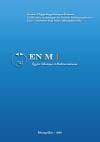
ENiM 1 - 2008 (ISSN 2102-6629)
Sommaire
Pages
1-6
 Cet article est lâoccasion de souligner quâune combinaison de vignettes du Livre des Morts peut Ă©clairer le contenu modifiĂ© dâune formule « canonique ». Ainsi, la substitution de wnn, « ĂȘtre, exister » par wn, « ouvrir », dans la formule 103 du LdM, relĂšve de la proximitĂ© thĂ©matique des formules 91/92 et 103, reliĂ©es de façon iconique dans le P. Louvre E 17400.
Cet article est lâoccasion de souligner quâune combinaison de vignettes du Livre des Morts peut Ă©clairer le contenu modifiĂ© dâune formule « canonique ». Ainsi, la substitution de wnn, « ĂȘtre, exister » par wn, « ouvrir », dans la formule 103 du LdM, relĂšve de la proximitĂ© thĂ©matique des formules 91/92 et 103, reliĂ©es de façon iconique dans le P. Louvre E 17400.
 This contribution is the reason for stressing that a combination of Book of the Dead vignettes can throw a light on the modified contents of a âcanonicalâ spell. Thus, the substitution of wnn, âbe, existâ by wn, âopenâ, in BD spell 103, belongs to the vicinity of the topics of spells 91/92 and 103, joined together in an iconic way in P. Louvre E 17400.
This contribution is the reason for stressing that a combination of Book of the Dead vignettes can throw a light on the modified contents of a âcanonicalâ spell. Thus, the substitution of wnn, âbe, existâ by wn, âopenâ, in BD spell 103, belongs to the vicinity of the topics of spells 91/92 and 103, joined together in an iconic way in P. Louvre E 17400.
Pages
7-14
 Une enquĂȘte menĂ©e sur les Enfants d'Horus (HĂąpy, Douamoutef, ImsĂ©ti et QĂ©behsĂ©nouf ) dans les Textes des Pyramides permet de mettre en relief leur vĂ©ritable identitĂ© thĂ©ologique, leurs fonctions essentielles, ainsi que les correspondants que les Ăgyptiens leur avaient attribuĂ©s dans le ciel nocturne, au sein des constellations que nous nommons Orion et la Grande Ourse.
Une enquĂȘte menĂ©e sur les Enfants d'Horus (HĂąpy, Douamoutef, ImsĂ©ti et QĂ©behsĂ©nouf ) dans les Textes des Pyramides permet de mettre en relief leur vĂ©ritable identitĂ© thĂ©ologique, leurs fonctions essentielles, ainsi que les correspondants que les Ăgyptiens leur avaient attribuĂ©s dans le ciel nocturne, au sein des constellations que nous nommons Orion et la Grande Ourse.
 A synthetic study of the Sons of Horus (HĂąpy, Duamutef, Imseti and Qebehsenuf) in the Pyramid Texts is proposed, showing their genuine theological nature, their main functions, and the celestial correspondants the Egyptian gave them in the night sky, inside the constellations we call Orion and Great Bear (Ursa Major).
A synthetic study of the Sons of Horus (HĂąpy, Duamutef, Imseti and Qebehsenuf) in the Pyramid Texts is proposed, showing their genuine theological nature, their main functions, and the celestial correspondants the Egyptian gave them in the night sky, inside the constellations we call Orion and Great Bear (Ursa Major).
Pages
15-28
 Les mentions du terme neheh sont analysĂ©es dans quelques textes du Moyen Empire. Ce terme y dĂ©signe le « temps », en tant que flux Ă©troitement liĂ© Ă lâĂ©ternitĂ© et lâimmuabilitĂ© djet, ainsi quâĂ la pratique de la MaĂąt.
Les mentions du terme neheh sont analysĂ©es dans quelques textes du Moyen Empire. Ce terme y dĂ©signe le « temps », en tant que flux Ă©troitement liĂ© Ă lâĂ©ternitĂ© et lâimmuabilitĂ© djet, ainsi quâĂ la pratique de la MaĂąt.
 The mentions of neheh are analyzed in some texts of the Middle Empire. This term appoints the « time », as stream strictly connected to the eternity and the stability djet, as well as to the practice of Maat.
The mentions of neheh are analyzed in some texts of the Middle Empire. This term appoints the « time », as stream strictly connected to the eternity and the stability djet, as well as to the practice of Maat.

ENiM 2 - 2009 (ISSN 2102-6629)
Sommaire
Pages
1-8
 Lâostracon DeM 1046 prĂ©sente une formule magique au texte surprenant. De fait, le mĂ©decin-magicien ne sâadresse pas seulement au venin mais Ă©galement aux conduits du corps du patient ; ce qui tĂ©moigne dâune attention aux effets secondaires possibles du traitement appliquĂ© au patient. Ce phĂ©nomĂšne semble se retrouver dans dâautres textes, comme en tĂ©moignent notamment les deux parallĂšles des P. Turin 1993 et P. Chester-Beatty XI.
Lâostracon DeM 1046 prĂ©sente une formule magique au texte surprenant. De fait, le mĂ©decin-magicien ne sâadresse pas seulement au venin mais Ă©galement aux conduits du corps du patient ; ce qui tĂ©moigne dâune attention aux effets secondaires possibles du traitement appliquĂ© au patient. Ce phĂ©nomĂšne semble se retrouver dans dâautres textes, comme en tĂ©moignent notamment les deux parallĂšles des P. Turin 1993 et P. Chester-Beatty XI.
 O. DeM 1046 presents two well known parallels: P. Turin 1993 and P. Chester-Beatty XI. From a synopsis presentation and the exhaustive study of this text, we can observe an interesting phenomenon: at the same time, the magician is asking the venom to go out of the patientâs body and the bodyâs vessels not to catch some disease due to the passage of venom. It looks like a representation of the concept of âside effectsâ.
O. DeM 1046 presents two well known parallels: P. Turin 1993 and P. Chester-Beatty XI. From a synopsis presentation and the exhaustive study of this text, we can observe an interesting phenomenon: at the same time, the magician is asking the venom to go out of the patientâs body and the bodyâs vessels not to catch some disease due to the passage of venom. It looks like a representation of the concept of âside effectsâ.
Pages
9-23
 Lâanalyse de quelques passages du Rituel de lâEmbaumement (P. Boulaq III) permet de reconstituer le cycle du ba dans un contexte spĂ©cifique de momification et de comprendre la logique des traditions sur lesquelles il se fonde, rĂ©sultant de lâobservation minutieuse de la nature.
Lâanalyse de quelques passages du Rituel de lâEmbaumement (P. Boulaq III) permet de reconstituer le cycle du ba dans un contexte spĂ©cifique de momification et de comprendre la logique des traditions sur lesquelles il se fonde, rĂ©sultant de lâobservation minutieuse de la nature.
 The analysis of some passages of the Embalming Ritual (P. Boulaq III) allows to reconstitute the cycle of the ba in a specific context of mummification and to understand the logic of the traditions on which it is based, resulting from the meticulous observation of the nature.
The analysis of some passages of the Embalming Ritual (P. Boulaq III) allows to reconstitute the cycle of the ba in a specific context of mummification and to understand the logic of the traditions on which it is based, resulting from the meticulous observation of the nature.
Pages
25-52
 Les notions de « couleurs » dans lâĂgypte ancienne doivent ĂȘtre apprĂ©hendĂ©es non pas isolĂ©ment mais selon une approche structurale, Ă lâintĂ©rieur de systĂšmes complĂ©mentaires ou antinomiques. Lâanalyse du vaste corpus des Textes des Pyramides permet ainsi de mettre en Ă©vidence la spĂ©cificitĂ© et les implications idĂ©ologiques du rouge (dĂ©cher), qui sâoppose aux trois autres couleurs « fondamentales » que constituent le noir (kem), le blanc (hedj) et le vert (ouadj).
Les notions de « couleurs » dans lâĂgypte ancienne doivent ĂȘtre apprĂ©hendĂ©es non pas isolĂ©ment mais selon une approche structurale, Ă lâintĂ©rieur de systĂšmes complĂ©mentaires ou antinomiques. Lâanalyse du vaste corpus des Textes des Pyramides permet ainsi de mettre en Ă©vidence la spĂ©cificitĂ© et les implications idĂ©ologiques du rouge (dĂ©cher), qui sâoppose aux trois autres couleurs « fondamentales » que constituent le noir (kem), le blanc (hedj) et le vert (ouadj).
 Concepts of âcolorsâ in the Egyptian language cannot be studied separately; they have to be delt with inside structural systems, either complementary or antinomic. Through the analysis of the large corpus of the Pyramid Texts, this paper tries to highlight the specificity and the ideological background of the red colour (decher), as opposed to three other âfundamentalâ colors: black (kem), white (hedj) and green (ouadj).
Concepts of âcolorsâ in the Egyptian language cannot be studied separately; they have to be delt with inside structural systems, either complementary or antinomic. Through the analysis of the large corpus of the Pyramid Texts, this paper tries to highlight the specificity and the ideological background of the red colour (decher), as opposed to three other âfundamentalâ colors: black (kem), white (hedj) and green (ouadj).
Pages
53-58
 Cette brÚve note lexicographique concerne le terme ghr.t, attesté par quelques
exemples provenant des temples gréco-romains de la région thébaine et par le P. Carlsberg I,
qui conduit à une traduction plus précise : « voûte céleste septentrionale ».
Cette brÚve note lexicographique concerne le terme ghr.t, attesté par quelques
exemples provenant des temples gréco-romains de la région thébaine et par le P. Carlsberg I,
qui conduit à une traduction plus précise : « voûte céleste septentrionale ».
 The subject of this short lexicographical note concerns the word ghr.t, attested in few
examples from the graeco-roman temples of the Theban area and in the P. Carlsberg I, which
leads to the most accurate translation âNortherly sky vaultâ.
The subject of this short lexicographical note concerns the word ghr.t, attested in few
examples from the graeco-roman temples of the Theban area and in the P. Carlsberg I, which
leads to the most accurate translation âNortherly sky vaultâ.
Pages
59-65
 Ă lâAbbaye de Grottaferrata (Italie) sont visibles des fragments de reliefs Ă©gyptisants et la partie infĂ©rieure dâune statue de SĂ©thi I. Celle-ci fut apportĂ©e Ă lâĂ©poque romaine et provient du temple de RĂȘ Ă HĂ©liopolis. La publication rĂ©cente dâun catalogue des sculptures de lâAbbaye a Ă©tĂ© lâoccasion de rĂ©flĂ©chir sur le lieu d'origine et sur la signification de cette statue dans le milieu romain. Lâexistence dâune villa trĂšs importante dans les environs du chĂąteau de Borghetto, oĂč la statue a Ă©tĂ© trouvĂ©e, permet de proposer l'hypothĂšse quâelle y Ă©tait placĂ©e. Il est possible dâattribuer cette villa Ă L. Funisulanus Vettonianus, important personnage du temps de Domitien, qui Ă©tait apparentĂ© Ă Funisulana Vettulla, femme de C. Tettius Africanus, prĂ©fet dâĂgypte sous Domitien.
Ă lâAbbaye de Grottaferrata (Italie) sont visibles des fragments de reliefs Ă©gyptisants et la partie infĂ©rieure dâune statue de SĂ©thi I. Celle-ci fut apportĂ©e Ă lâĂ©poque romaine et provient du temple de RĂȘ Ă HĂ©liopolis. La publication rĂ©cente dâun catalogue des sculptures de lâAbbaye a Ă©tĂ© lâoccasion de rĂ©flĂ©chir sur le lieu d'origine et sur la signification de cette statue dans le milieu romain. Lâexistence dâune villa trĂšs importante dans les environs du chĂąteau de Borghetto, oĂč la statue a Ă©tĂ© trouvĂ©e, permet de proposer l'hypothĂšse quâelle y Ă©tait placĂ©e. Il est possible dâattribuer cette villa Ă L. Funisulanus Vettonianus, important personnage du temps de Domitien, qui Ă©tait apparentĂ© Ă Funisulana Vettulla, femme de C. Tettius Africanus, prĂ©fet dâĂgypte sous Domitien.
 Three fragments of Egyptianizing reliefs and the bottom part of a statue of Sethi I are preserved in the Abbey of Grottaferrata (Italy). A catalog has recently been published highlighting new data about how the statue from Heliopolis ended up in a Roman context. In the neighbourhood of Borghetto Castle, where the statue was found, there was an important villa, probably belonging to L. Funisulanus Vettonianus, a relative of Funisulana Vettulla, the wife of C. Tettius Africanus, Prefect of Egypt.
Three fragments of Egyptianizing reliefs and the bottom part of a statue of Sethi I are preserved in the Abbey of Grottaferrata (Italy). A catalog has recently been published highlighting new data about how the statue from Heliopolis ended up in a Roman context. In the neighbourhood of Borghetto Castle, where the statue was found, there was an important villa, probably belonging to L. Funisulanus Vettonianus, a relative of Funisulana Vettulla, the wife of C. Tettius Africanus, Prefect of Egypt.
Pages
67-90
 ComplĂ©ment Ă lâinventaire des cultes dâAmon Ă Memphis datant du Nouvel Empire. Celui-ci comprend cinq formes supplĂ©mentaires, une liste des formes dâAmon «indĂ©terminĂ©es» et un supplĂ©ment aux formes dâAmon dĂ©jĂ connues.
Cette note est suivie d'une liste des monuments d'origine memphite victimes de martelages Ă lâĂ©poque amarnienne.
ComplĂ©ment Ă lâinventaire des cultes dâAmon Ă Memphis datant du Nouvel Empire. Celui-ci comprend cinq formes supplĂ©mentaires, une liste des formes dâAmon «indĂ©terminĂ©es» et un supplĂ©ment aux formes dâAmon dĂ©jĂ connues.
Cette note est suivie d'une liste des monuments d'origine memphite victimes de martelages Ă lâĂ©poque amarnienne.
 Complement to the inventory of worships of Amun in Memphis during the New Kingdom. This includes five additional forms, a list of âundeterminedâ Amun and a supplement to the Amun who are already known.
This note is follow by a list of the monuments of Memphis which are the victim of erasure during the Amarna period.
Complement to the inventory of worships of Amun in Memphis during the New Kingdom. This includes five additional forms, a list of âundeterminedâ Amun and a supplement to the Amun who are already known.
This note is follow by a list of the monuments of Memphis which are the victim of erasure during the Amarna period.
Pages
91-101
 Les historiens antiques et Ă leur suite, un grand nombre d'historiens modernes, ont sĂ©vĂšrement critiquĂ© le quatriĂšme souverain de l'Ăgypte hellĂ©nistique, PtolĂ©mĂ©e Philopator, et au delĂ de la figure historique, leur jugement s'est naturellement focalisĂ© sur le bilan de son rĂšgne. Cet Ă©tat de fait tient en grande partie Ă la tradition transmise par Polybe et reprise par ses successeurs. Cependant, une remise en question de cette vision trop nĂ©gative est perceptible depuis une quarantaine dÂŽannĂ©es grĂące Ă une relecture des sources et Ă une analyse nouvelle des faits (dont certains inconnus des historiens de la premiĂšre moitiĂ© du XXe siĂšcle). Cet article propose de faire un point sur cette question.
Les historiens antiques et Ă leur suite, un grand nombre d'historiens modernes, ont sĂ©vĂšrement critiquĂ© le quatriĂšme souverain de l'Ăgypte hellĂ©nistique, PtolĂ©mĂ©e Philopator, et au delĂ de la figure historique, leur jugement s'est naturellement focalisĂ© sur le bilan de son rĂšgne. Cet Ă©tat de fait tient en grande partie Ă la tradition transmise par Polybe et reprise par ses successeurs. Cependant, une remise en question de cette vision trop nĂ©gative est perceptible depuis une quarantaine dÂŽannĂ©es grĂące Ă une relecture des sources et Ă une analyse nouvelle des faits (dont certains inconnus des historiens de la premiĂšre moitiĂ© du XXe siĂšcle). Cet article propose de faire un point sur cette question.
 The ancient historians and at their turn, a large number of modern historians have severely criticized the forth sovereign of Hellenistic Egypt, Ptolemy IV Philopator and beyond the historic figure, they based their judgment on the facts of his reign. This situation is, in large part, the result of the tradition transmitted by Polybius and taken over by his successors. Nevertheless, this very negative perspective has been looked at differently during the last forty years due to reviewing the sources and reanalyzing the facts (some of which were unknown to the historians of the first half of the 20th century). This article aims to make a point in this matter.
The ancient historians and at their turn, a large number of modern historians have severely criticized the forth sovereign of Hellenistic Egypt, Ptolemy IV Philopator and beyond the historic figure, they based their judgment on the facts of his reign. This situation is, in large part, the result of the tradition transmitted by Polybius and taken over by his successors. Nevertheless, this very negative perspective has been looked at differently during the last forty years due to reviewing the sources and reanalyzing the facts (some of which were unknown to the historians of the first half of the 20th century). This article aims to make a point in this matter.
Pages
103-108
 Un nouvel examen de blocs de granite dĂ©couverts Ă Tell FarĂąoun/Nebesheh par Petrie permet de prĂ©ciser lâattribution du petit temple de lâancienne ville dâImet. Leur identification Ă deux montants de porte confirme la premiĂšre impression que pouvait laisser la configuration des lieux, Ă savoir que le petit temple dâImet ne serait pas la demeure de la dĂ©esse principale, Ouadjet dame dâImet, mais celle de Min. LâĂ©poque Ă laquelle remonte ce temple, parfaitement datĂ© par un dĂ©pĂŽt de fondation du roi Amasis (XXVIe dyn.), correspond Ă celle oĂč le dieu Min dâImet apparaĂźt dans la documentation.
Un nouvel examen de blocs de granite dĂ©couverts Ă Tell FarĂąoun/Nebesheh par Petrie permet de prĂ©ciser lâattribution du petit temple de lâancienne ville dâImet. Leur identification Ă deux montants de porte confirme la premiĂšre impression que pouvait laisser la configuration des lieux, Ă savoir que le petit temple dâImet ne serait pas la demeure de la dĂ©esse principale, Ouadjet dame dâImet, mais celle de Min. LâĂ©poque Ă laquelle remonte ce temple, parfaitement datĂ© par un dĂ©pĂŽt de fondation du roi Amasis (XXVIe dyn.), correspond Ă celle oĂč le dieu Min dâImet apparaĂźt dans la documentation.
 The reconsideration of granite fragments unearthed by Petrie at Tell Farʿun / Nebesheh allows us to clarify the attribution of the small temple of the ancient town of Imet. Their identification to two door-jambs confirms the first impression that could give the field, namely that the small temple is not the place of worship of Wadjet of Imet, the main deity, but the one of Min. The date of the construction of this temple, given by a foundation deposit of Amasis (26th dyn.), coincides with the date of the apparition of Min of Imet in the documentation.
The reconsideration of granite fragments unearthed by Petrie at Tell Farʿun / Nebesheh allows us to clarify the attribution of the small temple of the ancient town of Imet. Their identification to two door-jambs confirms the first impression that could give the field, namely that the small temple is not the place of worship of Wadjet of Imet, the main deity, but the one of Min. The date of the construction of this temple, given by a foundation deposit of Amasis (26th dyn.), coincides with the date of the apparition of Min of Imet in the documentation.
Pages
109-128
 Lâanalyse du cercueil de Pȝ-n(y)-jw (XXXe dyn. â dĂ©but de lâĂ©poque ptolĂ©maĂŻque ; MusĂ©e dâhistoire naturelle de Santiago du Chili â MNHN 11.160) permet de mettre en lumiĂšre lâemploi dâune boiserie en trompe-lâĆil originale et son rapport avec diffĂ©rents motifs religieux, notamment deux figures dâAnubis anthropomorphe adoptant la posture ksw.
Lâanalyse du cercueil de Pȝ-n(y)-jw (XXXe dyn. â dĂ©but de lâĂ©poque ptolĂ©maĂŻque ; MusĂ©e dâhistoire naturelle de Santiago du Chili â MNHN 11.160) permet de mettre en lumiĂšre lâemploi dâune boiserie en trompe-lâĆil originale et son rapport avec diffĂ©rents motifs religieux, notamment deux figures dâAnubis anthropomorphe adoptant la posture ksw.
 The analysis of the Pȝ-n(y)-jwâs coffin (Dynasty 30 â Ptolemaic Period; Museo Nacional de Historia Natural, Santiago of Chile â MNHN 11.160) allows to throw a light on the use of an original woodwork in trompe lâoeil and his relationship with various religious motives, specially two anthropomorphic Anubis in the ksw posture.
The analysis of the Pȝ-n(y)-jwâs coffin (Dynasty 30 â Ptolemaic Period; Museo Nacional de Historia Natural, Santiago of Chile â MNHN 11.160) allows to throw a light on the use of an original woodwork in trompe lâoeil and his relationship with various religious motives, specially two anthropomorphic Anubis in the ksw posture.
Pages
129-154
 La stĂšle Madrid 1999/99/4 est republiĂ©e, accompagnĂ©e dâun commentaire philologique et historique. Il sâagit en fait dâune stĂšle de donation, la plus ancienne actuellement connue et datant dâun roi de la fin de la XIIIe dynastie nommĂ© SĂ©hĂ©qa-en-RĂȘ SĂ©ankhi-Ptah.
Une bibliographie mise Ă jour de toutes les stĂšles de donation connues est donnĂ©e en appendice Ă lâarticle.
La stĂšle Madrid 1999/99/4 est republiĂ©e, accompagnĂ©e dâun commentaire philologique et historique. Il sâagit en fait dâune stĂšle de donation, la plus ancienne actuellement connue et datant dâun roi de la fin de la XIIIe dynastie nommĂ© SĂ©hĂ©qa-en-RĂȘ SĂ©ankhi-Ptah.
Une bibliographie mise Ă jour de toutes les stĂšles de donation connues est donnĂ©e en appendice Ă lâarticle.
 The stela Madrid 1999/99/4 is published anew with a philological and historical commentary. It appears to be the oldest donation stela known yet, dated to the first year of a king named Seheqa-en-Re Seankhi-Ptah, probably of the end of the XIIIth Dynasty. An updated bibliography of all known donation stelae is appended to the article.
The stela Madrid 1999/99/4 is published anew with a philological and historical commentary. It appears to be the oldest donation stela known yet, dated to the first year of a king named Seheqa-en-Re Seankhi-Ptah, probably of the end of the XIIIth Dynasty. An updated bibliography of all known donation stelae is appended to the article.
Pages
155-163
 Publication dâun petit bronze inĂ©dit (Ăgypte, Ă©poque ptolĂ©maĂŻque ?) montrant AmmĂŽn coiffĂ© de la couronne dâAmon et tenant un sceptre ouas. En appendice, la publication dâune tĂȘte en marbre dâAmmĂŽn (Ăgypte, IIe s. ap. J.-.C.).
Publication dâun petit bronze inĂ©dit (Ăgypte, Ă©poque ptolĂ©maĂŻque ?) montrant AmmĂŽn coiffĂ© de la couronne dâAmon et tenant un sceptre ouas. En appendice, la publication dâune tĂȘte en marbre dâAmmĂŽn (Ăgypte, IIe s. ap. J.-.C.).
 Publication of a small unpublished bronze (Egypt, Ptolemaic Period?) of AmmĂŽn wearing Amonâs crown and holding the was-scepter. In Appendix, the publication of a marble head of AmmĂŽn (Egypt, second century AD.).
Publication of a small unpublished bronze (Egypt, Ptolemaic Period?) of AmmĂŽn wearing Amonâs crown and holding the was-scepter. In Appendix, the publication of a marble head of AmmĂŽn (Egypt, second century AD.).

ENiM 3 - 2010 (ISSN 2102-6629)
Sommaire
Pages
1-21
 LâĂ©pithĂšte jwʿw nḥḥ, lâ « hĂ©ritier du temps », renvoie essentiellement Ă Osiris ou Ă la divinitĂ© solaire dans certains de ses aspects. Il sâagit dâune divinitĂ© qui se rĂ©gĂ©nĂšre pĂ©riodiquement en dĂ©butant rĂ©guliĂšrement un nouveau cycle temporel neheh annuel ou diurne.
LâĂ©pithĂšte jwʿw nḥḥ, lâ « hĂ©ritier du temps », renvoie essentiellement Ă Osiris ou Ă la divinitĂ© solaire dans certains de ses aspects. Il sâagit dâune divinitĂ© qui se rĂ©gĂ©nĂšre pĂ©riodiquement en dĂ©butant rĂ©guliĂšrement un nouveau cycle temporel neheh annuel ou diurne.
 The attribute jwʿw nḥḥ, the « Heir of time », refers essentially to Osiris or to the solar divinity under some of its aspects. It is a divinity who regenerates periodically herself beginning regularly a new temporal cycle neheh annual or diurnal.
The attribute jwʿw nḥḥ, the « Heir of time », refers essentially to Osiris or to the solar divinity under some of its aspects. It is a divinity who regenerates periodically herself beginning regularly a new temporal cycle neheh annual or diurnal.
Pages
23-42
 Publication dâune brique magique occidentale anonyme conservĂ©e au musĂ©e de Birmingham (1969 W 478). AprĂšs examen, il apparaĂźt que la brique nâĂ©tait pas anonyme dĂšs sa conception mais que le nom du bĂ©nĂ©ficiaire a Ă©tĂ© perdu. En dĂ©pit de la perte de la sĂ©quence nominative, lâĂ©tude typologique et textuelle de la brique permet de conclure que cet objet appartenait Ă un roi. La datation demeure incertaine.
Publication dâune brique magique occidentale anonyme conservĂ©e au musĂ©e de Birmingham (1969 W 478). AprĂšs examen, il apparaĂźt que la brique nâĂ©tait pas anonyme dĂšs sa conception mais que le nom du bĂ©nĂ©ficiaire a Ă©tĂ© perdu. En dĂ©pit de la perte de la sĂ©quence nominative, lâĂ©tude typologique et textuelle de la brique permet de conclure que cet objet appartenait Ă un roi. La datation demeure incertaine.
 Publication of an anonymous western magical brick kept in Birmingham Museum (1969 W 478). A close examination shows that the object was not originally anonymous and that the name of the owner was lost. Despite of the lack of the ownerâs identity, the typological study of the brick and of its text allows to state that this object belonged to a royal funerary equipment. The datation remains uncertain.
Publication of an anonymous western magical brick kept in Birmingham Museum (1969 W 478). A close examination shows that the object was not originally anonymous and that the name of the owner was lost. Despite of the lack of the ownerâs identity, the typological study of the brick and of its text allows to state that this object belonged to a royal funerary equipment. The datation remains uncertain.
Pages
43-51
 Quelques remarques concernant le fragment dâAthĂ©nĂ©e de Naucratis, Deipnosophistae XV, 677, en particulier la plante Chelidonium. Chelidonium corniculatum (L.) qui, en raison de la coloration sombre de ses feuilles, annonce la mort dâAntinoos.
Quelques remarques concernant le fragment dâAthĂ©nĂ©e de Naucratis, Deipnosophistae XV, 677, en particulier la plante Chelidonium. Chelidonium corniculatum (L.) qui, en raison de la coloration sombre de ses feuilles, annonce la mort dâAntinoos.
 Some reflections about Athenaeusâfragments in Deipnosophistae XV, 677, and specially the plant called Chelidonium. Chelidonium corniculatum (L.) fortells Antinoosâ death due to the fact that the leaves coloration is glaucous.
Some reflections about Athenaeusâfragments in Deipnosophistae XV, 677, and specially the plant called Chelidonium. Chelidonium corniculatum (L.) fortells Antinoosâ death due to the fact that the leaves coloration is glaucous.
Pages
53-66
 Deux formules magiques tirĂ©es dâun texte mĂ©dical du dĂ©but du Nouvel Empire mentionnent un dieu surnommĂ© par les Ăgyptiens « celui de lâĂ©tranger », apparemment liĂ© Ă une fĂ©dĂ©ration de tribus appartenant au groupe des Shosou. Ce dieu Ă©tait adorĂ© dans une contrĂ©e Ă©trangĂšre appelĂ©e OuĂąn, que lâon peut situer en Ădom. Dieu unique particuliĂšrement violent, il Ă©tait identifiĂ© dans la phrasĂ©ologie magique Ă©gyptienne au dieu BĂ©bon, forme sĂ©thienne du dieu Thot.
Deux formules magiques tirĂ©es dâun texte mĂ©dical du dĂ©but du Nouvel Empire mentionnent un dieu surnommĂ© par les Ăgyptiens « celui de lâĂ©tranger », apparemment liĂ© Ă une fĂ©dĂ©ration de tribus appartenant au groupe des Shosou. Ce dieu Ă©tait adorĂ© dans une contrĂ©e Ă©trangĂšre appelĂ©e OuĂąn, que lâon peut situer en Ădom. Dieu unique particuliĂšrement violent, il Ă©tait identifiĂ© dans la phrasĂ©ologie magique Ă©gyptienne au dieu BĂ©bon, forme sĂ©thienne du dieu Thot.
 Two magic formulas taken from a medical text dating from the beginning of the New Kingdom refer to a god whom the Egyptians called âHe from the foreign countriesâ apparently a divinity linked to a federation of tribes belonging to the Shosou group. This god was worshipped in a foreign land called OuĂąn, somewhere in the region of Edom. This god unique and particularly violent was identified in magic Egyptian phraseology as the god Bebon, the sethian form of the god Thot.
Two magic formulas taken from a medical text dating from the beginning of the New Kingdom refer to a god whom the Egyptians called âHe from the foreign countriesâ apparently a divinity linked to a federation of tribes belonging to the Shosou group. This god was worshipped in a foreign land called OuĂąn, somewhere in the region of Edom. This god unique and particularly violent was identified in magic Egyptian phraseology as the god Bebon, the sethian form of the god Thot.
Pages
67-75
 Analyse de deux orthographes non reconnues auparavant du nom Khepri. Le premier exemple est gĂ©nĂ©ralement Ă©crit « gorge et Ćil », la lecture repose pratiquement entiĂšrement sur le contexte. Le second est le trigramme bien connu « lotus-lion-bĂ©lier», qui pourrait designer Khepri comme le pendant logique dâAtoum, le dieu reprĂ©sentĂ© dans lâautre trigramme.
Analyse de deux orthographes non reconnues auparavant du nom Khepri. Le premier exemple est gĂ©nĂ©ralement Ă©crit « gorge et Ćil », la lecture repose pratiquement entiĂšrement sur le contexte. Le second est le trigramme bien connu « lotus-lion-bĂ©lier», qui pourrait designer Khepri comme le pendant logique dâAtoum, le dieu reprĂ©sentĂ© dans lâautre trigramme.
 Discussion of two previously unrecognized orthographies of the name Khepri. The first example is written generally as âthroat and eye,â and the reading is established almost entirely from context. The second is the well-known trigram âlotus-lion-ram,â which could designate Khepri as the logical pendant of Atum, the god represented in the other trigram.
Discussion of two previously unrecognized orthographies of the name Khepri. The first example is written generally as âthroat and eye,â and the reading is established almost entirely from context. The second is the well-known trigram âlotus-lion-ram,â which could designate Khepri as the logical pendant of Atum, the god represented in the other trigram.
Pages
77-107
 Lâinvention de la figure osirienne et de sa thĂ©ologie, probablement au dĂ©but de la Ve dynastie, fut un Ă©vĂ©nement considĂ©rable dans lâhistoire Ă©gyptienne, dont lâimpact dĂ©passa mĂȘme le cadre strict de lâĂtat pharaonique. On tente de montrer ici que les Textes des Pyramides, dans un grand nombre de formules, permettent de prĂ©ciser les modalitĂ©s institutionnelles et les motivations politiques de lâinstauration et de la diffusion de la doctrine osirienne.
Lâinvention de la figure osirienne et de sa thĂ©ologie, probablement au dĂ©but de la Ve dynastie, fut un Ă©vĂ©nement considĂ©rable dans lâhistoire Ă©gyptienne, dont lâimpact dĂ©passa mĂȘme le cadre strict de lâĂtat pharaonique. On tente de montrer ici que les Textes des Pyramides, dans un grand nombre de formules, permettent de prĂ©ciser les modalitĂ©s institutionnelles et les motivations politiques de lâinstauration et de la diffusion de la doctrine osirienne.
 The invention of the Osirian figure and his theology, probably at the beginning of the 5th Dynasty, has been a considerable event in Egyptian history, whose impact exceeded largely Pharaonic State borders. The aim of this paper is to show to what extent, through a large number of Spells, the Pyramid Texts make it possible to specify the institutional ways and the political motivations of the introduction and the diffusion of the Osirian dogma.
The invention of the Osirian figure and his theology, probably at the beginning of the 5th Dynasty, has been a considerable event in Egyptian history, whose impact exceeded largely Pharaonic State borders. The aim of this paper is to show to what extent, through a large number of Spells, the Pyramid Texts make it possible to specify the institutional ways and the political motivations of the introduction and the diffusion of the Osirian dogma.
Pages
109-136
 Les vases Ă figuration de BĂšs sont, Ă ce jour, notablement attestĂ©s dans les contextes stratigraphiques de Tell el-Herr (situĂ© dans la partie septentrionale de la pĂ©ninsule sinaĂŻtique), quâils soient de nature domestique, militaire ou cultuelle. Leur pĂ©rennitĂ© sur plusieurs dĂ©cennies dâoccupation du site permet dorĂ©navant une classification fine des vaisselles spĂ©cifiques de la pĂ©riode qui nous intĂ©resse ici : la pĂ©riode qui sâĂ©chelonne du milieu du Ve siĂšcle au premier quart du IVe siĂšcle av. n.Ăš. Parmi les formes identifiĂ©es, certaines dâentre elles se dĂ©marquent, outre par leur dĂ©cor, par leur profil atypique. Cette contribution met en avant quatre vases dont la raretĂ© des tĂ©moignages tant en Ăgypte que dans les territoires limitrophes, tout comme le degrĂ© de raffinement avec lequel ces vases furent confectionnĂ©s, incitent Ă supposer que leur genĂšse participe peut-ĂȘtre dâun rĂ©pertoire autre que celui de la cĂ©ramique. Certaines caractĂ©ristiques autorisent des connexions avec le rĂ©pertoire de la vaisselle dâapparat en mĂ©tal, en pierre, ou en terre cuite.
Les vases Ă figuration de BĂšs sont, Ă ce jour, notablement attestĂ©s dans les contextes stratigraphiques de Tell el-Herr (situĂ© dans la partie septentrionale de la pĂ©ninsule sinaĂŻtique), quâils soient de nature domestique, militaire ou cultuelle. Leur pĂ©rennitĂ© sur plusieurs dĂ©cennies dâoccupation du site permet dorĂ©navant une classification fine des vaisselles spĂ©cifiques de la pĂ©riode qui nous intĂ©resse ici : la pĂ©riode qui sâĂ©chelonne du milieu du Ve siĂšcle au premier quart du IVe siĂšcle av. n.Ăš. Parmi les formes identifiĂ©es, certaines dâentre elles se dĂ©marquent, outre par leur dĂ©cor, par leur profil atypique. Cette contribution met en avant quatre vases dont la raretĂ© des tĂ©moignages tant en Ăgypte que dans les territoires limitrophes, tout comme le degrĂ© de raffinement avec lequel ces vases furent confectionnĂ©s, incitent Ă supposer que leur genĂšse participe peut-ĂȘtre dâun rĂ©pertoire autre que celui de la cĂ©ramique. Certaines caractĂ©ristiques autorisent des connexions avec le rĂ©pertoire de la vaisselle dâapparat en mĂ©tal, en pierre, ou en terre cuite.
 The Bes figure vases have been, to this day, significantly attested in the stratigraphic contexts of Tell el-Herr (located in the northern part of the Sinaitic peninsula), whether of domestic, military or cultural nature. Their durability over several decades of occupancy of the site hence enables fine-tuned classification of the crockery specific to the period of interest here: the period ranging from the middle of the Vth century to the first quarter of the IVth century BC. Among the new shapes identified, some of them, in addition to their decoration, standing out by their atypical profile. This contribution highlights four vases whose the rarity of the testimonies in Egypt as well as in the boundary territories, just like the degree of refinement with which these vases were manufactured, lead to assume that their genesis may point to another repertoire as that of ceramic. Some characteristics suggest connections with the repertoire of metal, stone or earthen ceremonial crockery.
The Bes figure vases have been, to this day, significantly attested in the stratigraphic contexts of Tell el-Herr (located in the northern part of the Sinaitic peninsula), whether of domestic, military or cultural nature. Their durability over several decades of occupancy of the site hence enables fine-tuned classification of the crockery specific to the period of interest here: the period ranging from the middle of the Vth century to the first quarter of the IVth century BC. Among the new shapes identified, some of them, in addition to their decoration, standing out by their atypical profile. This contribution highlights four vases whose the rarity of the testimonies in Egypt as well as in the boundary territories, just like the degree of refinement with which these vases were manufactured, lead to assume that their genesis may point to another repertoire as that of ceramic. Some characteristics suggest connections with the repertoire of metal, stone or earthen ceremonial crockery.
Pages
137-165
 Description de la partie centrale de la NĂ©cropole des vaches sacrĂ©es HĂ©sat dâAtfih, ancienne capitale de la 22e province de Haute-Ăgypte, lâune des Aphroditopolis de lâĂ©poque grecque. La MEFA a dĂ©gagĂ© la zone anciennement fouillĂ©e par Ahmed Moussa pour le compte du CSA, composĂ©e de deux sarcophages de vaches, datĂ©s de la fin de lâĂ©poque dynastique ou du dĂ©but de la pĂ©riode ptolĂ©maĂŻque. Les structures abritant les sarcophages utilisent des bocs provenant dâun Ă©difice plus ancien, appartenant probablement Ă Osorkon lâAncien (XXIe dynastie).
Description de la partie centrale de la NĂ©cropole des vaches sacrĂ©es HĂ©sat dâAtfih, ancienne capitale de la 22e province de Haute-Ăgypte, lâune des Aphroditopolis de lâĂ©poque grecque. La MEFA a dĂ©gagĂ© la zone anciennement fouillĂ©e par Ahmed Moussa pour le compte du CSA, composĂ©e de deux sarcophages de vaches, datĂ©s de la fin de lâĂ©poque dynastique ou du dĂ©but de la pĂ©riode ptolĂ©maĂŻque. Les structures abritant les sarcophages utilisent des bocs provenant dâun Ă©difice plus ancien, appartenant probablement Ă Osorkon lâAncien (XXIe dynastie).
 Description of the central part of the necropolis of the sacred cows Hesat at Atfih, the ancient capital of the 22nd province of Upper Egypt, one of the Aphroditopolis of the Greek period. The MEFA has cleared the area previously excavated by Ahmed Moussa for the SCA, composed of two sarcophagi of cows, dating from the late-dynastic or early Ptolemaic period. The structures in which are incorporated the sarcophagi have been built with reused blocks from an older building, probably belonging to Osorkon the Elder (XXI Dynasty).
Description of the central part of the necropolis of the sacred cows Hesat at Atfih, the ancient capital of the 22nd province of Upper Egypt, one of the Aphroditopolis of the Greek period. The MEFA has cleared the area previously excavated by Ahmed Moussa for the SCA, composed of two sarcophagi of cows, dating from the late-dynastic or early Ptolemaic period. The structures in which are incorporated the sarcophagi have been built with reused blocks from an older building, probably belonging to Osorkon the Elder (XXI Dynasty).
Pages
167-176
 Ă la suite des brillants travaux de S. Sauneron et J. Yoyotte sur lâicherou, cet article revient sur certains aspects. Des textes du temple dâHathor Ă Dendera mettent en lumiĂšre le rĂŽle rituel de « faire un icherou », dans le cadre de lâapaisement de la DĂ©esse Lointaine et du retour de la crue. Un Ă©missaire de Sekhmet, appelĂ© le « Faiseur-dâicherou », pourrait remplir la mĂȘme fonction : apaiser la dĂ©esse et lui offrir un lieu propice Ă la naissance de sa progĂ©niture. Lâorigine naturelle de lâicherou est liĂ©e Ă la crue, comme le rapportent les rĂ©cits mythologiques sur le creusement du lac de Mout Ă Karnak. Le lac fait rĂ©fĂ©rence aux mares dâeau apparaissant Ă la lisiĂšre du dĂ©sert, avant le gonflement du fleuve. Ce phĂ©nomĂšne correspond Ă la fonction mythologique de lâicherou dans lâapaisement et le retour de la DĂ©esse Lointaine, avant lâarrivĂ©e de la crue.
Ă la suite des brillants travaux de S. Sauneron et J. Yoyotte sur lâicherou, cet article revient sur certains aspects. Des textes du temple dâHathor Ă Dendera mettent en lumiĂšre le rĂŽle rituel de « faire un icherou », dans le cadre de lâapaisement de la DĂ©esse Lointaine et du retour de la crue. Un Ă©missaire de Sekhmet, appelĂ© le « Faiseur-dâicherou », pourrait remplir la mĂȘme fonction : apaiser la dĂ©esse et lui offrir un lieu propice Ă la naissance de sa progĂ©niture. Lâorigine naturelle de lâicherou est liĂ©e Ă la crue, comme le rapportent les rĂ©cits mythologiques sur le creusement du lac de Mout Ă Karnak. Le lac fait rĂ©fĂ©rence aux mares dâeau apparaissant Ă la lisiĂšre du dĂ©sert, avant le gonflement du fleuve. Ce phĂ©nomĂšne correspond Ă la fonction mythologique de lâicherou dans lâapaisement et le retour de la DĂ©esse Lointaine, avant lâarrivĂ©e de la crue.
 Following the seminal work of S. Sauneron and J. Yoyotte about the isheru, this article focuses on some aspects. Some texts from the Hathorâs temple of Dendera describe the ritual function of âmaking an isheruâ, within the pacifying of the Far-Away Goddess and the return of the flood. One of the demons of Sekhmet, called the âMaker-of-isheruâ, could play the same role in both pacifying the goddess and giving her a favourable place to give birth to her offspring. The natural origin of isheru is linked to the flood, as it is reported in the mythological texts about the digging of the Moutâs lake at Karnak. The lake refers to ponds appearing in the edge of the desert, before the river starts to swell. This phenomenon corresponds to the mythological role of isheru in the pacifying and the return of the Far-Away Goddess, before the arrival of the flood.
Following the seminal work of S. Sauneron and J. Yoyotte about the isheru, this article focuses on some aspects. Some texts from the Hathorâs temple of Dendera describe the ritual function of âmaking an isheruâ, within the pacifying of the Far-Away Goddess and the return of the flood. One of the demons of Sekhmet, called the âMaker-of-isheruâ, could play the same role in both pacifying the goddess and giving her a favourable place to give birth to her offspring. The natural origin of isheru is linked to the flood, as it is reported in the mythological texts about the digging of the Moutâs lake at Karnak. The lake refers to ponds appearing in the edge of the desert, before the river starts to swell. This phenomenon corresponds to the mythological role of isheru in the pacifying and the return of the Far-Away Goddess, before the arrival of the flood.
Pages
177-187
 La stĂšle Turin N 50049, dĂ©diĂ©e Ă Amenhotep Ier divinisĂ©, comporte, outre un petit hymne qui lui est adressĂ©, un dicton dont la traduction prĂ©sente de nombreuses difficultĂ©s. Lâensemble du texte est examinĂ© en dĂ©tail, traduit et commentĂ©, afin de replacer le dicton dans son contexte.
La stĂšle Turin N 50049, dĂ©diĂ©e Ă Amenhotep Ier divinisĂ©, comporte, outre un petit hymne qui lui est adressĂ©, un dicton dont la traduction prĂ©sente de nombreuses difficultĂ©s. Lâensemble du texte est examinĂ© en dĂ©tail, traduit et commentĂ©, afin de replacer le dicton dans son contexte.
 Stela N 50049 of the Turin Museum, dedicated to Amenophis I deified contains, besides a little hymn addressed to him, a saying whose translation presents many difficulties. The whole text is examined in detail, translated and commented, in order to set it back in context.
Stela N 50049 of the Turin Museum, dedicated to Amenophis I deified contains, besides a little hymn addressed to him, a saying whose translation presents many difficulties. The whole text is examined in detail, translated and commented, in order to set it back in context.
Pages
189-192
 Une Ă©tiquette en ivoire reliĂ©e Ă une jarre provenant de la tombe du roi Scorpion, Ă Abydos, et datant de Nagada III, est le support dâune gravure reprĂ©sentant un animal Ă©nigmatique. Cet animal a dĂ©jĂ Ă©tĂ© dĂ©signĂ© comme Ă©tant un oryctĂ©rope, Orycteropus afer, car il possĂšde indubitablement des caractĂšres anatomiques appartenant Ă cette espĂšce. Toutefois, il prĂ©sente Ă©galement des caractĂšres anatomiques de fennec, Fennecus zerda. Cette derniĂšre possibilitĂ© dâinterprĂ©tation en ferait alors la seule reprĂ©sentation connue Ă ce jour de fennec en Ăgypte pour les Ă©poques prĂ©dynastique et pharaonique.
Une Ă©tiquette en ivoire reliĂ©e Ă une jarre provenant de la tombe du roi Scorpion, Ă Abydos, et datant de Nagada III, est le support dâune gravure reprĂ©sentant un animal Ă©nigmatique. Cet animal a dĂ©jĂ Ă©tĂ© dĂ©signĂ© comme Ă©tant un oryctĂ©rope, Orycteropus afer, car il possĂšde indubitablement des caractĂšres anatomiques appartenant Ă cette espĂšce. Toutefois, il prĂ©sente Ă©galement des caractĂšres anatomiques de fennec, Fennecus zerda. Cette derniĂšre possibilitĂ© dâinterprĂ©tation en ferait alors la seule reprĂ©sentation connue Ă ce jour de fennec en Ăgypte pour les Ă©poques prĂ©dynastique et pharaonique.
 An ivory label of a pottery coming from the king Scorpionâ tomb, to Abydos, and dating from Naqada III, carry a carving of an enigmatic animal. This animal was already point out like a Aardvak, Orycteropus afer, because it have beyond any doubt anatomical characteristics of this specie. However, it present equally anatomical characteristics of Fennec, Fennecus zerda. This last possibility of interpretation do of it the only representation of the Fennec known until now in Egypt during Predynastic and Pharaonic epochs.
An ivory label of a pottery coming from the king Scorpionâ tomb, to Abydos, and dating from Naqada III, carry a carving of an enigmatic animal. This animal was already point out like a Aardvak, Orycteropus afer, because it have beyond any doubt anatomical characteristics of this specie. However, it present equally anatomical characteristics of Fennec, Fennecus zerda. This last possibility of interpretation do of it the only representation of the Fennec known until now in Egypt during Predynastic and Pharaonic epochs.
Pages
193-213
 Ătude de la stĂšle de PahĂ©rypedjet conservĂ©e au MusĂ©e du Caire et de quelques titres qui y sont mentionnĂ©s.
Ătude de la stĂšle de PahĂ©rypedjet conservĂ©e au MusĂ©e du Caire et de quelques titres qui y sont mentionnĂ©s.
 Study of the stele of Pahérypedjet of the Museum of Cairo and of some titles which are mentioned in the stele.
Study of the stele of Pahérypedjet of the Museum of Cairo and of some titles which are mentioned in the stele.

ENiM 4 - 2011 (ISSN 2102-6629)
Sommaire
Pages
1-37
 Le conte des Deux FrĂšres a toujours posĂ© problĂšme Ă ses commentateurs. On sait, depuis la publication du P. Jumilhac par J. Vandier, quâil faut le mettre en relation avec les XVIIe et XVIIIe nomes de Haute-Ăgypte. Une analyse tenant compte plus systĂ©matiquement des dieux, des rites et des interdits mentionnĂ©s dans le P. Jumilhac permet de mieux cerner sa signification.
Le conte des Deux FrĂšres a toujours posĂ© problĂšme Ă ses commentateurs. On sait, depuis la publication du P. Jumilhac par J. Vandier, quâil faut le mettre en relation avec les XVIIe et XVIIIe nomes de Haute-Ăgypte. Une analyse tenant compte plus systĂ©matiquement des dieux, des rites et des interdits mentionnĂ©s dans le P. Jumilhac permet de mieux cerner sa signification.
 The tale of Two Brothers always raised problem to his commentators. We know, since the publication of P. Jumilhac by J. Vandier, that it is necessary to put it in connection with the XVIIth and XVIIIth nomes of Upper Egypt. An analysis taking into account more systematically gods, rites and prohibitions mentioned in P. Jumilhac allows to understand better its meaning.
The tale of Two Brothers always raised problem to his commentators. We know, since the publication of P. Jumilhac by J. Vandier, that it is necessary to put it in connection with the XVIIth and XVIIIth nomes of Upper Egypt. An analysis taking into account more systematically gods, rites and prohibitions mentioned in P. Jumilhac allows to understand better its meaning.
Pages
39-49
 Cet article a pour but de donner une interprétation nouvelle des tablettes Rogers et Mac
Cullum, sur la base dâune analyse proprement juridique. Il offre par consĂ©quent un point de
vue différent sur le rÎle des chaouabtis/ouchebtis dans les croyances funéraires.
Cet article a pour but de donner une interprétation nouvelle des tablettes Rogers et Mac
Cullum, sur la base dâune analyse proprement juridique. Il offre par consĂ©quent un point de
vue différent sur le rÎle des chaouabtis/ouchebtis dans les croyances funéraires.
 This paper aims to give a new interpretation of the Rogers and McCullum tablets on the basis
of a Specifically legal analysis. Consequently it offers a different point of view of the role of
shabtis/ushabtis in funerary beliefs.
This paper aims to give a new interpretation of the Rogers and McCullum tablets on the basis
of a Specifically legal analysis. Consequently it offers a different point of view of the role of
shabtis/ushabtis in funerary beliefs.
Pages
51-79
 Cet article traite des structures spĂ©cifiques relatives aux croyances se rapportant au crocodile du Nil (Crocodylus niloticus Laurenti 1768), une espĂšce commune Ă tout le bassin versant du Nil et qui incarne le chĂątiment divin. AprĂšs avoir dressĂ© un arriĂšre-plan hiĂ©roglyphique, lexical, anthropologique et religieux relatif au crocodile, lâauteur souligne, Ă travers une sĂ©lection de sources hiĂ©roglyphiques, grecques et latines, lâexistence de plusieurs paradoxes. Le saurien est considĂ©rĂ© de deux façons antagonistes : 1°) comme un animal qui cause soit une mort divinisante, soit une mort dĂ©nonçant la culpabilitĂ© de la victime ; 2°) comme un animal qui incarne des forces divines nĂ©gatives et dont lâĂ©radication est nĂ©cessaire, car il est Ă lâorigine de multiples accidents. Des comparaisons avec lâunivers des reprĂ©sentations malgaches et dogons au sujet de ce saurien suggĂšrent lâexistence de structures parallĂšles de condamnations par le destin personnifiĂ©es par Crocodylus niloticus.
Cet article traite des structures spĂ©cifiques relatives aux croyances se rapportant au crocodile du Nil (Crocodylus niloticus Laurenti 1768), une espĂšce commune Ă tout le bassin versant du Nil et qui incarne le chĂątiment divin. AprĂšs avoir dressĂ© un arriĂšre-plan hiĂ©roglyphique, lexical, anthropologique et religieux relatif au crocodile, lâauteur souligne, Ă travers une sĂ©lection de sources hiĂ©roglyphiques, grecques et latines, lâexistence de plusieurs paradoxes. Le saurien est considĂ©rĂ© de deux façons antagonistes : 1°) comme un animal qui cause soit une mort divinisante, soit une mort dĂ©nonçant la culpabilitĂ© de la victime ; 2°) comme un animal qui incarne des forces divines nĂ©gatives et dont lâĂ©radication est nĂ©cessaire, car il est Ă lâorigine de multiples accidents. Des comparaisons avec lâunivers des reprĂ©sentations malgaches et dogons au sujet de ce saurien suggĂšrent lâexistence de structures parallĂšles de condamnations par le destin personnifiĂ©es par Crocodylus niloticus.
 This paper addresses the specific structures relating to beliefs connected with the Nile crocodile (Crocodylus niloticus Laurenti 1768), a common species in the catchment basin of the Nile and which embodies divine punishment. After outlining a hieroglyphical, lexicological, anthropological and religious background relating to the crocodile, the author emphasizes, by means of a selection of hieroglyphic, Greek and Latin sources, the existence of several paradoxes. The saurian is considered according to two opposing ways : 1) as an animal which causes either a deifying death or a death expressing the guilt of the victim ; 2) as an animal embodying negative deities whose eradication is necessary since many accidents are caused by the saurian. Comparisons with the Madagascan and Dogon behaviours concerning this saurian suggest the existence of parallel death sentence structures based on fate and personified by Crocodylus niloticus.
This paper addresses the specific structures relating to beliefs connected with the Nile crocodile (Crocodylus niloticus Laurenti 1768), a common species in the catchment basin of the Nile and which embodies divine punishment. After outlining a hieroglyphical, lexicological, anthropological and religious background relating to the crocodile, the author emphasizes, by means of a selection of hieroglyphic, Greek and Latin sources, the existence of several paradoxes. The saurian is considered according to two opposing ways : 1) as an animal which causes either a deifying death or a death expressing the guilt of the victim ; 2) as an animal embodying negative deities whose eradication is necessary since many accidents are caused by the saurian. Comparisons with the Madagascan and Dogon behaviours concerning this saurian suggest the existence of parallel death sentence structures based on fate and personified by Crocodylus niloticus.
Pages
81-90
 Cet article est consacrĂ© au remploi dâun jambage de porte en calcaire dur au nom de SĂ©sostris Ier ayant servi de support pour graver la deuxiĂšme stĂšle de Kamosis dĂ©couverte en 1954 Ă Karnak. Un rĂ©examen de la stĂšle au MusĂ©e de Louqsor et une plaque de verre des archives du Cfeetk (CSA/USR 3172 du Cnrs) datĂ©e de 1956 qui montre la stĂšle dans un meilleur Ă©tat de conservation ont permis de lever une partie des difficultĂ©s de lecture signalĂ©es et de proposer une nouvelle identification des divinitĂ©s reprĂ©sentĂ©es sur le jambage. Le dieu Amon et une dĂ©esse (que les restes du nom invitent Ă identifier Ă Mout ou Nekhbet) allaitant SĂ©sostris Ier sont reprĂ©sentĂ©s sur le premier registre et la dĂ©esse Bastet confĂ©rant la vie au roi est prĂ©sente sur le deuxiĂšme registre. Un examen des diffĂ©rents Ă©lĂ©ments Ă mĂȘme de prĂ©ciser la localisation dâorigine de ce jambage et les Ă©vĂ©nements ayant conduit Ă son remploi par Kamosis viennent conclure cette Ă©tude.
Cet article est consacrĂ© au remploi dâun jambage de porte en calcaire dur au nom de SĂ©sostris Ier ayant servi de support pour graver la deuxiĂšme stĂšle de Kamosis dĂ©couverte en 1954 Ă Karnak. Un rĂ©examen de la stĂšle au MusĂ©e de Louqsor et une plaque de verre des archives du Cfeetk (CSA/USR 3172 du Cnrs) datĂ©e de 1956 qui montre la stĂšle dans un meilleur Ă©tat de conservation ont permis de lever une partie des difficultĂ©s de lecture signalĂ©es et de proposer une nouvelle identification des divinitĂ©s reprĂ©sentĂ©es sur le jambage. Le dieu Amon et une dĂ©esse (que les restes du nom invitent Ă identifier Ă Mout ou Nekhbet) allaitant SĂ©sostris Ier sont reprĂ©sentĂ©s sur le premier registre et la dĂ©esse Bastet confĂ©rant la vie au roi est prĂ©sente sur le deuxiĂšme registre. Un examen des diffĂ©rents Ă©lĂ©ments Ă mĂȘme de prĂ©ciser la localisation dâorigine de ce jambage et les Ă©vĂ©nements ayant conduit Ă son remploi par Kamosis viennent conclure cette Ă©tude.
 This article focuses on a hard limestone door jamb in the name of Senusret I reused for the second stela of Kamose uncovered in 1954 at Karnak. A new examination of the stela in the Luxor Museum and a glass photographs in the archives of CFEETK (SCA/USR 3172 Cnrs) dating from 1956 which shows the stela in a better state of preservation have eliminated some of the reported difficulties and allows us to propose a new identification of the deities represented on the door jamb. The god Amun and a goddess (who can be identify to Mut or Nekhbet) suckling Senusret I are represented on the first register and the goddess Bastet giving life to the king on the second register. A review of the elements able to specify the original location of the door jamb and the sequence of events that led to its reuse by Kamose concludes this study.
This article focuses on a hard limestone door jamb in the name of Senusret I reused for the second stela of Kamose uncovered in 1954 at Karnak. A new examination of the stela in the Luxor Museum and a glass photographs in the archives of CFEETK (SCA/USR 3172 Cnrs) dating from 1956 which shows the stela in a better state of preservation have eliminated some of the reported difficulties and allows us to propose a new identification of the deities represented on the door jamb. The god Amun and a goddess (who can be identify to Mut or Nekhbet) suckling Senusret I are represented on the first register and the goddess Bastet giving life to the king on the second register. A review of the elements able to specify the original location of the door jamb and the sequence of events that led to its reuse by Kamose concludes this study.
Pages
91-102
 Depuis plus de 7000 ans, le baudrier croisĂ© est un Ă©lĂ©ment distinctif de la culture libyco-berbĂšre. Symbole de suprĂ©matie sociale et guerriĂšre, il est encore aujourdâhui fiĂšrement arborĂ© par les Touaregs. Alors, confrontĂ© Ă un baudrier similaire portĂ© par Pharaon et ses sujets, la question se pose de savoir sâil sâagit du mĂȘme vĂȘtement et, le cas Ă©chĂ©ant, quelle est sa raison dâĂȘtre en Ăgypte ancienne ?
Depuis plus de 7000 ans, le baudrier croisĂ© est un Ă©lĂ©ment distinctif de la culture libyco-berbĂšre. Symbole de suprĂ©matie sociale et guerriĂšre, il est encore aujourdâhui fiĂšrement arborĂ© par les Touaregs. Alors, confrontĂ© Ă un baudrier similaire portĂ© par Pharaon et ses sujets, la question se pose de savoir sâil sâagit du mĂȘme vĂȘtement et, le cas Ă©chĂ©ant, quelle est sa raison dâĂȘtre en Ăgypte ancienne ?
 Since more seven thousand years, crossed baldric is a distinctive element of the libyco-berbere culture. Symbol of social and warlike pre-eminence, it is yet proudly worn by the Touaregs. So, confronted to a similar baldric worn by Pharaoh and his subjects, the question is asked to know if we talk about the same garment and if necessary, which the reason of its use in Ancient Egypt is?
Since more seven thousand years, crossed baldric is a distinctive element of the libyco-berbere culture. Symbol of social and warlike pre-eminence, it is yet proudly worn by the Touaregs. So, confronted to a similar baldric worn by Pharaoh and his subjects, the question is asked to know if we talk about the same garment and if necessary, which the reason of its use in Ancient Egypt is?
Pages
103-106
 Ătude dâune table dâoffrandes en calcaire, exposĂ©e au MusĂ©e de lâagriculture Ă©gyptienne ancienne Ă Dokki, enregistrĂ©e sous le no 1354. Elle provient probablement de Deir el-MĂ©dineh et appartient au serviteur de la place de vĂ©ritĂ© Houy qui a vĂ©cu pendant la pĂ©riode Ramesside.
Ătude dâune table dâoffrandes en calcaire, exposĂ©e au MusĂ©e de lâagriculture Ă©gyptienne ancienne Ă Dokki, enregistrĂ©e sous le no 1354. Elle provient probablement de Deir el-MĂ©dineh et appartient au serviteur de la place de vĂ©ritĂ© Houy qui a vĂ©cu pendant la pĂ©riode Ramesside.
 Study of a limestone offering-table, exposed in the Museum of old Egyptian agriculture in Dokki, recorded under No 1354. It comes probably from Deir el-MĂ©dineh and belongs to the servant of the place of truth Houy which lived during the Ramesside period.
Study of a limestone offering-table, exposed in the Museum of old Egyptian agriculture in Dokki, recorded under No 1354. It comes probably from Deir el-MĂ©dineh and belongs to the servant of the place of truth Houy which lived during the Ramesside period.
Pages
107-136
 Le Naos des DĂ©cades, dĂ©diĂ© au dieu Chou, est un monument unique par sa collection de textes originaux et par la dĂ©coration extĂ©rieure de ses parois, consacrant une case a chacune des dĂ©cades de lâannĂ©e Ă©gyptienne. Chaque case montre cinq vignettes accompagnant un petit commentaire qui a Ă©tĂ© qualifiĂ© dâ« astrologique », et qui diffĂšre Ă chaque dĂ©cade. Ces notices font intervenir un « grand dieu », dont lâaction vise Ă dĂ©truire les populations ennemies, elles semblent de nature plus mythologique quâastrologique, et leur ensemble pourrait constituer lâun de ces « Livres de Chou » que le dieu confie Ă Sekhmet, faisant le dĂ©compte de ceux que la dĂ©esse et sa troupe de dĂ©cans doivent Ă©liminer. La place du monument dans lâastrologie Ă©gyptienne est discutĂ©e : alors que le commentaire concerne des populations entiĂšres, les vignettes et leurs lĂ©gendes intĂ©ressent le destin individuel et semblent relier le rĂ©sultat du jugement divin et donc lâavenir du ka Ă la position des astres dans le ciel. Ă cet Ă©gard, le monument pourrait reflĂ©ter, ou ĂȘtre le prĂ©curseur des systĂšmes astrologiques prĂ©disant le devenir dâaprĂšs la position variable des planĂštes, du soleil et des dĂ©cans selon les heures.
Le Naos des DĂ©cades, dĂ©diĂ© au dieu Chou, est un monument unique par sa collection de textes originaux et par la dĂ©coration extĂ©rieure de ses parois, consacrant une case a chacune des dĂ©cades de lâannĂ©e Ă©gyptienne. Chaque case montre cinq vignettes accompagnant un petit commentaire qui a Ă©tĂ© qualifiĂ© dâ« astrologique », et qui diffĂšre Ă chaque dĂ©cade. Ces notices font intervenir un « grand dieu », dont lâaction vise Ă dĂ©truire les populations ennemies, elles semblent de nature plus mythologique quâastrologique, et leur ensemble pourrait constituer lâun de ces « Livres de Chou » que le dieu confie Ă Sekhmet, faisant le dĂ©compte de ceux que la dĂ©esse et sa troupe de dĂ©cans doivent Ă©liminer. La place du monument dans lâastrologie Ă©gyptienne est discutĂ©e : alors que le commentaire concerne des populations entiĂšres, les vignettes et leurs lĂ©gendes intĂ©ressent le destin individuel et semblent relier le rĂ©sultat du jugement divin et donc lâavenir du ka Ă la position des astres dans le ciel. Ă cet Ă©gard, le monument pourrait reflĂ©ter, ou ĂȘtre le prĂ©curseur des systĂšmes astrologiques prĂ©disant le devenir dâaprĂšs la position variable des planĂštes, du soleil et des dĂ©cans selon les heures.
 The Naos of the Decades is dedicated to the god Shu. It is a monument unique as to its collection of original texts and the decoration of its outside walls which contains a frame for each of the decades of the Egyptian year. Each of these frames displays five vignettes which accompany a short comment which was qualified as âastrologicalâ, and is different for each decade. These notes call a âgreat godâ for action to destroy enemy populations, and they seem more of a mythological than an astrological nature. The collection of these texts could constitute one of the âBooks of Shuâ which that god entrusted to Sekhmet, establishing a list of those that the goddess and her troop of decans is to eliminate. The position of the monument in Egyptian astrology is arguable: while the comment concerns entire populations, the vignettes and their legends deal with individual destiny and seem to link result of divine judgement and thus the future of the ka to the position of the stars in the sky. In this context, the monument could reflect or precede the astrological systems that foretell the future from the changing position of the planets, the sun and the decans according to the hours.
The Naos of the Decades is dedicated to the god Shu. It is a monument unique as to its collection of original texts and the decoration of its outside walls which contains a frame for each of the decades of the Egyptian year. Each of these frames displays five vignettes which accompany a short comment which was qualified as âastrologicalâ, and is different for each decade. These notes call a âgreat godâ for action to destroy enemy populations, and they seem more of a mythological than an astrological nature. The collection of these texts could constitute one of the âBooks of Shuâ which that god entrusted to Sekhmet, establishing a list of those that the goddess and her troop of decans is to eliminate. The position of the monument in Egyptian astrology is arguable: while the comment concerns entire populations, the vignettes and their legends deal with individual destiny and seem to link result of divine judgement and thus the future of the ka to the position of the stars in the sky. In this context, the monument could reflect or precede the astrological systems that foretell the future from the changing position of the planets, the sun and the decans according to the hours.
Pages
137-158
 Le dieu Seth, comme lâillustrent bien les Textes des Pyramides, est une figure polysĂ©mique. Cette spĂ©cificitĂ© tient essentiellement Ă ce quâau Seth « ancien », le dieu de Noubet (Ombos, Nagada), protagoniste avec lâHorus de NĂ©khen (HiĂ©raconpolis) du mythe fondateur de la constitution de lâĂtat pharaonique, sâest superposĂ© un nouveau Seth hĂ©liopolitain, lâagresseur dâOsiris. Les thĂ©ologiens-thĂ©oriciens du pouvoir ont dĂ©libĂ©rĂ©ment jouĂ© sur cette homonymie afin de stigmatiser toute forme de contestation politique.
Le dieu Seth, comme lâillustrent bien les Textes des Pyramides, est une figure polysĂ©mique. Cette spĂ©cificitĂ© tient essentiellement Ă ce quâau Seth « ancien », le dieu de Noubet (Ombos, Nagada), protagoniste avec lâHorus de NĂ©khen (HiĂ©raconpolis) du mythe fondateur de la constitution de lâĂtat pharaonique, sâest superposĂ© un nouveau Seth hĂ©liopolitain, lâagresseur dâOsiris. Les thĂ©ologiens-thĂ©oriciens du pouvoir ont dĂ©libĂ©rĂ©ment jouĂ© sur cette homonymie afin de stigmatiser toute forme de contestation politique.
 As it seems to be clear from the Pyramid Texts, the god Seth is a fundamentally polysemic character. This comes from the fact that a ânewâ Seth, the murderer of Osiris according to the Heliopolitan theology, has been superposed to the older Seth, the god of Nubet (Ombos, Nagada), the protagonist of the historiographic myth together with Horus of Nekhen (Hieraconpolis). This article try to show how this double character of Seth has been intentionally used against whoever would contest the pharaonic power.
As it seems to be clear from the Pyramid Texts, the god Seth is a fundamentally polysemic character. This comes from the fact that a ânewâ Seth, the murderer of Osiris according to the Heliopolitan theology, has been superposed to the older Seth, the god of Nubet (Ombos, Nagada), the protagonist of the historiographic myth together with Horus of Nekhen (Hieraconpolis). This article try to show how this double character of Seth has been intentionally used against whoever would contest the pharaonic power.
Pages
159-196
« Maltais, trophĂš, ktĂšsios... Remarques autour des figurines de chien en terre cuite dâĂgypte »
 Le prĂ©sent article se propose dâidentifier la valeur emblĂ©matique des terres cuites de chiens maltais fabriquĂ©s en Ăgypte. Une origine iconographique propre au monde grĂ©co-romain a Ă©tĂ© confirmĂ©e (dĂšs le VIe-Ve siĂšcle av. J.-C.). Ensuite, il sâest agit de se demander comment ces objets de consommation courante ont pu ĂȘtre « lisibles » dans lâĂgypte grecque et romaine. La docilitĂ© et la trophĂš infantile initialement Ă©voquĂ©es par le chien maltais sont rĂ©investies dans le jeu des rapports sociaux prĂ©sidĂ©s par la notion de « parentalisation ». Ă cela sâajoute la valeur dâapprovisionnement alimentaire au cĆur des mĂ©canismes communautaires. Le rĂ©investissement est tel, que sous lâEmpire, le chien maltais plus souvent individualisĂ© quâassociĂ© Ă lâenfant-dieu Karpocrate / Harpocrate, passe de qualificatif (statut de la prime enfance) Ă entitĂ© pleinement autonome. En ce sens, la terre cuite de chien maltais pourra intĂ©grer les foyers (ktĂ©sios), les greniers Ă blĂ© (anatropheus), les fortins (trophĂš militaire)âŠ
Le prĂ©sent article se propose dâidentifier la valeur emblĂ©matique des terres cuites de chiens maltais fabriquĂ©s en Ăgypte. Une origine iconographique propre au monde grĂ©co-romain a Ă©tĂ© confirmĂ©e (dĂšs le VIe-Ve siĂšcle av. J.-C.). Ensuite, il sâest agit de se demander comment ces objets de consommation courante ont pu ĂȘtre « lisibles » dans lâĂgypte grecque et romaine. La docilitĂ© et la trophĂš infantile initialement Ă©voquĂ©es par le chien maltais sont rĂ©investies dans le jeu des rapports sociaux prĂ©sidĂ©s par la notion de « parentalisation ». Ă cela sâajoute la valeur dâapprovisionnement alimentaire au cĆur des mĂ©canismes communautaires. Le rĂ©investissement est tel, que sous lâEmpire, le chien maltais plus souvent individualisĂ© quâassociĂ© Ă lâenfant-dieu Karpocrate / Harpocrate, passe de qualificatif (statut de la prime enfance) Ă entitĂ© pleinement autonome. En ce sens, la terre cuite de chien maltais pourra intĂ©grer les foyers (ktĂ©sios), les greniers Ă blĂ© (anatropheus), les fortins (trophĂš militaire)âŠ
 The purpose of this article is identifying the symbolic value of the Maltese dogs terracottas made in Egypt. An iconographic origin was confirmed for the Greco-Roman world (from VIth-Vth cent. B.C.). Then, it is of wondering how these objects of regular consumption were able to be âreadableâ in Greek and Roman Egypt. The docility and the infantile trophe initially evoked by the Maltese dog are reinvested in the social relationships, chaired by the notion of âparentalisationâ. In it is added the value of food supply, a main part of the community mechanisms. Under the Empire, the Maltese dog, more often individualized than associated with the child-god Karpocrates / Harpocrates, became a complete autonomous entity rather the qualifier it was initially (status of the infancy). This way, the terracotta of Maltese dog can join homes (ktesios), granaries (anatropheus), forts (military trophe)âŠ
The purpose of this article is identifying the symbolic value of the Maltese dogs terracottas made in Egypt. An iconographic origin was confirmed for the Greco-Roman world (from VIth-Vth cent. B.C.). Then, it is of wondering how these objects of regular consumption were able to be âreadableâ in Greek and Roman Egypt. The docility and the infantile trophe initially evoked by the Maltese dog are reinvested in the social relationships, chaired by the notion of âparentalisationâ. In it is added the value of food supply, a main part of the community mechanisms. Under the Empire, the Maltese dog, more often individualized than associated with the child-god Karpocrates / Harpocrates, became a complete autonomous entity rather the qualifier it was initially (status of the infancy). This way, the terracotta of Maltese dog can join homes (ktesios), granaries (anatropheus), forts (military trophe)âŠ
Pages
197-232
 Le deuxiĂšme Ă©pisode du conte des Deux FrĂšres a lieu en PhĂ©nicie. Cette rĂ©gion est prĂ©sentĂ©e comme une sorte de monde funĂ©raire dans lequel Bata meurt et retourne Ă la vie. La structure est la mĂȘme que pour le premier Ă©pisode.
Le deuxiĂšme Ă©pisode du conte des Deux FrĂšres a lieu en PhĂ©nicie. Cette rĂ©gion est prĂ©sentĂ©e comme une sorte de monde funĂ©raire dans lequel Bata meurt et retourne Ă la vie. La structure est la mĂȘme que pour le premier Ă©pisode.
 The second episode of the Tale of Two Brothers takes place in Phoenicia. This region is presented as a sort of funerary world in which Bata dies and returns to the life. The structure is the same than in the first episode.
The second episode of the Tale of Two Brothers takes place in Phoenicia. This region is presented as a sort of funerary world in which Bata dies and returns to the life. The structure is the same than in the first episode.
Pages
233-272
 Le cercueil de Jt-nfr-Jmn, connu grĂące aux publications de J.-Fr. A. Perrot, est conservĂ© au MusĂ©e dâAquitaine Ă Bordeaux (Mesuret-8590). Sa dĂ©coration est semblable au cercueil de Tayouheret et, secondairement, Ă celui de Masaharta, dĂ©couverts tous les deux dans la premiĂšre cachette de Deir el-Bahari. Lâorganisation horizontale du dĂ©cor intĂ©rieur et les frises sur les bords extĂ©rieur et intĂ©rieur de la cuve rappellent les cercueils de SoutymĂšs, SĂ©ramon et Masaharta. Ces dĂ©tails apparaissent spĂ©cifiquement sur les cercueils du dĂ©but de la XXIe dynastie dont le cercueil de Jt-nfr-Jmn est un remarquable exemplaire. Une inhumation vers 1070-1060 av. J.-C. est proposĂ©e.
Le cercueil de Jt-nfr-Jmn, connu grĂące aux publications de J.-Fr. A. Perrot, est conservĂ© au MusĂ©e dâAquitaine Ă Bordeaux (Mesuret-8590). Sa dĂ©coration est semblable au cercueil de Tayouheret et, secondairement, Ă celui de Masaharta, dĂ©couverts tous les deux dans la premiĂšre cachette de Deir el-Bahari. Lâorganisation horizontale du dĂ©cor intĂ©rieur et les frises sur les bords extĂ©rieur et intĂ©rieur de la cuve rappellent les cercueils de SoutymĂšs, SĂ©ramon et Masaharta. Ces dĂ©tails apparaissent spĂ©cifiquement sur les cercueils du dĂ©but de la XXIe dynastie dont le cercueil de Jt-nfr-Jmn est un remarquable exemplaire. Une inhumation vers 1070-1060 av. J.-C. est proposĂ©e.
 The Jt-nfr-Jmnâs coffin, known from the J.-Fr. A. Perrotâs publications, is conserved at The Aquitaine Museum in Bordeaux (Mesuret-8590). Its decoration is similar to the Taywheretâs coffin and secondarily to the Masahartaâs one, found both in the first cache of Deir el Bahri. The horizontal organization of interior decor and the friezes on the outside and inside edges of the case recall the coffins of Sutymes, Seramon and Masaharta. These details appear specifically on the coffins of the early 21st dynasty of which the Jt-nfr-Jmnâs coffin is a remarkable specimen. A burial about 1070-1060 BC is proposed.
The Jt-nfr-Jmnâs coffin, known from the J.-Fr. A. Perrotâs publications, is conserved at The Aquitaine Museum in Bordeaux (Mesuret-8590). Its decoration is similar to the Taywheretâs coffin and secondarily to the Masahartaâs one, found both in the first cache of Deir el Bahri. The horizontal organization of interior decor and the friezes on the outside and inside edges of the case recall the coffins of Sutymes, Seramon and Masaharta. These details appear specifically on the coffins of the early 21st dynasty of which the Jt-nfr-Jmnâs coffin is a remarkable specimen. A burial about 1070-1060 BC is proposed.
Pages
273-290
 Rappel historique, analyse et essai d'identification des diverses fouilles entreprises à Atfih au début du XXe siÚcle. Quelques informations relatives à l'histoire et l'organisation du site sont mises en exergue.
Rappel historique, analyse et essai d'identification des diverses fouilles entreprises à Atfih au début du XXe siÚcle. Quelques informations relatives à l'histoire et l'organisation du site sont mises en exergue.
 Historical reminder, analysis and attempt of identification of the various excavations undertaken to Atfih at the beginning of the XXth century. A few informations relating to the history and the organization of the site are highlighted.
Historical reminder, analysis and attempt of identification of the various excavations undertaken to Atfih at the beginning of the XXth century. A few informations relating to the history and the organization of the site are highlighted.

ENiM 5 - 2012 (ISSN 2102-6629)
Sommaire
Pages
1-6
 Publication dâune statuette fragmentaire dâAmenmes, fils de Paouia (fin de la XIXe dynastie et dĂ©but de la XXe), conservĂ©e Ă lâOriental Museum, UniversitĂ© de Durham. Cet objet complĂšte le dossier de ce personnage dĂ©jĂ bien connu.
Publication dâune statuette fragmentaire dâAmenmes, fils de Paouia (fin de la XIXe dynastie et dĂ©but de la XXe), conservĂ©e Ă lâOriental Museum, UniversitĂ© de Durham. Cet objet complĂšte le dossier de ce personnage dĂ©jĂ bien connu.
 Publication of a fragmentary statuette of Amenmes, son of Ouia (end of the XIXth dynasty and beginning of the XXth), kept in the Oriental Museum, University of Durham. Amenmes is already known by the other documents.
Publication of a fragmentary statuette of Amenmes, son of Ouia (end of the XIXth dynasty and beginning of the XXth), kept in the Oriental Museum, University of Durham. Amenmes is already known by the other documents.
Pages
7-18
 Au IIIe siĂšcle avant JĂ©sus-Christ, plusieurs citĂ©s de GrĂšce dĂ©cidĂšrent dâadopter le nom dâune souveraine Ă©gyptienne dâorigine macĂ©donienne. Deux souveraines furent concernĂ©es : ArsinoĂ© II Philadelphe et ArsinoĂ© III Philopator. Lâacte de changer de nom â la mĂ©tonomasie â nâĂ©tait pas un acte anodin pour ces citĂ©s ancestrales ; les facteurs qui y prĂ©ludĂšrent et les consĂ©quences qui en rĂ©sultĂšrent sont Ă©tudiĂ©s dans cet article.
Au IIIe siĂšcle avant JĂ©sus-Christ, plusieurs citĂ©s de GrĂšce dĂ©cidĂšrent dâadopter le nom dâune souveraine Ă©gyptienne dâorigine macĂ©donienne. Deux souveraines furent concernĂ©es : ArsinoĂ© II Philadelphe et ArsinoĂ© III Philopator. Lâacte de changer de nom â la mĂ©tonomasie â nâĂ©tait pas un acte anodin pour ces citĂ©s ancestrales ; les facteurs qui y prĂ©ludĂšrent et les consĂ©quences qui en rĂ©sultĂšrent sont Ă©tudiĂ©s dans cet article.
 Several cities of Greece decided to renew their denominations with the name of a macedonian queen in the third century BC. Two rulers were concerned: Arsinoe II Philadelphos and Arsinoe III Philopator. The act of changing its name was not insignificant for these ancestral
cities. This article deals with the reasons and the consequences of this phenomenon.
Several cities of Greece decided to renew their denominations with the name of a macedonian queen in the third century BC. Two rulers were concerned: Arsinoe II Philadelphos and Arsinoe III Philopator. The act of changing its name was not insignificant for these ancestral
cities. This article deals with the reasons and the consequences of this phenomenon.
Pages
19-30
 Le but de lâarticle est Ă la fois de prĂ©senter une synthĂšse gĂ©nĂ©rale du contenu du papyrus du Brooklyn Museum n° 35.1446 et de prĂ©ciser le statut des quelque 95 personnes qui figurent sur la liste du verso. Il sâavĂšre que celles-ci sont toutes dâorigine syro-palestinienne et que leur venue en Ăgypte sâinscrit dans le cadre dâune politique dâimmigration soutenue par les rois des XIIe-XIIIe dynasties.
Le but de lâarticle est Ă la fois de prĂ©senter une synthĂšse gĂ©nĂ©rale du contenu du papyrus du Brooklyn Museum n° 35.1446 et de prĂ©ciser le statut des quelque 95 personnes qui figurent sur la liste du verso. Il sâavĂšre que celles-ci sont toutes dâorigine syro-palestinienne et que leur venue en Ăgypte sâinscrit dans le cadre dâune politique dâimmigration soutenue par les rois des XIIe-XIIIe dynasties.
 The aim of this paper is to present a general summary of the contents of P. Brooklyn Museum n° 35.1446 and to clarify the status of some ninety-five people who appear in the list on the verso. It turns out that all of them are Asiatics and that their entry into Egypt was part of an immigrapion policy upheld by the Kings of the XIIth-XIIIth Dynasties.
The aim of this paper is to present a general summary of the contents of P. Brooklyn Museum n° 35.1446 and to clarify the status of some ninety-five people who appear in the list on the verso. It turns out that all of them are Asiatics and that their entry into Egypt was part of an immigrapion policy upheld by the Kings of the XIIth-XIIIth Dynasties.
Pages
31-37
 Analyse dâune Ă©pithĂšte obscure provenant du temple dâEsna. Deux nouvelles attestations permettent la traduction suivante : « la voĂ»te cĂ©leste nâest quâune partie de lui / dâelle » (gb.t ?y ?.t jm=f / jm=s). Des expressions semblables se rapportant aux membres divins sont Ă©galement analysĂ©e.
Analyse dâune Ă©pithĂšte obscure provenant du temple dâEsna. Deux nouvelles attestations permettent la traduction suivante : « la voĂ»te cĂ©leste nâest quâune partie de lui / dâelle » (gb.t ?y ?.t jm=f / jm=s). Des expressions semblables se rapportant aux membres divins sont Ă©galement analysĂ©e.
 Analysis of an obscure epithet found at Esna temple. Two newly published attestations establish the following translation: âthe celestial firmament is but a part of him / her (gb.t ?y ?.t jm=f / jm=s).â Similar expressions involving divine limbs are discussed.
Analysis of an obscure epithet found at Esna temple. Two newly published attestations establish the following translation: âthe celestial firmament is but a part of him / her (gb.t ?y ?.t jm=f / jm=s).â Similar expressions involving divine limbs are discussed.
Pages
39-60
 Les temples grĂ©co-romains de ThĂ©baĂŻde, dâEdfou et de Dendara, font occasionnellement Ă©tat de graphies Khaset-DP / Khaset-TP pour Ă©voquer la Haute et la Basse-Ăgypte.
LâĂ©tude des sources montre que lâon a affaire Ă un toponyme unique, se rĂ©fĂ©rant, dans les deux cas, Ă Dep de Bouto (Tep en dĂ©motique) ; appliquĂ© au Sud, il procĂšde dâune transposition de gĂ©ographie sacrĂ©e du Nord sur le Sud, explicitement Ă©tablie par le contexte gĂ©nĂ©ral des documents.
Excursus : présentation synoptique de listes géographiques énumérant des déesses Hathor.
Les temples grĂ©co-romains de ThĂ©baĂŻde, dâEdfou et de Dendara, font occasionnellement Ă©tat de graphies Khaset-DP / Khaset-TP pour Ă©voquer la Haute et la Basse-Ăgypte.
LâĂ©tude des sources montre que lâon a affaire Ă un toponyme unique, se rĂ©fĂ©rant, dans les deux cas, Ă Dep de Bouto (Tep en dĂ©motique) ; appliquĂ© au Sud, il procĂšde dâune transposition de gĂ©ographie sacrĂ©e du Nord sur le Sud, explicitement Ă©tablie par le contexte gĂ©nĂ©ral des documents.
Excursus : présentation synoptique de listes géographiques énumérant des déesses Hathor.
 The Greek-roman temples of the region of Thebes, Edfu and Dendara occasionally attest some written forms Khaset-DP / Khaset-TP, evoking Upper and Lower-Egypt.
The study of the sources shows that we deal with a unique toponym, referring in both cases to Dep of Buto (Tep in demotic) ; concerning the South, it proceeds from a transposition of a sacred geography from North to South, which is clearly demonstrated by the general context of the documents.
Excursus: synopsis of geographical lists showing Hathor goddesses.
The Greek-roman temples of the region of Thebes, Edfu and Dendara occasionally attest some written forms Khaset-DP / Khaset-TP, evoking Upper and Lower-Egypt.
The study of the sources shows that we deal with a unique toponym, referring in both cases to Dep of Buto (Tep in demotic) ; concerning the South, it proceeds from a transposition of a sacred geography from North to South, which is clearly demonstrated by the general context of the documents.
Excursus: synopsis of geographical lists showing Hathor goddesses.
Pages
61-71
 Publication de deux Ă©lĂ©ments dâune porte de grenier au nom du roi SĂ©nakht-en-RĂȘ AhmĂšs rĂ©cemment dĂ©couverts prĂšs du temple de Ptah Ă Karnak. Les Ă©lĂ©ments mis au jour permettent de prĂ©ciser lâidentitĂ© de ce roi de la XVIIe dynastie dont seul le nom de couronnement Ă©tait connu par des listes royales posthumes et de lever dĂ©finitivement les incertitudes concernant son nom de naissance : AhmĂšs.
Les dĂ©signations SĂ©nakht-en-RĂȘ TaĂą Ier et SĂ©nakht-en-RĂȘ Siamon doivent donc aujourdâhui ĂȘtre abandonnĂ©es. La proposition dâidentification de la tombe de ce roi dans le rapport de la commission dâenquĂȘte ramesside du Papyrus Abbott doit Ă©galement ĂȘtre Ă©cartĂ©e. Il nây a quâun seul roi dont le nom de naissance est TaĂą : SĂ©qen-en-RĂȘ. Le nom de fils de RĂȘ de SĂ©nakhat-en-RĂȘ conduit Ă rattacher ce roi Ă la famille royale ahmoside de la fin de la XVIIe dynastie et du dĂ©but de la XVIIIe dynastie dont il est Ă ce jour le plus ancien reprĂ©sentant connu. Enfin, les documents qui ne portent que le nom de fils de RĂȘ « AhmĂšs » peuvent dĂ©sormais ĂȘtre attribuĂ©s soit Ă SĂ©nakht-en-RĂȘ AhmĂšs, soit Ă Neb-Pehety-RĂȘ Ahmosis.
Publication de deux Ă©lĂ©ments dâune porte de grenier au nom du roi SĂ©nakht-en-RĂȘ AhmĂšs rĂ©cemment dĂ©couverts prĂšs du temple de Ptah Ă Karnak. Les Ă©lĂ©ments mis au jour permettent de prĂ©ciser lâidentitĂ© de ce roi de la XVIIe dynastie dont seul le nom de couronnement Ă©tait connu par des listes royales posthumes et de lever dĂ©finitivement les incertitudes concernant son nom de naissance : AhmĂšs.
Les dĂ©signations SĂ©nakht-en-RĂȘ TaĂą Ier et SĂ©nakht-en-RĂȘ Siamon doivent donc aujourdâhui ĂȘtre abandonnĂ©es. La proposition dâidentification de la tombe de ce roi dans le rapport de la commission dâenquĂȘte ramesside du Papyrus Abbott doit Ă©galement ĂȘtre Ă©cartĂ©e. Il nây a quâun seul roi dont le nom de naissance est TaĂą : SĂ©qen-en-RĂȘ. Le nom de fils de RĂȘ de SĂ©nakhat-en-RĂȘ conduit Ă rattacher ce roi Ă la famille royale ahmoside de la fin de la XVIIe dynastie et du dĂ©but de la XVIIIe dynastie dont il est Ă ce jour le plus ancien reprĂ©sentant connu. Enfin, les documents qui ne portent que le nom de fils de RĂȘ « AhmĂšs » peuvent dĂ©sormais ĂȘtre attribuĂ©s soit Ă SĂ©nakht-en-RĂȘ AhmĂšs, soit Ă Neb-Pehety-RĂȘ Ahmosis.
 Publication of two elements of a granary door bearing the name of king Senakhtenre Ahmose recently discovered near the temple of Ptah at Karnak. The inscriptions allow this king of the seventeenth dynasty, previously only known through the coronation name in later king-lists, to be identified more precisely. They also finally resolve uncertainties about his birth name: Ahmose.
The designations of Senakhtenre Tao I or Senakhtenre Siamun for this king must be abandoned. Suggestions for identifying the kingâs tomb in the Ramesside report of investigations in the Theban necropolis recorded in Papyrus Abbott must also be rejected. Only one king bears the birth name Tao: Seqenenre. That Ahmose is the son of Re name of Senakhtenre leads to the conclusion that this king must be a member of the Ahmoside royal family of the late seventeenth and early eighteenth dynasties, of which he is to date the oldest known representative. Finally, documents that bear only the son of Re name âAhmoseâ can now be attributed to either Senakhtenre Ahmose or Nebpehtyre Ahmose.
Publication of two elements of a granary door bearing the name of king Senakhtenre Ahmose recently discovered near the temple of Ptah at Karnak. The inscriptions allow this king of the seventeenth dynasty, previously only known through the coronation name in later king-lists, to be identified more precisely. They also finally resolve uncertainties about his birth name: Ahmose.
The designations of Senakhtenre Tao I or Senakhtenre Siamun for this king must be abandoned. Suggestions for identifying the kingâs tomb in the Ramesside report of investigations in the Theban necropolis recorded in Papyrus Abbott must also be rejected. Only one king bears the birth name Tao: Seqenenre. That Ahmose is the son of Re name of Senakhtenre leads to the conclusion that this king must be a member of the Ahmoside royal family of the late seventeenth and early eighteenth dynasties, of which he is to date the oldest known representative. Finally, documents that bear only the son of Re name âAhmoseâ can now be attributed to either Senakhtenre Ahmose or Nebpehtyre Ahmose.
Pages
73-102
 Depuis les temps anciens jusquâaux pĂ©riodes tardives, les Anciens Ăgyptiens, pour dĂ©crire le ciel, distinguaient le « ciel du sud » et le « ciel du nord », aussi bien dans les textes que dans lâiconographie. Les reprĂ©sentations de la voĂ»te cĂ©leste qui apparaissent sur des plafonds ou des couvercles de sarcophages permettent dâidentifier les astres principaux du ciel dit « mĂ©ridional » comme Ă©tant ceux qui se dĂ©placent sur lâĂ©cliptique avec, essentiellement, les Ă©toiles-dĂ©cans qui balisent le parcours quotidien et annuel du soleil. Le ciel « septentrional », quant Ă lui, est le domaine des constellations borĂ©ales, visibles toute lâannĂ©e et, pour cette raison, dĂ©nommĂ©es par les Ăgyptiens « Celles qui ne connaissent pas la destruction ». Lâopposition « spatiale » sâaccompagne dâune opposition « mythologique » : les constellations du ciel du nord sont liĂ©es Ă lâidĂ©e dâimmortalitĂ© car on ne les voyait jamais disparaĂźtre dans la Douat. Ă lâinverse, les ensembles stellaires situĂ©s plus au sud, dont les prototypes sont Sirius et Orion, qui sont absents du ciel un certain temps au cours de lâannĂ©e, sont comparĂ©s aux vivants : ils « vivent » lorsquâils brillent au firmament, et « meurent » lors de leur invisibilitĂ©, qui est ressentie comme un sĂ©jour dans la Douat. Ces observations expliquent de nombreuses allusions retrouvĂ©es dans les Textes de Pyramides.
Depuis les temps anciens jusquâaux pĂ©riodes tardives, les Anciens Ăgyptiens, pour dĂ©crire le ciel, distinguaient le « ciel du sud » et le « ciel du nord », aussi bien dans les textes que dans lâiconographie. Les reprĂ©sentations de la voĂ»te cĂ©leste qui apparaissent sur des plafonds ou des couvercles de sarcophages permettent dâidentifier les astres principaux du ciel dit « mĂ©ridional » comme Ă©tant ceux qui se dĂ©placent sur lâĂ©cliptique avec, essentiellement, les Ă©toiles-dĂ©cans qui balisent le parcours quotidien et annuel du soleil. Le ciel « septentrional », quant Ă lui, est le domaine des constellations borĂ©ales, visibles toute lâannĂ©e et, pour cette raison, dĂ©nommĂ©es par les Ăgyptiens « Celles qui ne connaissent pas la destruction ». Lâopposition « spatiale » sâaccompagne dâune opposition « mythologique » : les constellations du ciel du nord sont liĂ©es Ă lâidĂ©e dâimmortalitĂ© car on ne les voyait jamais disparaĂźtre dans la Douat. Ă lâinverse, les ensembles stellaires situĂ©s plus au sud, dont les prototypes sont Sirius et Orion, qui sont absents du ciel un certain temps au cours de lâannĂ©e, sont comparĂ©s aux vivants : ils « vivent » lorsquâils brillent au firmament, et « meurent » lors de leur invisibilitĂ©, qui est ressentie comme un sĂ©jour dans la Douat. Ces observations expliquent de nombreuses allusions retrouvĂ©es dans les Textes de Pyramides.
 From very early times down to the late periods, the Ancient Egyptians describing the firmament distinguished the âsouthern skyâ and the ânorthern skyâ in their texts as well as in their iconography. Representations of the sky that appear on ceilings or coffin lids permit to identify the main stars in the sky called âsouthernâ as those that move along the ecliptic comprising, in essence, the decanal stars that mark the daily and annual course of the sun. The northern sky, on the other hand, is the domain of the boreal constellations that are visible throughout the year, which is why the Egyptians called them âThose who do not know destructionâ.The âspatialâ opposition is accompanied by a âmythologicalâ one: the constellations of the northern sky are tied to the notion of immortality because they can never be seen to vanish into the Duat. Inversely, the constellations situated further to the south, with Sirius and Orion as prototypes, which are absent from the sky during a certain lapse of time in the year, are compared to the living: they âliveâ while they sparkle in the night firmament and âdieâ during their invisibility, which is perceived as a passage in the Duat. These observations explain a great variety of mythological allusions issuing from the Pyramid Texts.
From very early times down to the late periods, the Ancient Egyptians describing the firmament distinguished the âsouthern skyâ and the ânorthern skyâ in their texts as well as in their iconography. Representations of the sky that appear on ceilings or coffin lids permit to identify the main stars in the sky called âsouthernâ as those that move along the ecliptic comprising, in essence, the decanal stars that mark the daily and annual course of the sun. The northern sky, on the other hand, is the domain of the boreal constellations that are visible throughout the year, which is why the Egyptians called them âThose who do not know destructionâ.The âspatialâ opposition is accompanied by a âmythologicalâ one: the constellations of the northern sky are tied to the notion of immortality because they can never be seen to vanish into the Duat. Inversely, the constellations situated further to the south, with Sirius and Orion as prototypes, which are absent from the sky during a certain lapse of time in the year, are compared to the living: they âliveâ while they sparkle in the night firmament and âdieâ during their invisibility, which is perceived as a passage in the Duat. These observations explain a great variety of mythological allusions issuing from the Pyramid Texts.
Pages
103-113
 Analyse lexicographique du terme tȝḥw.t dans lâexpression kȝ.t tȝḥw.t mentionnĂ©e dans le conte des deux frĂšres.
Analyse lexicographique du terme tȝḥw.t dans lâexpression kȝ.t tȝḥw.t mentionnĂ©e dans le conte des deux frĂšres.
 Lexicographical analysis of the word tȝḥw.t in the expression kȝ.t tȝḥw.t mentioned in the Tale of Two Brothers.
Lexicographical analysis of the word tȝḥw.t in the expression kȝ.t tȝḥw.t mentioned in the Tale of Two Brothers.
Pages
115-117
 LâencyclopĂ©die byzantine de Suidas (Souda), du Xe siĂšcle, nous offre, sous la forme « NephersĂŽphris », la seule attestation connue du prĂŠnomen dâAkhĂ©naton dans les sources grecques. Cette mention de lâhĂ©rĂ©tique en plein Moyen-Ăge, prenant lâaspect dâun court proverbe Ă©voquant sa lĂ©gende noire, prouve que le souvenir du pharaon dâAmarna avait bel et bien survĂ©cu, de maniĂšre obscure, Ă travers plus de deux mille ans dâhistoire.
LâencyclopĂ©die byzantine de Suidas (Souda), du Xe siĂšcle, nous offre, sous la forme « NephersĂŽphris », la seule attestation connue du prĂŠnomen dâAkhĂ©naton dans les sources grecques. Cette mention de lâhĂ©rĂ©tique en plein Moyen-Ăge, prenant lâaspect dâun court proverbe Ă©voquant sa lĂ©gende noire, prouve que le souvenir du pharaon dâAmarna avait bel et bien survĂ©cu, de maniĂšre obscure, Ă travers plus de deux mille ans dâhistoire.
 The Suda, a 10th century Byzantine encyclopedia, provides us with the only mention of Akhenatenâs praenomen in Greek sources (Nephersophris = Neferkheperura). This evocation of the heretical king, in the shape of a proverb focusing on the unlucky power of his name, proves that Akhenatenâs dark memory had survived by some unknown ways, over more than 2000 years.
The Suda, a 10th century Byzantine encyclopedia, provides us with the only mention of Akhenatenâs praenomen in Greek sources (Nephersophris = Neferkheperura). This evocation of the heretical king, in the shape of a proverb focusing on the unlucky power of his name, proves that Akhenatenâs dark memory had survived by some unknown ways, over more than 2000 years.
Pages
119-131
 Forme superlative de lâimpur dans le lexique de lâĂgypte ancienne, Dw constitue Ă ce titre une expression majeure du mal. Il nâest alors guĂšre surprenant quâun vĂ©ritable arsenal soit disposĂ© sur les points stratĂ©giques du temple Ă©gyptien, incarnation des notions de puretĂ© et de sacrĂ©, afin de maintenir cette menace hors du temenos.
Forme superlative de lâimpur dans le lexique de lâĂgypte ancienne, Dw constitue Ă ce titre une expression majeure du mal. Il nâest alors guĂšre surprenant quâun vĂ©ritable arsenal soit disposĂ© sur les points stratĂ©giques du temple Ă©gyptien, incarnation des notions de puretĂ© et de sacrĂ©, afin de maintenir cette menace hors du temenos.
 Superlative form of the impure in the lexicon of ancient Egypt, Dw constitutes as such a major expression of the evil. It is then hardly surprising that a real arsenal is arranged on the strategic points of the Egyptian Temple, embodiment of the notions of purity and sacredness, to maintain this threat outside the temenos.
Superlative form of the impure in the lexicon of ancient Egypt, Dw constitutes as such a major expression of the evil. It is then hardly surprising that a real arsenal is arranged on the strategic points of the Egyptian Temple, embodiment of the notions of purity and sacredness, to maintain this threat outside the temenos.
Pages
133-149
 Publication de deux fragments de reliefs provenant de la nĂ©cropole de Memphis du Nouvel Empire. Les inscriptions de ces blocs mentionnent un prĂȘtre du temple de Ptah (du terrain-baH) datant de la fin de la XVIIIe dynastie, Ipy, son frĂšre anonyme et un autre fonctionnaire anonyme du « temple de RamsĂšs II uni-Ă -la-maĂąt-de-Ptah dans le domaine dâHathor », peut-ĂȘtre le gouverneur de Memphis Amenhotep-Houy (Ă©poque de RamsĂšs II).
Publication de deux fragments de reliefs provenant de la nĂ©cropole de Memphis du Nouvel Empire. Les inscriptions de ces blocs mentionnent un prĂȘtre du temple de Ptah (du terrain-baH) datant de la fin de la XVIIIe dynastie, Ipy, son frĂšre anonyme et un autre fonctionnaire anonyme du « temple de RamsĂšs II uni-Ă -la-maĂąt-de-Ptah dans le domaine dâHathor », peut-ĂȘtre le gouverneur de Memphis Amenhotep-Houy (Ă©poque de RamsĂšs II).
 Publication of two decorated blocks from the New Kingdom necropolis of Memphis. These blocks mention in their inscriptions a priest of the Ptah temple (of the baH-land) from the late XVIIIth Dynasty, Ipy, his anonymous brother and another anonymous official of the âtemple of Ramesses II united-with-the-maat-of-Ptah in the Estate of Hathorâ, maybe the Governor of Memphis Amenhotep-Huy (temp. Ramesses II).
Publication of two decorated blocks from the New Kingdom necropolis of Memphis. These blocks mention in their inscriptions a priest of the Ptah temple (of the baH-land) from the late XVIIIth Dynasty, Ipy, his anonymous brother and another anonymous official of the âtemple of Ramesses II united-with-the-maat-of-Ptah in the Estate of Hathorâ, maybe the Governor of Memphis Amenhotep-Huy (temp. Ramesses II).
Pages
151-165
 Deux sources mettent en Ă©vidence la proclamation dâune amnistie pĂ©nale en lâan 21 du rĂšgne de PtolĂ©mĂ©e Ăpiphane et Ă©clairent dâun jour nouveau la politique de pacification dĂ©veloppĂ©e par ce souverain : il sâagit dâun passage du dĂ©cret sacerdotal datĂ© de lâan 23 de PtolĂ©mĂ©e Ăpiphane (stĂšle Caire RT 2/3/25/7, l. 19 20 ; stĂšle Caire JE 44901, l. 11 12) et dâordonnances royales contenues sur un papyrus grec (C. Ord. Ptol. n° 34 = P. Kroll + P. Palau Rib. inv. 172a et b) que nous proposons Ă©galement de dater de lâan 21 dâĂpiphane.
Deux sources mettent en Ă©vidence la proclamation dâune amnistie pĂ©nale en lâan 21 du rĂšgne de PtolĂ©mĂ©e Ăpiphane et Ă©clairent dâun jour nouveau la politique de pacification dĂ©veloppĂ©e par ce souverain : il sâagit dâun passage du dĂ©cret sacerdotal datĂ© de lâan 23 de PtolĂ©mĂ©e Ăpiphane (stĂšle Caire RT 2/3/25/7, l. 19 20 ; stĂšle Caire JE 44901, l. 11 12) et dâordonnances royales contenues sur un papyrus grec (C. Ord. Ptol. n° 34 = P. Kroll + P. Palau Rib. inv. 172a et b) que nous proposons Ă©galement de dater de lâan 21 dâĂpiphane.
 Two documents show the proclamation of a penal amnesty in the 21th year of the reign of Ptolemy Epiphanes and bring to light the pacificationâs policy developed by this sovereign: there are an extract of the sacerdotal decree of the 23th year of Ptolemy Epiphanes (stele Kairo RT 2/3/25/7, l. 19 20 ; stele Kairo JE 44901) and royal ordinances on a greek papyrus (C. Ord. Ptol. n° 34 = P. Kroll + P. Palau Rib. inv. 172a et b) which we suggest to date from the 21th year of Ptolemy Epiphanes.
Two documents show the proclamation of a penal amnesty in the 21th year of the reign of Ptolemy Epiphanes and bring to light the pacificationâs policy developed by this sovereign: there are an extract of the sacerdotal decree of the 23th year of Ptolemy Epiphanes (stele Kairo RT 2/3/25/7, l. 19 20 ; stele Kairo JE 44901) and royal ordinances on a greek papyrus (C. Ord. Ptol. n° 34 = P. Kroll + P. Palau Rib. inv. 172a et b) which we suggest to date from the 21th year of Ptolemy Epiphanes.
Pages
167-194
 Les recherches sur le site immergĂ© de ThĂŽnis-HĂ©racleion, dans la zone occidentale du Delta du Nil, ont permis de mettre au jour une sĂ©rie de cĂ©ramiques fines appartenant Ă une production Ă©gyptienne. Ces vases Ă liquide, issus de secteurs caractĂ©risĂ©s par des occupations qui concernent la pĂ©riode achĂ©mĂ©nide et les dynasties indigĂšnes, prĂ©sentent des caractĂ©ristiques typologiques qui ne les rattachent pas au Corpus Ă©gyptien. En revanche, la comparaison avec certaines cĂ©ramiques nĂ©o-assyriennes permet de suggĂ©rer des concordances typologiques. Cet article signale des rapprochements avec du matĂ©riel de SaqqĂąra et de Tell el-Herr (partie septentrionale de la pĂ©ninsule sinaĂŻtique). En annexe est prĂ©sentĂ© un vase BĂšs en mĂ©tal qui par son profil se rapproche des vases en cĂ©ramique de lâarticle, mais qui par son dĂ©cor est assez singulier. Par ailleurs, mention est faite dâun type dâamphore de table peinte importĂ©e rĂ©guliĂšrement associĂ©e aux contextes des cĂ©ramiques calcaires prĂ©sentĂ©es.
Les recherches sur le site immergĂ© de ThĂŽnis-HĂ©racleion, dans la zone occidentale du Delta du Nil, ont permis de mettre au jour une sĂ©rie de cĂ©ramiques fines appartenant Ă une production Ă©gyptienne. Ces vases Ă liquide, issus de secteurs caractĂ©risĂ©s par des occupations qui concernent la pĂ©riode achĂ©mĂ©nide et les dynasties indigĂšnes, prĂ©sentent des caractĂ©ristiques typologiques qui ne les rattachent pas au Corpus Ă©gyptien. En revanche, la comparaison avec certaines cĂ©ramiques nĂ©o-assyriennes permet de suggĂ©rer des concordances typologiques. Cet article signale des rapprochements avec du matĂ©riel de SaqqĂąra et de Tell el-Herr (partie septentrionale de la pĂ©ninsule sinaĂŻtique). En annexe est prĂ©sentĂ© un vase BĂšs en mĂ©tal qui par son profil se rapproche des vases en cĂ©ramique de lâarticle, mais qui par son dĂ©cor est assez singulier. Par ailleurs, mention est faite dâun type dâamphore de table peinte importĂ©e rĂ©guliĂšrement associĂ©e aux contextes des cĂ©ramiques calcaires prĂ©sentĂ©es.
 Fieldwork at the underwater settlements of ThÎnis-Herakleion, in the West Nile Delta, have uncovered Egyptian and imported pottery, notably a specific Egyptian fine ware consisting mainly of drinking vessels. These ceramics, from two contexts dated to the Achaemenid period and the native Dynasties, present typological characteristics which do not belong to the standard Egyptian ceramic corpus. This study suggests one axis of research relating to this corpus; comparison with the Neo-Assyrian ceramic repertoire allows some similarities to be observed. Some connections with ceramics from Saqqùra and Tell el-Herr (in the northern part of the Sinai Peninsula) are also taken into account. Further, a metal Bes vase is discussed owing to its shape and its «hybrid» decoration, alongside a type of imported painted table amphora regularly associated with the context of the ceramic-types treated
Fieldwork at the underwater settlements of ThÎnis-Herakleion, in the West Nile Delta, have uncovered Egyptian and imported pottery, notably a specific Egyptian fine ware consisting mainly of drinking vessels. These ceramics, from two contexts dated to the Achaemenid period and the native Dynasties, present typological characteristics which do not belong to the standard Egyptian ceramic corpus. This study suggests one axis of research relating to this corpus; comparison with the Neo-Assyrian ceramic repertoire allows some similarities to be observed. Some connections with ceramics from Saqqùra and Tell el-Herr (in the northern part of the Sinai Peninsula) are also taken into account. Further, a metal Bes vase is discussed owing to its shape and its «hybrid» decoration, alongside a type of imported painted table amphora regularly associated with the context of the ceramic-types treated
Pages
195-213
 Alors que le terme « out » dĂ©signe couramment lâembaumeur, certains indices trouvĂ©s sur les parois des tombes de lâAncien Empire tendent Ă montrer que la charge du out est plus vaste quâil nây paraĂźt. En effet, lâĂ©tude des scĂšnes de procession funĂ©raire et de prĂ©sentation des offrandes, ainsi que de la titulature des propriĂ©taires des tombes suggĂšre que la fonction du out dĂ©passe le cadre de la momification pour englober tout le processus de ritualisation du dĂ©funt.
Alors que le terme « out » dĂ©signe couramment lâembaumeur, certains indices trouvĂ©s sur les parois des tombes de lâAncien Empire tendent Ă montrer que la charge du out est plus vaste quâil nây paraĂźt. En effet, lâĂ©tude des scĂšnes de procession funĂ©raire et de prĂ©sentation des offrandes, ainsi que de la titulature des propriĂ©taires des tombes suggĂšre que la fonction du out dĂ©passe le cadre de la momification pour englober tout le processus de ritualisation du dĂ©funt.
 While the term wt often refers to the embalmer, some indications on the walls of Old Kingdom tombs suggest that the duty of a wt is actually much wider. Study of the scenes of the funeral procession and presentation of offerings, as well as the tomb ownersâ titles, shows that the wtâs duty extends beyond mummification and encompasses the entire process of the deceasedâs ritualization.
While the term wt often refers to the embalmer, some indications on the walls of Old Kingdom tombs suggest that the duty of a wt is actually much wider. Study of the scenes of the funeral procession and presentation of offerings, as well as the tomb ownersâ titles, shows that the wtâs duty extends beyond mummification and encompasses the entire process of the deceasedâs ritualization.
Pages
215-255
 La lĂ©gende de la dĂ©couverte de la tĂȘte tranchĂ©e dâOsiris Ă Nedjit par Anubis et de lâouverture de sa bouche afin de lui faire divulguer les endroits oĂč il faut chercher les membres dispersĂ©s du dieu est racontĂ©e dans le papyrus Jumilhac en cinq versions plus ou moins circonstanciĂ©es. Une nouvelle comprĂ©hension de ces passages permet dây reconnaĂźtre lâĂ©tiologie de la fabrication de statuettes osiriennes en argile lors des festivitĂ©s du mois de Khoiak et Ă©claire les pratiques locales de HardaĂŻ, non mentionnĂ©es dans le long texte du « Rituel de Khoiak » Ă Dendara.
La lĂ©gende de la dĂ©couverte de la tĂȘte tranchĂ©e dâOsiris Ă Nedjit par Anubis et de lâouverture de sa bouche afin de lui faire divulguer les endroits oĂč il faut chercher les membres dispersĂ©s du dieu est racontĂ©e dans le papyrus Jumilhac en cinq versions plus ou moins circonstanciĂ©es. Une nouvelle comprĂ©hension de ces passages permet dây reconnaĂźtre lâĂ©tiologie de la fabrication de statuettes osiriennes en argile lors des festivitĂ©s du mois de Khoiak et Ă©claire les pratiques locales de HardaĂŻ, non mentionnĂ©es dans le long texte du « Rituel de Khoiak » Ă Dendara.
 Papyrus Jumilhac contains five more or less extensive versions of a myth according to which Anubis discovered the severed head of Osiris at Nedjit; the subsequent performance of an opening of the mouth enabled the head to reveal the places where the missing body parts are to be found. A corrected reading of essential phrases allows us to recognize the myth as an aetiology explaining the fabrication of Osirian clay figures during the festival of Khoiak. Furthermore, this new understanding sheds light on the local practices at Hardai which are not described in the famous Khoiak text at Dendera.
Papyrus Jumilhac contains five more or less extensive versions of a myth according to which Anubis discovered the severed head of Osiris at Nedjit; the subsequent performance of an opening of the mouth enabled the head to reveal the places where the missing body parts are to be found. A corrected reading of essential phrases allows us to recognize the myth as an aetiology explaining the fabrication of Osirian clay figures during the festival of Khoiak. Furthermore, this new understanding sheds light on the local practices at Hardai which are not described in the famous Khoiak text at Dendera.
Pages
257-283
 Cet article propose de nouveaux Ă©lĂ©ments de rĂ©flexion concernant le substantif jnb, ainsi quâune discussion sur lâorigine de lâidĂ©ogramme qui lui est associĂ©. Les chercheurs ne sâaccordent pas encore tous sur sa signification, et sa prĂ©sence dans un texte est souvent interprĂ©tĂ©e comme la volontĂ© dâĂ©voquer une fortification ou un mur dâenceinte. Lâanalyse dâune sĂ©lection de documents permet dâaffiner la comprĂ©hension de ce terme architectural.
Cet article propose de nouveaux Ă©lĂ©ments de rĂ©flexion concernant le substantif jnb, ainsi quâune discussion sur lâorigine de lâidĂ©ogramme qui lui est associĂ©. Les chercheurs ne sâaccordent pas encore tous sur sa signification, et sa prĂ©sence dans un texte est souvent interprĂ©tĂ©e comme la volontĂ© dâĂ©voquer une fortification ou un mur dâenceinte. Lâanalyse dâune sĂ©lection de documents permet dâaffiner la comprĂ©hension de ce terme architectural.
 This article proposes new interpretations of the noun jnb, as well as a discussion of the origin of the ideogram which is associated with it. Scholars still do not agree on the meaning of the term, and its presence in a text is often understood as referring to a fortification or an outer wall. An analysis of a selection of documents allows the meaning of this architectural term to be refined.
This article proposes new interpretations of the noun jnb, as well as a discussion of the origin of the ideogram which is associated with it. Scholars still do not agree on the meaning of the term, and its presence in a text is often understood as referring to a fortification or an outer wall. An analysis of a selection of documents allows the meaning of this architectural term to be refined.
Pages
286-314
 Ătude de la tablette en calcite MMA 55.144.1, portant sur chacune de ses faces neuf lignes dâun texte religieux Ă©crit en caractĂšres hiĂ©roglyphiques. Elle est au nom dâun certain Hor-p(a)-Ăąa fils de Djehouty-her, qui occupait comme son pĂšre dâĂ©minentes fonctions dans le clergĂ© de Thot Ă Hermopolis, probablement Ă lâĂ©poque ptolĂ©maĂŻque. Lâun comme lâautre sont inconnus par ailleurs dans la documentation locale. LâoriginalitĂ© de lâinscription, qui intĂšgre quelques extraits du Livre de parcourir lâĂ©ternitĂ©, rĂ©side dans la maniĂšre dont est traitĂ©e la relation entre le dĂ©funt et Osiris, en associant Ă©troitement le titulaire de la tablette aux rites de renaissance du dieu au mois de Khoiak.
Ătude de la tablette en calcite MMA 55.144.1, portant sur chacune de ses faces neuf lignes dâun texte religieux Ă©crit en caractĂšres hiĂ©roglyphiques. Elle est au nom dâun certain Hor-p(a)-Ăąa fils de Djehouty-her, qui occupait comme son pĂšre dâĂ©minentes fonctions dans le clergĂ© de Thot Ă Hermopolis, probablement Ă lâĂ©poque ptolĂ©maĂŻque. Lâun comme lâautre sont inconnus par ailleurs dans la documentation locale. LâoriginalitĂ© de lâinscription, qui intĂšgre quelques extraits du Livre de parcourir lâĂ©ternitĂ©, rĂ©side dans la maniĂšre dont est traitĂ©e la relation entre le dĂ©funt et Osiris, en associant Ă©troitement le titulaire de la tablette aux rites de renaissance du dieu au mois de Khoiak.
 Study of the calcite tablet MMA 55.144.1, bearing on each side nine lines of a religious text written in hieroglyphs. It belongs to a Hor-p(a)-Ăąa son of Djehouty-her, who both held important duties in the clergy of Thot at Hermopolis, probably in the Ptolemaic period. Both are otherwise unknown in the local documentation. The original feature of the inscription, in which are inserted some excerpts from the Book of traversing Eternity, lies in the way the relationship between the deceased and Osiris is treated, by associating closely the tabletâs owner to the revival rites of the god during the month of Khoiak.
Study of the calcite tablet MMA 55.144.1, bearing on each side nine lines of a religious text written in hieroglyphs. It belongs to a Hor-p(a)-Ăąa son of Djehouty-her, who both held important duties in the clergy of Thot at Hermopolis, probably in the Ptolemaic period. Both are otherwise unknown in the local documentation. The original feature of the inscription, in which are inserted some excerpts from the Book of traversing Eternity, lies in the way the relationship between the deceased and Osiris is treated, by associating closely the tabletâs owner to the revival rites of the god during the month of Khoiak.

ENiM 6 - 2013 (ISSN 2102-6629)
Sommaire
Pages
1-26
 Ă lâinstar du thĂ©onyme « Seth », le thĂ©onyme « Horus » est Ă©minemment polysĂ©mique. FondĂ© sur lâanalyse de plus de 900 attestations dans les Textes des Pyramides, cet article tente de classifier les diffĂ©rents rĂ©fĂ©rents thĂ©ologiques, depuis le modĂšle archaĂŻque, Ă portĂ©e historiographique, dâHorus de HiĂ©raconpolis jusquâĂ lâĂ©laboration de la figure dâHorus lâenfant hĂ©ritier de son pĂšre Osiris. Au-delĂ du discours religieux, comme toujours, se laissent deviner les Ă©volutions dâune pensĂ©e politique et les lourdes implications idĂ©ologiques de la diffusion du dogme osirien.
Ă lâinstar du thĂ©onyme « Seth », le thĂ©onyme « Horus » est Ă©minemment polysĂ©mique. FondĂ© sur lâanalyse de plus de 900 attestations dans les Textes des Pyramides, cet article tente de classifier les diffĂ©rents rĂ©fĂ©rents thĂ©ologiques, depuis le modĂšle archaĂŻque, Ă portĂ©e historiographique, dâHorus de HiĂ©raconpolis jusquâĂ lâĂ©laboration de la figure dâHorus lâenfant hĂ©ritier de son pĂšre Osiris. Au-delĂ du discours religieux, comme toujours, se laissent deviner les Ă©volutions dâune pensĂ©e politique et les lourdes implications idĂ©ologiques de la diffusion du dogme osirien.
 Just as « Seth » appears to be, the god name « Horus » is an highly polysemic character. Through the analysis of over 900 occurrences in the Pyramid Texts, this paper attempts to classify the various theological referents, from the archaic model of Horus of Hieraconpolis â built for historiographical purpose â to the development of the character of Horus the child, heir of his father Osiris. Beyond the religious discourse, as usual, one can guess the trends of a political thought and the heavy ideological implications of the spread of the Osirian dogma.
Just as « Seth » appears to be, the god name « Horus » is an highly polysemic character. Through the analysis of over 900 occurrences in the Pyramid Texts, this paper attempts to classify the various theological referents, from the archaic model of Horus of Hieraconpolis â built for historiographical purpose â to the development of the character of Horus the child, heir of his father Osiris. Beyond the religious discourse, as usual, one can guess the trends of a political thought and the heavy ideological implications of the spread of the Osirian dogma.
Pages
27-32
 Publication dâune statuette privĂ©e dĂ©couverte en 1991 lors des fouilles du Conseil SuprĂȘme des AntiquitĂ©s Ă Atfih et conservĂ©e actuellement dans le magasin archĂ©ologique du site. Des dĂ©tails stylistiques et Ă©pigraphiques de cette statuette fragmentaire assise permettent de la dater du dĂ©but du Nouvel Empire. Les textes conservent une formule dâoffrandes adressĂ©e Ă Hathor maĂźtresse dâAtfih â premiĂšre occurrence sur un monument dĂ©couvert in situ â au profit de son dĂ©dicant Hor, dont la lecture des deux titres est malheureusement lacunaire et incertaine.
Publication dâune statuette privĂ©e dĂ©couverte en 1991 lors des fouilles du Conseil SuprĂȘme des AntiquitĂ©s Ă Atfih et conservĂ©e actuellement dans le magasin archĂ©ologique du site. Des dĂ©tails stylistiques et Ă©pigraphiques de cette statuette fragmentaire assise permettent de la dater du dĂ©but du Nouvel Empire. Les textes conservent une formule dâoffrandes adressĂ©e Ă Hathor maĂźtresse dâAtfih â premiĂšre occurrence sur un monument dĂ©couvert in situ â au profit de son dĂ©dicant Hor, dont la lecture des deux titres est malheureusement lacunaire et incertaine.
 Publication of a private statuette discovered in 1991 during the excavations of the Supreme Council of Antiquities in Atfih currently kept in the archaeological store of the site. Stylistic and epigraphical details of this fragmentary seated statuette suggest a date at the beginning of the New Kingdom. The texts include an offering formula addressed to Hathor mistress of Atfih â the first occurrence on a monument found in situ â for the benefit of its owner Hor, whose two titles are unfortunately lacunar and uncertain.
Publication of a private statuette discovered in 1991 during the excavations of the Supreme Council of Antiquities in Atfih currently kept in the archaeological store of the site. Stylistic and epigraphical details of this fragmentary seated statuette suggest a date at the beginning of the New Kingdom. The texts include an offering formula addressed to Hathor mistress of Atfih â the first occurrence on a monument found in situ â for the benefit of its owner Hor, whose two titles are unfortunately lacunar and uncertain.
Pages
33-78
 Du lointain Orient, les Ăgyptiens ont importĂ© une plante et sa graine qui Ă©taient rĂ©putĂ©es avoir des vertus anaphrodisiaques et qui leur paraissaient, de ce fait, avoir des propriĂ©tĂ©s anti-sĂ©thiennes. VouĂ©es pour cette raison Ă Osiris, elles furent employĂ©es pour assurer la protection de la momie contre le dieu Seth mais aussi pour protĂ©ger le mĂ©decin qui affrontait les dĂ©mons des maladies liguĂ©s par ce dieu et mis au service du redoutable dieu Khonsou.
Du lointain Orient, les Ăgyptiens ont importĂ© une plante et sa graine qui Ă©taient rĂ©putĂ©es avoir des vertus anaphrodisiaques et qui leur paraissaient, de ce fait, avoir des propriĂ©tĂ©s anti-sĂ©thiennes. VouĂ©es pour cette raison Ă Osiris, elles furent employĂ©es pour assurer la protection de la momie contre le dieu Seth mais aussi pour protĂ©ger le mĂ©decin qui affrontait les dĂ©mons des maladies liguĂ©s par ce dieu et mis au service du redoutable dieu Khonsou.
 The Egyptians imported, from the Far East, a plant together with its seed that is known for its anaphrodisiac powers, and thus seemed to have anti-Sethian properties. Being dedicated, for that reason, to Osiris, they were used to ensure the protection of the mummy from the god Seth as well as protecting the physician who was dealing with the demons of the diseases associated with that god and placed at the service of the dreadful god Khonsu.
The Egyptians imported, from the Far East, a plant together with its seed that is known for its anaphrodisiac powers, and thus seemed to have anti-Sethian properties. Being dedicated, for that reason, to Osiris, they were used to ensure the protection of the mummy from the god Seth as well as protecting the physician who was dealing with the demons of the diseases associated with that god and placed at the service of the dreadful god Khonsu.
Pages
79-91
 Analyse dâun thĂšme littĂ©raire â le ciel de SinouhĂ© â, thĂ©matisĂ© Ă plusieurs endroits du conte de SinouhĂ©.
Analyse dâun thĂšme littĂ©raire â le ciel de SinouhĂ© â, thĂ©matisĂ© Ă plusieurs endroits du conte de SinouhĂ©.
 Analysis of a literary theme â the sky of Sinuhe â, thematized in several places of the tale of Sinuhe.
Analysis of a literary theme â the sky of Sinuhe â, thematized in several places of the tale of Sinuhe.
Pages
93-122
 La prĂ©sente communication traite dâun petit groupe de sept cippes dâHorus dâĂ©poque libyenne, dont certains proviennent sĂ»rement de ThĂšbes. Ă lâavant de la stĂšle, sur la plinthe, sous lâhabituelle reprĂ©sentation dâHorus en relief empoignant les animaux dangereux et piĂ©tinant les crocodiles, sâĂ©tend une scĂšne en deux dimensions. Elle Ă©voque le dieu-adolescent Ched-le-Sauveur montant un char lancĂ© dans le dĂ©sert, menĂ© par un BĂšs-aurige, et dont lâattelage â deux griffons monstrueux â culbute des crocodiles agressifs tandis que Ched dĂ©coche des flĂšches sur un ensemble de bĂȘtes nuisibles, notamment un nombre variable de serpents longs (ĂlapidĂ©s et ColubridĂ©s) ou courts (VipĂ©ridĂ©s). Ă ces serpents correspond un Ă©ventail de noms magiques diffĂ©rents, quatorze au total. Lâexamen permet de conclure que ces appellations se rapporteraient, plutĂŽt quâĂ des noms de serpents, Ă une diversitĂ© de dangers spĂ©cifiques causĂ©s par les serpents que lâon souhaiterait conjurer en sâadressant au dieu. Il sây ajoute une sĂ©rie de remarques au sujet de la stĂšle du MusĂ©e Pouchkine I.1a.4492 (1899), qui, en dĂ©pit de lâabsence de scĂšnes similaires Ă celles du groupe prĂ©cĂ©dent, pourrait Ă©clairer dâun jour nouveau certaines croyances thĂ©baines se rapportant aux serpents.
La prĂ©sente communication traite dâun petit groupe de sept cippes dâHorus dâĂ©poque libyenne, dont certains proviennent sĂ»rement de ThĂšbes. Ă lâavant de la stĂšle, sur la plinthe, sous lâhabituelle reprĂ©sentation dâHorus en relief empoignant les animaux dangereux et piĂ©tinant les crocodiles, sâĂ©tend une scĂšne en deux dimensions. Elle Ă©voque le dieu-adolescent Ched-le-Sauveur montant un char lancĂ© dans le dĂ©sert, menĂ© par un BĂšs-aurige, et dont lâattelage â deux griffons monstrueux â culbute des crocodiles agressifs tandis que Ched dĂ©coche des flĂšches sur un ensemble de bĂȘtes nuisibles, notamment un nombre variable de serpents longs (ĂlapidĂ©s et ColubridĂ©s) ou courts (VipĂ©ridĂ©s). Ă ces serpents correspond un Ă©ventail de noms magiques diffĂ©rents, quatorze au total. Lâexamen permet de conclure que ces appellations se rapporteraient, plutĂŽt quâĂ des noms de serpents, Ă une diversitĂ© de dangers spĂ©cifiques causĂ©s par les serpents que lâon souhaiterait conjurer en sâadressant au dieu. Il sây ajoute une sĂ©rie de remarques au sujet de la stĂšle du MusĂ©e Pouchkine I.1a.4492 (1899), qui, en dĂ©pit de lâabsence de scĂšnes similaires Ă celles du groupe prĂ©cĂ©dent, pourrait Ă©clairer dâun jour nouveau certaines croyances thĂ©baines se rapportant aux serpents.
 This paper deals with a small group of seven âCippi of Horusâ (dating from the « Libyan » epoch), some of which surely come from Thebes. In front of the cippus, on the plinth and under the usual in relief representation of Horus seizing dangerous animals and trampling on crocodiles, is reproduced a scene in two dimensions. It evokes the adolescent god Shed-the-Saviour riding in a chariot driven at full speed in the desert, led by Bes as a charioteer. The chariot is pulled by a team of two monstrous griffins knocking aggressive crocodiles over while Shed shoots arrows at a set of dangerous animals, including a variable number of long (Colubridae and Elapidae) or short snakes (Viperidae). Fourteen different magic names are attached to these snakes. A close scrutiny of these names lead to the conclusion that they refer more to the various specific dangers caused by snakebites which one would wish to ward off by addressing the god, than to the names of the snakes per se. A series of remarks are added to about the Puskin Museum stele I.1a.4492 (1899), which, despite the absence of similar scenes to the previous ones, could shed new light on certain Theban beliefs relating to snakes.
This paper deals with a small group of seven âCippi of Horusâ (dating from the « Libyan » epoch), some of which surely come from Thebes. In front of the cippus, on the plinth and under the usual in relief representation of Horus seizing dangerous animals and trampling on crocodiles, is reproduced a scene in two dimensions. It evokes the adolescent god Shed-the-Saviour riding in a chariot driven at full speed in the desert, led by Bes as a charioteer. The chariot is pulled by a team of two monstrous griffins knocking aggressive crocodiles over while Shed shoots arrows at a set of dangerous animals, including a variable number of long (Colubridae and Elapidae) or short snakes (Viperidae). Fourteen different magic names are attached to these snakes. A close scrutiny of these names lead to the conclusion that they refer more to the various specific dangers caused by snakebites which one would wish to ward off by addressing the god, than to the names of the snakes per se. A series of remarks are added to about the Puskin Museum stele I.1a.4492 (1899), which, despite the absence of similar scenes to the previous ones, could shed new light on certain Theban beliefs relating to snakes.
Pages
123-137
 Les descriptions de lâapparence physique des personnages sont partie intĂ©grante de la « caractĂ©risation » dans lâĂ©criture littĂ©raire. Les auteurs de lâAncienne Ăgypte Ă©taient trĂšs Ă©conomes dans lâutilisation de telles descriptions. Quand de tels passages Ă©taient insĂ©rĂ©s dans leurs histoires, ils fonctionnaient comme des dispositifs littĂ©raires contribuant Ă la « caractĂ©risation », aussi bien quâau dĂ©ploiement de la trame narrative et aidait le public Ă mieux comprendre les actions des personnages. Dans cet essai sont identifiĂ©es les rĂ©fĂ©rences au physique des personnages littĂ©raires dans un corpus de rĂ©cits Ă©gyptiens choisis, comme les contes du P. Westcar ou lâhistoire de SinouhĂ©, et elles sont examinĂ©es comme des Ă©lĂ©ments stylistiques de lâĂ©criture narrative Ă©gyptienne dans le cadre de la thĂ©orie littĂ©raire. Par cette Ă©tude, on essaye dâĂ©clairer quelque peu la maniĂšre dont ces rĂ©cits furent composĂ©s et rendus sĂ©duisants Ă leur public.
Les descriptions de lâapparence physique des personnages sont partie intĂ©grante de la « caractĂ©risation » dans lâĂ©criture littĂ©raire. Les auteurs de lâAncienne Ăgypte Ă©taient trĂšs Ă©conomes dans lâutilisation de telles descriptions. Quand de tels passages Ă©taient insĂ©rĂ©s dans leurs histoires, ils fonctionnaient comme des dispositifs littĂ©raires contribuant Ă la « caractĂ©risation », aussi bien quâau dĂ©ploiement de la trame narrative et aidait le public Ă mieux comprendre les actions des personnages. Dans cet essai sont identifiĂ©es les rĂ©fĂ©rences au physique des personnages littĂ©raires dans un corpus de rĂ©cits Ă©gyptiens choisis, comme les contes du P. Westcar ou lâhistoire de SinouhĂ©, et elles sont examinĂ©es comme des Ă©lĂ©ments stylistiques de lâĂ©criture narrative Ă©gyptienne dans le cadre de la thĂ©orie littĂ©raire. Par cette Ă©tude, on essaye dâĂ©clairer quelque peu la maniĂšre dont ces rĂ©cits furent composĂ©s et rendus sĂ©duisants Ă leur public.
 Descriptions of charactersâ physical appearance are an integral part of characterization in literary writing. Ancient Egyptian authors were highly economical in the use of such descriptions. When such passages were inserted in their stories, they functioned as literary devices contributing to characterization, as well as moving the narrative plot forward and helping the audience understand better the charactersâ actions. In this essay I identify references to literary charactersâ physical appearance and attire in a corpus of selected Egyptian narratives, such as the Tales of Wonder and the story of Sinuhe, and I examine them as stylistic elements of Egyptian narrative writing, against the background of Literary Theory. Through this study I attempt to shed some light onto the ways in which Egyptian narratives were composed and appealed to their ancient audiences.
Descriptions of charactersâ physical appearance are an integral part of characterization in literary writing. Ancient Egyptian authors were highly economical in the use of such descriptions. When such passages were inserted in their stories, they functioned as literary devices contributing to characterization, as well as moving the narrative plot forward and helping the audience understand better the charactersâ actions. In this essay I identify references to literary charactersâ physical appearance and attire in a corpus of selected Egyptian narratives, such as the Tales of Wonder and the story of Sinuhe, and I examine them as stylistic elements of Egyptian narrative writing, against the background of Literary Theory. Through this study I attempt to shed some light onto the ways in which Egyptian narratives were composed and appealed to their ancient audiences.
Pages
139-158
 Bata, seigneur de Saka et hĂ©ros du cĂ©lĂšbre conte des Deux FrĂšres, est une divinitĂ© du panthĂ©on Ă©gyptien dont la nature animale reste difficile Ă cerner. En effet, il semble avoir primitivement revĂȘtu la forme dâun bĂ©lier avant de se transformer en taureau au cours du Nouvel Empire. Toutefois, un nouvel examen de la documentation gĂ©nĂ©ralement attribuĂ©e Ă ce dieu, associĂ© Ă lâĂ©tude des sources Ă©pigraphiques relatives Ă sa forme animale nous amĂšnent Ă conclure quâil nâa vraisemblablement jamais pris lâaspect dâun bĂ©lier mais quâil a toujours Ă©tĂ© un taureau.
Bata, seigneur de Saka et hĂ©ros du cĂ©lĂšbre conte des Deux FrĂšres, est une divinitĂ© du panthĂ©on Ă©gyptien dont la nature animale reste difficile Ă cerner. En effet, il semble avoir primitivement revĂȘtu la forme dâun bĂ©lier avant de se transformer en taureau au cours du Nouvel Empire. Toutefois, un nouvel examen de la documentation gĂ©nĂ©ralement attribuĂ©e Ă ce dieu, associĂ© Ă lâĂ©tude des sources Ă©pigraphiques relatives Ă sa forme animale nous amĂšnent Ă conclure quâil nâa vraisemblablement jamais pris lâaspect dâun bĂ©lier mais quâil a toujours Ă©tĂ© un taureau.
 Bata, lord of Saka and hero of the famous tale of Two Brothers, is a deity of the egyptian pantheon whose animalâs nature remains difficult to define. Indeed, he seems to have originally assume the shape of a ram before being turned into a bull during the New Kingdom. However, a new examination of the documentation commonly assign to this god joined with the study of epigraphic sources related to his animal shape lead us to conclude that he has most likely never taken the appearance of a ram but that he has always been a bull.
Bata, lord of Saka and hero of the famous tale of Two Brothers, is a deity of the egyptian pantheon whose animalâs nature remains difficult to define. Indeed, he seems to have originally assume the shape of a ram before being turned into a bull during the New Kingdom. However, a new examination of the documentation commonly assign to this god joined with the study of epigraphic sources related to his animal shape lead us to conclude that he has most likely never taken the appearance of a ram but that he has always been a bull.
Pages
159-168
 Ădition du papyrus de Lyon MusĂ©e des Beaux-Arts H 2425, document datant de lâĂ©poque ptolĂ©maĂŻque rĂ©digĂ© en hiĂ©ratique avec la formule 100 du Livre des morts accompagnĂ©e de son illustration. LâĂ©tude de ce manuscrit donne lâoccasion de revenir sur la fonction et lâutilisation de cette catĂ©gorie dâobjets en contexte funĂ©raire.
Ădition du papyrus de Lyon MusĂ©e des Beaux-Arts H 2425, document datant de lâĂ©poque ptolĂ©maĂŻque rĂ©digĂ© en hiĂ©ratique avec la formule 100 du Livre des morts accompagnĂ©e de son illustration. LâĂ©tude de ce manuscrit donne lâoccasion de revenir sur la fonction et lâutilisation de cette catĂ©gorie dâobjets en contexte funĂ©raire.
 Edition of the papyrus Lyon Musée des Beaux-Arts H 2425, which can be dated to the Ptolemaic period. It is written in hieratic and contains the Spell 100 of the Book of the Dead with her illustration. The study of this manuscript allows us to reconsider the function and use of this category of objects in funerary context.
Edition of the papyrus Lyon Musée des Beaux-Arts H 2425, which can be dated to the Ptolemaic period. It is written in hieratic and contains the Spell 100 of the Book of the Dead with her illustration. The study of this manuscript allows us to reconsider the function and use of this category of objects in funerary context.
Pages
169-176
 En se fondant sur deux reprĂ©sentations du temple Hibis, les cĂ©ramologues ont longtemps supposĂ© que le tour de potier Ă pied rapide nâest apparu en Ăgypte quâĂ la pĂ©riode saĂŻto-perse. Une figuration dĂ©taillĂ©e de Khnoum provenant dâune inscription de RamsĂšs II au temple de Louqsor rĂ©cemment dĂ©couverte indique, cependant, que cette technologie Ă©tait dĂ©jĂ utilisĂ©e au Nouvel Empire.
En se fondant sur deux reprĂ©sentations du temple Hibis, les cĂ©ramologues ont longtemps supposĂ© que le tour de potier Ă pied rapide nâest apparu en Ăgypte quâĂ la pĂ©riode saĂŻto-perse. Une figuration dĂ©taillĂ©e de Khnoum provenant dâune inscription de RamsĂšs II au temple de Louqsor rĂ©cemment dĂ©couverte indique, cependant, que cette technologie Ă©tait dĂ©jĂ utilisĂ©e au Nouvel Empire.
 Based on two representations from Hibis temple, ceramicists have long assumed that a fast kick wheel did not appear in Egypt until the Saite-Persian period. A detailed representation of Khnum from the recently uncovered building inscription of Ramesses II at Luxor temple, however, indicates that this technology was already in use during the New Kingdom.
Based on two representations from Hibis temple, ceramicists have long assumed that a fast kick wheel did not appear in Egypt until the Saite-Persian period. A detailed representation of Khnum from the recently uncovered building inscription of Ramesses II at Luxor temple, however, indicates that this technology was already in use during the New Kingdom.
Pages
177-203
 Les enquĂȘtes menĂ©es sur lâADN des momies royales publiĂ©es en 2010 ont fourni des matĂ©riaux pour un nouvel arbre gĂ©nĂ©alogique de la famille royales de la fin de la XVIIIe dynastie. AprĂšs avoir discutĂ© de la fiabilitĂ© de ces Ă©tudes, un examen approfondi des rĂ©sultats conduit Ă la conclusion que certains liens de parentĂ© rĂ©vĂ©lĂ©s par lâADN ont Ă©chappĂ© Ă lâĂ©quipe de gĂ©nĂ©ticiens. Le plus significatif de ceux-ci consiste dans le fait que Youya partage avec son gendre Amenhotep III environ 1/3 de son patrimoine gĂ©nĂ©tique. Il est proposĂ©, en consĂ©quence, que Youya ait Ă©tĂ© un oncle dâAmenhotep III, ce qui signifie que Tiyi Ă©tait une cousine germaine de son mari. En extrapolant pour la gĂ©nĂ©ration suivante, on suggĂšre quâAmenhotep IV â Akhenaton a Ă©galement Ă©pousĂ©e sa propre cousine, Nefertiti, dont les parents Ă©taient liĂ©es Ă la fois Ă Youya et Amenhotep III. Ceci expliquerait pourquoi lâADN dâAmenhotep IV â Akhenaton (momie de KV 55) et celui de Nefertiti, identifiĂ©e, Ă la Young Lady de la tombe dâAmenhotep II (KV35YL) aient pu sembler ceux dâun frĂšre et dâune sĆur. En accord avec les tĂ©moignages Ă©crits de nouveau examinĂ©s en dĂ©tail, Toutankhamon est considĂ©rĂ© comme le septiĂšme et dernier enfant dâAmenhotep IV â Akhenaton et Nefertiti et, de son cĂŽtĂ©, la momie KV21A est donnĂ©e comme vraisemblablement celle de Moutemouiya. Un nouvel arbre gĂ©nĂ©alogique, fondĂ© sur ces donnĂ©es ADN et Ă©pigraphiques est proposĂ© en conclusion.
Les enquĂȘtes menĂ©es sur lâADN des momies royales publiĂ©es en 2010 ont fourni des matĂ©riaux pour un nouvel arbre gĂ©nĂ©alogique de la famille royales de la fin de la XVIIIe dynastie. AprĂšs avoir discutĂ© de la fiabilitĂ© de ces Ă©tudes, un examen approfondi des rĂ©sultats conduit Ă la conclusion que certains liens de parentĂ© rĂ©vĂ©lĂ©s par lâADN ont Ă©chappĂ© Ă lâĂ©quipe de gĂ©nĂ©ticiens. Le plus significatif de ceux-ci consiste dans le fait que Youya partage avec son gendre Amenhotep III environ 1/3 de son patrimoine gĂ©nĂ©tique. Il est proposĂ©, en consĂ©quence, que Youya ait Ă©tĂ© un oncle dâAmenhotep III, ce qui signifie que Tiyi Ă©tait une cousine germaine de son mari. En extrapolant pour la gĂ©nĂ©ration suivante, on suggĂšre quâAmenhotep IV â Akhenaton a Ă©galement Ă©pousĂ©e sa propre cousine, Nefertiti, dont les parents Ă©taient liĂ©es Ă la fois Ă Youya et Amenhotep III. Ceci expliquerait pourquoi lâADN dâAmenhotep IV â Akhenaton (momie de KV 55) et celui de Nefertiti, identifiĂ©e, Ă la Young Lady de la tombe dâAmenhotep II (KV35YL) aient pu sembler ceux dâun frĂšre et dâune sĆur. En accord avec les tĂ©moignages Ă©crits de nouveau examinĂ©s en dĂ©tail, Toutankhamon est considĂ©rĂ© comme le septiĂšme et dernier enfant dâAmenhotep IV â Akhenaton et Nefertiti et, de son cĂŽtĂ©, la momie KV21A est donnĂ©e comme vraisemblablement celle de Moutemouiya. Un nouvel arbre gĂ©nĂ©alogique, fondĂ© sur ces donnĂ©es ADN et Ă©pigraphiques est proposĂ© en conclusion.
 The investigations carried on the DNA of the royal mummies published in february 2010 have provided material for a new genealogical tree for the royal family of the late XVIIInth dynasty. After discussing the reliability of this study, a close examination of these results leads to the conclusion that some genetical links excaped to the team of geneticians. The most significant being the fact that Yuya shares with his son-in-law Amenhotep III about 1/3 of genetical inheritance. It is consequently proposed that Yuya was an uncle of Amenhotep III, Mutemwiya being his sister. This means that queen Tiyi was in fact an actual cousin of Amenhotep III. Extrapolating to the next generation it is also suggested that Amenhotep IV â Akhenaten equally married his own cousin, Nefertiti, whose parents were related to both Amenhotep III and Yuya. This would explain why the DNA of Amenhotep IV â Akhenaten (mummy KV 55) and that of Nefertiti, identified to mummy KV 35 YL, were looking like that of siblings. It is also suggested that Tutankhamun was the seventh child of Amenhotep IV â Akhenaten and Nefertiti in accordance with some reappraised epigraphic evidences, and that Mutemwiya is no other than the mummy KV21A. A new genealogical tree based on DNA and epigraphic data is given in conclusion.
The investigations carried on the DNA of the royal mummies published in february 2010 have provided material for a new genealogical tree for the royal family of the late XVIIInth dynasty. After discussing the reliability of this study, a close examination of these results leads to the conclusion that some genetical links excaped to the team of geneticians. The most significant being the fact that Yuya shares with his son-in-law Amenhotep III about 1/3 of genetical inheritance. It is consequently proposed that Yuya was an uncle of Amenhotep III, Mutemwiya being his sister. This means that queen Tiyi was in fact an actual cousin of Amenhotep III. Extrapolating to the next generation it is also suggested that Amenhotep IV â Akhenaten equally married his own cousin, Nefertiti, whose parents were related to both Amenhotep III and Yuya. This would explain why the DNA of Amenhotep IV â Akhenaten (mummy KV 55) and that of Nefertiti, identified to mummy KV 35 YL, were looking like that of siblings. It is also suggested that Tutankhamun was the seventh child of Amenhotep IV â Akhenaten and Nefertiti in accordance with some reappraised epigraphic evidences, and that Mutemwiya is no other than the mummy KV21A. A new genealogical tree based on DNA and epigraphic data is given in conclusion.
Pages
205-231
 Cet article prĂ©sente lâhypothĂšse selon laquelle il aurait existĂ© devant le petit temple dâAton, une cour arborĂ©e agrĂ©mentĂ©e dâun bassin en forme de T renversĂ©, amĂ©nagement dĂ©mantelĂ© pour laisser place sous le rĂšgne dâĂnkhkhĂ©pĂ©rourĂȘ au supposĂ© Coronation Hall dit de « SmenkhkarĂȘ ».
La dĂ©monstration se fonde sur deux Ă©tudes comparĂ©es dont les rĂ©sultats ont Ă©tĂ© confrontĂ©s : celle des scĂšnes de remise de « lâor de la rĂ©compense » aux fonctionnaires mĂ©ritants par AkhĂ©naton et NĂ©fertiti et celle des reprĂ©sentations architecturales de temples dans les tombes amarniennes avec les plans des monuments de culte atoniste eux-mĂȘmes et les faits archĂ©ologiques.
Lâarticle sâachĂšve par un essai de reconstitution de cet Ă©tat supposĂ© du petit temple illustrĂ© par des modĂšles numĂ©riques.
Cet article prĂ©sente lâhypothĂšse selon laquelle il aurait existĂ© devant le petit temple dâAton, une cour arborĂ©e agrĂ©mentĂ©e dâun bassin en forme de T renversĂ©, amĂ©nagement dĂ©mantelĂ© pour laisser place sous le rĂšgne dâĂnkhkhĂ©pĂ©rourĂȘ au supposĂ© Coronation Hall dit de « SmenkhkarĂȘ ».
La dĂ©monstration se fonde sur deux Ă©tudes comparĂ©es dont les rĂ©sultats ont Ă©tĂ© confrontĂ©s : celle des scĂšnes de remise de « lâor de la rĂ©compense » aux fonctionnaires mĂ©ritants par AkhĂ©naton et NĂ©fertiti et celle des reprĂ©sentations architecturales de temples dans les tombes amarniennes avec les plans des monuments de culte atoniste eux-mĂȘmes et les faits archĂ©ologiques.
Lâarticle sâachĂšve par un essai de reconstitution de cet Ă©tat supposĂ© du petit temple illustrĂ© par des modĂšles numĂ©riques.
 This article presents the hypothesis that there was a leafy courtyard with a pool in the shape of an inverted T in front of the small Aten temple. Under the reign of ĂnkheperurĂȘ, this courtyard may have been dismantled to make way for the presumed Coronation Hall also known as SmenkhkarĂȘ Hall.
The demonstration is based on two comparative studies: between the rewarding scenes which show the distribution of the « gold of honour » by Akhenaten and Nefertiti, and between the architectural representations of temples from the Amarna tombs with the plans of the Aten temples themselves and archaeological facts.
The article ends with an attempt to rebuild this supposed state of the Small Aten temple by means of digital models.
This article presents the hypothesis that there was a leafy courtyard with a pool in the shape of an inverted T in front of the small Aten temple. Under the reign of ĂnkheperurĂȘ, this courtyard may have been dismantled to make way for the presumed Coronation Hall also known as SmenkhkarĂȘ Hall.
The demonstration is based on two comparative studies: between the rewarding scenes which show the distribution of the « gold of honour » by Akhenaten and Nefertiti, and between the architectural representations of temples from the Amarna tombs with the plans of the Aten temples themselves and archaeological facts.
The article ends with an attempt to rebuild this supposed state of the Small Aten temple by means of digital models.
Pages
233-242
 Ătude du bol en gneiss British Museum EA 4701, qui porte une brĂšve formule protectrice dâAmĂ©nirdis Ire. DâaprĂšs son profil et la pierre utilisĂ©e, et compte tenu de nos connaissances sur la Divine Adoratrice, il y a tout lieu de croire que ce rĂ©cipient provient de la tombe du roi KhĂąsekhemoui Ă Umm el-QaâĂąb (Abydos). Un tel emprunt est certainement Ă mettre en rapport avec le culte dâOsiris, particuliĂšrement important Ă la XXVe dynastie.
Ătude du bol en gneiss British Museum EA 4701, qui porte une brĂšve formule protectrice dâAmĂ©nirdis Ire. DâaprĂšs son profil et la pierre utilisĂ©e, et compte tenu de nos connaissances sur la Divine Adoratrice, il y a tout lieu de croire que ce rĂ©cipient provient de la tombe du roi KhĂąsekhemoui Ă Umm el-QaâĂąb (Abydos). Un tel emprunt est certainement Ă mettre en rapport avec le culte dâOsiris, particuliĂšrement important Ă la XXVe dynastie.
 Study of the gneiss bowl British Museum EA 4701, inscribed with a short protective formula of Amenirdis I. The profile and stone of the artefact, as well as the records left by the Divine Votaress, suggest that this vessel originally came from the royal tomb of Khasekhemwy at Umm el-Qaâab (Abydos). Such a reuse is certainly related to the important worship of Osiris during the 25th Dynasty.
Study of the gneiss bowl British Museum EA 4701, inscribed with a short protective formula of Amenirdis I. The profile and stone of the artefact, as well as the records left by the Divine Votaress, suggest that this vessel originally came from the royal tomb of Khasekhemwy at Umm el-Qaâab (Abydos). Such a reuse is certainly related to the important worship of Osiris during the 25th Dynasty.
Pages
243-256
 La combinaison des deux signes « houe » et « forteresse » rencontrĂ©e sur quelques rares documents, et en particulier sur la palette « du tribut libyen », est gĂ©nĂ©ralement entendue comme reprĂ©sentant un acte de destruction. Toutefois, un certain nombre de chercheurs se sont attachĂ©s depuis quelques dĂ©cennies Ă mettre en dĂ©faut cette interprĂ©tation. Selon eux, il ne fait aucun doute quâil sâagisse dâun acte de fondation. Cet article analyse les arguments avancĂ©s par ces derniers et tente de faire le point sur la question.
La combinaison des deux signes « houe » et « forteresse » rencontrĂ©e sur quelques rares documents, et en particulier sur la palette « du tribut libyen », est gĂ©nĂ©ralement entendue comme reprĂ©sentant un acte de destruction. Toutefois, un certain nombre de chercheurs se sont attachĂ©s depuis quelques dĂ©cennies Ă mettre en dĂ©faut cette interprĂ©tation. Selon eux, il ne fait aucun doute quâil sâagisse dâun acte de fondation. Cet article analyse les arguments avancĂ©s par ces derniers et tente de faire le point sur la question.
 The association of the two signs hoe and fortress found in a few documents, and in particular on the Libyan palette, is generally understood as an act of destruction. However, in the last decades some scholars endeavored to show the wrong of this interpretation. According to them, we deal undoubtedly with a foundation ceremony. This article analyzes the advanced arguments and tries to review the question.
The association of the two signs hoe and fortress found in a few documents, and in particular on the Libyan palette, is generally understood as an act of destruction. However, in the last decades some scholars endeavored to show the wrong of this interpretation. According to them, we deal undoubtedly with a foundation ceremony. This article analyzes the advanced arguments and tries to review the question.
Pages
257-289
 Publication du pLouvre E 5353, dâĂ©poque romaine et de provenance inconnue, rĂ©digĂ© au profit dâune certaine Ḥr-ʿnḫ. Le papyrus dont le dĂ©but manque est aujourdâhui constituĂ© de quatre pages dont la derniĂšre est restĂ©e vierge de toute inscription ou dessin. On lit sur les deux premiĂšres un assez long texte rĂ©digĂ© en hiĂ©ratique, prĂ©cĂ©dĂ© de quelques vignettes empruntĂ©es au Livre des Morts. Introduit par le titre du ch. 125 et quelques sĂ©quences originales dont un emprunt au « grand dĂ©cret Ă©mis pour la province-igeret », ce texte, oĂč interviennent plusieurs officiants, expose un rituel dâexĂ©cration contre Apophis qui se poursuit avec des extraits du ch. 163 du Livre des Morts et de la scĂšne 72 B du rituel de lâouverture de la bouche. Divers indices rĂ©partis dans lâensemble du papyrus invitent Ă penser que les opĂ©rations magiques ici dĂ©crites, bien quâinattendues dans ce contexte funĂ©raire, Ă©taient rĂ©alisĂ©es dans les derniers jours de Khoiak et concouraient comme le reste du texte Ă la renaissance de la dĂ©funte Ă lâinstar dâOsiris.
Publication du pLouvre E 5353, dâĂ©poque romaine et de provenance inconnue, rĂ©digĂ© au profit dâune certaine Ḥr-ʿnḫ. Le papyrus dont le dĂ©but manque est aujourdâhui constituĂ© de quatre pages dont la derniĂšre est restĂ©e vierge de toute inscription ou dessin. On lit sur les deux premiĂšres un assez long texte rĂ©digĂ© en hiĂ©ratique, prĂ©cĂ©dĂ© de quelques vignettes empruntĂ©es au Livre des Morts. Introduit par le titre du ch. 125 et quelques sĂ©quences originales dont un emprunt au « grand dĂ©cret Ă©mis pour la province-igeret », ce texte, oĂč interviennent plusieurs officiants, expose un rituel dâexĂ©cration contre Apophis qui se poursuit avec des extraits du ch. 163 du Livre des Morts et de la scĂšne 72 B du rituel de lâouverture de la bouche. Divers indices rĂ©partis dans lâensemble du papyrus invitent Ă penser que les opĂ©rations magiques ici dĂ©crites, bien quâinattendues dans ce contexte funĂ©raire, Ă©taient rĂ©alisĂ©es dans les derniers jours de Khoiak et concouraient comme le reste du texte Ă la renaissance de la dĂ©funte Ă lâinstar dâOsiris.
 Publication of pLouvre E 5353, of Roman Period and of unknown provenance, written for the benefit of a woman named Ḥr-ʿnḫ. The text, whose beginning is missing, nowadays consists of four pages, the last one left free from any inscription or drawing. On the two first pages, one can read a text, rather long and written in hieratic, preceded by a few illustrations from the Book of the Dead. Introduced by the ch. 125 and some original sequences, among which a short borrowing from the âgreat decree issued for the nome of igeretâ, this text, in which several officiants play a part, includes an execration ritual against Apophis, and goes on with excerpts of ch. 163 of the Book of the Dead, and of (the) scene 72b of the Ritual of opening the mouth. Several clues here and there in the papyrus suggest that the magical rites here described, though unexpected in such a funerary context, were performed during the last days of Khoiak, and contributed, together with the rest of the text, to the deceasedâs rebirth like Osiris.
Publication of pLouvre E 5353, of Roman Period and of unknown provenance, written for the benefit of a woman named Ḥr-ʿnḫ. The text, whose beginning is missing, nowadays consists of four pages, the last one left free from any inscription or drawing. On the two first pages, one can read a text, rather long and written in hieratic, preceded by a few illustrations from the Book of the Dead. Introduced by the ch. 125 and some original sequences, among which a short borrowing from the âgreat decree issued for the nome of igeretâ, this text, in which several officiants play a part, includes an execration ritual against Apophis, and goes on with excerpts of ch. 163 of the Book of the Dead, and of (the) scene 72b of the Ritual of opening the mouth. Several clues here and there in the papyrus suggest that the magical rites here described, though unexpected in such a funerary context, were performed during the last days of Khoiak, and contributed, together with the rest of the text, to the deceasedâs rebirth like Osiris.

ENiM 7 - 2014 (ISSN 2102-6629)
Sommaire
Pages
1-12
 Cet article propose dâĂ©tudier Ă nouveaux frais le motif des larmes de crocodile, dangereux et cruel saurien que lâon croyait incapable de pitiĂ©, paradoxalement considĂ©rĂ© comme sacrĂ© par des habitants de la VallĂ©e du Nil ou pris en chasse par dâautres. Cet article aborde son origine dans la littĂ©rature et son Ă©volution Ă partir du IVe siĂšcle de notre Ăšre, sous la plume du prĂ©dicateur Asterios le Sophiste, jusquâĂ lâĂpoque moderne oĂč il fait encore flores, quoique lâon perde sa trace, en Orient et en Occident, pendant prĂšs de six siĂšcles entre le Ve et le XIe siĂšcles. Lâorigine Ă©gyptienne de ce dicton bien connu perce chez les auteurs classiques qui montrent comment les sauriens que les Tentyrites et les Apollinopolites fustigeaient Ă mort, Ă©mettaient des vagissements, assimilĂ©s Ă des pleurs. Le motif a Ă©voluĂ© par le truchement du Physiologos jusquâĂ son subvertissement final : Le Crocodile et lâEsturgeon (1792) de Jean-Pierre Claris de Florian.
Cet article propose dâĂ©tudier Ă nouveaux frais le motif des larmes de crocodile, dangereux et cruel saurien que lâon croyait incapable de pitiĂ©, paradoxalement considĂ©rĂ© comme sacrĂ© par des habitants de la VallĂ©e du Nil ou pris en chasse par dâautres. Cet article aborde son origine dans la littĂ©rature et son Ă©volution Ă partir du IVe siĂšcle de notre Ăšre, sous la plume du prĂ©dicateur Asterios le Sophiste, jusquâĂ lâĂpoque moderne oĂč il fait encore flores, quoique lâon perde sa trace, en Orient et en Occident, pendant prĂšs de six siĂšcles entre le Ve et le XIe siĂšcles. Lâorigine Ă©gyptienne de ce dicton bien connu perce chez les auteurs classiques qui montrent comment les sauriens que les Tentyrites et les Apollinopolites fustigeaient Ă mort, Ă©mettaient des vagissements, assimilĂ©s Ă des pleurs. Le motif a Ă©voluĂ© par le truchement du Physiologos jusquâĂ son subvertissement final : Le Crocodile et lâEsturgeon (1792) de Jean-Pierre Claris de Florian.
 This article proposes to rethink the motto of tears of crocodile. This dangerous and cruel saurian, believed incapable of pity, was paradoxically considered sacred by some inhabitants of the Nile Valley or hunted by others. This paper addresses the origin of this motto in the literature and its evolution from the fourth century A.D., under the reed-pen of Asterios the Sophist, a preacher, until the modern era where it is still flourishing, although its trace in the Orient and Occident is lost, during nearly six centuries between the fifth and eleventh centuries. The Egyptian origin of this well-known saying can be deduced from the classics who show how saurians that Tentyrites and Apollinopolites castigated to death, emitted wailing, similar to crying. The motto has evolved through the Physiologos to its final subvertissement: Le Crocodile et lâEsturgeon (1792), a fable of Jean-Pierre Claris de Florian.
This article proposes to rethink the motto of tears of crocodile. This dangerous and cruel saurian, believed incapable of pity, was paradoxically considered sacred by some inhabitants of the Nile Valley or hunted by others. This paper addresses the origin of this motto in the literature and its evolution from the fourth century A.D., under the reed-pen of Asterios the Sophist, a preacher, until the modern era where it is still flourishing, although its trace in the Orient and Occident is lost, during nearly six centuries between the fifth and eleventh centuries. The Egyptian origin of this well-known saying can be deduced from the classics who show how saurians that Tentyrites and Apollinopolites castigated to death, emitted wailing, similar to crying. The motto has evolved through the Physiologos to its final subvertissement: Le Crocodile et lâEsturgeon (1792), a fable of Jean-Pierre Claris de Florian.
Pages
13-32
 Ătude du sarcophage anthropomorphique n° inv. 11.55 du MusĂ©e dâIssoudun (France) (XXIe dynastie). Il appartient Ă une chanteuse dâAmon-RĂȘ, roi des dieux, et musicienne du chĆur de Mout, la Grande, maĂźtresse de lâIchĂ©rou, dont le nom reste inconnu. Les inscriptions recouvrant le cercueil sont prĂ©sentĂ©es, accompagnĂ©es dâune description iconographique.
Ătude du sarcophage anthropomorphique n° inv. 11.55 du MusĂ©e dâIssoudun (France) (XXIe dynastie). Il appartient Ă une chanteuse dâAmon-RĂȘ, roi des dieux, et musicienne du chĆur de Mout, la Grande, maĂźtresse de lâIchĂ©rou, dont le nom reste inconnu. Les inscriptions recouvrant le cercueil sont prĂ©sentĂ©es, accompagnĂ©es dâune description iconographique.
 Study of the anthropomorphic sarcophagus no inv. 11.55 of the Issoudun Museum (France) (XXIst dynasty). It belongs to a singer of Amon-Ra king of the gods, and musician in the choir of Mut, the Great, mistress of the Isheru, whose name is unknown. The inscriptions covering the coffin are presented with an iconographical description.
Study of the anthropomorphic sarcophagus no inv. 11.55 of the Issoudun Museum (France) (XXIst dynasty). It belongs to a singer of Amon-Ra king of the gods, and musician in the choir of Mut, the Great, mistress of the Isheru, whose name is unknown. The inscriptions covering the coffin are presented with an iconographical description.
Pages
33-60
 Au temple dâEsna, lâhiĂ©roglyphe du babouin assis possĂšde plusieurs valeurs phonĂ©tiques et idĂ©ographiques. En plus des valeurs dĂ©jĂ connues, ce signe peut aussi signifier le pronom pw, qui devait, Ă cette Ă©poque, ĂȘtre prononcĂ© ip. Bien que cet emploi ne se rencontre pas hors du temple dâEsna, il est nĂ©anmoins attestĂ© dans une vingtaine dâexemples renvoyant Ă lâensemble de la pĂ©riode se rapportant Ă ces inscriptions. Tous les textes pertinents sont traduits ici avec un commentaire dĂ©taillĂ©. Dans un appendice, quatre nouvelles valeurs logographiques pour lâhiĂ©roglyphe du babouin assis sont analysĂ©es.
Au temple dâEsna, lâhiĂ©roglyphe du babouin assis possĂšde plusieurs valeurs phonĂ©tiques et idĂ©ographiques. En plus des valeurs dĂ©jĂ connues, ce signe peut aussi signifier le pronom pw, qui devait, Ă cette Ă©poque, ĂȘtre prononcĂ© ip. Bien que cet emploi ne se rencontre pas hors du temple dâEsna, il est nĂ©anmoins attestĂ© dans une vingtaine dâexemples renvoyant Ă lâensemble de la pĂ©riode se rapportant Ă ces inscriptions. Tous les textes pertinents sont traduits ici avec un commentaire dĂ©taillĂ©. Dans un appendice, quatre nouvelles valeurs logographiques pour lâhiĂ©roglyphe du babouin assis sont analysĂ©es.
 At the temple of Esna, the seated baboon sign obtains several phonetic and ideographic values. In addition to previously recognized usages, this hieroglyph also represents the copula pronoun pw, which at the time should have been pronounced ip. Although apparently limited to Esna, this value occurs in over twenty examples, spanning the full diachronic range of the inscriptions. All examples are translated with detailed commentary. In an appendix, four additional, previously unrecorded values of the seated baboon sign are discussed.
At the temple of Esna, the seated baboon sign obtains several phonetic and ideographic values. In addition to previously recognized usages, this hieroglyph also represents the copula pronoun pw, which at the time should have been pronounced ip. Although apparently limited to Esna, this value occurs in over twenty examples, spanning the full diachronic range of the inscriptions. All examples are translated with detailed commentary. In an appendix, four additional, previously unrecorded values of the seated baboon sign are discussed.
Pages
61-78
 Le musĂ©e dĂ©partemental des AntiquitĂ©s Ă Rouen conserve une momie dâenfant (ĂągĂ© de 2-3 ans) dĂ©couverte en 1889 Ă AkhmĂźm par G. le Breton alors directeur et conservateur du musĂ©e. Si lâapparence extĂ©rieure de cette momie est tout Ă fait classique, lâexamen radiographique indique que la tĂȘte est en fait maintenue au corps par une tige de palmier (gerid). Dâautres momies prĂ©sentent une telle particularitĂ© interprĂ©tĂ©e le plus souvent comme le tĂ©moignage dâune momification de piĂštre qualitĂ©. Il apparaĂźt que la dislocation de la tĂȘte ne peut raisonnablement se produire lors des opĂ©rations de momification, mais semble plus logique si elle intervient longtemps aprĂšs la mort. DĂšs lors, la tige de palmier sert Ă assurer au dĂ©funt son unitĂ© corporelle, un des principaux concepts de la pensĂ©e funĂ©raire Ă©gyptienne. Le gerid tĂ©moigne dâun type d'intervention aprĂšs inhumation diffĂ©rent de ceux mis en Ă©vidence dans la NĂ©cropolis dâAlexandrie. Cela signifie Ă©galement que lâemmaillotage actuellement visible n'est pas lâoriginal puisque la momie a dĂ» ĂȘtre bandelettĂ©e Ă nouveau aprĂšs la resolidarisation de la tĂȘte au corps.
Le musĂ©e dĂ©partemental des AntiquitĂ©s Ă Rouen conserve une momie dâenfant (ĂągĂ© de 2-3 ans) dĂ©couverte en 1889 Ă AkhmĂźm par G. le Breton alors directeur et conservateur du musĂ©e. Si lâapparence extĂ©rieure de cette momie est tout Ă fait classique, lâexamen radiographique indique que la tĂȘte est en fait maintenue au corps par une tige de palmier (gerid). Dâautres momies prĂ©sentent une telle particularitĂ© interprĂ©tĂ©e le plus souvent comme le tĂ©moignage dâune momification de piĂštre qualitĂ©. Il apparaĂźt que la dislocation de la tĂȘte ne peut raisonnablement se produire lors des opĂ©rations de momification, mais semble plus logique si elle intervient longtemps aprĂšs la mort. DĂšs lors, la tige de palmier sert Ă assurer au dĂ©funt son unitĂ© corporelle, un des principaux concepts de la pensĂ©e funĂ©raire Ă©gyptienne. Le gerid tĂ©moigne dâun type d'intervention aprĂšs inhumation diffĂ©rent de ceux mis en Ă©vidence dans la NĂ©cropolis dâAlexandrie. Cela signifie Ă©galement que lâemmaillotage actuellement visible n'est pas lâoriginal puisque la momie a dĂ» ĂȘtre bandelettĂ©e Ă nouveau aprĂšs la resolidarisation de la tĂȘte au corps.
 In the musée des Antiquités in Rouen, one can see a child mummy (2-3 years of age) discovered in 1889 in Akhmim by G. Le Breton who was at that time the director of the museum. It has the classical external appearance of a mummy, but x-Rays examination shows that the head is joined to the body with a piece of palm stalck (gerid). Several mummies present such a characteristic which is very often interpreted in terms of poor quality mumification. But it appears that such a fracture cannot occur during the mumification process, but, on the contrary, can occur a long-time after death. The fracture was repaired using a stick to guarantee the body unity of the deceased, one of the most important concepts of the Egyptian Afterlife. This gerid is a testimony of a post-burial intervention different from what can be done in the Necropolis of Alexandria. It also means that the mummy bandaging is not the original one as the mummy needed to be wrapped an other time after the head was replaced onto the body.
In the musée des Antiquités in Rouen, one can see a child mummy (2-3 years of age) discovered in 1889 in Akhmim by G. Le Breton who was at that time the director of the museum. It has the classical external appearance of a mummy, but x-Rays examination shows that the head is joined to the body with a piece of palm stalck (gerid). Several mummies present such a characteristic which is very often interpreted in terms of poor quality mumification. But it appears that such a fracture cannot occur during the mumification process, but, on the contrary, can occur a long-time after death. The fracture was repaired using a stick to guarantee the body unity of the deceased, one of the most important concepts of the Egyptian Afterlife. This gerid is a testimony of a post-burial intervention different from what can be done in the Necropolis of Alexandria. It also means that the mummy bandaging is not the original one as the mummy needed to be wrapped an other time after the head was replaced onto the body.
Pages
79-123
 Sur le plafond du cĂ©notaphe de Sethi Ier Ă Abydos, le Livre de Nout est prĂ©cĂ©dĂ© de colonnes de hiĂ©roglyphes surmontĂ©es de vignettes. Lâensemble a Ă©tĂ© dĂ©signĂ© comme « Texte de lâHorloge » parce que ces Ă©crits donnent la description dâune horloge Ă ombre accompagnĂ©e dâexplications sur son mode de fonctionnement. Ces textes sont en rapport Ă©troit avec le sujet du Livre de Nout, Ă savoir les exposĂ©s sur le cycle des dĂ©cans, et sur lâutilisation de ces Ă©toiles pour dĂ©terminer les heures de nuit.
Sur le plafond du cĂ©notaphe de Sethi Ier Ă Abydos, le Livre de Nout est prĂ©cĂ©dĂ© de colonnes de hiĂ©roglyphes surmontĂ©es de vignettes. Lâensemble a Ă©tĂ© dĂ©signĂ© comme « Texte de lâHorloge » parce que ces Ă©crits donnent la description dâune horloge Ă ombre accompagnĂ©e dâexplications sur son mode de fonctionnement. Ces textes sont en rapport Ă©troit avec le sujet du Livre de Nout, Ă savoir les exposĂ©s sur le cycle des dĂ©cans, et sur lâutilisation de ces Ă©toiles pour dĂ©terminer les heures de nuit.
 On the ceiling of the cenotaph of Seti I at Abydos, the Book of Nut is preceded by columns of hieroglyphs under vignettes. This collection of texts has been named âText of the Clockâ because it describes a shadow clock together with some explanations concerning functioning. The contents of these columns are closely linked to the Book of Nut, since its subject is the cycle of the decans and the use of these stars to determine the hours of the night.
On the ceiling of the cenotaph of Seti I at Abydos, the Book of Nut is preceded by columns of hieroglyphs under vignettes. This collection of texts has been named âText of the Clockâ because it describes a shadow clock together with some explanations concerning functioning. The contents of these columns are closely linked to the Book of Nut, since its subject is the cycle of the decans and the use of these stars to determine the hours of the night.
Pages
125-143
 Lâarticle prĂ©sente une stĂšle dâun modĂšle rare : imitant lâiconographie des cippes dâHorus, lâobjet montre une Isis sur les crocodiles. Le texte du verso, proche du texte A de Daressy, souligne par des formules inusitĂ©es le rĂŽle dâIsis magicienne protectrice de son enfant Horus.
Lâarticle prĂ©sente une stĂšle dâun modĂšle rare : imitant lâiconographie des cippes dâHorus, lâobjet montre une Isis sur les crocodiles. Le texte du verso, proche du texte A de Daressy, souligne par des formules inusitĂ©es le rĂŽle dâIsis magicienne protectrice de son enfant Horus.
 The article presents a rare model of stela. Imitating the iconography of the cippi of Horus, the object shows an Isis on the crocodiles : the text on the reverse, very close to text A of Daressy underlines through uncommon formulae Isis'role as a magician and protector of her child Horus.
The article presents a rare model of stela. Imitating the iconography of the cippi of Horus, the object shows an Isis on the crocodiles : the text on the reverse, very close to text A of Daressy underlines through uncommon formulae Isis'role as a magician and protector of her child Horus.
Pages
145-172
 Connue pour ĂȘtre la patronne de la nourriture et la nourrice du grain, RĂ©nĂ©noutet intervient par ailleurs dans les rituels divins et funĂ©raires comme pourvoyeuse dâĂ©toffes. Ce rĂŽle a frĂ©quemment Ă©tĂ© expliquĂ© par son rĂŽle supposĂ© de dĂ©esse de la vĂ©gĂ©tation veillant Ă la rĂ©colte du lin. Toutefois, une lecture objective des sources et leur analyse historique font apparaĂźtre lâabsence de fondements de cette interprĂ©tation : le lien de RĂ©nĂ©noutet avec lâagriculture et les nourritures nâapparaĂźt pas avant le Moyen voire le Nouvel Empire, et il nâa rien Ă voir avec le lin sous forme vĂ©gĂ©tale. Par ailleurs, il relĂšve davantage de la sphĂšre des structures de stockage que du monde vĂ©gĂ©tal et champĂȘtre. En revanche, un retour aux premiers documents mentionnant lâimplication de RĂ©nĂ©noutet dans le domaine des textiles, Ă lâAncien Empire, fait apparaĂźtre son rĂŽle de gardienne des produits de valeur (nourritures, tissus et minĂ©raux prĂ©cieux) et de leurs lieux de conservation.
Connue pour ĂȘtre la patronne de la nourriture et la nourrice du grain, RĂ©nĂ©noutet intervient par ailleurs dans les rituels divins et funĂ©raires comme pourvoyeuse dâĂ©toffes. Ce rĂŽle a frĂ©quemment Ă©tĂ© expliquĂ© par son rĂŽle supposĂ© de dĂ©esse de la vĂ©gĂ©tation veillant Ă la rĂ©colte du lin. Toutefois, une lecture objective des sources et leur analyse historique font apparaĂźtre lâabsence de fondements de cette interprĂ©tation : le lien de RĂ©nĂ©noutet avec lâagriculture et les nourritures nâapparaĂźt pas avant le Moyen voire le Nouvel Empire, et il nâa rien Ă voir avec le lin sous forme vĂ©gĂ©tale. Par ailleurs, il relĂšve davantage de la sphĂšre des structures de stockage que du monde vĂ©gĂ©tal et champĂȘtre. En revanche, un retour aux premiers documents mentionnant lâimplication de RĂ©nĂ©noutet dans le domaine des textiles, Ă lâAncien Empire, fait apparaĂźtre son rĂŽle de gardienne des produits de valeur (nourritures, tissus et minĂ©raux prĂ©cieux) et de leurs lieux de conservation.
 Known as a food goddess and the nurse of the grain, Renenutet is otherwise involved in divine and funerary rituals as a provider of garments. This role has been explained by her alleged nature of goddess of vegetation, who supervises the harvest of flax. Nevertheless an objective reading of the sources and an analysis of their historical features reveal the weakness of this interpretation : the link between Renenutet, agriculture and food hardly occurs before the Middle or even New Kingdom, and has nothing to do with flax. And then it belongs to the realm of storage much more than to the vegetal and agricultural world. On the other hand, leaning back on the first documents pointing to Renenutet being involved in textile matters, in the Old Kingdom, reveals her role as a warden of valuables (food, precious fabrics and minerals) and their places of conservation.
Known as a food goddess and the nurse of the grain, Renenutet is otherwise involved in divine and funerary rituals as a provider of garments. This role has been explained by her alleged nature of goddess of vegetation, who supervises the harvest of flax. Nevertheless an objective reading of the sources and an analysis of their historical features reveal the weakness of this interpretation : the link between Renenutet, agriculture and food hardly occurs before the Middle or even New Kingdom, and has nothing to do with flax. And then it belongs to the realm of storage much more than to the vegetal and agricultural world. On the other hand, leaning back on the first documents pointing to Renenutet being involved in textile matters, in the Old Kingdom, reveals her role as a warden of valuables (food, precious fabrics and minerals) and their places of conservation.
Pages
173-219
 Cet article propose une compilation de toutes les reprĂ©sentations Ă©gyptiennes relatives Ă lâarchitecture dĂ©fensive, de la pĂ©riode protohistorique Ă la Basse Ăpoque. Lâinventaire ainsi dressĂ© permet en outre quelques remarques et rĂ©flexions sur certains Ă©lĂ©ments de cette iconographie, sur la maniĂšre dâinterprĂ©ter les illustrations de forts, mais aussi sur les limites que nous imposent les codes artistiques Ă©gyptiens.
Cet article propose une compilation de toutes les reprĂ©sentations Ă©gyptiennes relatives Ă lâarchitecture dĂ©fensive, de la pĂ©riode protohistorique Ă la Basse Ăpoque. Lâinventaire ainsi dressĂ© permet en outre quelques remarques et rĂ©flexions sur certains Ă©lĂ©ments de cette iconographie, sur la maniĂšre dâinterprĂ©ter les illustrations de forts, mais aussi sur les limites que nous imposent les codes artistiques Ă©gyptiens.
 This article proposes a compilation of all the Egyptian representations concerning the defensive architecture, from the Protohistoric period to the Late Period. This inventory allows some remarks and reflections on some elements of this iconography, on interpretation of the illustrations of forts, but also on the limits imposed by the Egyptian artistic codes.
This article proposes a compilation of all the Egyptian representations concerning the defensive architecture, from the Protohistoric period to the Late Period. This inventory allows some remarks and reflections on some elements of this iconography, on interpretation of the illustrations of forts, but also on the limits imposed by the Egyptian artistic codes.
Pages
221-228
 Les diffĂ©rentes facettes de la nature fortement sexuĂ©e du dieu Seth sont largement Ă©voquĂ©es dans les sources Ă©gyptiennes et ce, depuis les traditions les plus anciennes. Partant, on peut sâĂ©tonner du fait que, parmi les nombreux surnoms du dieu, aucun ne semble faire clairement Ă©tat de ce trait distinctif.
Lâanalyse porte ici sur le terme nhr, surnom de Seth principalement attestĂ© dans le Livre de protĂ©ger la barque-nechemet, et communĂ©ment rendu par « le MĂ©chant » ou « le Terrifiant ». Or, lâenquĂȘte semble rĂ©vĂ©ler un champ sĂ©mantique sans doute plus en phase avec la forte nature sexuelle du dieu.
Les diffĂ©rentes facettes de la nature fortement sexuĂ©e du dieu Seth sont largement Ă©voquĂ©es dans les sources Ă©gyptiennes et ce, depuis les traditions les plus anciennes. Partant, on peut sâĂ©tonner du fait que, parmi les nombreux surnoms du dieu, aucun ne semble faire clairement Ă©tat de ce trait distinctif.
Lâanalyse porte ici sur le terme nhr, surnom de Seth principalement attestĂ© dans le Livre de protĂ©ger la barque-nechemet, et communĂ©ment rendu par « le MĂ©chant » ou « le Terrifiant ». Or, lâenquĂȘte semble rĂ©vĂ©ler un champ sĂ©mantique sans doute plus en phase avec la forte nature sexuelle du dieu.
 The various facets of the strongly sexual nature of the god Seth are widely evoked in the Egyptian sources ever since the oldest traditions. Therefore, it is surprising that among the numerous names of the god none seems to state clearly this distinctive feature.
This analysis concerns the term nhr, one of Sethâs names which is mainly attested in the Book of protecting the boat-nechemet, and commonly rendered as âthe miserableâ or âthe terrifyingâ. The enquiry seems to reveal a semantic field which rather refers to the strong sexual nature of the god.
The various facets of the strongly sexual nature of the god Seth are widely evoked in the Egyptian sources ever since the oldest traditions. Therefore, it is surprising that among the numerous names of the god none seems to state clearly this distinctive feature.
This analysis concerns the term nhr, one of Sethâs names which is mainly attested in the Book of protecting the boat-nechemet, and commonly rendered as âthe miserableâ or âthe terrifyingâ. The enquiry seems to reveal a semantic field which rather refers to the strong sexual nature of the god.
Pages
229-238
 Les trois statues monumentales dĂ©couvertes Ă lâoccasion des fouilles sous-marines dâHĂ©raclĂ©ion/ThĂŽnis, sur le parvis du temple dâAmon du Gereb, reprĂ©sentent trĂšs probablement un couple royal ptolĂ©maĂŻque et Hapi, la personnification du Nil. Une scĂšne rituelle situĂ©e dans la salle des offrandes du temple dâEdfou, oĂč Hapi accomplit pour les Theoi Philopatores (PtolĂ©mĂ©e IV et ArsinoĂ© III) une offrande de nourriture â et ainsi identifie le roi et la reine comme des Theoi synnaoi â, illustre le caractĂšre des statues dâHĂ©raclĂ©ion comme un ensemble et prĂ©cise lâidĂ©e thĂ©ologique de ce groupe.
Les trois statues monumentales dĂ©couvertes Ă lâoccasion des fouilles sous-marines dâHĂ©raclĂ©ion/ThĂŽnis, sur le parvis du temple dâAmon du Gereb, reprĂ©sentent trĂšs probablement un couple royal ptolĂ©maĂŻque et Hapi, la personnification du Nil. Une scĂšne rituelle situĂ©e dans la salle des offrandes du temple dâEdfou, oĂč Hapi accomplit pour les Theoi Philopatores (PtolĂ©mĂ©e IV et ArsinoĂ© III) une offrande de nourriture â et ainsi identifie le roi et la reine comme des Theoi synnaoi â, illustre le caractĂšre des statues dâHĂ©raclĂ©ion comme un ensemble et prĂ©cise lâidĂ©e thĂ©ologique de ce groupe.
 Die drei Monumentalstatuen, die bei den Unterwassergrabungen in Heraklion/Thonis im Bereich des Tempels des Amun von Gereb entdeckt wurden, geben sehr wahrscheinlich ein ptolemÀisches Königspaar und den Nilgott Hapi wieder. Eine Ritualszene im Opfersaal des Tempels von Edfu, in der Hapi den Theoi Philopatores (Ptolemaios IV. und Arsinoe III.) ein Speiseopfer darbringt und sie auf diesem Wege als tempelteilende Götter ausweist, untermauert den bereits mehrfach vermuteten Ensemblecharakter der drei Statuen von Heraklion und ermöglicht es, die intendierte theologische Aussage der Gruppe genauer zu fassen.
Die drei Monumentalstatuen, die bei den Unterwassergrabungen in Heraklion/Thonis im Bereich des Tempels des Amun von Gereb entdeckt wurden, geben sehr wahrscheinlich ein ptolemÀisches Königspaar und den Nilgott Hapi wieder. Eine Ritualszene im Opfersaal des Tempels von Edfu, in der Hapi den Theoi Philopatores (Ptolemaios IV. und Arsinoe III.) ein Speiseopfer darbringt und sie auf diesem Wege als tempelteilende Götter ausweist, untermauert den bereits mehrfach vermuteten Ensemblecharakter der drei Statuen von Heraklion und ermöglicht es, die intendierte theologische Aussage der Gruppe genauer zu fassen.
Pages
239-276
 La stĂšle de Semna, du vice-roi de Nubie de la XVIIIe dynastie, Ousersatet, consigne un conseil donnĂ© par Amenhotep II Ă son vice-roi sous la forme dâune copie monumentale de la transcription personnelle du roi de son propre dĂ©cret royal Ă Ousersatet. Le dĂ©cret fut promulguĂ© durant une fĂȘte cĂ©lĂ©brant lâaccession royale, Ă une date secondaire, apparemment pour lier lâaccession royale Ă la fĂȘte k?-?r-k?, Ă lâimage de RamsĂšs III qui, plus tard, cĂ©lĂ©brera Ă la fois son accession et une fĂȘte de lâaccession royale associĂ©e Ă la fĂȘte de NĂ©hebkaou. Dans ce texte, Amenhotep II conseille Ousersatet quant aux interactions des Ăgyptiens et Nubiens avec lâadministration du vice-roi et Ă©claire un peu les relations entre le roi, le vice-roi et les membres nubiens de la bureaucratie Ă©gyptienne du sud. La nature apparemment obscure et poĂ©tique du conseil royal et le manque de clartĂ© quant Ă la situation dâAmenhotep II lorsquâil le prodigue expliquent lâattention portĂ©e Ă ce texte, mais un certain manque de rigueur dans lâinterprĂ©tation a obscurci plusieurs analyses de lâinscription. Un nouveau collationnement et un examen du texte de la stĂšle rĂ©vĂšlent quâAmenhotep II aborde apparemment la question de lâintĂ©gration croissante, par le vice-roi, de Nubiens dans les niveaux les plus Ă©levĂ©s de lâadministration du sud. Amenhotep II utilise une formule apparemment proverbiale qui fait rĂ©fĂ©rence Ă la transmission de lâautoritĂ© plus ancienne du vice-roi aux plus grandes divisions de la bureaucratie, et Ă la crĂ©ation dâun Ă©quivalent nubien du vice-roi, ce dernier restant nĂ©anmoins le primus inter pares de lâadministration.
La stĂšle de Semna, du vice-roi de Nubie de la XVIIIe dynastie, Ousersatet, consigne un conseil donnĂ© par Amenhotep II Ă son vice-roi sous la forme dâune copie monumentale de la transcription personnelle du roi de son propre dĂ©cret royal Ă Ousersatet. Le dĂ©cret fut promulguĂ© durant une fĂȘte cĂ©lĂ©brant lâaccession royale, Ă une date secondaire, apparemment pour lier lâaccession royale Ă la fĂȘte k?-?r-k?, Ă lâimage de RamsĂšs III qui, plus tard, cĂ©lĂ©brera Ă la fois son accession et une fĂȘte de lâaccession royale associĂ©e Ă la fĂȘte de NĂ©hebkaou. Dans ce texte, Amenhotep II conseille Ousersatet quant aux interactions des Ăgyptiens et Nubiens avec lâadministration du vice-roi et Ă©claire un peu les relations entre le roi, le vice-roi et les membres nubiens de la bureaucratie Ă©gyptienne du sud. La nature apparemment obscure et poĂ©tique du conseil royal et le manque de clartĂ© quant Ă la situation dâAmenhotep II lorsquâil le prodigue expliquent lâattention portĂ©e Ă ce texte, mais un certain manque de rigueur dans lâinterprĂ©tation a obscurci plusieurs analyses de lâinscription. Un nouveau collationnement et un examen du texte de la stĂšle rĂ©vĂšlent quâAmenhotep II aborde apparemment la question de lâintĂ©gration croissante, par le vice-roi, de Nubiens dans les niveaux les plus Ă©levĂ©s de lâadministration du sud. Amenhotep II utilise une formule apparemment proverbiale qui fait rĂ©fĂ©rence Ă la transmission de lâautoritĂ© plus ancienne du vice-roi aux plus grandes divisions de la bureaucratie, et Ă la crĂ©ation dâun Ă©quivalent nubien du vice-roi, ce dernier restant nĂ©anmoins le primus inter pares de lâadministration.
 The Semna stela of the Eighteenth Dynasty Viceroy of Nubia, Usersatet, records Amenhotep IIâs advice to his viceroy in the form of a monumental copy of the kingâs personal transcription of his own royal decree to Usersatet. The decree was issued during a festival celebrating the royal accession on a secondary date, apparently in order to link the kingâs accession to the k?-?r-k? festival, just as Ramesses III later would celebrate both his actual accession and a festival of royal accession associated with the Nehebkau festival. Amenhotep II offers advice to Usersatet regarding interactions of Egyptians and Nubians within the viceregal administration, and shed some light on the interactions of king, viceroy, and Nubian members of the Egyptian bureaucracy in the south. The seemingly obscure and poetic nature of the kingâs advice, and the lack of clarity regarding the situation about which Amenhotep II offers his advice, have led to considerable modern attention to the text, but a certain looseness of interpretation has plagued many examinations of the inscription. A new collation of the stela, and an examination of the text, reveal that Amenhotep II was apparently addressing the viceroyâs increasing integration of Nubians into the higher levels of the southern administration. Amenhotep II quotes an apparently proverbial saying that refers to a devolution of earlier viceregal authority into greater divisions of bureaucracy, and the creation of a Nubian counterpart to the viceroy, the latter remaining nevertheless the primus inter pares of the administration.
The Semna stela of the Eighteenth Dynasty Viceroy of Nubia, Usersatet, records Amenhotep IIâs advice to his viceroy in the form of a monumental copy of the kingâs personal transcription of his own royal decree to Usersatet. The decree was issued during a festival celebrating the royal accession on a secondary date, apparently in order to link the kingâs accession to the k?-?r-k? festival, just as Ramesses III later would celebrate both his actual accession and a festival of royal accession associated with the Nehebkau festival. Amenhotep II offers advice to Usersatet regarding interactions of Egyptians and Nubians within the viceregal administration, and shed some light on the interactions of king, viceroy, and Nubian members of the Egyptian bureaucracy in the south. The seemingly obscure and poetic nature of the kingâs advice, and the lack of clarity regarding the situation about which Amenhotep II offers his advice, have led to considerable modern attention to the text, but a certain looseness of interpretation has plagued many examinations of the inscription. A new collation of the stela, and an examination of the text, reveal that Amenhotep II was apparently addressing the viceroyâs increasing integration of Nubians into the higher levels of the southern administration. Amenhotep II quotes an apparently proverbial saying that refers to a devolution of earlier viceregal authority into greater divisions of bureaucracy, and the creation of a Nubian counterpart to the viceroy, the latter remaining nevertheless the primus inter pares of the administration.
Pages
277-286
 Lâarticle prĂ©sente le texte hiĂ©roglyphique, les traductions et commentaires relatifs aux inscriptions de deux statuettes du dieu Thot conservĂ©es aujourdâhui au MusĂ©e Pouchkine de Moscou (nos. I.1.a 5702 et I.1.a 5703). Le premier objet est attribuĂ© Ă la Basse Ă©poque, lâautre, Ă la fin de la XXe dynastie.
Lâarticle prĂ©sente le texte hiĂ©roglyphique, les traductions et commentaires relatifs aux inscriptions de deux statuettes du dieu Thot conservĂ©es aujourdâhui au MusĂ©e Pouchkine de Moscou (nos. I.1.a 5702 et I.1.a 5703). Le premier objet est attribuĂ© Ă la Basse Ă©poque, lâautre, Ă la fin de la XXe dynastie.
 The article deals with the study of two figurines of Thoth kept in the Pushkin Museum of Fine Arts, Moscow (Inv. I.1.a 5702 and I.1.a 5703) and presents the hieroglyphic text, translation and textual comments on the inscriptions. The first artifact is dated to the Late period, the other to the end of the 20th dynasty.
The article deals with the study of two figurines of Thoth kept in the Pushkin Museum of Fine Arts, Moscow (Inv. I.1.a 5702 and I.1.a 5703) and presents the hieroglyphic text, translation and textual comments on the inscriptions. The first artifact is dated to the Late period, the other to the end of the 20th dynasty.
Pages
287-313
 Sous forme dâune enquĂȘte musĂ©ologique dĂ©butant avec le rĂ©colement des antiquitĂ©s Ă©gyptiennes effectuĂ© au musĂ©e de Grenoble en 2012, cet exposĂ© tente de retracer le parcours dâune cuve de cartonnage, oubliĂ©e durant un siĂšcle et demi des inventaires et catalogues dâexposition. Son association au couvercle de cartonnage dâun « certain DjemoutefĂąnkh » est lâaboutissement de nos investigations.
Sous forme dâune enquĂȘte musĂ©ologique dĂ©butant avec le rĂ©colement des antiquitĂ©s Ă©gyptiennes effectuĂ© au musĂ©e de Grenoble en 2012, cet exposĂ© tente de retracer le parcours dâune cuve de cartonnage, oubliĂ©e durant un siĂšcle et demi des inventaires et catalogues dâexposition. Son association au couvercle de cartonnage dâun « certain DjemoutefĂąnkh » est lâaboutissement de nos investigations.
 As a museological investigation starting with the ârĂ©colementâ of Egyptian antiquities in the museum of Grenoble in 2012, this presentation is an attempt to retrace the course of a cartonnageâs bed forgotten for one and half century by the inventories and catalogs of exhibition. The outcome of the study is the association of this object with the cartonnageâs lid of a âcertain DjemoutefĂąnkhâ.
As a museological investigation starting with the ârĂ©colementâ of Egyptian antiquities in the museum of Grenoble in 2012, this presentation is an attempt to retrace the course of a cartonnageâs bed forgotten for one and half century by the inventories and catalogs of exhibition. The outcome of the study is the association of this object with the cartonnageâs lid of a âcertain DjemoutefĂąnkhâ.
Pages
315-320
 Quelques remarques Ă propos dâun article rĂ©cent publiĂ© dans le Bulletin de lâInstitut français dâarchĂ©ologie orientale. Celles-ci concernent lâutilisation dâobjets dâĂ©poque pharaonique Ă valeur prophylactique.
Quelques remarques Ă propos dâun article rĂ©cent publiĂ© dans le Bulletin de lâInstitut français dâarchĂ©ologie orientale. Celles-ci concernent lâutilisation dâobjets dâĂ©poque pharaonique Ă valeur prophylactique.
 Some remarks about a recent article published in the Bulletin de lâInstitut français dâarchĂ©ologie orientale. These deal with the use of Pharaonic objects with prophylactic value.
Some remarks about a recent article published in the Bulletin de lâInstitut français dâarchĂ©ologie orientale. These deal with the use of Pharaonic objects with prophylactic value.

ENiM 8 - 2015 (ISSN 2102-6629)
Sommaire
Pages
1-9
 Identification du titre jmy-nww transmis par la documentation Ă©crite issue des fouilles dâel-Bahnasa / Oxyrhynchos.
Identification du titre jmy-nww transmis par la documentation Ă©crite issue des fouilles dâel-Bahnasa / Oxyrhynchos.
 Identification of the title jmy-nww transmitted by the written sources from excavations in el-Bahnasa / Oxyrhynchus.
Identification of the title jmy-nww transmitted by the written sources from excavations in el-Bahnasa / Oxyrhynchus.
Pages
11-31
 Cet article Ă©tudie la signification de lâhiĂ©roglyphe de lâĆuf figurant un oisillon Ă lâintĂ©rieur et de ses variantes. Il examine les questions liĂ©es Ă sa signification ; la composition du hiĂ©roglyphe en comparaison avec des hiĂ©roglyphes similaires ; ses connexions mĂ©taphoriques avec dâautres hiĂ©roglyphes, ses associations et le symbolisme de la cosmogonie de lâĆuf ainsi que de son rĂŽle mythologique.
Lâobjectif principal de cet article est de mettre en Ă©vidence lâassimilation de ce hiĂ©roglyphe avec lâiconographie du dieu soleil enfant Ă lâintĂ©rieur de son disque dans la premiĂšre heure du Livre du Jour et du Livre des Morts. Cette assimilation est examinĂ©e au moyen des diffĂ©rents textes apparentĂ©s, de lâidĂ©e du dieu soleil enfant qui Ă©merge de son Ćuf et de la ressemblance mĂ©taphorique du disque solaire avec lâĆuf.
Cet article Ă©tudie la signification de lâhiĂ©roglyphe de lâĆuf figurant un oisillon Ă lâintĂ©rieur et de ses variantes. Il examine les questions liĂ©es Ă sa signification ; la composition du hiĂ©roglyphe en comparaison avec des hiĂ©roglyphes similaires ; ses connexions mĂ©taphoriques avec dâautres hiĂ©roglyphes, ses associations et le symbolisme de la cosmogonie de lâĆuf ainsi que de son rĂŽle mythologique.
Lâobjectif principal de cet article est de mettre en Ă©vidence lâassimilation de ce hiĂ©roglyphe avec lâiconographie du dieu soleil enfant Ă lâintĂ©rieur de son disque dans la premiĂšre heure du Livre du Jour et du Livre des Morts. Cette assimilation est examinĂ©e au moyen des diffĂ©rents textes apparentĂ©s, de lâidĂ©e du dieu soleil enfant qui Ă©merge de son Ćuf et de la ressemblance mĂ©taphorique du disque solaire avec lâĆuf.
 This paper deals with the significance of the enigmatic hieroglyph of a young bird within an egg, and its variations. It presents related matters of its significance; hieroglyphic structure in comparison with similar hieroglyphs; its metaphorical connections with similar hieroglyphs and the signs in its combinations as well as its symbolism to the cosmogony of the egg and its mythical role.
One of the main aims of this paper is to reveal the assimilation of this hieroglyph with the iconography of the child sun god inside his disk in the First hour of Book of the Day, and Book of the Deads, etc. This assimilation is approved and interpreted here through the various related texts, and ideas of the sun god who emerges from his egg and the metaphorical resemblance of the sun disk to the egg.
This paper deals with the significance of the enigmatic hieroglyph of a young bird within an egg, and its variations. It presents related matters of its significance; hieroglyphic structure in comparison with similar hieroglyphs; its metaphorical connections with similar hieroglyphs and the signs in its combinations as well as its symbolism to the cosmogony of the egg and its mythical role.
One of the main aims of this paper is to reveal the assimilation of this hieroglyph with the iconography of the child sun god inside his disk in the First hour of Book of the Day, and Book of the Deads, etc. This assimilation is approved and interpreted here through the various related texts, and ideas of the sun god who emerges from his egg and the metaphorical resemblance of the sun disk to the egg.
Pages
33-36
 Cet article Ă©tudie quatre nouveaux exemples de lâĂ©criture abrĂ©gĂ©e par âbâ. Le premier exemple montre que âbâ pouvait remplacer âḥbâ âfĂȘteâ. Le deuxiĂšme consiste en lâĂ©criture âb.tâ pour âʿb.tâ âlaitueâ, comme cela est discutĂ© par les chercheurs depuis quelque temps ; le spectre est ici Ă©largi par trois nouvelles interprĂ©tations. Le quatriĂšme et dernier exemple est âbâ pour âbȝqâ âbriller, ĂȘtre clairâ. Autant que possible, les explications sont phonĂ©tiques.
Cet article Ă©tudie quatre nouveaux exemples de lâĂ©criture abrĂ©gĂ©e par âbâ. Le premier exemple montre que âbâ pouvait remplacer âḥbâ âfĂȘteâ. Le deuxiĂšme consiste en lâĂ©criture âb.tâ pour âʿb.tâ âlaitueâ, comme cela est discutĂ© par les chercheurs depuis quelque temps ; le spectre est ici Ă©largi par trois nouvelles interprĂ©tations. Le quatriĂšme et dernier exemple est âbâ pour âbȝqâ âbriller, ĂȘtre clairâ. Autant que possible, les explications sont phonĂ©tiques.
 In this paper, four further Egyptian spellings with âbâ are scrutinized. In the first case, it be-comes clear, that âbâ can stand for âḥbâ âfeastâ. In the second one, it will be demonstrated that â according previous explanations â âb.tâ may be an abbreviation for âʿb.tâ = âʿbwâ âlet-tuceâ. Here, three other alternatives are suggested. In the third case, it will be shown that âbâ can be used for âwʿbâ âwʿbâ-priest. The fourth example is represented by the writing âbâ for âbȝqâ âbright, shiningâ.
In this paper, four further Egyptian spellings with âbâ are scrutinized. In the first case, it be-comes clear, that âbâ can stand for âḥbâ âfeastâ. In the second one, it will be demonstrated that â according previous explanations â âb.tâ may be an abbreviation for âʿb.tâ = âʿbwâ âlet-tuceâ. Here, three other alternatives are suggested. In the third case, it will be shown that âbâ can be used for âwʿbâ âwʿbâ-priest. The fourth example is represented by the writing âbâ for âbȝqâ âbright, shiningâ.
Pages
37-66
 Le 24 fĂ©vrier 2015 sâest tenue Ă Montpellier une table ronde rassemblant les membres du projet « La ThĂšbes des morts » inscrit dans le cadre du LabEx ArchimĂšde. Les participants ont exposĂ© le bilan dâun an de travail et, chacun dans son domaine a montrĂ© comment, au cours du Ier millĂ©naire avant J.-C., sâest manifestĂ©e la dynamique de la pensĂ©e thĂ©baine dans le domaine funĂ©raire. On trouvera ici un rĂ©sumĂ© des communications.
Le 24 fĂ©vrier 2015 sâest tenue Ă Montpellier une table ronde rassemblant les membres du projet « La ThĂšbes des morts » inscrit dans le cadre du LabEx ArchimĂšde. Les participants ont exposĂ© le bilan dâun an de travail et, chacun dans son domaine a montrĂ© comment, au cours du Ier millĂ©naire avant J.-C., sâest manifestĂ©e la dynamique de la pensĂ©e thĂ©baine dans le domaine funĂ©raire. On trouvera ici un rĂ©sumĂ© des communications.
 On February 24th 2015, in Montpellier a workshop was held gathering the members of the project âLa ThĂšbes des mortsâ as part of the LabEx ArchimĂšde. The participants have presented an overview of their work after one year, each of them, in their field, demonstrating how, during the Ist millenary B.C, the Theban way of thinking has shown in the funerary field. A summary of each of these communications can here be found .
On February 24th 2015, in Montpellier a workshop was held gathering the members of the project âLa ThĂšbes des mortsâ as part of the LabEx ArchimĂšde. The participants have presented an overview of their work after one year, each of them, in their field, demonstrating how, during the Ist millenary B.C, the Theban way of thinking has shown in the funerary field. A summary of each of these communications can here be found .
Pages
67-71
 Lâexamen d'une scĂšne figurĂ©e sur le troisiĂšme registre de la deuxiĂšme chapelle de ToutĂąnkhamon (1321) permet de cerner la nature des traits obliques, projetĂ©s par six dĂ©esses sur les tĂȘtes de six serpents, dĂ©nommĂ©s chacun « celui au mauvais visage (ḏwy-ḥr) ». Il est question de savoir sâil sâagit de dâeau ou de feu. Un examen contextuel de cette reprĂ©sentation, en particulier du nom, des caractĂ©ristiques de ces reptiles, de lâiconographie et des lĂ©gendes accolĂ©es aux divinitĂ©s, a permis de reconnaĂźtre dans ces lignes obliques des flammes. Si les mains des dĂ©esses rĂ©pandent le feu, ce geste sâexplique par la lumiĂšre du soleil quâelles incarnent et qu'elles projettent sur les ennemis de RĂȘ afin de les enflammer.
Lâexamen d'une scĂšne figurĂ©e sur le troisiĂšme registre de la deuxiĂšme chapelle de ToutĂąnkhamon (1321) permet de cerner la nature des traits obliques, projetĂ©s par six dĂ©esses sur les tĂȘtes de six serpents, dĂ©nommĂ©s chacun « celui au mauvais visage (ḏwy-ḥr) ». Il est question de savoir sâil sâagit de dâeau ou de feu. Un examen contextuel de cette reprĂ©sentation, en particulier du nom, des caractĂ©ristiques de ces reptiles, de lâiconographie et des lĂ©gendes accolĂ©es aux divinitĂ©s, a permis de reconnaĂźtre dans ces lignes obliques des flammes. Si les mains des dĂ©esses rĂ©pandent le feu, ce geste sâexplique par la lumiĂšre du soleil quâelles incarnent et qu'elles projettent sur les ennemis de RĂȘ afin de les enflammer.
 The study of a scene depicted on the third register of the second chapel of Tutankhamun (1321) helps to identify the nature of the slanting lines projected by six goddesses over the heads of six snakes, each one of them named âwicked of face (ḏwy-ḥr)â. The question is whether these lines refer to water or fire. A contextual analysis of this representation, particularly the name, the characteristics of the snakes, as well as the iconography of the goddesses and the captions attached to them, reveal that these lines represent fire. If the goddessesâ hands spread out flames, this gesture could be explained by the solar light that they represent and project towards the enemies of Re in order to burn them.
The study of a scene depicted on the third register of the second chapel of Tutankhamun (1321) helps to identify the nature of the slanting lines projected by six goddesses over the heads of six snakes, each one of them named âwicked of face (ḏwy-ḥr)â. The question is whether these lines refer to water or fire. A contextual analysis of this representation, particularly the name, the characteristics of the snakes, as well as the iconography of the goddesses and the captions attached to them, reveal that these lines represent fire. If the goddessesâ hands spread out flames, this gesture could be explained by the solar light that they represent and project towards the enemies of Re in order to burn them.
Pages
73-101
 Le verbe causatif sʿnḫ, communĂ©ment traduit par « faire vivre » ou « maintenir en vie », engage une rĂ©flexion gĂ©nĂ©rale sur les modalitĂ©s du maintien du flux vital opĂ©rĂ© par une autoritĂ©, quâelle soit de nature morale, religieuse ou politique. Il apparaĂźt que le « faire vivre » sʿnḫ ne rend jamais compte dâun acte crĂ©ateur initial, mais plutĂŽt de sa perpĂ©tuation, de son actualisation ou de sa rĂ©pĂ©tition. Ainsi, dans un contexte funĂ©raire, ce verbe sera mieux rendu par le sens « faire revivre » et, dans certaines circonstances, sʿnḫ peut encore ĂȘtre traduit par « nourrir », « approvisionner » ou encore « croĂźtre ». Cette Ă©tude sâachĂšve sur le cas du « sculpteur » sʿnḫ(w) qui rĂ©vĂšle une autre facette du champ sĂ©mantique de ce lexĂšme.
Le verbe causatif sʿnḫ, communĂ©ment traduit par « faire vivre » ou « maintenir en vie », engage une rĂ©flexion gĂ©nĂ©rale sur les modalitĂ©s du maintien du flux vital opĂ©rĂ© par une autoritĂ©, quâelle soit de nature morale, religieuse ou politique. Il apparaĂźt que le « faire vivre » sʿnḫ ne rend jamais compte dâun acte crĂ©ateur initial, mais plutĂŽt de sa perpĂ©tuation, de son actualisation ou de sa rĂ©pĂ©tition. Ainsi, dans un contexte funĂ©raire, ce verbe sera mieux rendu par le sens « faire revivre » et, dans certaines circonstances, sʿnḫ peut encore ĂȘtre traduit par « nourrir », « approvisionner » ou encore « croĂźtre ». Cette Ă©tude sâachĂšve sur le cas du « sculpteur » sʿnḫ(w) qui rĂ©vĂšle une autre facette du champ sĂ©mantique de ce lexĂšme.
 The causative verb sʿnḫ, commonly translated « to make live » or « to keep alive », involves a general reflection on the modalities of the preservation of the vital flow operated by an authority, whether it is of moral, religious or political nature. It seems that the « make live » sʿnḫ never gives an account of an initial creative act, but rather its perpetuation, its updating or its repetition. So, in a funeral context, this verb will be better rendered by the sense « to come back to life » and, in certain circumstances, s?n? can be again translated « to feed », « to supply » or still « to grow ». This study ends on the case of the « sculptor » sʿnḫ(w) who reveals another side of the semantic field of this lemma.
The causative verb sʿnḫ, commonly translated « to make live » or « to keep alive », involves a general reflection on the modalities of the preservation of the vital flow operated by an authority, whether it is of moral, religious or political nature. It seems that the « make live » sʿnḫ never gives an account of an initial creative act, but rather its perpetuation, its updating or its repetition. So, in a funeral context, this verb will be better rendered by the sense « to come back to life » and, in certain circumstances, s?n? can be again translated « to feed », « to supply » or still « to grow ». This study ends on the case of the « sculptor » sʿnḫ(w) who reveals another side of the semantic field of this lemma.
Pages
103-111
 Cet article a comme but lâanalyse des diffĂ©rents moyens de punition appliquĂ©s aux conspirateurs dans le Papyrus Judiciaire de Turin, y compris les corrĂ©lations entre des crimes et chĂątiments particuliers. En considĂ©rant quelques rĂ©sultats peu concluants, lâĂ©tude souligne lâimportance de la distinction entre exĂ©cution et suicide, ainsi que les situations oĂč on peut trouver lâun ou lâautre. On fait Ă©galement mention dâautres formes du chĂątiment, tels que la mutilation et les rĂ©primandes verbales. Finalement, la pratique de renommer les criminels est Ă nouveau examinĂ©e Ă la lumiĂšre des crimes commis par les individus concernĂ©s. Dans lâensemble, cette Ă©tude rĂ©vĂšle la possibilitĂ© de chĂątiments complexes, qui possĂ©daient en mĂȘme temps des aspects pratiques et thĂ©ologiques.
Cet article a comme but lâanalyse des diffĂ©rents moyens de punition appliquĂ©s aux conspirateurs dans le Papyrus Judiciaire de Turin, y compris les corrĂ©lations entre des crimes et chĂątiments particuliers. En considĂ©rant quelques rĂ©sultats peu concluants, lâĂ©tude souligne lâimportance de la distinction entre exĂ©cution et suicide, ainsi que les situations oĂč on peut trouver lâun ou lâautre. On fait Ă©galement mention dâautres formes du chĂątiment, tels que la mutilation et les rĂ©primandes verbales. Finalement, la pratique de renommer les criminels est Ă nouveau examinĂ©e Ă la lumiĂšre des crimes commis par les individus concernĂ©s. Dans lâensemble, cette Ă©tude rĂ©vĂšle la possibilitĂ© de chĂątiments complexes, qui possĂ©daient en mĂȘme temps des aspects pratiques et thĂ©ologiques.
 This contribution analyses the different punishments applied to conspirators in the Turin Judicial Papyrus, and investigates possible correlations between the crimes committed and the punishments applied. In view of some largely inconclusive results, particular attention is drawn to the distinction between execution and suicide and the contexts in which either of these may have been appropriate. Alongside death sentences, mutilation and verbal reprimands are also included in the study. Finally, the practice of renaming criminals is reviewed in light of the acts committed by the individuals concerned, and the possibility of punishment spanning both practical and theological spheres is considered.
This contribution analyses the different punishments applied to conspirators in the Turin Judicial Papyrus, and investigates possible correlations between the crimes committed and the punishments applied. In view of some largely inconclusive results, particular attention is drawn to the distinction between execution and suicide and the contexts in which either of these may have been appropriate. Alongside death sentences, mutilation and verbal reprimands are also included in the study. Finally, the practice of renaming criminals is reviewed in light of the acts committed by the individuals concerned, and the possibility of punishment spanning both practical and theological spheres is considered.
Pages
113-132
 Les Anciens Ăgyptiens ont dĂ©veloppĂ© des procĂ©dĂ©s originaux et simples pour rĂ©soudre de nombreux problĂšmes mathĂ©matiques. Mais pour le comprendre, il faut se dĂ©tacher de lâapproche algĂ©brique moderne. Nous rappelons dâabord quâils connaissaient la mĂ©thode de la fausse position. Cela ressort non seulement de quatre problĂšmes du papyrus Rhind, mais aussi de deux problĂšmes plus anciens contenus dans le papyrus 6619 de Berlin (nous proposons pour lâun dâeux un nouvel Ă©noncĂ©). Et nous montrons ensuite, Ă travers quatre problĂšmes â deux du papyrus de Moscou et deux du papyrus Rhind â que ce procĂ©dĂ© sâinscrivait dans un processus heuristique beaucoup plus large.
Les Anciens Ăgyptiens ont dĂ©veloppĂ© des procĂ©dĂ©s originaux et simples pour rĂ©soudre de nombreux problĂšmes mathĂ©matiques. Mais pour le comprendre, il faut se dĂ©tacher de lâapproche algĂ©brique moderne. Nous rappelons dâabord quâils connaissaient la mĂ©thode de la fausse position. Cela ressort non seulement de quatre problĂšmes du papyrus Rhind, mais aussi de deux problĂšmes plus anciens contenus dans le papyrus 6619 de Berlin (nous proposons pour lâun dâeux un nouvel Ă©noncĂ©). Et nous montrons ensuite, Ă travers quatre problĂšmes â deux du papyrus de Moscou et deux du papyrus Rhind â que ce procĂ©dĂ© sâinscrivait dans un processus heuristique beaucoup plus large.
 The ancient Egyptians developed original and simple methods to solve many mathematical problems. But to understand this, one must be careful not to project our own algebra system backwards in time. First, we point out that they knew the false position method, as is demonstrated not only by four problems in the Rhind papyrus, but also by two more ancient problems from papyrus Berlin 6619 (we propose a new wording for one of them). Second, we highlight by means of four problems â two from the Moscow papyrus and two from the Rhind papyrus â that this method was part of a much larger heuristic process.
The ancient Egyptians developed original and simple methods to solve many mathematical problems. But to understand this, one must be careful not to project our own algebra system backwards in time. First, we point out that they knew the false position method, as is demonstrated not only by four problems in the Rhind papyrus, but also by two more ancient problems from papyrus Berlin 6619 (we propose a new wording for one of them). Second, we highlight by means of four problems â two from the Moscow papyrus and two from the Rhind papyrus â that this method was part of a much larger heuristic process.
Pages
133-185
 Ă part les signes clairement identifiables de la bande zodiacale, des quatre constellations conventionnelles Ă©gyptiennes et des planĂštes, les autres dessins des deux zodiaques de Dendera semblent dĂ©river des systĂšmes de reprĂ©sentation traditionnels Ă©gyptiens. Ces reprĂ©sentations avec les figures des dĂ©cans enregistrent des phĂ©nomĂšnes cĂ©lestes et des Ă©vĂ©nements de culte rĂ©fĂ©rant qui racontent lâhistoire de la mort et la rĂ©surrection dâOsiris, la fĂ©condation dâIsis par son mari dĂ©cĂ©dĂ© et la naissance de leur enfant Horus. Ici les aspects astraux des mythes sâattachent aux phases de la lune, au cycle annuel du soleil et au lever hĂ©liaque de Sirius. Ainsi, les zodiaques, ne sont-ils pas des catalogues de constellations, mais des cartes du ciel conçus Ă un moment donnĂ© qui correspond Ă la coĂŻncidence de la pleine lune et de lâĂ©quinoxe dâautomne en 52 av. J.-C. et en 36 apr. J.-C.
Ă part les signes clairement identifiables de la bande zodiacale, des quatre constellations conventionnelles Ă©gyptiennes et des planĂštes, les autres dessins des deux zodiaques de Dendera semblent dĂ©river des systĂšmes de reprĂ©sentation traditionnels Ă©gyptiens. Ces reprĂ©sentations avec les figures des dĂ©cans enregistrent des phĂ©nomĂšnes cĂ©lestes et des Ă©vĂ©nements de culte rĂ©fĂ©rant qui racontent lâhistoire de la mort et la rĂ©surrection dâOsiris, la fĂ©condation dâIsis par son mari dĂ©cĂ©dĂ© et la naissance de leur enfant Horus. Ici les aspects astraux des mythes sâattachent aux phases de la lune, au cycle annuel du soleil et au lever hĂ©liaque de Sirius. Ainsi, les zodiaques, ne sont-ils pas des catalogues de constellations, mais des cartes du ciel conçus Ă un moment donnĂ© qui correspond Ă la coĂŻncidence de la pleine lune et de lâĂ©quinoxe dâautomne en 52 av. J.-C. et en 36 apr. J.-C.
 Besides the unambiguously identifiable depictions of the zodiacal belt, four conventional Egyptian asterisms, and the planets, the other signs that feature in the two Dendera zodiacs are shown to derive from traditional Egyptian representational systems. These images, together with the accompanying figures of the decans, are incorporated into the design of the monuments to record celestial events and related cultic acts that tell the story of Osirisâs death and resurrection, the conception of Isis from her deceased husband, and the nativity of their child, Horus. The astral aspects of these myths are connected with the phases of the moon, the yearly solar cycle, and the annual dawn rising of the star Sirius. The zodiacs are thus not catalogues of constellations but peculiar sky charts devised at specific moments of time that correspond to the coincidence of the full moon with the autumnal equinox in the years 52 BCE and 36 CE.
Besides the unambiguously identifiable depictions of the zodiacal belt, four conventional Egyptian asterisms, and the planets, the other signs that feature in the two Dendera zodiacs are shown to derive from traditional Egyptian representational systems. These images, together with the accompanying figures of the decans, are incorporated into the design of the monuments to record celestial events and related cultic acts that tell the story of Osirisâs death and resurrection, the conception of Isis from her deceased husband, and the nativity of their child, Horus. The astral aspects of these myths are connected with the phases of the moon, the yearly solar cycle, and the annual dawn rising of the star Sirius. The zodiacs are thus not catalogues of constellations but peculiar sky charts devised at specific moments of time that correspond to the coincidence of the full moon with the autumnal equinox in the years 52 BCE and 36 CE.
Pages
187-221
 Dans le voisinage immĂ©diat de lâinspectorat dâAkhmĂźm un bĂątiment de lâĂ©poque ptolĂ©maĂŻque dĂ©diĂ© au dieu Atoum a Ă©tĂ© dĂ©couvert Ă une profondeur dâenviron 5 mĂštres sous une maison Ă lâoccasion dâune fouille clandestine. Il sâagit dâune porte dĂ©corĂ©e mais non datĂ©e, les cartouches Ă©tant restĂ©s vides. Atoum est quatre fois reprĂ©sentĂ© comme serpent et une fois avec une tĂȘte du faucon. Atoum Ă©tant caractĂ©risĂ© sur ces montants de porte comme un dieu primordial, il est possible que ce monument ait fait partie de la nĂ©cropole des dieux ancĂȘtres.
Dans le voisinage immĂ©diat de lâinspectorat dâAkhmĂźm un bĂątiment de lâĂ©poque ptolĂ©maĂŻque dĂ©diĂ© au dieu Atoum a Ă©tĂ© dĂ©couvert Ă une profondeur dâenviron 5 mĂštres sous une maison Ă lâoccasion dâune fouille clandestine. Il sâagit dâune porte dĂ©corĂ©e mais non datĂ©e, les cartouches Ă©tant restĂ©s vides. Atoum est quatre fois reprĂ©sentĂ© comme serpent et une fois avec une tĂȘte du faucon. Atoum Ă©tant caractĂ©risĂ© sur ces montants de porte comme un dieu primordial, il est possible que ce monument ait fait partie de la nĂ©cropole des dieux ancĂȘtres.
 A doorway recently discovered at the slope of the historic centre of Akhmim may be part of a chapel dedicated to Akhmim in the so-called necropolis of primeval gods and at the same time may also be an oracle site of the snake-shaped god Atum. Two texts inscribed in the temple of Athribis, 15 km to the southwest, likely refer to this district too. If this interpretation is correct, these texts mention the names of two buildings that would be part of that district. The first would be iAt Mnw: âthe hill of Minâ designating the sacred hill (iAt nTryt) and the second would be TpHt-Axt referring to the tomb of Osiris. The names of the sacred snake would be Atum xns iAwt and anx-HH: âthe one with living Heh figureâ, as indicated by the text in Athribis. Moreover, this text provides the names of two sacred trees: the kbs (= ksbt)-tree and the arw-tree â neither of which can be securely identified. Nevertheless, the relation between the ksbt-tree and Min of Koptos is attested since the Middle Kingdom. It is desirable to carry out scientific excavations in Akhmim to confirm or reject the assumptions mentioned in this article. However, this will not be an easy task to realize in the near future.
A doorway recently discovered at the slope of the historic centre of Akhmim may be part of a chapel dedicated to Akhmim in the so-called necropolis of primeval gods and at the same time may also be an oracle site of the snake-shaped god Atum. Two texts inscribed in the temple of Athribis, 15 km to the southwest, likely refer to this district too. If this interpretation is correct, these texts mention the names of two buildings that would be part of that district. The first would be iAt Mnw: âthe hill of Minâ designating the sacred hill (iAt nTryt) and the second would be TpHt-Axt referring to the tomb of Osiris. The names of the sacred snake would be Atum xns iAwt and anx-HH: âthe one with living Heh figureâ, as indicated by the text in Athribis. Moreover, this text provides the names of two sacred trees: the kbs (= ksbt)-tree and the arw-tree â neither of which can be securely identified. Nevertheless, the relation between the ksbt-tree and Min of Koptos is attested since the Middle Kingdom. It is desirable to carry out scientific excavations in Akhmim to confirm or reject the assumptions mentioned in this article. However, this will not be an easy task to realize in the near future.

ENiM 9 - 2016 (ISSN 2102-6629)
Sommaire
Pages
1-4
 Cet article propose une nouvelle lecture de lâĂ©pithĂšte dâOurethĂ©kaou, dĂ©esse liĂ©e au couronnement, sur un pendentif en or du ToutĂąnkhamon conservĂ© au musĂ©e Ă©gyptien du Caire (JE 61952), trouvĂ© dans le petit naos dorĂ© de ToutĂąnkhamon. Lâarticle tente dâĂ©tablir la preuve, en comparant avec dâautres attestations de lâĂ©pithĂšte, que lâĂ©pithĂšte royale « le bien-aimĂ© de OurethĂ©kaou, dame de ciel » devrait plutĂŽt ĂȘtre lu « le bien-aimĂ© dâOurethĂ©kaou, dame du palais ».
Cet article propose une nouvelle lecture de lâĂ©pithĂšte dâOurethĂ©kaou, dĂ©esse liĂ©e au couronnement, sur un pendentif en or du ToutĂąnkhamon conservĂ© au musĂ©e Ă©gyptien du Caire (JE 61952), trouvĂ© dans le petit naos dorĂ© de ToutĂąnkhamon. Lâarticle tente dâĂ©tablir la preuve, en comparant avec dâautres attestations de lâĂ©pithĂšte, que lâĂ©pithĂšte royale « le bien-aimĂ© de OurethĂ©kaou, dame de ciel » devrait plutĂŽt ĂȘtre lu « le bien-aimĂ© dâOurethĂ©kaou, dame du palais ».
 This article presents a new reading for the epithet of Werethekau, the goddess of coronation, on the golden pendant of Tutankhamun at Cairo Museum (JEÂ 61952). The epithet of Werethekau was found on a pendant within the small golden shrine of Tutankhamun. This paper will investigate the evidence whether one of the epithet of the king âbeloved of Werethekau, lady of heavenâ should instead be read as âbeloved of Werethekau, lady of the palaceâ through comparison with other known examples of the epithet.
This article presents a new reading for the epithet of Werethekau, the goddess of coronation, on the golden pendant of Tutankhamun at Cairo Museum (JEÂ 61952). The epithet of Werethekau was found on a pendant within the small golden shrine of Tutankhamun. This paper will investigate the evidence whether one of the epithet of the king âbeloved of Werethekau, lady of heavenâ should instead be read as âbeloved of Werethekau, lady of the palaceâ through comparison with other known examples of the epithet.
Pages
5-14
 Dans le problĂšme 1 du P. Berlin 6619, la derniĂšre partie de chaque ligne est perdue. Dans cet article, jâindique les raisons pour lesquelles lâinterprĂ©tation de la maniĂšre de procĂ©der ne peut se fonder uniquement sur des raisonnements mathĂ©matiques, mais aussi sur lâexpĂ©rimentation concrĂšte dâhypothĂšses de reconstruction des phrases manquantes. Lâanalyse du texte du problĂšme indique que les cĂŽtĂ©s dâun rectangle sont calculĂ©s avec lâobjectif de montrer un cas du « thĂ©orĂšme de Pythagore ». Une autre hypothĂšse, avancĂ©e au dĂ©but du siĂšcle dernier, est infirmĂ©e.
Dans le problĂšme 1 du P. Berlin 6619, la derniĂšre partie de chaque ligne est perdue. Dans cet article, jâindique les raisons pour lesquelles lâinterprĂ©tation de la maniĂšre de procĂ©der ne peut se fonder uniquement sur des raisonnements mathĂ©matiques, mais aussi sur lâexpĂ©rimentation concrĂšte dâhypothĂšses de reconstruction des phrases manquantes. Lâanalyse du texte du problĂšme indique que les cĂŽtĂ©s dâun rectangle sont calculĂ©s avec lâobjectif de montrer un cas du « thĂ©orĂšme de Pythagore ». Une autre hypothĂšse, avancĂ©e au dĂ©but du siĂšcle dernier, est infirmĂ©e.
 In problem 1 of P. Berlin 6619 the final part of each line is lost. In this paper I indicate the reasons why the interpretation of the procedure cannot be based only on mathematical arguments, but also on concrete experimentations of hypotheses of reconstruction of the sentences and restoration of the missing parts. The analysis of the problem text indicates that the sides of a rectangle are calculated with the aim of showing a case of the âPythagorean theoremâ. An alternative hypothesis, advanced at the beginning of last century, is unsupported and unsuitable.
In problem 1 of P. Berlin 6619 the final part of each line is lost. In this paper I indicate the reasons why the interpretation of the procedure cannot be based only on mathematical arguments, but also on concrete experimentations of hypotheses of reconstruction of the sentences and restoration of the missing parts. The analysis of the problem text indicates that the sides of a rectangle are calculated with the aim of showing a case of the âPythagorean theoremâ. An alternative hypothesis, advanced at the beginning of last century, is unsupported and unsuitable.
Pages
15-36
 Les particularitĂ©s architecturales de la pyramide rhomboĂŻdale de SnĂ©frou Ă Dahchour-Sud inspirent deux courants dâinterprĂ©tation. Le premier consiste Ă y voir lâexpression symbolique dĂ©libĂ©rĂ©e dâune dualitĂ© et, le second, des modifications en raison de problĂšmes structuraux survenus au cours du chantier. Cet article fait le point sur lâĂ©tat de lâarchĂ©ologie en y apportant des observations inĂ©dites et complĂ©mentaires. Certains dĂ©tails jusquâalors passĂ©s inaperçus, ainsi que la pathologie de lâĂ©difice, amĂšnent Ă confirmer que les bĂątisseurs ont apportĂ© plusieurs changements Ă leur projet, mais aussi Ă en saisir les raisons. Une rĂ©vision complĂšte de lâhistoire du monument est ainsi proposĂ©e en guise de conclusion.
Les particularitĂ©s architecturales de la pyramide rhomboĂŻdale de SnĂ©frou Ă Dahchour-Sud inspirent deux courants dâinterprĂ©tation. Le premier consiste Ă y voir lâexpression symbolique dĂ©libĂ©rĂ©e dâune dualitĂ© et, le second, des modifications en raison de problĂšmes structuraux survenus au cours du chantier. Cet article fait le point sur lâĂ©tat de lâarchĂ©ologie en y apportant des observations inĂ©dites et complĂ©mentaires. Certains dĂ©tails jusquâalors passĂ©s inaperçus, ainsi que la pathologie de lâĂ©difice, amĂšnent Ă confirmer que les bĂątisseurs ont apportĂ© plusieurs changements Ă leur projet, mais aussi Ă en saisir les raisons. Une rĂ©vision complĂšte de lâhistoire du monument est ainsi proposĂ©e en guise de conclusion.
 The architectural peculiarities of the Bent pyramid built by Snefru at South Dahshur are the subject of two currents of interpretation. The first one consists of seeing the symbolic and deliberate expression of a duality in the design, and the second one, modifications due to structural problems that occurred during the construction work. This article reviews the archaeological situation by bringing unpublished and additional observations into the discussion. Some details that have been unnoticed by commentators so far, as well as a structural pathology of the building, lead to confirmation that the builders changed their project several times, but also reveal the reasons for these changes. A complete revision of the history of the monument is then suggested as a conclusion.
The architectural peculiarities of the Bent pyramid built by Snefru at South Dahshur are the subject of two currents of interpretation. The first one consists of seeing the symbolic and deliberate expression of a duality in the design, and the second one, modifications due to structural problems that occurred during the construction work. This article reviews the archaeological situation by bringing unpublished and additional observations into the discussion. Some details that have been unnoticed by commentators so far, as well as a structural pathology of the building, lead to confirmation that the builders changed their project several times, but also reveal the reasons for these changes. A complete revision of the history of the monument is then suggested as a conclusion.
Pages
37-45
 La production de vin en Ăgypte pharaonique est bien connue grĂące, notamment, aux nombreuses reprĂ©sentations funĂ©raires peintes dans les tombes nobiliaires, de mĂȘme que par lâarchĂ©ologie, par le biais des conteneurs ayant permis son transport et sa conservation. Le dĂ©tail des mĂ©thodes de production, et notamment de fermentation, sont cependant moins bien apprĂ©hendĂ©es. Le croisement des donnĂ©es picturales et Ă©pigraphiques permet nĂ©anmoins de lever un voile sur une possible mĂ©thode de prĂ©paration du vin, le passerillage.
La production de vin en Ăgypte pharaonique est bien connue grĂące, notamment, aux nombreuses reprĂ©sentations funĂ©raires peintes dans les tombes nobiliaires, de mĂȘme que par lâarchĂ©ologie, par le biais des conteneurs ayant permis son transport et sa conservation. Le dĂ©tail des mĂ©thodes de production, et notamment de fermentation, sont cependant moins bien apprĂ©hendĂ©es. Le croisement des donnĂ©es picturales et Ă©pigraphiques permet nĂ©anmoins de lever un voile sur une possible mĂ©thode de prĂ©paration du vin, le passerillage.
 The wine production during Pharaonic period is well known thanks to the funeral representations painted in the nobleâs tombs as well as to archaeology through the containers that enable their transportation. The detail of the method of production, and especially the fermentation, is however less apprehended. The crossing of pictorial and epigraphic data enables nonetheless to lift the veil on a possible method to produce wine: the passerillage.
The wine production during Pharaonic period is well known thanks to the funeral representations painted in the nobleâs tombs as well as to archaeology through the containers that enable their transportation. The detail of the method of production, and especially the fermentation, is however less apprehended. The crossing of pictorial and epigraphic data enables nonetheless to lift the veil on a possible method to produce wine: the passerillage.
Pages
47-63
 Publication de fragments de cercueil trouvĂ©s Ă Abydos et actuellement conservĂ©s au Fitzwilliam Museum de Cambridge (E.283.1900). JusquâĂ aujourdâhui, le cercueil Ă©tait gĂ©nĂ©ralement datĂ© de la fin du Moyen Empire mais des parallĂšles montrent quâil sâagirait plutĂŽt du dĂ©but du Nouvel Empire. Les objets trouvĂ©s avec le sarcophage sont Ă©galement publiĂ©s et datent du dĂ©but du Nouvel Empire.
Publication de fragments de cercueil trouvĂ©s Ă Abydos et actuellement conservĂ©s au Fitzwilliam Museum de Cambridge (E.283.1900). JusquâĂ aujourdâhui, le cercueil Ă©tait gĂ©nĂ©ralement datĂ© de la fin du Moyen Empire mais des parallĂšles montrent quâil sâagirait plutĂŽt du dĂ©but du Nouvel Empire. Les objets trouvĂ©s avec le sarcophage sont Ă©galement publiĂ©s et datent du dĂ©but du Nouvel Empire.
 Full publication of coffin fragments found at Abydos and now in the Fitzwilliam Museum, Cambridge (E.283.1900). The coffin was hitherto mostly dated to the late Middle Kingdom, but parallels show that it is datable to the early New Kingdom. The objects found with the coffin are published too and also belong mostly to the early New Kingdom.
Full publication of coffin fragments found at Abydos and now in the Fitzwilliam Museum, Cambridge (E.283.1900). The coffin was hitherto mostly dated to the late Middle Kingdom, but parallels show that it is datable to the early New Kingdom. The objects found with the coffin are published too and also belong mostly to the early New Kingdom.
Pages
65-77
 Le gymnase Ă©tait Ă lâĂ©poque hellĂ©nistique un vĂ©ritable symbole de la culture grecque et reprĂ©sentait le mode de vie hellĂšne par excellence. Or, un souverain lagide fonda Ă AthĂšnes â citĂ© de culture entre toutes et qui disposait dĂ©jĂ notamment des gymnases du LycĂ©e et de lâAcadĂ©mie â un nouvel Ă©difice Ă une date qui reste indĂ©terminĂ©e et dont la localisation nâest pas aisĂ©e. Cet article propose de retracer le contexte politique de la citĂ© athĂ©nienne au IIIe siĂšcle afin de tenter dâidentifier quel fut le PtolĂ©mĂ©e bienfaiteur de la citĂ©.
Le gymnase Ă©tait Ă lâĂ©poque hellĂ©nistique un vĂ©ritable symbole de la culture grecque et reprĂ©sentait le mode de vie hellĂšne par excellence. Or, un souverain lagide fonda Ă AthĂšnes â citĂ© de culture entre toutes et qui disposait dĂ©jĂ notamment des gymnases du LycĂ©e et de lâAcadĂ©mie â un nouvel Ă©difice Ă une date qui reste indĂ©terminĂ©e et dont la localisation nâest pas aisĂ©e. Cet article propose de retracer le contexte politique de la citĂ© athĂ©nienne au IIIe siĂšcle afin de tenter dâidentifier quel fut le PtolĂ©mĂ©e bienfaiteur de la citĂ©.
 The gymnasium was in the Hellenistic period a symbol of Greek culture and represented the Hellenic way of life. Interestingly, a Ptolemaic sovereign founded in Athens â the most cultural famous city and which already had gymnasiums like The Lyceum and the Academy â a new building at a date still unknown and whose location is not easy. This article aims to retrace the political context of the Athenian city in the third century in an attempt to identify who was the Ptolemyâs benefactor of the city.
The gymnasium was in the Hellenistic period a symbol of Greek culture and represented the Hellenic way of life. Interestingly, a Ptolemaic sovereign founded in Athens â the most cultural famous city and which already had gymnasiums like The Lyceum and the Academy â a new building at a date still unknown and whose location is not easy. This article aims to retrace the political context of the Athenian city in the third century in an attempt to identify who was the Ptolemyâs benefactor of the city.
Pages
79-111
 Les diffĂ©rentes formes des deux premiers dĂ©cans qui appartiennent au signe de Taureau dans les zodiaques grĂ©co-romains â femme agenouillĂ©e, cochon, Osiris mort couchant dans un bateau, yeux â renvoient Ă la pleine lune au premier mois de Chemou ainsi quâaux Ă©vĂ©nements cultuels et mythiques qui sây rapportent. Cette coĂŻncidence sâexplique par le fait que le premier mois de Chemou et le sĂ©jour annuel du soleil dans le signe Taureau se superposent au dĂ©but de lâĂre commune. Les dĂ©cans montrant Osiris et les yeux dans le bateau et appartenant au Taureau proviennent Ă©galement des diagrammes astronomiques du Nouvel Empire, qui reprĂ©sentaient aussi un bateau sous le dĂ©can ?r.j-jb-wj? « le milieu du bateau ». Plus tard, ce dĂ©can sera rangĂ© avec le signe de la Balance. Lâanalyse des symboles du dĂ©can dans le diagramme astronomique de RamessĂ©um et dans le zodiaque circulaire de Dendera dĂ©montre, en dĂ©couvrant les couches de significations multiples se rapportant aux images, que la constellation Ă©gyptienne du Bateau Ă©tait identique aux trois Ă©toiles les plus brillantes du signe actuel de la Balance (?, ?, et ? Librae, le dĂ©can ?r.j-jb-wj? Ă©tant lâĂ©toile au milieu, ? Librae). Ce bateau observĂ© dans le ciel jouait un rĂŽle important dans les cosmographies Ă©gyptiennes et dans le mythe astral dâOsiris, car, presque tout au long de lâhistoire de lâĂgypte ancienne, il se situait non loin du point dâĂ©quinoxe dâautomne.
Les diffĂ©rentes formes des deux premiers dĂ©cans qui appartiennent au signe de Taureau dans les zodiaques grĂ©co-romains â femme agenouillĂ©e, cochon, Osiris mort couchant dans un bateau, yeux â renvoient Ă la pleine lune au premier mois de Chemou ainsi quâaux Ă©vĂ©nements cultuels et mythiques qui sây rapportent. Cette coĂŻncidence sâexplique par le fait que le premier mois de Chemou et le sĂ©jour annuel du soleil dans le signe Taureau se superposent au dĂ©but de lâĂre commune. Les dĂ©cans montrant Osiris et les yeux dans le bateau et appartenant au Taureau proviennent Ă©galement des diagrammes astronomiques du Nouvel Empire, qui reprĂ©sentaient aussi un bateau sous le dĂ©can ?r.j-jb-wj? « le milieu du bateau ». Plus tard, ce dĂ©can sera rangĂ© avec le signe de la Balance. Lâanalyse des symboles du dĂ©can dans le diagramme astronomique de RamessĂ©um et dans le zodiaque circulaire de Dendera dĂ©montre, en dĂ©couvrant les couches de significations multiples se rapportant aux images, que la constellation Ă©gyptienne du Bateau Ă©tait identique aux trois Ă©toiles les plus brillantes du signe actuel de la Balance (?, ?, et ? Librae, le dĂ©can ?r.j-jb-wj? Ă©tant lâĂ©toile au milieu, ? Librae). Ce bateau observĂ© dans le ciel jouait un rĂŽle important dans les cosmographies Ă©gyptiennes et dans le mythe astral dâOsiris, car, presque tout au long de lâhistoire de lâĂgypte ancienne, il se situait non loin du point dâĂ©quinoxe dâautomne.
 The different forms of the first two decans that belong to the sign of Taurus in the Graeco-Roman zodiacs â a kneeling woman, a pig, the dead Osiris lying in a boat, and a pair of eyes â are shown to refer to the full moon in the month I Shemu, and the cultic and mythological connotations of this event. The basis of this connection was the fact that I Shemu overlapped with the sunâs annual stay in Taurus around the beginning of the Common Era. The Taurus decans showing Osiris and the pair of eyes in the barque derive from the New Kingdom astronomical diagrams which depicted a boat under the decan called ?r.j-jb-wj? âthe middle of the boatâ. In the later zodiacs the same decan belongs to the sign of Libra. The analysis of the symbols of this decan in the astronomical diagram of the Ramesseum and in the round zodiac of Dendera, unveiling the multiple layers of signification that have been attached to them, reveals that the Egyptian constellation of the boat was identical with the three brighest stars of the modern constellation of Libra (?, ?, and ? Librae, the ?r.j-jb-wj? decan being the star in the middle, ? Librae). This boat in the sky played a crucial role in Egyptian cosmographies and the astral myth of Osiris because of its closeness to the autumnal equinoctial point throughout much of ancient Egyptian history.
The different forms of the first two decans that belong to the sign of Taurus in the Graeco-Roman zodiacs â a kneeling woman, a pig, the dead Osiris lying in a boat, and a pair of eyes â are shown to refer to the full moon in the month I Shemu, and the cultic and mythological connotations of this event. The basis of this connection was the fact that I Shemu overlapped with the sunâs annual stay in Taurus around the beginning of the Common Era. The Taurus decans showing Osiris and the pair of eyes in the barque derive from the New Kingdom astronomical diagrams which depicted a boat under the decan called ?r.j-jb-wj? âthe middle of the boatâ. In the later zodiacs the same decan belongs to the sign of Libra. The analysis of the symbols of this decan in the astronomical diagram of the Ramesseum and in the round zodiac of Dendera, unveiling the multiple layers of signification that have been attached to them, reveals that the Egyptian constellation of the boat was identical with the three brighest stars of the modern constellation of Libra (?, ?, and ? Librae, the ?r.j-jb-wj? decan being the star in the middle, ? Librae). This boat in the sky played a crucial role in Egyptian cosmographies and the astral myth of Osiris because of its closeness to the autumnal equinoctial point throughout much of ancient Egyptian history.
Pages
113-123
 La Bataille de Qadech fut lâaffrontement militaire le plus cĂ©lĂšbre de lâhistoire antique, avant Alexandre, et le premier conflit majeur Ă ĂȘtre dĂ©crit en dĂ©tail. Ramesses II a clairement considĂ©rĂ© la bataille de Qadech comme le sommet de son rĂšgne. Dans les descriptions de la bataille, le rĂŽle militaire des gardes du corps de Ramesses II apparaĂźt comme essentiel. Le roi fut sauvĂ© grĂące au courage du corps des gardes du corps, composĂ© principalement de Chardanes, aprĂšs la fuite de ses officiers et soldats aux moments les plus durs de la bataille, qui suivirent lâattaque des Hittites. Cet article analyse le rĂŽle militaire des gardes du corps de Pharaon au cours de cette grande bataille.
La Bataille de Qadech fut lâaffrontement militaire le plus cĂ©lĂšbre de lâhistoire antique, avant Alexandre, et le premier conflit majeur Ă ĂȘtre dĂ©crit en dĂ©tail. Ramesses II a clairement considĂ©rĂ© la bataille de Qadech comme le sommet de son rĂšgne. Dans les descriptions de la bataille, le rĂŽle militaire des gardes du corps de Ramesses II apparaĂźt comme essentiel. Le roi fut sauvĂ© grĂące au courage du corps des gardes du corps, composĂ© principalement de Chardanes, aprĂšs la fuite de ses officiers et soldats aux moments les plus durs de la bataille, qui suivirent lâattaque des Hittites. Cet article analyse le rĂŽle militaire des gardes du corps de Pharaon au cours de cette grande bataille.
 The Battle of Kadesh was the most famous military clash in the ancient history and the first major conflict in the ancient world, before Alexander, to be described in detail. Ramesses II clearly regarded the Battle of Kadesh as the peak of his entire reign. The important military role of the bodyguard of Ramesses II was noticeable in the records of Ramesses II on the Battle of Kadesh. Ramesses II rescued in the battlefield, according to the valor of the royal bodyguard, which consisted mostly of the Sherden soldiers, after the escape of his officers and soldiers during the harsh moments of fighting that followed the Hittite attack on the lines of the Egyptian army at the beginning of the battle. This paper discusses the significant military role of the bodyguard of the warrior pharaoh Ramesses II in this great battle
The Battle of Kadesh was the most famous military clash in the ancient history and the first major conflict in the ancient world, before Alexander, to be described in detail. Ramesses II clearly regarded the Battle of Kadesh as the peak of his entire reign. The important military role of the bodyguard of Ramesses II was noticeable in the records of Ramesses II on the Battle of Kadesh. Ramesses II rescued in the battlefield, according to the valor of the royal bodyguard, which consisted mostly of the Sherden soldiers, after the escape of his officers and soldiers during the harsh moments of fighting that followed the Hittite attack on the lines of the Egyptian army at the beginning of the battle. This paper discusses the significant military role of the bodyguard of the warrior pharaoh Ramesses II in this great battle
Pages
125-134
 Avant que la translittĂ©ration actuelle du nom de couronnement de PtolĂ©mĂ©e VI PhilomĂ©tor ne domine la tradition Ă©gyptologique, Fr.Ll. Griffith avait proposĂ©, au XIXe siĂšcle, une lecture, reprise par H. Junker et E. Winter, dĂ©sormais abandonnĂ©e. Nous proposons de renoncer Ă la translittĂ©ration rĂ©cente utilisĂ©e par convention par la plupart des Ă©gyptologues en justifiant la nĂ©cessitĂ© du retour Ă lâancienne lecture de Fr.Ll. Griffith.
Avant que la translittĂ©ration actuelle du nom de couronnement de PtolĂ©mĂ©e VI PhilomĂ©tor ne domine la tradition Ă©gyptologique, Fr.Ll. Griffith avait proposĂ©, au XIXe siĂšcle, une lecture, reprise par H. Junker et E. Winter, dĂ©sormais abandonnĂ©e. Nous proposons de renoncer Ă la translittĂ©ration rĂ©cente utilisĂ©e par convention par la plupart des Ă©gyptologues en justifiant la nĂ©cessitĂ© du retour Ă lâancienne lecture de Fr.Ll. Griffith.
 Different readings were given to Ptolemy VI Philometorâs Coronation Name. The first one was proposed by Fr.Ll. Griffith in the Nineteenth Century, and it was reused by H. Junker and E. Winter. Griffithâs reading was then disregarded and scholars amended another recent reading which was suggested by D. Kurth and reused by J. von Beckerath. The article arguments that Griffithâs first reading was the most likely to be the correct one.
Different readings were given to Ptolemy VI Philometorâs Coronation Name. The first one was proposed by Fr.Ll. Griffith in the Nineteenth Century, and it was reused by H. Junker and E. Winter. Griffithâs reading was then disregarded and scholars amended another recent reading which was suggested by D. Kurth and reused by J. von Beckerath. The article arguments that Griffithâs first reading was the most likely to be the correct one.
Pages
135-139
 Lâanalyse de la composition chimique de baume prĂ©levĂ© sur une momie dâenfant appartenant Ă la collection du musĂ©e Calvet dâAvignon a Ă©tĂ© lâoccasion dâune collaboration fructueuse entre lâĂ©gyptologue et le chimiste. Plusieurs familles de matĂ©riaux organiques sont identifiĂ©es.
Lâanalyse de la composition chimique de baume prĂ©levĂ© sur une momie dâenfant appartenant Ă la collection du musĂ©e Calvet dâAvignon a Ă©tĂ© lâoccasion dâune collaboration fructueuse entre lâĂ©gyptologue et le chimiste. Plusieurs familles de matĂ©riaux organiques sont identifiĂ©es.
 The analyze of the chemical composition of balsam collected on a child mummy from the collection of the Calvet museum in Avignon, is the opportunity of an interesting collaboration between the Egyptologist and the Chemist. Several families of organic materials are identified.
The analyze of the chemical composition of balsam collected on a child mummy from the collection of the Calvet museum in Avignon, is the opportunity of an interesting collaboration between the Egyptologist and the Chemist. Several families of organic materials are identified.
Pages
141-153
 La statue en bronze ĂM 8988 du musĂ©e Ă©gyptien de Berlin a Ă©tĂ© acquise en 1886 de lâantiquaire Souliman Abd el-Saman. La statue est originaire de Tell el-Moqdam et est supposĂ©e appartenir Ă la soi-disant « cachette de Lion », un groupe cĂ©lĂšbre dâobjets trouvĂ©s dans les ruines de la ville en 1884 par des paysans. La statue ĂM 8988 reprĂ©sente un dieu Ă tĂȘte de lion. Sur la coiffure il subsiste des restes dâun urĂŠus et des pattes dâun oiseau. De sa main gauche, le dieu tenait une plaque avec un oudjat Ă hauteur de poitrine, qui nâa pas Ă©tĂ© conservĂ©e.
Selon Paul Perdrizet, la statue reprĂ©sente le dieu Mahes. Ă lâinverse, GĂŒnther Roeder et Katja Weiss affirment quâil figure Horus de PĂ©. Roeder et Weiss fondent leur opinion sur la coiffe de la statue. Les deux interprĂ©tations de la statue sont controversĂ©es et pas entiĂšrement convaincantes. Ni Mahes, ni Horus de PĂ© nâĂ©taient reprĂ©sentĂ©s comme dieu Ă tĂȘte de lion avec une coiffe comportant un oiseau. En outre, aucune reprĂ©sentation de Mahes ou dâHorus de PĂ© portant un oudjat Ă leur poitrine nâa jamais Ă©tĂ© trouvĂ©e.
En revanche, le dieu NĂ©fertoum a bien Ă©tĂ© reprĂ©sentĂ© comme un dieu Ă tĂȘte de lion avec une coiffe comportant un faucon et une fleur de lotus dans les scĂšnes du temple de SĂ©thy Ier Ă Abydos, du temple dâHibis Ă Kharga et du Naos de Saft el-Henneh (CG 70021). En outre, NĂ©fertoum Ă©tait figurĂ© dans ces scĂšnes tenant une plaque avec un oudjat Ă hauteur de poitrine. Enfin, une inscription dans la salle de NĂ©fertoum dans le temple de SĂ©thy Ier Ă Abydos rĂ©vĂšle que cette iconographie, appartenant au dieu NĂ©fertoum, reflĂšte son caractĂšre syncrĂ©tique avec Horus. Horus-NĂ©fertoum avait le rĂŽle dâun protecteur dans la fĂȘte de Sokar escortant le roi. La statue ĂM 8988 peut donc ĂȘtre interprĂ©tĂ©e comme une reprĂ©sentation de NĂ©fertoum portant lâoudjat Ă hauteur de poitrine, symbolisant donc la renaissance et la rĂ©gĂ©nĂ©ration du soleil.
La statue en bronze ĂM 8988 du musĂ©e Ă©gyptien de Berlin a Ă©tĂ© acquise en 1886 de lâantiquaire Souliman Abd el-Saman. La statue est originaire de Tell el-Moqdam et est supposĂ©e appartenir Ă la soi-disant « cachette de Lion », un groupe cĂ©lĂšbre dâobjets trouvĂ©s dans les ruines de la ville en 1884 par des paysans. La statue ĂM 8988 reprĂ©sente un dieu Ă tĂȘte de lion. Sur la coiffure il subsiste des restes dâun urĂŠus et des pattes dâun oiseau. De sa main gauche, le dieu tenait une plaque avec un oudjat Ă hauteur de poitrine, qui nâa pas Ă©tĂ© conservĂ©e.
Selon Paul Perdrizet, la statue reprĂ©sente le dieu Mahes. Ă lâinverse, GĂŒnther Roeder et Katja Weiss affirment quâil figure Horus de PĂ©. Roeder et Weiss fondent leur opinion sur la coiffe de la statue. Les deux interprĂ©tations de la statue sont controversĂ©es et pas entiĂšrement convaincantes. Ni Mahes, ni Horus de PĂ© nâĂ©taient reprĂ©sentĂ©s comme dieu Ă tĂȘte de lion avec une coiffe comportant un oiseau. En outre, aucune reprĂ©sentation de Mahes ou dâHorus de PĂ© portant un oudjat Ă leur poitrine nâa jamais Ă©tĂ© trouvĂ©e.
En revanche, le dieu NĂ©fertoum a bien Ă©tĂ© reprĂ©sentĂ© comme un dieu Ă tĂȘte de lion avec une coiffe comportant un faucon et une fleur de lotus dans les scĂšnes du temple de SĂ©thy Ier Ă Abydos, du temple dâHibis Ă Kharga et du Naos de Saft el-Henneh (CG 70021). En outre, NĂ©fertoum Ă©tait figurĂ© dans ces scĂšnes tenant une plaque avec un oudjat Ă hauteur de poitrine. Enfin, une inscription dans la salle de NĂ©fertoum dans le temple de SĂ©thy Ier Ă Abydos rĂ©vĂšle que cette iconographie, appartenant au dieu NĂ©fertoum, reflĂšte son caractĂšre syncrĂ©tique avec Horus. Horus-NĂ©fertoum avait le rĂŽle dâun protecteur dans la fĂȘte de Sokar escortant le roi. La statue ĂM 8988 peut donc ĂȘtre interprĂ©tĂ©e comme une reprĂ©sentation de NĂ©fertoum portant lâoudjat Ă hauteur de poitrine, symbolisant donc la renaissance et la rĂ©gĂ©nĂ©ration du soleil.
 The bronze statue ĂM 8988 of the Egyptian museum in Berlin was acquired in 1886 from the antiquity dealer Souliman Abd el-Saman. The statue originally came from Tell el-Moqdam and was assumed to be part of the so-called âLion cacheâ, a famous group of objects found in the ruins of the city in 1884 by peasants. The statue ĂM 8988 represents a lion-headed god. In the headdress there are remains of an uraeus and two bird feet. With his left hand the god held a plaque with a wedjat at chest height, which has not been preserved.
According to Paul Perdrizet, the statue represents the god Mahes. Conversely, GĂŒnther Roeder and Katja Weiss claim that it represents Horus of Pe. Roeder and Weiss based their opinion on the headdress of the statue. Both interpretations of the statue are controversial and not fully convincing. Neither Mahes nor Horus of Pe appears represented anywhere else as a lion-headed god with a bird headdress. Furthermore, no representation of Mahes or Horus of Pe wearing a wedjat at their chest has ever been found.
On the contrary, the god Nefertem has indeed been represented as a lion-headed god with a headdress consisting of a hawk and a lotus flower in scenes from the Temple of Seti I in Abydos, the Hibis Temple at Kharga Oasis and from the Naos of Saft el Henne (CG 70021). Moreover, Nefertem was represented in these scenes holding a plaque with a wedjat at chest height. Additionally, an inscription found in the so called Nefertem-room in the temple of Seti I in Abydos reveals that this iconography belonging to the god Nefertem reflects his syncretic character as Horus. Horus-Nefertem had the role of a guardian in the Sokar festival by escorting the king. The statue ĂM 8988 can be thus interpreted as a representation of Nefertem carrying the wedjat at chest height, symbolizing so the rebirth and regeneration of the sun.
The bronze statue ĂM 8988 of the Egyptian museum in Berlin was acquired in 1886 from the antiquity dealer Souliman Abd el-Saman. The statue originally came from Tell el-Moqdam and was assumed to be part of the so-called âLion cacheâ, a famous group of objects found in the ruins of the city in 1884 by peasants. The statue ĂM 8988 represents a lion-headed god. In the headdress there are remains of an uraeus and two bird feet. With his left hand the god held a plaque with a wedjat at chest height, which has not been preserved.
According to Paul Perdrizet, the statue represents the god Mahes. Conversely, GĂŒnther Roeder and Katja Weiss claim that it represents Horus of Pe. Roeder and Weiss based their opinion on the headdress of the statue. Both interpretations of the statue are controversial and not fully convincing. Neither Mahes nor Horus of Pe appears represented anywhere else as a lion-headed god with a bird headdress. Furthermore, no representation of Mahes or Horus of Pe wearing a wedjat at their chest has ever been found.
On the contrary, the god Nefertem has indeed been represented as a lion-headed god with a headdress consisting of a hawk and a lotus flower in scenes from the Temple of Seti I in Abydos, the Hibis Temple at Kharga Oasis and from the Naos of Saft el Henne (CG 70021). Moreover, Nefertem was represented in these scenes holding a plaque with a wedjat at chest height. Additionally, an inscription found in the so called Nefertem-room in the temple of Seti I in Abydos reveals that this iconography belonging to the god Nefertem reflects his syncretic character as Horus. Horus-Nefertem had the role of a guardian in the Sokar festival by escorting the king. The statue ĂM 8988 can be thus interpreted as a representation of Nefertem carrying the wedjat at chest height, symbolizing so the rebirth and regeneration of the sun.
Pages
155-165
 La fausse-porte dâIpy, sujet de cet article, se trouve dans la tombe 481 de BĂ©ni Hassan, datĂ©e de la VIe dynastie. Son Ă©tat de conservation est bon. Les reliefs ont Ă©tĂ© sculptĂ©s en creux, ils conservent encore des traces de pigments rouget et jaune.
La fausse-porte dâIpy, sujet de cet article, se trouve dans la tombe 481 de BĂ©ni Hassan, datĂ©e de la VIe dynastie. Son Ă©tat de conservation est bon. Les reliefs ont Ă©tĂ© sculptĂ©s en creux, ils conservent encore des traces de pigments rouget et jaune.
 The False door of Ipy which forms the subject of this paper comes from the rock-cut tomb number 481 at Beni Hassan that dates back to the second half of the Sixth Dynasty. The false door is in a fair state of preservation the scenes and texts are in sunk relief with traces of red and yellow pigments.
The False door of Ipy which forms the subject of this paper comes from the rock-cut tomb number 481 at Beni Hassan that dates back to the second half of the Sixth Dynasty. The false door is in a fair state of preservation the scenes and texts are in sunk relief with traces of red and yellow pigments.
Pages
167-178
 Lâobjet de cet article est la publication dâun moule inĂ©dit en cĂ©ramique destinĂ© Ă la fabrication dâune plaque de scellement rectangulaire datant du Nouvel Empire. Le moule est actuellement conservĂ© au musĂ©e Ă©gyptien de lâUniversitĂ© de Bonn en Allemagne. Il appartient initialement Ă la collection de la ville de Grevenbroich. AprĂšs avoir Ă©tudiĂ© les donnĂ©es prosopographiques, cet article propose une identification de la personne mentionnĂ©e sur le moule, un certain directeur du trĂ©sor Netjeruimes, avec Netjeruimes Pirikhnawa. Ce dernier, dont la tombe se trouve Ă SaqqĂąra, est notamment connu grĂące Ă sa prĂ©sence dans la correspondance diplomatique Ă©gypto-hittite. Ce moule vient ainsi ajouter une attestation supplĂ©mentaire au dossier prosopographique de ce haut fonctionnaire ramesside. La conclusion de cet article contient une brĂšve discussion technologique concernant lâusage de ce type de moule dans la fabrication des plaques de faĂŻence rectangulaire.
Lâobjet de cet article est la publication dâun moule inĂ©dit en cĂ©ramique destinĂ© Ă la fabrication dâune plaque de scellement rectangulaire datant du Nouvel Empire. Le moule est actuellement conservĂ© au musĂ©e Ă©gyptien de lâUniversitĂ© de Bonn en Allemagne. Il appartient initialement Ă la collection de la ville de Grevenbroich. AprĂšs avoir Ă©tudiĂ© les donnĂ©es prosopographiques, cet article propose une identification de la personne mentionnĂ©e sur le moule, un certain directeur du trĂ©sor Netjeruimes, avec Netjeruimes Pirikhnawa. Ce dernier, dont la tombe se trouve Ă SaqqĂąra, est notamment connu grĂące Ă sa prĂ©sence dans la correspondance diplomatique Ă©gypto-hittite. Ce moule vient ainsi ajouter une attestation supplĂ©mentaire au dossier prosopographique de ce haut fonctionnaire ramesside. La conclusion de cet article contient une brĂšve discussion technologique concernant lâusage de ce type de moule dans la fabrication des plaques de faĂŻence rectangulaire.
 The article aims at publishing a pottery mould for a rectangular New Kingdom sealing plaque. The mould is housed at the Egyptian Museum of Bonn University, Germany, as part of the municipal collection Grevenbroich. After a discussion of its prosopographical data, an identification of the overseer of the treasury Netjeruimes, who is named on the mould, with Netjeruimes Pirikhnawa is proposed. The latter is, inter alia, known as eminent royal messenger from his tomb at Saqqara and in the context of the Egyptian-Hittite diplomatic correspondence. The mould therefore constitutes another significant entry to the prosopographical dossier of this Ramesside high official discussed in the article. The contribution is concluded with a short technological discussion of the use of such moulds for producing rectangular faience plaques.
The article aims at publishing a pottery mould for a rectangular New Kingdom sealing plaque. The mould is housed at the Egyptian Museum of Bonn University, Germany, as part of the municipal collection Grevenbroich. After a discussion of its prosopographical data, an identification of the overseer of the treasury Netjeruimes, who is named on the mould, with Netjeruimes Pirikhnawa is proposed. The latter is, inter alia, known as eminent royal messenger from his tomb at Saqqara and in the context of the Egyptian-Hittite diplomatic correspondence. The mould therefore constitutes another significant entry to the prosopographical dossier of this Ramesside high official discussed in the article. The contribution is concluded with a short technological discussion of the use of such moulds for producing rectangular faience plaques.
Pages
179-226
 Les vaisseaux de la reine Hatchepsout, et leurs dimensions, et la navigation en mer Rouge vers le pays de Pount.
Les vaisseaux de la reine Hatchepsout, et leurs dimensions, et la navigation en mer Rouge vers le pays de Pount.
 The vessels of queen Hatshepsut, and their dimensions, and navigation in the Red Sea towards the country of Pount.
The vessels of queen Hatshepsut, and their dimensions, and navigation in the Red Sea towards the country of Pount.

ENiM 10 - 2017 (ISSN 2102-6629)
Sommaire
Pages
1-5
 Depuis le XIXe siĂšcle, il est parfois avancĂ© que le prince MĂ©renptah, fils de RamsĂšs II, aurait Ă©tĂ© grand prĂȘtre de Ptah Ă Memphis Ă la suite de son frĂšre KhĂąemouaset. Lâauteur montre tout dâabord que les sources utilisĂ©es ne sont pas pertinentes, puis explique quâun grand prĂȘtre de Ptah Ă©tant attestĂ© du rĂšgne de RamsĂšs II Ă celui de MĂ©renptah, ce dernier ne put lâĂȘtre. Deux chaouabtis publiĂ©s rĂ©cemment, mentionnant un grand prĂȘtre de Ptah homonyme, ainsi que le cas de Hori fils de PtahmĂšs sont Ă©galement abordĂ©s.
Depuis le XIXe siĂšcle, il est parfois avancĂ© que le prince MĂ©renptah, fils de RamsĂšs II, aurait Ă©tĂ© grand prĂȘtre de Ptah Ă Memphis Ă la suite de son frĂšre KhĂąemouaset. Lâauteur montre tout dâabord que les sources utilisĂ©es ne sont pas pertinentes, puis explique quâun grand prĂȘtre de Ptah Ă©tant attestĂ© du rĂšgne de RamsĂšs II Ă celui de MĂ©renptah, ce dernier ne put lâĂȘtre. Deux chaouabtis publiĂ©s rĂ©cemment, mentionnant un grand prĂȘtre de Ptah homonyme, ainsi que le cas de Hori fils de PtahmĂšs sont Ă©galement abordĂ©s.
 Since the XIXth century, we can sometimes read in egyptological literature that the prince Merenptah, son of Ramesses II have been High Priest of Ptah at Memphis after his brother Khaemwaset. The author firstly shows that sources used are not relevant. He then explains that a High Priest of Ptah is already attested from the end of the reign of Ramesses II until Merenptah. Consequently, the latter could not have been High Priest. Two shabtis published recently, mentioning a High Priest of Ptah named Merenptah and the case of Hori son of Ptahmes are also discussed.
Since the XIXth century, we can sometimes read in egyptological literature that the prince Merenptah, son of Ramesses II have been High Priest of Ptah at Memphis after his brother Khaemwaset. The author firstly shows that sources used are not relevant. He then explains that a High Priest of Ptah is already attested from the end of the reign of Ramesses II until Merenptah. Consequently, the latter could not have been High Priest. Two shabtis published recently, mentioning a High Priest of Ptah named Merenptah and the case of Hori son of Ptahmes are also discussed.
Pages
7-23
 Les Chardanes faisaient partie des Peuples de la mer qui attaquĂšrent lâĂgypte pendant la pĂ©riode ramesside. Les pillards chardanes Ă©taient des ennemis de lâĂgypte au dĂ©but du rĂšgne de RamsĂšs II, qui proclama sa victoire sur eux. AprĂšs leur dĂ©faite, beaucoup dâentre eux furent capturĂ©s et intĂ©grĂ©s dans lâarmĂ©e Ă©gyptienne, devenant lâune des meilleures troupes dâauxiliaires Ă©trangers. Ils furent employĂ©s par les Ăgyptiens pendant toute la pĂ©riode ramesside. Ils servirent comme unitĂ©s dâinfanterie ou comme gardes du corps du roi. Les cĂ©lĂšbres reliefs dĂ©crivant la bataille de Qadech et la bataille de Dapour au temps de RamsĂšs II, la guerre libyenne de MĂ©renptah, ou les guerres libyennes et du nord de RamsĂšs III, mentionnent la prĂ©sence significative des unitĂ©s chardanes dans lâarmĂ©e Ă©gyptienne. Cet article examine et discute le rĂŽle des guerriers chardanes dans lâarmĂ©e Ă©gyptienne pendant la pĂ©riode ramesside.
Les Chardanes faisaient partie des Peuples de la mer qui attaquĂšrent lâĂgypte pendant la pĂ©riode ramesside. Les pillards chardanes Ă©taient des ennemis de lâĂgypte au dĂ©but du rĂšgne de RamsĂšs II, qui proclama sa victoire sur eux. AprĂšs leur dĂ©faite, beaucoup dâentre eux furent capturĂ©s et intĂ©grĂ©s dans lâarmĂ©e Ă©gyptienne, devenant lâune des meilleures troupes dâauxiliaires Ă©trangers. Ils furent employĂ©s par les Ăgyptiens pendant toute la pĂ©riode ramesside. Ils servirent comme unitĂ©s dâinfanterie ou comme gardes du corps du roi. Les cĂ©lĂšbres reliefs dĂ©crivant la bataille de Qadech et la bataille de Dapour au temps de RamsĂšs II, la guerre libyenne de MĂ©renptah, ou les guerres libyennes et du nord de RamsĂšs III, mentionnent la prĂ©sence significative des unitĂ©s chardanes dans lâarmĂ©e Ă©gyptienne. Cet article examine et discute le rĂŽle des guerriers chardanes dans lâarmĂ©e Ă©gyptienne pendant la pĂ©riode ramesside.
 The Sherden were a part of Sea Peoples who attacked Egypt during the Ramesside period. The Sherden raiders were enemies of Egypt at the beginning of the reign of Ramesses II, who proclaimed its victory on them. After their defeat, many of them were captured and integrated into the Egyptian army, becoming one of the best troops of foreign auxiliaries. They were used by Egyptians during all the Ramesside period. They served as units of infantry or as bodyguards of the king. The famous reliefs describing the battle of Qadech and the battle of Dapour in the time of Ramesses II, the Libyan war of Merenptah, and the Libyan and northern wars of Ramesses III, refer to the significant presence of the Sherden units in the Egyptian army. This paper surveys and discusses the military role of Sherden warriors in the Egyptian army during the Ramesside period.
The Sherden were a part of Sea Peoples who attacked Egypt during the Ramesside period. The Sherden raiders were enemies of Egypt at the beginning of the reign of Ramesses II, who proclaimed its victory on them. After their defeat, many of them were captured and integrated into the Egyptian army, becoming one of the best troops of foreign auxiliaries. They were used by Egyptians during all the Ramesside period. They served as units of infantry or as bodyguards of the king. The famous reliefs describing the battle of Qadech and the battle of Dapour in the time of Ramesses II, the Libyan war of Merenptah, and the Libyan and northern wars of Ramesses III, refer to the significant presence of the Sherden units in the Egyptian army. This paper surveys and discusses the military role of Sherden warriors in the Egyptian army during the Ramesside period.
Pages
25-50
 Le dessus du couvercle du sarcophage dâOurechnefer, conservĂ© au Metropolitan Museum of Art de New York sous le numĂ©ro d'inventaire 14.7.1b, est le support dâune reprĂ©sentation cosmologique unique Ă ce jour. Lâespace dĂ©limitĂ© par le corps de la dĂ©esse Nout arc-boutĂ©e Ă lâimage de la voĂ»te cĂ©leste, est occupĂ© par un immense cercle qui constitue le centre de la reprĂ©sentation. Il est surmontĂ© par une figure fĂ©minine ouvrant les bras alors quâil est soutenu par une paire de bras levĂ©s prenant appui sur une paire de jambes. Ce cercle, constituĂ© d'un centre et de deux anneaux concentriques, reprĂ©sente non seulement lâĂgypte et ses rĂ©gions limitrophes mais aussi un espace mystĂ©rieux en relation avec lâau-delĂ et la rĂ©gĂ©nĂ©ration. Lâensemble de la reprĂ©sentation est, selon nous, une interprĂ©tation de la premiĂšre heure du Livre du jour, illustrant la dĂ©esse Nout mettant au monde le soleil et donc le cosmos. Cette crĂ©ation iconographique, aux multiples niveaux de lecture, tĂ©moigne dâune conception du monde Ă©laborĂ©e dans laquelle cosmogonie et cosmologie se rejoignent.
Le dessus du couvercle du sarcophage dâOurechnefer, conservĂ© au Metropolitan Museum of Art de New York sous le numĂ©ro d'inventaire 14.7.1b, est le support dâune reprĂ©sentation cosmologique unique Ă ce jour. Lâespace dĂ©limitĂ© par le corps de la dĂ©esse Nout arc-boutĂ©e Ă lâimage de la voĂ»te cĂ©leste, est occupĂ© par un immense cercle qui constitue le centre de la reprĂ©sentation. Il est surmontĂ© par une figure fĂ©minine ouvrant les bras alors quâil est soutenu par une paire de bras levĂ©s prenant appui sur une paire de jambes. Ce cercle, constituĂ© d'un centre et de deux anneaux concentriques, reprĂ©sente non seulement lâĂgypte et ses rĂ©gions limitrophes mais aussi un espace mystĂ©rieux en relation avec lâau-delĂ et la rĂ©gĂ©nĂ©ration. Lâensemble de la reprĂ©sentation est, selon nous, une interprĂ©tation de la premiĂšre heure du Livre du jour, illustrant la dĂ©esse Nout mettant au monde le soleil et donc le cosmos. Cette crĂ©ation iconographique, aux multiples niveaux de lecture, tĂ©moigne dâune conception du monde Ă©laborĂ©e dans laquelle cosmogonie et cosmologie se rejoignent.
 The top of the lid of the Wereshnefer sarcophagus, preserved at the Metropolitan Museum of Art in New York under inventory number 14.7.1b, is the support of a single cosmological representation to this day. The space delimited by the body of the goddess Nut, as curved as the celestial vault itself, is occupied by a huge circle which constitutes the representation center. Above it, stands an arm opened female figure while it is supported by a pair of raised arms resting on a pair of legs. This circle, consisting of a center and two concentric rings, represents not only Egypt and its neighboring countries but also a mysterious space in relation to the beyond and regeneration. The whole representation is, in our opinion, an interpretation of the first hour of the Book of the Day, illustrating the goddess Nut bringing the sun into the world and therefore the cosmos itself. This iconographic creation, with multiple levels of reading, testifies to a conception of an elaborate world in which cosmogony and cosmology meet.
The top of the lid of the Wereshnefer sarcophagus, preserved at the Metropolitan Museum of Art in New York under inventory number 14.7.1b, is the support of a single cosmological representation to this day. The space delimited by the body of the goddess Nut, as curved as the celestial vault itself, is occupied by a huge circle which constitutes the representation center. Above it, stands an arm opened female figure while it is supported by a pair of raised arms resting on a pair of legs. This circle, consisting of a center and two concentric rings, represents not only Egypt and its neighboring countries but also a mysterious space in relation to the beyond and regeneration. The whole representation is, in our opinion, an interpretation of the first hour of the Book of the Day, illustrating the goddess Nut bringing the sun into the world and therefore the cosmos itself. This iconographic creation, with multiple levels of reading, testifies to a conception of an elaborate world in which cosmogony and cosmology meet.
Pages
51-88
 Des papiers non publiĂ©s de Jacques-Joseph Champollion-Figeac conservĂ©s Ă Grenoble, aux Archives dĂ©partementales de lâIsĂšre, permettent de mettre en lumiĂšre de nouvelles informations Ă propos de lâexpĂ©dition française de 1830 envoyĂ©e Ă Louxor, en Ăgypte, pour rapporter Ă Paris lâobĂ©lisque donnĂ© Ă J.-Fr. Champollion par MĂ©hĂ©met Ali. Pendant leur sĂ©jour Ă ThĂšbes, les officiers de lâĂ©quipe payĂšrent le drogman Youssouf Kashef pour lâextraction du sarcophage de la Divine Adoratrice ĂnkhnesneferibrĂȘ Ă Deir al-MĂ©dĂźna. Il fut transfĂ©rĂ© en France par les officiers, avec lâobĂ©lisque, avec lâintention de le vendre au gouvernement français qui refusa la transaction. En 1836, sans que lâon sache comment, les officiers français purent vendre le sarcophage au British Museum.
Des papiers non publiĂ©s de Jacques-Joseph Champollion-Figeac conservĂ©s Ă Grenoble, aux Archives dĂ©partementales de lâIsĂšre, permettent de mettre en lumiĂšre de nouvelles informations Ă propos de lâexpĂ©dition française de 1830 envoyĂ©e Ă Louxor, en Ăgypte, pour rapporter Ă Paris lâobĂ©lisque donnĂ© Ă J.-Fr. Champollion par MĂ©hĂ©met Ali. Pendant leur sĂ©jour Ă ThĂšbes, les officiers de lâĂ©quipe payĂšrent le drogman Youssouf Kashef pour lâextraction du sarcophage de la Divine Adoratrice ĂnkhnesneferibrĂȘ Ă Deir al-MĂ©dĂźna. Il fut transfĂ©rĂ© en France par les officiers, avec lâobĂ©lisque, avec lâintention de le vendre au gouvernement français qui refusa la transaction. En 1836, sans que lâon sache comment, les officiers français purent vendre le sarcophage au British Museum.
 From the unpublished papers of Jacques-Joseph Champollion-Figeac kept in Grenoble (Archives dĂ©partementales de lâIsĂšre) new informations are brought to light about the French expedition of year 1830 sent to Luxor, Egypt, to bring to Paris the obelisk given to Jean-François Champollion by Mehemet-Ali. During their stay in Thebes, the officers of the team paid the drogman Y?s?f Kashef for the extraction of the sarcophagus of the Divine Votaress Ankhnesneferibr? at Deir el-Medina. They transferred it to France with the obelisk wanting to sell this monument to the French Government who refused the transaction. In 1836, through an unknown way, the French officers were able to sell the sarcophagus to the British Museum.
From the unpublished papers of Jacques-Joseph Champollion-Figeac kept in Grenoble (Archives dĂ©partementales de lâIsĂšre) new informations are brought to light about the French expedition of year 1830 sent to Luxor, Egypt, to bring to Paris the obelisk given to Jean-François Champollion by Mehemet-Ali. During their stay in Thebes, the officers of the team paid the drogman Y?s?f Kashef for the extraction of the sarcophagus of the Divine Votaress Ankhnesneferibr? at Deir el-Medina. They transferred it to France with the obelisk wanting to sell this monument to the French Government who refused the transaction. In 1836, through an unknown way, the French officers were able to sell the sarcophagus to the British Museum.
Pages
89-101
 Perdus en plein dĂ©sert, les bords du Nil sont un biotope prisĂ© par de nombreuses espĂšces animales et vĂ©gĂ©tales, amenĂ©es Ă coexister sur ce territoire restreint. Les plus opportunistes, Ă lâexemple des milans, devinrent rapidement des commensaux de lâHomme, aux yeux duquel ils reprĂ©sentent une figure familiĂšre du folklore animalier. Si fascinante soient-elles aux yeux des artistes de Pharaon, faune et flore sont pourtant perçues Ă travers le filtre de la cosmovision qui les dote dâune valeur symbolique plus ou moins forte et polysĂ©mique. Produit culturel, jusquâoĂč le dessin pharaonique pouvait-il ĂȘtre naturaliste ? Au-delĂ de lâidentification dâun taxon prĂ©cis, le renouveau des approches Ă©thologiques de lâHistoire de lâart Ă©gyptien, permet de mieux saisir le fonctionnement du processus de sĂ©lection qui conduisent lâimagier Ă composer un contenu formel Ă lâattention de ses publics, attentifs Ă la rĂ©actualisation de ses mythes fondateurs.
Perdus en plein dĂ©sert, les bords du Nil sont un biotope prisĂ© par de nombreuses espĂšces animales et vĂ©gĂ©tales, amenĂ©es Ă coexister sur ce territoire restreint. Les plus opportunistes, Ă lâexemple des milans, devinrent rapidement des commensaux de lâHomme, aux yeux duquel ils reprĂ©sentent une figure familiĂšre du folklore animalier. Si fascinante soient-elles aux yeux des artistes de Pharaon, faune et flore sont pourtant perçues Ă travers le filtre de la cosmovision qui les dote dâune valeur symbolique plus ou moins forte et polysĂ©mique. Produit culturel, jusquâoĂč le dessin pharaonique pouvait-il ĂȘtre naturaliste ? Au-delĂ de lâidentification dâun taxon prĂ©cis, le renouveau des approches Ă©thologiques de lâHistoire de lâart Ă©gyptien, permet de mieux saisir le fonctionnement du processus de sĂ©lection qui conduisent lâimagier Ă composer un contenu formel Ă lâattention de ses publics, attentifs Ă la rĂ©actualisation de ses mythes fondateurs.
 Lost in the desert, the banks of the Nile are a biotope prized by many animal and vegetal species, brought to coexist in this restricted territory. The most opportunistic, like kites, soon became Humansâ commensals, for whom they are a familiar figure of their animal folklore. However they are fascinating into the eyes of Pharaohâs artists, fauna and flora are perceived through the filter of cosmovision which gives them a symbolic value that is more or less strong and polysemic. As a cultural product, how far could pharaonic drawing be naturalistic? Beyond identifying a specific taxon, the renewal of ethological approaches to the History of Egyptian art, allows us to better understand the functioning of the selection process that leads the illustrator to compose a formal content to the attention of its audiences, attentive to the updating of its founding myths.
Lost in the desert, the banks of the Nile are a biotope prized by many animal and vegetal species, brought to coexist in this restricted territory. The most opportunistic, like kites, soon became Humansâ commensals, for whom they are a familiar figure of their animal folklore. However they are fascinating into the eyes of Pharaohâs artists, fauna and flora are perceived through the filter of cosmovision which gives them a symbolic value that is more or less strong and polysemic. As a cultural product, how far could pharaonic drawing be naturalistic? Beyond identifying a specific taxon, the renewal of ethological approaches to the History of Egyptian art, allows us to better understand the functioning of the selection process that leads the illustrator to compose a formal content to the attention of its audiences, attentive to the updating of its founding myths.
Pages
103-115
 Sur lâune des parois de la tombe thĂ©baine 143, on peut voir la figuration de deux radeaux, en relation avec le retour dâune expĂ©dition du pays de Pount. Ces radeaux ont souvent Ă©tĂ© interprĂ©tĂ©s comme des embarcations pountites. Les traditions se rapportant Ă la mer Rouge font de celle-ci le lieu oĂč furent inventĂ©es ces embracations et leur existence y est effectivement attestĂ©e jusquâĂ trĂšs rĂ©cemment, notamment dans le sud de cette mer. Si cette figuration est incontestablement le plus ancien tĂ©moignage de lâexistence de ces radeaux, ces derniers nâont pas en revanche atteint lâĂgypte en naviguant mais chargĂ©s sur les navires Ă©gyptiens revenant de Pount.
Sur lâune des parois de la tombe thĂ©baine 143, on peut voir la figuration de deux radeaux, en relation avec le retour dâune expĂ©dition du pays de Pount. Ces radeaux ont souvent Ă©tĂ© interprĂ©tĂ©s comme des embarcations pountites. Les traditions se rapportant Ă la mer Rouge font de celle-ci le lieu oĂč furent inventĂ©es ces embracations et leur existence y est effectivement attestĂ©e jusquâĂ trĂšs rĂ©cemment, notamment dans le sud de cette mer. Si cette figuration est incontestablement le plus ancien tĂ©moignage de lâexistence de ces radeaux, ces derniers nâont pas en revanche atteint lâĂgypte en naviguant mais chargĂ©s sur les navires Ă©gyptiens revenant de Pount.
 On one of the walls of the Theban tomb 143, we can see the representation of two rafts, in connection with the return of an expedition from the land of Punt. These rafts have often been interpreted as puntites. Traditions relating to the Red Sea make it the place where these boats were invented and their existence is actually attested there until very recently, especially in the south of this sea. If this figuration is undoubtedly the oldest testimony of the existence of these rafts, they did not however reach Egypt by sailing but were loaded on the Egyptian ships returning from Punt.
On one of the walls of the Theban tomb 143, we can see the representation of two rafts, in connection with the return of an expedition from the land of Punt. These rafts have often been interpreted as puntites. Traditions relating to the Red Sea make it the place where these boats were invented and their existence is actually attested there until very recently, especially in the south of this sea. If this figuration is undoubtedly the oldest testimony of the existence of these rafts, they did not however reach Egypt by sailing but were loaded on the Egyptian ships returning from Punt.
Pages
117-129
 Le fragment C (KRI V 247, 1â8) est un grand bloc dĂ©tachĂ© qui contient huit lignes de texte provenant de la double stĂšle de RamsĂšs III Ă Karnak. Sa position prĂ©cise a Ă©tĂ© dĂ©battue depuis les annĂ©es 1950. Cet article invoque des arguments philologiques et Ă©pigraphiques permettant de repositionner le bloc au niveau de la partie supĂ©rieure de la stĂšle septentrionale de RamsĂšs III. La nouvelle lecture des lignes 7 Ă 14 de la stĂšle septentrionale â qui est prĂ©sentĂ©e ici en transcription hiĂ©roglyphique, en translittĂ©ration et en traduction â respecte la cohĂ©rence de lâarticulation gĂ©nĂ©rale de lâinscription.
Le fragment C (KRI V 247, 1â8) est un grand bloc dĂ©tachĂ© qui contient huit lignes de texte provenant de la double stĂšle de RamsĂšs III Ă Karnak. Sa position prĂ©cise a Ă©tĂ© dĂ©battue depuis les annĂ©es 1950. Cet article invoque des arguments philologiques et Ă©pigraphiques permettant de repositionner le bloc au niveau de la partie supĂ©rieure de la stĂšle septentrionale de RamsĂšs III. La nouvelle lecture des lignes 7 Ă 14 de la stĂšle septentrionale â qui est prĂ©sentĂ©e ici en transcription hiĂ©roglyphique, en translittĂ©ration et en traduction â respecte la cohĂ©rence de lâarticulation gĂ©nĂ©rale de lâinscription.
 Fragment C (KRI V 247, 1â8) is a large loose block with parts of eight lines of Ramesses IIIâs Great Double Stela in Karnak. Its exact position has been debated since the 1950s. The present paper provides philological and epigraphical arguments for its placement to the upper part of the Northern Stela of Ramesses IIIâs double monument. The new reading of lines 7â14 of the Northern Stela, which is presented here in hieroglyphic transcript as well as in transliteration and translation, respects the coherence of the overall articulation of the double inscription.
Fragment C (KRI V 247, 1â8) is a large loose block with parts of eight lines of Ramesses IIIâs Great Double Stela in Karnak. Its exact position has been debated since the 1950s. The present paper provides philological and epigraphical arguments for its placement to the upper part of the Northern Stela of Ramesses IIIâs double monument. The new reading of lines 7â14 of the Northern Stela, which is presented here in hieroglyphic transcript as well as in transliteration and translation, respects the coherence of the overall articulation of the double inscription.

ENiM 11 - 2018 (ISSN 2102-6629)
Sommaire
Pages
1-6
 Une Ă©pidĂ©mie liĂ©e Ă une infection par hantavirus portĂ©e par des mulots, qui envahirent un campement militaire assyrien, offre la meilleure explication pour lâĂ©chec assyrien de lâinvasion de lâĂgypte vers 700 av. J.-C. La mortalitĂ© Ă©levĂ©e, associĂ©e aux hantavirus chez les humains dans un pays oĂč ce pathogĂšne nâest pas endĂ©mique et oĂč, par consĂ©quent, les symptĂŽmes de la maladie Ă©taient inconnus, Ă quoi il faut ajouter la « sĂ©lectivité » des dĂ©cĂšs qui nâaffectĂšrent que les Assyriens, contribuĂšrent Ă lâexplication delon laquelle seule une intervention surnaturelle avait sauvĂ© la JudĂ©e.
Une Ă©pidĂ©mie liĂ©e Ă une infection par hantavirus portĂ©e par des mulots, qui envahirent un campement militaire assyrien, offre la meilleure explication pour lâĂ©chec assyrien de lâinvasion de lâĂgypte vers 700 av. J.-C. La mortalitĂ© Ă©levĂ©e, associĂ©e aux hantavirus chez les humains dans un pays oĂč ce pathogĂšne nâest pas endĂ©mique et oĂč, par consĂ©quent, les symptĂŽmes de la maladie Ă©taient inconnus, Ă quoi il faut ajouter la « sĂ©lectivité » des dĂ©cĂšs qui nâaffectĂšrent que les Assyriens, contribuĂšrent Ă lâexplication delon laquelle seule une intervention surnaturelle avait sauvĂ© la JudĂ©e.
 An epidemic of Hantavirus linked to field mice that swarmed an Assyrian military camp offers the best explanation for the Assyrian failure collapse to invade Egypt around 700 BC. The high mortality rate associated with the disease, in a country where Hantavirus is not endemic, and thus where the symptoms of the disease were unknown, coupled with the âselectiveâ death of the Assyrian soldiers, would explain the interpretation according to which Judea had been saved through supernatural intervention.
An epidemic of Hantavirus linked to field mice that swarmed an Assyrian military camp offers the best explanation for the Assyrian failure collapse to invade Egypt around 700 BC. The high mortality rate associated with the disease, in a country where Hantavirus is not endemic, and thus where the symptoms of the disease were unknown, coupled with the âselectiveâ death of the Assyrian soldiers, would explain the interpretation according to which Judea had been saved through supernatural intervention.
Pages
7-22
 Avec lâaccroissement des Ă©tudes traitant des classificateurs (ou dĂ©terminatifs) Ă©gyptiens, il convient dĂ©sormais de sâintĂ©resser aux mĂ©caniques dâattribution de ces signes aux graphies de divers lexĂšmes. Dans cet article, nous nous intĂ©ressons Ă trois toponymes rĂ©currents dans les corpus funĂ©raires que sont les Textes des Pyramides et les Textes des Sarcophage : Jskn, Ndj.t et GHs.tj. Ces trois localitĂ©s, notamment liĂ©es au mythe osirien et Ă la rĂ©gĂ©nĂ©ration du roi dĂ©funt, prĂ©sentent des similitudes et des divergences graphĂ©miques de grand intĂ©rĂȘt quant aux classificateurs qui les accompagnent. Ainsi, en observant les contextes dans lesquels apparaissent ces toponymes et en comparant leurs graphies, nous proposerons diffĂ©rents processus ayant pu mener les scribes et lapicides Ă leur attribuer des classificateurs dâapparence parfois contradictoire (par exemple O49 et N25). ConsidĂ©rations grammatologiques, mythologiques et perceptuelles semblent alors se cĂŽtoyer et sâentremĂȘler pour offrir Ă la classification toponymique Ă©gyptienne une remarquable diversitĂ© et un potentiel informatif rare.
Avec lâaccroissement des Ă©tudes traitant des classificateurs (ou dĂ©terminatifs) Ă©gyptiens, il convient dĂ©sormais de sâintĂ©resser aux mĂ©caniques dâattribution de ces signes aux graphies de divers lexĂšmes. Dans cet article, nous nous intĂ©ressons Ă trois toponymes rĂ©currents dans les corpus funĂ©raires que sont les Textes des Pyramides et les Textes des Sarcophage : Jskn, Ndj.t et GHs.tj. Ces trois localitĂ©s, notamment liĂ©es au mythe osirien et Ă la rĂ©gĂ©nĂ©ration du roi dĂ©funt, prĂ©sentent des similitudes et des divergences graphĂ©miques de grand intĂ©rĂȘt quant aux classificateurs qui les accompagnent. Ainsi, en observant les contextes dans lesquels apparaissent ces toponymes et en comparant leurs graphies, nous proposerons diffĂ©rents processus ayant pu mener les scribes et lapicides Ă leur attribuer des classificateurs dâapparence parfois contradictoire (par exemple O49 et N25). ConsidĂ©rations grammatologiques, mythologiques et perceptuelles semblent alors se cĂŽtoyer et sâentremĂȘler pour offrir Ă la classification toponymique Ă©gyptienne une remarquable diversitĂ© et un potentiel informatif rare.
 Following the increase of classifiers (or determinatives) study in Egyptology, we now have to analyse the mechanics of attribution of these signs in the writings of diverse lexemes. In this paper, we are interested in three toponyms recurrent in funerary corpus like Pyramid Texts and Coffin Texts: Jskn, Ndj.t and GHs.tj. These three localities, linked to the Osirian myth and to the dead kingâs regeneration, offer interesting graphemic similarities and differences as for the classifiers accompanying them. Thus, in observing the contexts in which these toponyms appear and in comparing their writings, we will suggest several processes that could have led scribes and lapicides to assign classifiers seeming sometimes contradictory (e.g. O49 and N25). Grammatological, mythological and perceptual considerations then seem to mixing up to give to the Egyptian toponymic classification a great diversity and a rare informative potential.
Following the increase of classifiers (or determinatives) study in Egyptology, we now have to analyse the mechanics of attribution of these signs in the writings of diverse lexemes. In this paper, we are interested in three toponyms recurrent in funerary corpus like Pyramid Texts and Coffin Texts: Jskn, Ndj.t and GHs.tj. These three localities, linked to the Osirian myth and to the dead kingâs regeneration, offer interesting graphemic similarities and differences as for the classifiers accompanying them. Thus, in observing the contexts in which these toponyms appear and in comparing their writings, we will suggest several processes that could have led scribes and lapicides to assign classifiers seeming sometimes contradictory (e.g. O49 and N25). Grammatological, mythological and perceptual considerations then seem to mixing up to give to the Egyptian toponymic classification a great diversity and a rare informative potential.
Pages
23-32
 La religion domestique dans lâĂgypte ancienne a Ă©tĂ© le thĂšme dâune recherche de doctorat rĂ©alisĂ©e entre 2010 et 2015, dont lâaccent a Ă©tĂ© mis sur les sources matĂ©rielles existantes pour lâĂ©tude de cette question. Pour cela, une base de donnĂ©es qui rassemble les vestiges religieux identifiĂ©s dans les maisons entre le dĂ©but de la pĂ©riode dynastique et la Basse Ăpoque a Ă©tĂ© crĂ©Ă©e.
Les sources rassemblĂ©es permettent de nouvelles analyses sur les pratiques religieuses domestiques dans lâĂgypte ancienne. Une des idĂ©es qui se dĂ©marque est la possibilitĂ© de connaĂźtre ces pratiques non seulement au Nouvel Empire mais aussi au Moyen Empire. Ainsi, cet article prĂ©sente les sources existantes pour l'Ă©tude de la religion domestique au Moyen Empire et systĂ©matise les informations issues de ces sources caractĂ©risant ce quâa Ă©tĂ© cette pratique au cours de cette pĂ©riode.
La religion domestique dans lâĂgypte ancienne a Ă©tĂ© le thĂšme dâune recherche de doctorat rĂ©alisĂ©e entre 2010 et 2015, dont lâaccent a Ă©tĂ© mis sur les sources matĂ©rielles existantes pour lâĂ©tude de cette question. Pour cela, une base de donnĂ©es qui rassemble les vestiges religieux identifiĂ©s dans les maisons entre le dĂ©but de la pĂ©riode dynastique et la Basse Ăpoque a Ă©tĂ© crĂ©Ă©e.
Les sources rassemblĂ©es permettent de nouvelles analyses sur les pratiques religieuses domestiques dans lâĂgypte ancienne. Une des idĂ©es qui se dĂ©marque est la possibilitĂ© de connaĂźtre ces pratiques non seulement au Nouvel Empire mais aussi au Moyen Empire. Ainsi, cet article prĂ©sente les sources existantes pour l'Ă©tude de la religion domestique au Moyen Empire et systĂ©matise les informations issues de ces sources caractĂ©risant ce quâa Ă©tĂ© cette pratique au cours de cette pĂ©riode.
 Household religion in ancient Egypt was the subject of a PhD research carried out from 2010 to 2015, of which the focus was the material sources existent for the study of this issue. For such, a database gathering the remains of religious nature identified in houses between the Early Dynastic Period and the Late Period was created.
The collection of sources allows a new analysis about what were the religious practices in the house in Ancient Egypt. One of the ideas that is emphasized is the possibility of knowing these practices not only in the New Kingdom but also in the Middle Kingdom. Thus, this paper presents the existing sources for the study of household religion in the Middle Kingdom and systematizes the information resulting from these sources characterizing this religious practice during this period.
Household religion in ancient Egypt was the subject of a PhD research carried out from 2010 to 2015, of which the focus was the material sources existent for the study of this issue. For such, a database gathering the remains of religious nature identified in houses between the Early Dynastic Period and the Late Period was created.
The collection of sources allows a new analysis about what were the religious practices in the house in Ancient Egypt. One of the ideas that is emphasized is the possibility of knowing these practices not only in the New Kingdom but also in the Middle Kingdom. Thus, this paper presents the existing sources for the study of household religion in the Middle Kingdom and systematizes the information resulting from these sources characterizing this religious practice during this period.
Pages
33-40
 Le Vice-roi de Koush (Fils royal de Koush) Ă©tait un haut fonctionnaire de lâadministration impĂ©riale Ă©gyptienne durant le Nouvel Empire. Les sources textuelles et archĂ©ologiques de la pĂ©riode ramesside indiquent que certains vice-rois ramessides ont jouĂ© un rĂŽle militaire important durant les rĂšgnes de SĂ©thy Ier, RamsĂšs II et MĂ©renptah, en maintenant lâautoritĂ© politique, Ă©conomique et militaire de lâEmpire ramesside dans ses territoires mĂ©ridionaux. Ils participĂšrent aux grandes campagnes militaires ramessides contre la Nubie sous le commandement de leurs rois guerriers afin dâanĂ©antir les rĂ©voltes nubiennes dans les rĂ©gions dâIrem ou de Ouaouat. Ils menĂšrent Ă©galement dâautres campagnes par eux-mĂȘmes dans le mĂȘme but ainsi quâĂ des fins politiques ou Ă©conomiques. Cet article examine et discute ce point afin de mettre en lumiĂšre un nouvel aspect de lâimpĂ©rialisme Ă©gyptien en Nubie ramesside.
Le Vice-roi de Koush (Fils royal de Koush) Ă©tait un haut fonctionnaire de lâadministration impĂ©riale Ă©gyptienne durant le Nouvel Empire. Les sources textuelles et archĂ©ologiques de la pĂ©riode ramesside indiquent que certains vice-rois ramessides ont jouĂ© un rĂŽle militaire important durant les rĂšgnes de SĂ©thy Ier, RamsĂšs II et MĂ©renptah, en maintenant lâautoritĂ© politique, Ă©conomique et militaire de lâEmpire ramesside dans ses territoires mĂ©ridionaux. Ils participĂšrent aux grandes campagnes militaires ramessides contre la Nubie sous le commandement de leurs rois guerriers afin dâanĂ©antir les rĂ©voltes nubiennes dans les rĂ©gions dâIrem ou de Ouaouat. Ils menĂšrent Ă©galement dâautres campagnes par eux-mĂȘmes dans le mĂȘme but ainsi quâĂ des fins politiques ou Ă©conomiques. Cet article examine et discute ce point afin de mettre en lumiĂšre un nouvel aspect de lâimpĂ©rialisme Ă©gyptien en Nubie ramesside.
 The Viceroy of Kush (Kingâs son of Kush) was a high official in the structure of the Egyptian imperial administration during the New Kingdom. The textual and archaeological evidence of the Ramesside Period indicate that some Ramesside viceroys had played a significant military role during the reigns of Sety I, Ramesses II and Merenptah, to support the political, economic and military authority of the Ramesside Empire in its southern territories. They had participated in the major Ramesside military campaigns against Nubia under the command of their warrior kings that aimed to crush any Nubian revolts in the regions of Irem or Wawat. They had also led other campaigns by themselves for the same purpose and for any other political or economic purposes. This paper surveys and discusses this point, in order to shed some light on a new aspect of the Egyptian imperialism in Ramesside Nubia.
The Viceroy of Kush (Kingâs son of Kush) was a high official in the structure of the Egyptian imperial administration during the New Kingdom. The textual and archaeological evidence of the Ramesside Period indicate that some Ramesside viceroys had played a significant military role during the reigns of Sety I, Ramesses II and Merenptah, to support the political, economic and military authority of the Ramesside Empire in its southern territories. They had participated in the major Ramesside military campaigns against Nubia under the command of their warrior kings that aimed to crush any Nubian revolts in the regions of Irem or Wawat. They had also led other campaigns by themselves for the same purpose and for any other political or economic purposes. This paper surveys and discusses this point, in order to shed some light on a new aspect of the Egyptian imperialism in Ramesside Nubia.
Pages
41-133
 Cet article prĂ©sente une Ă©tude des textes et de la dĂ©coration des cercueils de Peftjauauiaset au MusĂ©e ArchĂ©ologique de Milan, datant de la XXVIe dynastie. Les sĂ©ries de divinitĂ©s peintes sur les trois cĂŽtĂ©s extĂ©rieurs du cercueil rectangulaire reprĂ©sentent les formes du dieu solaire dans le monde infĂ©rieur, au service du dĂ©funt avec leur protection, leurs provisions et leurs Ă©nergies vitales. La figure de Nout avec le corps tendu et les bras levĂ©s est reprĂ©sentĂ©e sur lâintĂ©rieur du couvercle du cercueil anthropoĂŻde, entourĂ© par les dĂ©esses du jour et de la nuit. Une version rare du rituel des heures, qui est comparĂ© dans cet article Ă la version du Livre de la Nuit et du Livre du Jour inscrite dans la tombe de RamsĂšs VI, est particuliĂšrement intĂ©ressante. La figure dâAmentet Ă l'intĂ©rieur de la valve infĂ©rieure est entourĂ©e dâun texte endommagĂ©, contenant des rĂ©fĂ©rences claires aux rituels dâAmon. Le programme dĂ©coratif et textuel des cercueils, avec les formes du dieu solaire, le rituel des heures destinĂ© Ă la protection et Ă la rĂ©gĂ©nĂ©ration solaire du cadavre dâOsiris pendant le jour et la nuit, et le texte comparant le dĂ©funt Ă Amon, expriment des concepts thĂ©ologiques attestĂ©s dans la dĂ©coration des monuments funĂ©raires de la pĂ©riode koushite-saĂŻte, et reprĂ©sentent un remarquable exemple dâinnovation au sein de la tradition, dans une pĂ©riode de grands changements politiques.
Cet article prĂ©sente une Ă©tude des textes et de la dĂ©coration des cercueils de Peftjauauiaset au MusĂ©e ArchĂ©ologique de Milan, datant de la XXVIe dynastie. Les sĂ©ries de divinitĂ©s peintes sur les trois cĂŽtĂ©s extĂ©rieurs du cercueil rectangulaire reprĂ©sentent les formes du dieu solaire dans le monde infĂ©rieur, au service du dĂ©funt avec leur protection, leurs provisions et leurs Ă©nergies vitales. La figure de Nout avec le corps tendu et les bras levĂ©s est reprĂ©sentĂ©e sur lâintĂ©rieur du couvercle du cercueil anthropoĂŻde, entourĂ© par les dĂ©esses du jour et de la nuit. Une version rare du rituel des heures, qui est comparĂ© dans cet article Ă la version du Livre de la Nuit et du Livre du Jour inscrite dans la tombe de RamsĂšs VI, est particuliĂšrement intĂ©ressante. La figure dâAmentet Ă l'intĂ©rieur de la valve infĂ©rieure est entourĂ©e dâun texte endommagĂ©, contenant des rĂ©fĂ©rences claires aux rituels dâAmon. Le programme dĂ©coratif et textuel des cercueils, avec les formes du dieu solaire, le rituel des heures destinĂ© Ă la protection et Ă la rĂ©gĂ©nĂ©ration solaire du cadavre dâOsiris pendant le jour et la nuit, et le texte comparant le dĂ©funt Ă Amon, expriment des concepts thĂ©ologiques attestĂ©s dans la dĂ©coration des monuments funĂ©raires de la pĂ©riode koushite-saĂŻte, et reprĂ©sentent un remarquable exemple dâinnovation au sein de la tradition, dans une pĂ©riode de grands changements politiques.
 This paper presents a study of texts and decoration in the coffins of Peftjauauiaset in the Archaeological Museum in Milan, dating to the Twenty-sixth Dynasty. Rows of deities depicted on three outer sides of the rectangular trough represent forms of the sun god in the netherworld, at the service of the deceased with their protection, provisions, and vital energies. The figure of Nut with outstretched body and upraised arms is depicted on the lid interior of the anthropoid coffin, surrounded by the goddesses of day and night. Of particular interest is a rare version of the hour ritual, which in this article is compared with the version of the Book of Night and Book of Day inscribed in the tomb of Ramses VI. The figure of Amentet on the interior of the lower valve is surrounded by a damaged text, containing clear references to Amun rituals. The decorative and textual program of the coffins, with the forms of the sun god on the rectangular through, the hour ritual destined to the protection and solar regeneration of the corpse of Osiris during the day and night, and the text paralleling the deceased to Amun, express theological concepts attested in the decoration of funerary monuments of the Kushite-Saite Period, and represent a remarkable example of innovation within the tradition, in a period of major political changes.
This paper presents a study of texts and decoration in the coffins of Peftjauauiaset in the Archaeological Museum in Milan, dating to the Twenty-sixth Dynasty. Rows of deities depicted on three outer sides of the rectangular trough represent forms of the sun god in the netherworld, at the service of the deceased with their protection, provisions, and vital energies. The figure of Nut with outstretched body and upraised arms is depicted on the lid interior of the anthropoid coffin, surrounded by the goddesses of day and night. Of particular interest is a rare version of the hour ritual, which in this article is compared with the version of the Book of Night and Book of Day inscribed in the tomb of Ramses VI. The figure of Amentet on the interior of the lower valve is surrounded by a damaged text, containing clear references to Amun rituals. The decorative and textual program of the coffins, with the forms of the sun god on the rectangular through, the hour ritual destined to the protection and solar regeneration of the corpse of Osiris during the day and night, and the text paralleling the deceased to Amun, express theological concepts attested in the decoration of funerary monuments of the Kushite-Saite Period, and represent a remarkable example of innovation within the tradition, in a period of major political changes.
Pages
135-170
 Analyse du problĂšme de la difficile gestion des stocks dâeau douce lors des expĂ©ditions en mer Rouge vers le pays de Pount.
Analyse du problĂšme de la difficile gestion des stocks dâeau douce lors des expĂ©ditions en mer Rouge vers le pays de Pount.
 Analysis of the problem of the difficult management of freshwater stocks during shipments in the Red Sea to the country of Punt.
Analysis of the problem of the difficult management of freshwater stocks during shipments in the Red Sea to the country of Punt.
Pages
171-182
 Le temple dâEsna est un Ă©difice dĂ©corĂ© sous les pĂ©riodes ptolĂ©maĂŻques et romaines. Sa particularitĂ© majeure est dâĂȘtre inachevĂ©Â : seule la salle hypostyle a Ă©tĂ© bĂątie. Les concepteurs du temple ont donc adaptĂ© la rĂ©partition des images de façon Ă ce que sa symbolique fonctionne comme dans un Ă©difice complet. Esna est Ă©galement un tĂ©moignage du style grĂ©co-romain avec ses colonnes puissantes, ses chapiteaux lotiformes, son architecture puissante⊠Il comprend des scĂšnes rĂ©currentes Ă cette Ă©poque et dâautres plus rares. Lâune dâentre elle prĂ©sente une des rares figurations dâimpĂ©ratrice romaine en Ăgypte : Julia Domna, Ă©pouse de Septime SĂ©vĂšre. Lâanalyse de cet Ă©difice prouve que lâart Ă©gyptien dâĂ©poque romaine nâest pas gratuit mais pensĂ©, prĂ©cis et adaptĂ©.
Le temple dâEsna est un Ă©difice dĂ©corĂ© sous les pĂ©riodes ptolĂ©maĂŻques et romaines. Sa particularitĂ© majeure est dâĂȘtre inachevĂ©Â : seule la salle hypostyle a Ă©tĂ© bĂątie. Les concepteurs du temple ont donc adaptĂ© la rĂ©partition des images de façon Ă ce que sa symbolique fonctionne comme dans un Ă©difice complet. Esna est Ă©galement un tĂ©moignage du style grĂ©co-romain avec ses colonnes puissantes, ses chapiteaux lotiformes, son architecture puissante⊠Il comprend des scĂšnes rĂ©currentes Ă cette Ă©poque et dâautres plus rares. Lâune dâentre elle prĂ©sente une des rares figurations dâimpĂ©ratrice romaine en Ăgypte : Julia Domna, Ă©pouse de Septime SĂ©vĂšre. Lâanalyse de cet Ă©difice prouve que lâart Ă©gyptien dâĂ©poque romaine nâest pas gratuit mais pensĂ©, prĂ©cis et adaptĂ©.
 The temple of Esna is a building decorated under Ptolemaic and Roman periods. Its major peculiarity is to be unfinished. Indeed, it includes only an hypostyle room. The designers of the temple thus adapted the distribution of the images so as to its symbolism works as in a complete building. Esna is also a testimony of the Graeco-Roman style with its powerful columns, its lotiform capitals, its strong architecture⊠It includes recurring scenes at that time and others rarer. The one of its presents one of the rare representations of a Roman empress in Egypt: Julia Domna, wife of Septimus Severus. The analysis of this building proves that the Egyptian art of Roman time is not free but thought, precise and adapted to the situation and politic.
The temple of Esna is a building decorated under Ptolemaic and Roman periods. Its major peculiarity is to be unfinished. Indeed, it includes only an hypostyle room. The designers of the temple thus adapted the distribution of the images so as to its symbolism works as in a complete building. Esna is also a testimony of the Graeco-Roman style with its powerful columns, its lotiform capitals, its strong architecture⊠It includes recurring scenes at that time and others rarer. The one of its presents one of the rare representations of a Roman empress in Egypt: Julia Domna, wife of Septimus Severus. The analysis of this building proves that the Egyptian art of Roman time is not free but thought, precise and adapted to the situation and politic.
Pages
183-195
 En dĂ©couvrant le grand fragment dâun hypocĂ©phale dâune collection privĂ©e, nous avons immĂ©diatement eu envie de le reconstituer Ă la lumiĂšre du corpus dĂ©jĂ Ă©tabli : aventure passionnante pour retrouver lâintĂ©gritĂ© de lâobjet et lui redonner tout son rayonnement et⊠ses pouvoirs magiques !
En dĂ©couvrant le grand fragment dâun hypocĂ©phale dâune collection privĂ©e, nous avons immĂ©diatement eu envie de le reconstituer Ă la lumiĂšre du corpus dĂ©jĂ Ă©tabli : aventure passionnante pour retrouver lâintĂ©gritĂ© de lâobjet et lui redonner tout son rayonnement et⊠ses pouvoirs magiques !
 Discovering a large fragment of a hypocephalus in a private collection, we immediately began to reconstitute it according to the so far existent corpus : an exciting undertaking to rebuild the complete object to its lustre and its magical powers.
Discovering a large fragment of a hypocephalus in a private collection, we immediately began to reconstitute it according to the so far existent corpus : an exciting undertaking to rebuild the complete object to its lustre and its magical powers.
Pages
197-224
 Le verbe spj est habituellement traduit « attacher les parties dâun bateau en papyrus ou en bois ». Cependant, en raison du dĂ©terminatif trĂšs particulier qui accompagne ce mot, le signe N32 de la liste de Gardiner, qui figure une masse dâexcrĂ©ments ou dâargile, certains chercheurs on fait dĂ©river le sens de ce mot dâun sens primitif signifiant « calfater ». Or, le calfatage est un technique apparaissant tardivement dans la construction des bateaux en bois. Ce signe figure en fait un mĂ©lange dâargile et de dĂ©jections de bovidĂ©s servant Ă colmater les parties faibles dâune coque en bois.
Le verbe spj est habituellement traduit « attacher les parties dâun bateau en papyrus ou en bois ». Cependant, en raison du dĂ©terminatif trĂšs particulier qui accompagne ce mot, le signe N32 de la liste de Gardiner, qui figure une masse dâexcrĂ©ments ou dâargile, certains chercheurs on fait dĂ©river le sens de ce mot dâun sens primitif signifiant « calfater ». Or, le calfatage est un technique apparaissant tardivement dans la construction des bateaux en bois. Ce signe figure en fait un mĂ©lange dâargile et de dĂ©jections de bovidĂ©s servant Ă colmater les parties faibles dâune coque en bois.
 The verb spj is usually translated as « to tie the parts of a boat in papyrus or wood ». However, because of the very particular determinative that accompanies this word, the N32 sign of Gardinerâs list, which is a mass of excrement or clay, some researchers have derived the meaning of this word from a primitive signification meaning « caulk ». However, caulking is a technique that appears late in the construction of wooden boats. This sign is a mixture of clay and dung of cattle used to seal the weak parts of a wooden hull.
The verb spj is usually translated as « to tie the parts of a boat in papyrus or wood ». However, because of the very particular determinative that accompanies this word, the N32 sign of Gardinerâs list, which is a mass of excrement or clay, some researchers have derived the meaning of this word from a primitive signification meaning « caulk ». However, caulking is a technique that appears late in the construction of wooden boats. This sign is a mixture of clay and dung of cattle used to seal the weak parts of a wooden hull.
Pages
225-229
 Le mot ʿqʿ, qui accompagne les figurations de bateaux dans les mastabas de lâAncien Empire, est habituellement traduit par « attacher ensemble (les parties dâun bateau) ». Cette traduction correspond plutĂŽt au mot spj, ʿqʿ dĂ©signant simplement lâaction de serrer les cordes attachant ensemble les bottes de papyrus de la coque dâun bateau.
Le mot ʿqʿ, qui accompagne les figurations de bateaux dans les mastabas de lâAncien Empire, est habituellement traduit par « attacher ensemble (les parties dâun bateau) ». Cette traduction correspond plutĂŽt au mot spj, ʿqʿ dĂ©signant simplement lâaction de serrer les cordes attachant ensemble les bottes de papyrus de la coque dâun bateau.
 The word ʿqʿ, which accompanies the figurations of boats in the mastabas of the Old Kingdom, is usually translated as « tie together (the parts of a boat) ». This translation corresponds rather to the word spj, ʿqʿ simply designating the action of tightening the ropes tying together the papyrus of the hull of a boat.
The word ʿqʿ, which accompanies the figurations of boats in the mastabas of the Old Kingdom, is usually translated as « tie together (the parts of a boat) ». This translation corresponds rather to the word spj, ʿqʿ simply designating the action of tightening the ropes tying together the papyrus of the hull of a boat.
Pages
231-242
 Ă lâexception dâune brĂšve mention dans un catalogue dâexposition sur lâĂ©criture Ă SĂŁo Paulo (BrĂ©sil), la fausse-porte dâun dignitaire nommĂ© PtahchepsĂšs Impy, actuellement sous la responsabilitĂ© de lâUniversitĂ© de SĂŁo Paulo, nâa jamais fait lâobjet dâune publication complĂšte. En dĂ©pit dâun certain nombre de dĂ©tĂ©riorations de surface, comme des fissures et des marques sciage, le monument est une piĂšce remarquable de lâarchitecture funĂ©raire de lâAncien Empire, qui porte encore des traces des pigments originaux de sa dĂ©coration.
Sur la base dâune Ă©tude comparative des sources de lâAncien et du Moyen Empire et de lâanalyse du style de lâobjet, nous proposons dans cet article une datation probable de la VIe dynastie et une origine possible de la nĂ©cropole de SaqqĂąra.
Ă lâexception dâune brĂšve mention dans un catalogue dâexposition sur lâĂ©criture Ă SĂŁo Paulo (BrĂ©sil), la fausse-porte dâun dignitaire nommĂ© PtahchepsĂšs Impy, actuellement sous la responsabilitĂ© de lâUniversitĂ© de SĂŁo Paulo, nâa jamais fait lâobjet dâune publication complĂšte. En dĂ©pit dâun certain nombre de dĂ©tĂ©riorations de surface, comme des fissures et des marques sciage, le monument est une piĂšce remarquable de lâarchitecture funĂ©raire de lâAncien Empire, qui porte encore des traces des pigments originaux de sa dĂ©coration.
Sur la base dâune Ă©tude comparative des sources de lâAncien et du Moyen Empire et de lâanalyse du style de lâobjet, nous proposons dans cet article une datation probable de la VIe dynastie et une origine possible de la nĂ©cropole de SaqqĂąra.
 Very summarily published in an exhibition catalogue about the writing at SĂŁo Paulo (Brazil) in 2004, the false door of an ancient Egyptian dignitary called Ptahshepses Impy and currently under the responsability of the SĂŁo Paulo University was never properly studied. In spite of a number of injuries on its surface like cracks and sawn marks, the monument is a remarkable piece of the Old Kingdom funerary architecture that still brings traces of original pigments on its decoration.
Based on a comparative study of sources dated from Old and Middle Kingdoms, and the analysis of the object's style, we propose in this paper to date the present monument in the 6th Dynasty and a possible origin from the Saqqara necropolis.
Very summarily published in an exhibition catalogue about the writing at SĂŁo Paulo (Brazil) in 2004, the false door of an ancient Egyptian dignitary called Ptahshepses Impy and currently under the responsability of the SĂŁo Paulo University was never properly studied. In spite of a number of injuries on its surface like cracks and sawn marks, the monument is a remarkable piece of the Old Kingdom funerary architecture that still brings traces of original pigments on its decoration.
Based on a comparative study of sources dated from Old and Middle Kingdoms, and the analysis of the object's style, we propose in this paper to date the present monument in the 6th Dynasty and a possible origin from the Saqqara necropolis.

ENiM 12 - 2019 (ISSN 2102-6629)
Sommaire
Pages
1-24
 Lâobjectif de cet article est de comprendre dans quelle mesure lâĂ©tude dâune stĂšle dĂ©couverte Ă Tell Defenneh peut ĂȘtre Ă©clairante pour Ă©valuer la place de ce site au sein des routes commerciales qui relient lâĂgypte et lâArabie au premier millĂ©naire avant notre Ăšre. Une mise en contexte et une traduction commentĂ©e de ce document vont dans le sens dâune localisation sud-arabique du pays de Pount.
Il en ressort que le texte Ă©tudiĂ© relate une expĂ©dition vers lâorient organisĂ©e Ă lâĂ©poque saĂŻte et confirmerait les traces matĂ©rielles de contacts avec ces territoires mises au jour Ă Tell Defenneh.
En outre, la domestication du dromadaire Ă partir du dĂ©but du premier millĂ©naire et les politiques saĂŻtes de contrĂŽle des routes commerciales de lâorient tendent Ă confirmer lâinscription de Tell Defenneh dans ce rĂ©seau.
Lâobjectif de cet article est de comprendre dans quelle mesure lâĂ©tude dâune stĂšle dĂ©couverte Ă Tell Defenneh peut ĂȘtre Ă©clairante pour Ă©valuer la place de ce site au sein des routes commerciales qui relient lâĂgypte et lâArabie au premier millĂ©naire avant notre Ăšre. Une mise en contexte et une traduction commentĂ©e de ce document vont dans le sens dâune localisation sud-arabique du pays de Pount.
Il en ressort que le texte Ă©tudiĂ© relate une expĂ©dition vers lâorient organisĂ©e Ă lâĂ©poque saĂŻte et confirmerait les traces matĂ©rielles de contacts avec ces territoires mises au jour Ă Tell Defenneh.
En outre, la domestication du dromadaire Ă partir du dĂ©but du premier millĂ©naire et les politiques saĂŻtes de contrĂŽle des routes commerciales de lâorient tendent Ă confirmer lâinscription de Tell Defenneh dans ce rĂ©seau.
 This article is a follow-up to an egyptology research project directed by Mr. Frédéric Servajean and defended at Montpellier 3 University Paul Valéry on June 13, 2018.
The aims of this paper are to demonstrate to what extent the study of a stela found at Tell Defenneh can be instructive to assess the place of this site within the trade routes connecting Egypt and Arabia in the first millennium BC. A contextualization and a commented translation of this document seem coherent with a South-Arabian localization of the land of Punt.
It emerges that the studied text relates a Saite expedition towards the East and confirms material traces of contacts with these territories uncovered at Tell Defenneh.
In addition, the domestication of the dromedary from the beginning of the first millennium and the Saite policies of control of the trade routes of the East tend to confirm the inscription of Tell Defenneh in this network.
This article is a follow-up to an egyptology research project directed by Mr. Frédéric Servajean and defended at Montpellier 3 University Paul Valéry on June 13, 2018.
The aims of this paper are to demonstrate to what extent the study of a stela found at Tell Defenneh can be instructive to assess the place of this site within the trade routes connecting Egypt and Arabia in the first millennium BC. A contextualization and a commented translation of this document seem coherent with a South-Arabian localization of the land of Punt.
It emerges that the studied text relates a Saite expedition towards the East and confirms material traces of contacts with these territories uncovered at Tell Defenneh.
In addition, the domestication of the dromedary from the beginning of the first millennium and the Saite policies of control of the trade routes of the East tend to confirm the inscription of Tell Defenneh in this network.
Pages
25-42
 Descendant le Nil depuis Kom Ombo, le dieu Sobek est appelĂ© diffĂ©remment lorsquâil sâarrĂȘte un temps dans le temple dâEsna : il est nommĂ© ChemĂąnefer. CrocodilocĂ©phales tous les deux, les contours iconographiques sont identiques, mais le nouveau dieu latopolite porte plusieurs couronnes qui reflĂštent les multiples caractĂšres de Sobek dont il a hĂ©ritĂ©s. CoiffĂ© de la couronne-tjeni, ChemĂąnefer acquiert des fonctions semblables Ă Sobek-Geb ; avec le hemhem sur la tĂȘte, le crocodile latopolite est un dieu-enfant prenant modĂšle sur Sobek-Horus ; portant le disque solaire, il est une forme animale prise par le soleil, comme câest dĂ©jĂ le cas avec Sobek-RĂȘ, mais sa nature comprend Ă©galement une touche osirienne. Lâensemble des personnalitĂ©s, quelque peu segmentĂ©es, du crocodile ombite est intĂ©grĂ© en ChemĂąnefer, tout en insistant sur lâidĂ©e que celles-ci ne sont en rĂ©alitĂ© que diffĂ©rentes facettes complĂ©mentaires qui sâunissent les unes aux autres au sein de cette nouvelle divinitĂ©.
Descendant le Nil depuis Kom Ombo, le dieu Sobek est appelĂ© diffĂ©remment lorsquâil sâarrĂȘte un temps dans le temple dâEsna : il est nommĂ© ChemĂąnefer. CrocodilocĂ©phales tous les deux, les contours iconographiques sont identiques, mais le nouveau dieu latopolite porte plusieurs couronnes qui reflĂštent les multiples caractĂšres de Sobek dont il a hĂ©ritĂ©s. CoiffĂ© de la couronne-tjeni, ChemĂąnefer acquiert des fonctions semblables Ă Sobek-Geb ; avec le hemhem sur la tĂȘte, le crocodile latopolite est un dieu-enfant prenant modĂšle sur Sobek-Horus ; portant le disque solaire, il est une forme animale prise par le soleil, comme câest dĂ©jĂ le cas avec Sobek-RĂȘ, mais sa nature comprend Ă©galement une touche osirienne. Lâensemble des personnalitĂ©s, quelque peu segmentĂ©es, du crocodile ombite est intĂ©grĂ© en ChemĂąnefer, tout en insistant sur lâidĂ©e que celles-ci ne sont en rĂ©alitĂ© que diffĂ©rentes facettes complĂ©mentaires qui sâunissent les unes aux autres au sein de cette nouvelle divinitĂ©.
 Descending the Nile from Kom Ombo, the god Sobek is named differently when he stops for a moment in the temple of Esna: his name is Shemanefer. Both crocodile-headed deities, their iconographic contours are the same, but the new latopolitan god is portrayed wearing several crowns that reflect the many characters of Sobek he inherited. Wearing the tjeni-crown, Shemanefer obtains similar functions to those of Sobek-Geb ; with the hemhem on his head, the latopolitan crocodile is a child-god modelled on Sobek-Horus; crowned with the solar disk, he is an animal form used by the sun, as is already the case with Sobek-Ra, but his nature contains also an osirian touch. The set of personalities of the ombite crocodile, somehow partitioned, forms the figure of Shemanefer even if those are in reality complementary aspects that unite with each together inside this new god.
Descending the Nile from Kom Ombo, the god Sobek is named differently when he stops for a moment in the temple of Esna: his name is Shemanefer. Both crocodile-headed deities, their iconographic contours are the same, but the new latopolitan god is portrayed wearing several crowns that reflect the many characters of Sobek he inherited. Wearing the tjeni-crown, Shemanefer obtains similar functions to those of Sobek-Geb ; with the hemhem on his head, the latopolitan crocodile is a child-god modelled on Sobek-Horus; crowned with the solar disk, he is an animal form used by the sun, as is already the case with Sobek-Ra, but his nature contains also an osirian touch. The set of personalities of the ombite crocodile, somehow partitioned, forms the figure of Shemanefer even if those are in reality complementary aspects that unite with each together inside this new god.
Pages
43-48
 De nombreux auteurs de lâAntiquitĂ© Ă©voquent l'interdiction dâaccĂšs Ă lâĂźle sacrĂ©e dans laquelle Osiris est enterrĂ©. Plutarque Ă©crit mĂȘme que les oiseaux et les poissons se tiennent Ă distance de ce lieu. Des sources Ă©gyptiennes confirment que lâĂźle sacrĂ©e est interdite dâaccĂšs, mais sans que cela sâapplique aux oiseaux ou poissons. Cependant, il est interdit de chasser ces animaux dans le voisinage immĂ©diat de la tombe dâOsiris. Le prĂ©sent article montre que la raison de cette information insolite est Ă trouver dans la mauvaise traduction dâun verbe Ă©gyptien faite par lâinterprĂšte de Plutarque.Â
De nombreux auteurs de lâAntiquitĂ© Ă©voquent l'interdiction dâaccĂšs Ă lâĂźle sacrĂ©e dans laquelle Osiris est enterrĂ©. Plutarque Ă©crit mĂȘme que les oiseaux et les poissons se tiennent Ă distance de ce lieu. Des sources Ă©gyptiennes confirment que lâĂźle sacrĂ©e est interdite dâaccĂšs, mais sans que cela sâapplique aux oiseaux ou poissons. Cependant, il est interdit de chasser ces animaux dans le voisinage immĂ©diat de la tombe dâOsiris. Le prĂ©sent article montre que la raison de cette information insolite est Ă trouver dans la mauvaise traduction dâun verbe Ă©gyptien faite par lâinterprĂšte de Plutarque.Â
 Many authors of classic antiquity tell us about a taboo to enter the holy island where Osiris is buried. But it is only Plutarch who says that even birds and fishes stay away from that place. Indeed Egyptian sources attest a prohibition on entering the island. But that does not apply to birds or fishes, though it is said that it is forbidden to hunt these animals in the closer sphere of the tomb of Osiris. The present article shows that a mistranslation of an Egyptian verb made by Plutarchâs interpreter could be the reason for his unique message.
Many authors of classic antiquity tell us about a taboo to enter the holy island where Osiris is buried. But it is only Plutarch who says that even birds and fishes stay away from that place. Indeed Egyptian sources attest a prohibition on entering the island. But that does not apply to birds or fishes, though it is said that it is forbidden to hunt these animals in the closer sphere of the tomb of Osiris. The present article shows that a mistranslation of an Egyptian verb made by Plutarchâs interpreter could be the reason for his unique message.
Pages
49-73
 Une Ă©tude des textes de lâhypocĂ©phale Turin Cat. 2320, probablement datĂ© de la pĂ©riode ptolĂ©maĂŻque, est prĂ©sentĂ©e dans cet article en considĂ©rant les variantes dans autres exemplaires. Dâautres types de textes autour du bord des hypocĂ©phales, par exemple ceux consacrĂ©s Ă Djebaty, ou comportant des extraits du chapitre 162 du Livre des Morts, prĂ©sentent des significations plus canoniques. Des rĂ©fĂ©rences intĂ©ressantes aux principales composantes du dĂ©funt â ka, ba, akh et le corps â peuvent ĂȘtre identifiĂ©es dans les textes autour du bord et dans les divers registres. ParticuliĂšrement intĂ©ressant est le concept de ba dâAmon qui devient la multiplicitĂ© de lâunivers et qui, comme lâa soulignĂ© Jan Assmann, a Ă©tĂ© dĂ©rivĂ© par les prĂȘtres thĂ©bains de la pĂ©riode ramesside de lâidĂ©e amarnienne de « un et un million ».
Une Ă©tude des textes de lâhypocĂ©phale Turin Cat. 2320, probablement datĂ© de la pĂ©riode ptolĂ©maĂŻque, est prĂ©sentĂ©e dans cet article en considĂ©rant les variantes dans autres exemplaires. Dâautres types de textes autour du bord des hypocĂ©phales, par exemple ceux consacrĂ©s Ă Djebaty, ou comportant des extraits du chapitre 162 du Livre des Morts, prĂ©sentent des significations plus canoniques. Des rĂ©fĂ©rences intĂ©ressantes aux principales composantes du dĂ©funt â ka, ba, akh et le corps â peuvent ĂȘtre identifiĂ©es dans les textes autour du bord et dans les divers registres. ParticuliĂšrement intĂ©ressant est le concept de ba dâAmon qui devient la multiplicitĂ© de lâunivers et qui, comme lâa soulignĂ© Jan Assmann, a Ă©tĂ© dĂ©rivĂ© par les prĂȘtres thĂ©bains de la pĂ©riode ramesside de lâidĂ©e amarnienne de « un et un million ».
 A study of the texts in the hypocephalus Turin Cat. 2320, probably dated to the Ptolemaic period, is presented in this paper considering variants in other examples. Other types of texts around the rim of hypocephali, for example those devoted to Djebaty, or with excerpts from spell 162 of the Book of the Dead, present more canonical meanings. Interesting references to the main components of the deceased â ka, ba, akh, and the corpse â can be identified in the texts around the rim and in the various registers. Noteworthy, in particular, is the concept of the ba of Amun that becomes the multiplicity of the universe, which, as Jan Assmann indicated, the Theban clergy of the Ramesside period developed from the Amarnian idea of âOne-and-millionâ.
A study of the texts in the hypocephalus Turin Cat. 2320, probably dated to the Ptolemaic period, is presented in this paper considering variants in other examples. Other types of texts around the rim of hypocephali, for example those devoted to Djebaty, or with excerpts from spell 162 of the Book of the Dead, present more canonical meanings. Interesting references to the main components of the deceased â ka, ba, akh, and the corpse â can be identified in the texts around the rim and in the various registers. Noteworthy, in particular, is the concept of the ba of Amun that becomes the multiplicity of the universe, which, as Jan Assmann indicated, the Theban clergy of the Ramesside period developed from the Amarnian idea of âOne-and-millionâ.
Pages
75-85
 Publication de cinq ouchebtis conservĂ©s au Museo Archeologico dâUdine. Ă lâexception dâun ouchebti du Nouvel Empire, les autres datent de lâĂpoque tardive. Les apports de cette Ă©tude concernent le domaine de lâonomastique, avec lâattestation de quelques noms rares. NĂ©anmoins, la comparaison avec du matĂ©riel issu de fouilles permet Ă©galement de replacer quelques-uns de ces ouchebtis dans leur contexte archĂ©ologique.
Publication de cinq ouchebtis conservĂ©s au Museo Archeologico dâUdine. Ă lâexception dâun ouchebti du Nouvel Empire, les autres datent de lâĂpoque tardive. Les apports de cette Ă©tude concernent le domaine de lâonomastique, avec lâattestation de quelques noms rares. NĂ©anmoins, la comparaison avec du matĂ©riel issu de fouilles permet Ă©galement de replacer quelques-uns de ces ouchebtis dans leur contexte archĂ©ologique.
 Publication of five ushabtis stored in the Museo Archeologico di Udine. With the exception of one of them, which dates to the New Kingdom, the others date to the Late Period. The contribution of this study concerns the onomastic thanks to some names seldom attested. Moreover the comparison with some material discovered during excavations allows to replace this material in his archaeological context.
Publication of five ushabtis stored in the Museo Archeologico di Udine. With the exception of one of them, which dates to the New Kingdom, the others date to the Late Period. The contribution of this study concerns the onomastic thanks to some names seldom attested. Moreover the comparison with some material discovered during excavations allows to replace this material in his archaeological context.
Pages
87-122
 Les tentatives de localisation du « Pays du dieu » ont toujours Ă©tĂ© infructueuses. Un examen attentif de la documentation relative Ă ce toponyme montre quâil a toujours dĂ©signĂ© le sud-est de la pĂ©ninsule arabique oĂč poussent les arbres Ă aromates. Ă partir du Nouvel Empire un nouveau « Pays du dieu » apparaĂźt dans la documentation pour dĂ©signer la rĂ©gion oĂč pousse le pin parasol.
Les tentatives de localisation du « Pays du dieu » ont toujours Ă©tĂ© infructueuses. Un examen attentif de la documentation relative Ă ce toponyme montre quâil a toujours dĂ©signĂ© le sud-est de la pĂ©ninsule arabique oĂč poussent les arbres Ă aromates. Ă partir du Nouvel Empire un nouveau « Pays du dieu » apparaĂźt dans la documentation pour dĂ©signer la rĂ©gion oĂč pousse le pin parasol.
 Attempts to locate the âGodâs landâ have always been unsuccessful. A careful examination of the documentation relating to this noun shows that it has always designated the southeastern part of the Arabian Peninsula where the aromatic trees grow. From the New Kingdom a new âGodâs Landâ appears in the documentation to designate the area where the umbrella pine grows.
Attempts to locate the âGodâs landâ have always been unsuccessful. A careful examination of the documentation relating to this noun shows that it has always designated the southeastern part of the Arabian Peninsula where the aromatic trees grow. From the New Kingdom a new âGodâs Landâ appears in the documentation to designate the area where the umbrella pine grows.
Pages
123-136
 Lâexamen de la stĂšle de Minhotep Houtoutou (MusĂ©e du Caire 17/5/25/7 [S.R. 12041]) et la confrontation avec un passage du papyrus Ermitage 1116-B verso, (38)-(39), permettent dâassurer que Minhotep Houtoutou fut bien un contemporain dâAmenhotep III et quâil participa mĂȘme Ă lâun des jubilĂ©s du roi. Il en rĂ©sulte que le papyrus du pErmitage 1116-B verso est plus rĂ©cent que le rĂšgne dâAmenhotep II auquel il a toujours Ă©tĂ© attribuĂ©, ce que confirme la prĂ©sence dâun cartouche de Thoutmosis IV au lieu de celui reconnu jusquâĂ prĂ©sent comme appartenant Ă Thoutmosis III aux lignes (61) et (66). Minhotep pourrait Ă©galement ĂȘtre le pĂšre du grand pontife dâAmon sous ToutĂąnkhamon Parennefer / Ounennefer dont la tombe thĂ©baine a Ă©tĂ© retrouvĂ©e en 1990 par Fr. Kampp et K. Seyfried et ĂȘtre apparentĂ© Ă lâintendant Sennefer dont la tombe, situĂ©e au pied de la falaise du BubasteĂŻon a Ă©tĂ© localisĂ©e et fouillĂ©e par A.-P. Zivie.
Lâexamen de la stĂšle de Minhotep Houtoutou (MusĂ©e du Caire 17/5/25/7 [S.R. 12041]) et la confrontation avec un passage du papyrus Ermitage 1116-B verso, (38)-(39), permettent dâassurer que Minhotep Houtoutou fut bien un contemporain dâAmenhotep III et quâil participa mĂȘme Ă lâun des jubilĂ©s du roi. Il en rĂ©sulte que le papyrus du pErmitage 1116-B verso est plus rĂ©cent que le rĂšgne dâAmenhotep II auquel il a toujours Ă©tĂ© attribuĂ©, ce que confirme la prĂ©sence dâun cartouche de Thoutmosis IV au lieu de celui reconnu jusquâĂ prĂ©sent comme appartenant Ă Thoutmosis III aux lignes (61) et (66). Minhotep pourrait Ă©galement ĂȘtre le pĂšre du grand pontife dâAmon sous ToutĂąnkhamon Parennefer / Ounennefer dont la tombe thĂ©baine a Ă©tĂ© retrouvĂ©e en 1990 par Fr. Kampp et K. Seyfried et ĂȘtre apparentĂ© Ă lâintendant Sennefer dont la tombe, situĂ©e au pied de la falaise du BubasteĂŻon a Ă©tĂ© localisĂ©e et fouillĂ©e par A.-P. Zivie.
 The study of the stela of Minhotep Hututu (Cairo Museum 17/5/25/7 [SR 12041]) and comparison with few lines of papyrus Ermitage 1116-B verso, (38) - (39), make sure that Minhotep Hututu was indeed contemporaneous with Amenhotep III, and that he even participated in one of the kingâs jubilees. Consequently, papyrus Ermitage 1116-B verso is likely more recent than the reign of Amenhotep II to which it has always been attributed. This is also supported by two occurrences of a cartouche naming Thutmosis IV which were until now misinterpreted as cartouches of Thutmosis III [lines (61) and (66)]. Minhotep could also be the father of the high priest of Amun under Tutankhamun, Parennefer / Wenennefer, whose Theban tomb was found in 1990 by Fr. Kampp and K. Seyfried. He may also have been related to the steward Sennefer whose tomb, located at the foot of the BubasteĂŻon cliff, was located and excavated by A.-P. Zivie.
The study of the stela of Minhotep Hututu (Cairo Museum 17/5/25/7 [SR 12041]) and comparison with few lines of papyrus Ermitage 1116-B verso, (38) - (39), make sure that Minhotep Hututu was indeed contemporaneous with Amenhotep III, and that he even participated in one of the kingâs jubilees. Consequently, papyrus Ermitage 1116-B verso is likely more recent than the reign of Amenhotep II to which it has always been attributed. This is also supported by two occurrences of a cartouche naming Thutmosis IV which were until now misinterpreted as cartouches of Thutmosis III [lines (61) and (66)]. Minhotep could also be the father of the high priest of Amun under Tutankhamun, Parennefer / Wenennefer, whose Theban tomb was found in 1990 by Fr. Kampp and K. Seyfried. He may also have been related to the steward Sennefer whose tomb, located at the foot of the BubasteĂŻon cliff, was located and excavated by A.-P. Zivie.
Pages
137-180
 La reprĂ©sentation de la maniĂšre dont les Anciens Ăgyptiens voyaient le ciel transparaĂźt dans les tableaux astronomiques figurĂ©s dans des tombeaux, des temples funĂ©raires, des clepsydres et des cercueils. Les dessins des constellations Ă©taient un Ă©lĂ©ment important de ce catalogue â qui consigne des informations aussi bien Ă©crites quâiconiques â des phĂ©nomĂšnes cĂ©lestes. Ces dessins se prĂ©sentent en deux groupes, sur les panneaux borĂ©aux et mĂ©ridionaux des tableaux astronomiques. Il existait deux traditions diffĂ©rentes se rapportant aux constellations septentrionales reprĂ©sentĂ©es par des tableaux astronomiques dans les tombeaux de Senenmout et de SĂ©thi Ier. Ă partir de lâanalyse de lâemplacement des figurations de constellations se trouvant dans ces documents et de la vĂ©rification approfondie de la vaste collection des sources concernant le sujet â fondĂ© sur le principe des ressemblances iconiques et Ă lâaide du logiciel planetarium â, cet essai identifie les motifs stellaires dâoĂč proviennent les constellations de lâAncienne Ăgypte.
La reprĂ©sentation de la maniĂšre dont les Anciens Ăgyptiens voyaient le ciel transparaĂźt dans les tableaux astronomiques figurĂ©s dans des tombeaux, des temples funĂ©raires, des clepsydres et des cercueils. Les dessins des constellations Ă©taient un Ă©lĂ©ment important de ce catalogue â qui consigne des informations aussi bien Ă©crites quâiconiques â des phĂ©nomĂšnes cĂ©lestes. Ces dessins se prĂ©sentent en deux groupes, sur les panneaux borĂ©aux et mĂ©ridionaux des tableaux astronomiques. Il existait deux traditions diffĂ©rentes se rapportant aux constellations septentrionales reprĂ©sentĂ©es par des tableaux astronomiques dans les tombeaux de Senenmout et de SĂ©thi Ier. Ă partir de lâanalyse de lâemplacement des figurations de constellations se trouvant dans ces documents et de la vĂ©rification approfondie de la vaste collection des sources concernant le sujet â fondĂ© sur le principe des ressemblances iconiques et Ă lâaide du logiciel planetarium â, cet essai identifie les motifs stellaires dâoĂč proviennent les constellations de lâAncienne Ăgypte.
 Representations of how the ancient Egyptians saw the sky have come down to us in the form of astronomical diagrams that are known from tombs, memorial temples, water clocks, and coffins. An emphatic element of these catalogues of celestial phenomena, comprising both textual and visual information, was the drawings of constellations. They appeared in two groups in the southern and northern panels of the astronomical diagrams. Two different strands of tradition existed about the northern constellations, exemplified by the astronomical diagrams in the tombs of Senenmut and Seti I. Based on the analysis of the arrangement of the constellation figures within these documents, and through the examination of a wide range of relevant sources, the paper â using the principle of visual resemblance and the help of planetarium software â identifies the star patterns in the sky from which the ancient Egyptian constellations were derived.
Representations of how the ancient Egyptians saw the sky have come down to us in the form of astronomical diagrams that are known from tombs, memorial temples, water clocks, and coffins. An emphatic element of these catalogues of celestial phenomena, comprising both textual and visual information, was the drawings of constellations. They appeared in two groups in the southern and northern panels of the astronomical diagrams. Two different strands of tradition existed about the northern constellations, exemplified by the astronomical diagrams in the tombs of Senenmut and Seti I. Based on the analysis of the arrangement of the constellation figures within these documents, and through the examination of a wide range of relevant sources, the paper â using the principle of visual resemblance and the help of planetarium software â identifies the star patterns in the sky from which the ancient Egyptian constellations were derived.
Pages
181-200
 Essai de synthĂšse sur une formule religieuse dont les premiĂšres attestations remontent au tout dĂ©but du Nouvel Empire, rĂ©alisĂ© ici sur la base dâune version dĂ©motique conservĂ©e sur le P. Bodl. MS. Egypt. a.3(P). Le texte est dĂ©pourvu de titre, mais il sâagit, comme lâindiquent plusieurs parallĂšles, dâun des derniers tĂ©moins connus dâune « formule pour dĂ©poser les offrandes » (rA n wAH xwt). Son analyse linĂ©aire, mais aussi lâexamen des diffĂ©rents contextes oĂč elle apparaĂźt au cours de son histoire, permet dâen situer la lecture dans le calendrier religieux. La prĂ©sence de cette formule dans le manuscrit dâOxford Ă cĂŽtĂ© dâune version originale du Rituel de faire sortir Sokar de la STyt dont la lecture tombe le 25 Khoiak (date explicitement mentionnĂ©e en II, 1), ainsi que nombre dâĂ©lĂ©ments internes, confirment si besoin Ă©tait son appartenance au corpus des rites osiriens de ce mois.
Essai de synthĂšse sur une formule religieuse dont les premiĂšres attestations remontent au tout dĂ©but du Nouvel Empire, rĂ©alisĂ© ici sur la base dâune version dĂ©motique conservĂ©e sur le P. Bodl. MS. Egypt. a.3(P). Le texte est dĂ©pourvu de titre, mais il sâagit, comme lâindiquent plusieurs parallĂšles, dâun des derniers tĂ©moins connus dâune « formule pour dĂ©poser les offrandes » (rA n wAH xwt). Son analyse linĂ©aire, mais aussi lâexamen des diffĂ©rents contextes oĂč elle apparaĂźt au cours de son histoire, permet dâen situer la lecture dans le calendrier religieux. La prĂ©sence de cette formule dans le manuscrit dâOxford Ă cĂŽtĂ© dâune version originale du Rituel de faire sortir Sokar de la STyt dont la lecture tombe le 25 Khoiak (date explicitement mentionnĂ©e en II, 1), ainsi que nombre dâĂ©lĂ©ments internes, confirment si besoin Ă©tait son appartenance au corpus des rites osiriens de ce mois.
 A summary report about a religious formula whose first attestations date back to the very beginning of the New Kingdom. The starting point for this study is a demotic version written on P. Bodl. MS. Egypt. a.3(P). The text is preceded by no title but it is, as shown by several parallels, one of the last known attestations of a âformula for presenting offeringsâ (rA n wAH xwt). Its linear analysis, but also examination of the different contexts in which it appears throughout its history, make it possible to situate the reading in the religious calendar. The presence of this formula in the Oxford manuscript next to an original version of the Ritual of bringing Sokar out of the STyt, read on 25 Khoiak (this date is explicitely specified in II, 1), as well as many internal elements, confirm if need be its place in the corpus of the rites performed that month.
A summary report about a religious formula whose first attestations date back to the very beginning of the New Kingdom. The starting point for this study is a demotic version written on P. Bodl. MS. Egypt. a.3(P). The text is preceded by no title but it is, as shown by several parallels, one of the last known attestations of a âformula for presenting offeringsâ (rA n wAH xwt). Its linear analysis, but also examination of the different contexts in which it appears throughout its history, make it possible to situate the reading in the religious calendar. The presence of this formula in the Oxford manuscript next to an original version of the Ritual of bringing Sokar out of the STyt, read on 25 Khoiak (this date is explicitely specified in II, 1), as well as many internal elements, confirm if need be its place in the corpus of the rites performed that month.
Pages
201-232
 LâAnubophore compte parmi les figures isiaques bien attestĂ©es par les sources textuelles et matĂ©rielles dâĂ©poque romaine. Au sein des processions, il incarne par ses attributs â un masque, un vĂȘtement et une gestuelle particuliers â le dieu Anubis. Si ce personnage semble trouver son origine dans une figure de prĂȘtre de lâĂgypte du Ier millĂ©naire, son transfert iconographique vers lâOccident sâest accompagnĂ© dâune transformation du sens et de la valeur de cette image.
LâAnubophore compte parmi les figures isiaques bien attestĂ©es par les sources textuelles et matĂ©rielles dâĂ©poque romaine. Au sein des processions, il incarne par ses attributs â un masque, un vĂȘtement et une gestuelle particuliers â le dieu Anubis. Si ce personnage semble trouver son origine dans une figure de prĂȘtre de lâĂgypte du Ier millĂ©naire, son transfert iconographique vers lâOccident sâest accompagnĂ© dâune transformation du sens et de la valeur de cette image.
 The Anubophorus is among the isiac figures best attested in textual and material sources of Roman times. Within the festival processions, he embodies through his attributes â particular mask, clothing and gestures â the god Anubis. If this character seems to have its origin from the figure of an egyptian priest of the 1st millennium, the meaning and value of this image have changed during its iconographic transfer to the West.
The Anubophorus is among the isiac figures best attested in textual and material sources of Roman times. Within the festival processions, he embodies through his attributes â particular mask, clothing and gestures â the god Anubis. If this character seems to have its origin from the figure of an egyptian priest of the 1st millennium, the meaning and value of this image have changed during its iconographic transfer to the West.
Pages
233-246
 Le papyrus Rhind place les pyramides au centre de quelques problĂšmes en lien avec des calculs de seqed et de hauteur. Deux autres Ă©noncĂ©s, les problĂšmes pRhind no 60 et pMoscou no 14, ont Ă©tĂ© maintes fois mis en parallĂšle avec ces derniers et commentĂ©s en raison des difficultĂ©s dâinterprĂ©tation quâils suscitent. La terminologie employĂ©e, le contexte des exercices, mais aussi lâĂ©tat de lâarchĂ©ologie peuvent permettre dâidentifier les constructions dĂ©crites. Lâarchitecture autorise Ă©galement quelques comparaisons significatives qui amĂšnent Ă nous interroger sur lâune des sources dâinspiration des papyri mathĂ©matiques du Moyen Empire.
Le papyrus Rhind place les pyramides au centre de quelques problĂšmes en lien avec des calculs de seqed et de hauteur. Deux autres Ă©noncĂ©s, les problĂšmes pRhind no 60 et pMoscou no 14, ont Ă©tĂ© maintes fois mis en parallĂšle avec ces derniers et commentĂ©s en raison des difficultĂ©s dâinterprĂ©tation quâils suscitent. La terminologie employĂ©e, le contexte des exercices, mais aussi lâĂ©tat de lâarchĂ©ologie peuvent permettre dâidentifier les constructions dĂ©crites. Lâarchitecture autorise Ă©galement quelques comparaisons significatives qui amĂšnent Ă nous interroger sur lâune des sources dâinspiration des papyri mathĂ©matiques du Moyen Empire.
 The Rhind mathematical papyrus incorporates a small group of problems focusing on pyramids and demonstrating how to calculate their seked side slopes and heights. Two other problems, pRhind 60 and pMoscow 14, have been discussed extensively in conjunction with the former problems due to the interpretive challenges they pose. The terminology they use and the context of the exercises mean that archaeology and philology can potentially provide information aiding understanding of the buildings described. Architecture uncovered in excavations may represent structures that inspired the problems outlined in the Middle Kingdom mathematical papyri, and the different classes of evidence are compared here.
The Rhind mathematical papyrus incorporates a small group of problems focusing on pyramids and demonstrating how to calculate their seked side slopes and heights. Two other problems, pRhind 60 and pMoscow 14, have been discussed extensively in conjunction with the former problems due to the interpretive challenges they pose. The terminology they use and the context of the exercises mean that archaeology and philology can potentially provide information aiding understanding of the buildings described. Architecture uncovered in excavations may represent structures that inspired the problems outlined in the Middle Kingdom mathematical papyri, and the different classes of evidence are compared here.
Pages
247-280
 Depuis la dĂ©couverte en 1922 de la tunique historiĂ©e de SaqqĂąra, les Ă©tudes se sont succĂ©dĂ© pour la dater et lâinterprĂ©ter, sous diffĂ©rents angles. Dans ce document dâĂ©poque romaine, on a reconnu le bĂ©nou dâHĂ©liopolis sur la butte de la crĂ©ation originelle. Mais lâiconographie de lâoiseau est influencĂ©e par le mythe grĂ©co-romain du phĂ©nix, puisquâun jeu de mots remplace le traditionnel hĂ©ron cendrĂ© par un flamant rose, phoinikopteros, tel quâil se voit aussi approximativement Ă la mĂȘme Ă©poque sur la monnaie dâHadrien intronisant le phĂ©nix comme symbole impĂ©rial ; il nâa pas un « bec de vautour » en rĂ©fĂ©rence au hiĂ©roglyphe de lâannĂ©e. Quant Ă la butte, son curieux dĂ©cor ne montre ni « bandelettes sacrĂ©es », ni « flammes », ni « rochers » symbolisant les douze mois de lâannĂ©e, mais treize plants de papyrus et les sept bouches du Nil, câest-Ă -dire une image grĂ©co-romaine du delta, dans une lecture topographique horizontale qui se superpose Ă la lecture verticale et temporelle.
Depuis la dĂ©couverte en 1922 de la tunique historiĂ©e de SaqqĂąra, les Ă©tudes se sont succĂ©dĂ© pour la dater et lâinterprĂ©ter, sous diffĂ©rents angles. Dans ce document dâĂ©poque romaine, on a reconnu le bĂ©nou dâHĂ©liopolis sur la butte de la crĂ©ation originelle. Mais lâiconographie de lâoiseau est influencĂ©e par le mythe grĂ©co-romain du phĂ©nix, puisquâun jeu de mots remplace le traditionnel hĂ©ron cendrĂ© par un flamant rose, phoinikopteros, tel quâil se voit aussi approximativement Ă la mĂȘme Ă©poque sur la monnaie dâHadrien intronisant le phĂ©nix comme symbole impĂ©rial ; il nâa pas un « bec de vautour » en rĂ©fĂ©rence au hiĂ©roglyphe de lâannĂ©e. Quant Ă la butte, son curieux dĂ©cor ne montre ni « bandelettes sacrĂ©es », ni « flammes », ni « rochers » symbolisant les douze mois de lâannĂ©e, mais treize plants de papyrus et les sept bouches du Nil, câest-Ă -dire une image grĂ©co-romaine du delta, dans une lecture topographique horizontale qui se superpose Ă la lecture verticale et temporelle.
 Since the discovery in 1922 of the decorated tunic of Saqqùra, the studies followed one another for its datation and interpretation, under various angles. On this document from the Roman era, one recognized the benu of Heliopolis on the primeval hill of the creation. But the iconography of the bird is influenced by the Graeco-Roman myth of the phoenix, because a pun allows to replace the traditional grey heron (ardea cinerea) by a pink flamingo, phoinikopteros, as it can also be seen, approximately at the same time, on Hadrian's currency inaugurating the bird as an imperial symbol ; it does not have « the beak of a vulture » in reference to the hieroglyph of the year. As for the mound, its curious decoration does not show a « sacred garland », neither « flames » nor « rocks » symbolising the twelve months of the year, but thirteen stems of papyrus and the seven mouths of the Nile, that is an Graeco-Roman image of the delta, in a horizontal topographic reading superimposed upon the vertical and temporal reading.
Since the discovery in 1922 of the decorated tunic of Saqqùra, the studies followed one another for its datation and interpretation, under various angles. On this document from the Roman era, one recognized the benu of Heliopolis on the primeval hill of the creation. But the iconography of the bird is influenced by the Graeco-Roman myth of the phoenix, because a pun allows to replace the traditional grey heron (ardea cinerea) by a pink flamingo, phoinikopteros, as it can also be seen, approximately at the same time, on Hadrian's currency inaugurating the bird as an imperial symbol ; it does not have « the beak of a vulture » in reference to the hieroglyph of the year. As for the mound, its curious decoration does not show a « sacred garland », neither « flames » nor « rocks » symbolising the twelve months of the year, but thirteen stems of papyrus and the seven mouths of the Nile, that is an Graeco-Roman image of the delta, in a horizontal topographic reading superimposed upon the vertical and temporal reading.
Pages
281-298
 Sur lâensemble des cinq stĂšles royales dĂ©couvertes au dĂ©but du XXe siĂšcle dans les vestiges du « temple T » fondĂ© par Taharqa (XXVe dynastie dite « Ă©thiopienne ») sur le site moderne de Kawa, au Soudan, trois font explicitement rĂ©fĂ©rence Ă lâan VI du rĂšgne.
Cette annĂ©e semble avoir Ă©tĂ© particuliĂšrement riche en Ă©vĂšnements positifs prompts Ă servir le rĂ©cit ultĂ©rieur de la geste royale : une inondation gĂ©nĂ©reuse, les retrouvailles dâun fils et de sa mĂšre et la (re)fondation du sanctuaire de Kawa dĂ©diĂ© Ă Amon.
Cet article remet en perspective ces diffĂ©rents Ă©pisodes au moyen de lâanalyse des textes des stĂšles et de leur rapprochement avec dâautres sources.
Sur lâensemble des cinq stĂšles royales dĂ©couvertes au dĂ©but du XXe siĂšcle dans les vestiges du « temple T » fondĂ© par Taharqa (XXVe dynastie dite « Ă©thiopienne ») sur le site moderne de Kawa, au Soudan, trois font explicitement rĂ©fĂ©rence Ă lâan VI du rĂšgne.
Cette annĂ©e semble avoir Ă©tĂ© particuliĂšrement riche en Ă©vĂšnements positifs prompts Ă servir le rĂ©cit ultĂ©rieur de la geste royale : une inondation gĂ©nĂ©reuse, les retrouvailles dâun fils et de sa mĂšre et la (re)fondation du sanctuaire de Kawa dĂ©diĂ© Ă Amon.
Cet article remet en perspective ces diffĂ©rents Ă©pisodes au moyen de lâanalyse des textes des stĂšles et de leur rapprochement avec dâautres sources.
 From the corpus of 5 royal stelas dicovered in earlier XXth Century in the ruins of âTemple Tâ, in Taharqoâs sanctuary of Kawa (Sudan), 3 refer to the year 6 of Kingâs reign.
This year seems to have been momentous in positive events to serve subsequently the royal gesture: a generous flood, the meeting of a son and his mother and the (re)foundation of the Kawa shrine dedicated to Amun.
This article puts these episodes into perspective by analysing the texts of the stelas and bringing them closer to other sources.
From the corpus of 5 royal stelas dicovered in earlier XXth Century in the ruins of âTemple Tâ, in Taharqoâs sanctuary of Kawa (Sudan), 3 refer to the year 6 of Kingâs reign.
This year seems to have been momentous in positive events to serve subsequently the royal gesture: a generous flood, the meeting of a son and his mother and the (re)foundation of the Kawa shrine dedicated to Amun.
This article puts these episodes into perspective by analysing the texts of the stelas and bringing them closer to other sources.
Pages
299-305
 Lâarticle est consacrĂ© Ă la description de lâĂgypte, prĂ©sentĂ©e dans les notes des voyages du dĂ©but des annĂ©es 1800. Il contient certains passages de carnets de voyage de pĂšlerin orthodoxe Basile Grigorovitch-Barsky : Les extraits de son Ćuvre, mal connue de la plupart des lecteurs non-russes, sont traduits en anglais pour la premiĂšre fois. Ă titre de comparaison, le compte rendu de son contemporain, Paul Lucas, un naturaliste et Ă©crivain français, qui traversait une grande part du territoire Ă©gyptien et visitait les curiositĂ©s anciennes, est citĂ©. Une bonne place est rĂ©servĂ©e aux commentaires sur les aiguilles de ClĂ©opĂątre, parce que les deux voyageurs admirĂšrent et dessinĂšrent les obĂ©lisques, situĂ©s dans leur lieu dâorigine Ă Alexandrie.
Lâarticle est consacrĂ© Ă la description de lâĂgypte, prĂ©sentĂ©e dans les notes des voyages du dĂ©but des annĂ©es 1800. Il contient certains passages de carnets de voyage de pĂšlerin orthodoxe Basile Grigorovitch-Barsky : Les extraits de son Ćuvre, mal connue de la plupart des lecteurs non-russes, sont traduits en anglais pour la premiĂšre fois. Ă titre de comparaison, le compte rendu de son contemporain, Paul Lucas, un naturaliste et Ă©crivain français, qui traversait une grande part du territoire Ă©gyptien et visitait les curiositĂ©s anciennes, est citĂ©. Une bonne place est rĂ©servĂ©e aux commentaires sur les aiguilles de ClĂ©opĂątre, parce que les deux voyageurs admirĂšrent et dessinĂšrent les obĂ©lisques, situĂ©s dans leur lieu dâorigine Ă Alexandrie.
 This article deals with the descriptions of Egypt presented in the traveling accounts of the early 18th century. The paper includes several extracts from the little-known, for non-Russian readers notes of Vasil Grigorovich-Barsky, an Eastern orthodox pilgrim, here translated into English for the first time. As a comparison, the notes of his contemporary Paul Lucas, a French naturalist, who toured a major part of Egyptian territory seeking artifacts, are cited. Greater attention is devoted to Cleopatraâs needles, considering that both travelers admired and depicted those obelisks in their original setting in Alexandria.
This article deals with the descriptions of Egypt presented in the traveling accounts of the early 18th century. The paper includes several extracts from the little-known, for non-Russian readers notes of Vasil Grigorovich-Barsky, an Eastern orthodox pilgrim, here translated into English for the first time. As a comparison, the notes of his contemporary Paul Lucas, a French naturalist, who toured a major part of Egyptian territory seeking artifacts, are cited. Greater attention is devoted to Cleopatraâs needles, considering that both travelers admired and depicted those obelisks in their original setting in Alexandria.

ENiM 13 - 2020 (ISSN 2102-6629)
Sommaire
Pages
1-61
 Ătant une des rares constellations Ă pouvoir ĂȘtre identifiĂ©es avec une certitude raisonnable comme la (Grande) Casserole, une partie de la Grande Ourse, lâastĂ©risme Ă©gyptien de Msḫtjw (la Cuisse du taureau) a reçu une attention particuliĂšre dans les Ă©tudes Ă©gyptologiques modernes. Sur certains couvercles de cercueil du Moyen Empire, il apparaĂźt comme une patte antĂ©rieure du taureau, tandis que, depuis le Nouvel Empire, il est reprĂ©sentĂ© soit comme un taureau, soit comme un taureau avec ou sans membres, surtout dans les tombeaux royaux et ceux des Ă©lites, faisant partie du diagramme qui prĂ©sente les constellations du ciel du nord. Ătant donnĂ© que les reprĂ©sentations de Msḫtjw apparaissent dans un environnement qui peut ĂȘtre Ă©troitement associĂ© Ă la sphĂšre mortuaire, on peut poser la question de la relation quâelles entretenaient avec les rituels et les textes funĂ©raires et, plus gĂ©nĂ©ralement, avec la notion dâau-delĂ . Le but du prĂ©sent article est de retrouver les traces des rĂ©fĂ©rences mythologiques les plus importantes qui renvoient Ă la constellation en question et de tenter de souligner sa signification comme partie dâun ensemble ayant jouĂ© un rĂŽle clĂ© dans la rĂ©surrection du dĂ©funt osirianisĂ©. Puisque toutes les sources prototypiques actuellement connues reprĂ©sentant Msḫtjw proviennent du Moyen et du Nouvel Empire, avec quelques variantes dĂ©rivĂ©es des pĂ©riodes tardives, il a Ă©tĂ© jugĂ© opportun de traiter principalement ces variantes au cours de cette Ă©tude. En consĂ©quence, lâaccent a Ă©tĂ© mis sur les sources textuelles de lâAncien au Nouvel Empire, en tenant compte des allusions postĂ©rieures, qui complĂštent les sources les plus anciennes.
Ătant une des rares constellations Ă pouvoir ĂȘtre identifiĂ©es avec une certitude raisonnable comme la (Grande) Casserole, une partie de la Grande Ourse, lâastĂ©risme Ă©gyptien de Msḫtjw (la Cuisse du taureau) a reçu une attention particuliĂšre dans les Ă©tudes Ă©gyptologiques modernes. Sur certains couvercles de cercueil du Moyen Empire, il apparaĂźt comme une patte antĂ©rieure du taureau, tandis que, depuis le Nouvel Empire, il est reprĂ©sentĂ© soit comme un taureau, soit comme un taureau avec ou sans membres, surtout dans les tombeaux royaux et ceux des Ă©lites, faisant partie du diagramme qui prĂ©sente les constellations du ciel du nord. Ătant donnĂ© que les reprĂ©sentations de Msḫtjw apparaissent dans un environnement qui peut ĂȘtre Ă©troitement associĂ© Ă la sphĂšre mortuaire, on peut poser la question de la relation quâelles entretenaient avec les rituels et les textes funĂ©raires et, plus gĂ©nĂ©ralement, avec la notion dâau-delĂ . Le but du prĂ©sent article est de retrouver les traces des rĂ©fĂ©rences mythologiques les plus importantes qui renvoient Ă la constellation en question et de tenter de souligner sa signification comme partie dâun ensemble ayant jouĂ© un rĂŽle clĂ© dans la rĂ©surrection du dĂ©funt osirianisĂ©. Puisque toutes les sources prototypiques actuellement connues reprĂ©sentant Msḫtjw proviennent du Moyen et du Nouvel Empire, avec quelques variantes dĂ©rivĂ©es des pĂ©riodes tardives, il a Ă©tĂ© jugĂ© opportun de traiter principalement ces variantes au cours de cette Ă©tude. En consĂ©quence, lâaccent a Ă©tĂ© mis sur les sources textuelles de lâAncien au Nouvel Empire, en tenant compte des allusions postĂ©rieures, qui complĂštent les sources les plus anciennes.
 The ancient Egyptian constellation of Msḫtjw, or the Bullâs Foreleg, has obtained a unique position in modern Egytological studies as being one of the rare asterisms which can be identified with considerable certainty as our modern day Big Dipper, a part of Ursa Major. On certain Middle Kingdom coffin lids it appears as a bullâs foreleg, while from the New Kingdom on it is represented either in the from of a bull, or as a bull with or without rudimentary limbs, mostly in elite and royal tombs as being part of the diagram presenting the constellations of the northern sky. Since these depictions of Msḫtjw appear in an environment intimately related to the mortuary sphere, the question arises as to what relationship it possibly had with mortuary rituals and liturature, and â in a broader sense â with the notion of the Afterlife. The present paper endeavours to trace the most important mythological references pertaining to the examined constellation, and thereby attempts to pinpoint its significance as part of a presumed source narrative, which played a key role in the apotheosis of the Osirian deceased. Since all the presently known prototypal sources depicting Msḫtjw stem from the Middle and the New Kingdoms with only derived variants from the later periods, it was considered appropriate to discuss mainly these earlier variants during the course of this study. Accordingly, greater emphasis was put on textual sources spanning from the Old to the New Kingdom, supplied with the important echoes of mythico-religious references of later times, which tangibly justify and supplement the earliest attestable narratives.
The ancient Egyptian constellation of Msḫtjw, or the Bullâs Foreleg, has obtained a unique position in modern Egytological studies as being one of the rare asterisms which can be identified with considerable certainty as our modern day Big Dipper, a part of Ursa Major. On certain Middle Kingdom coffin lids it appears as a bullâs foreleg, while from the New Kingdom on it is represented either in the from of a bull, or as a bull with or without rudimentary limbs, mostly in elite and royal tombs as being part of the diagram presenting the constellations of the northern sky. Since these depictions of Msḫtjw appear in an environment intimately related to the mortuary sphere, the question arises as to what relationship it possibly had with mortuary rituals and liturature, and â in a broader sense â with the notion of the Afterlife. The present paper endeavours to trace the most important mythological references pertaining to the examined constellation, and thereby attempts to pinpoint its significance as part of a presumed source narrative, which played a key role in the apotheosis of the Osirian deceased. Since all the presently known prototypal sources depicting Msḫtjw stem from the Middle and the New Kingdoms with only derived variants from the later periods, it was considered appropriate to discuss mainly these earlier variants during the course of this study. Accordingly, greater emphasis was put on textual sources spanning from the Old to the New Kingdom, supplied with the important echoes of mythico-religious references of later times, which tangibly justify and supplement the earliest attestable narratives.
Pages
63-77
 Le texte reconsidĂ©rĂ© dans cet article, tirĂ© de la formule 148 des Textes des Sarcophages, est important pour la dĂ©finition de la fonction de la royautĂ© dans lâĂgypte antique. Il relate la naissance dâHorus, lâaspect mĂ©taphysique du souverain mortel, et Ă©tablit sa position dans le groupe dâentitĂ©s dont chacune incarne un concept essentiel Ă la domination pharaonique : celles qui, ensemble, constituent lâĂ©quipage de la barque primordiale.
Le texte reconsidĂ©rĂ© dans cet article, tirĂ© de la formule 148 des Textes des Sarcophages, est important pour la dĂ©finition de la fonction de la royautĂ© dans lâĂgypte antique. Il relate la naissance dâHorus, lâaspect mĂ©taphysique du souverain mortel, et Ă©tablit sa position dans le groupe dâentitĂ©s dont chacune incarne un concept essentiel Ă la domination pharaonique : celles qui, ensemble, constituent lâĂ©quipage de la barque primordiale.
 The text reconsidered in this paper, taken from Coffin Text Spell 148, is significant for the office of ancient Egyptian kingship in that it relates the birth of Horus, the metaphysical aspect of the mortal ruler, and establishes his position among the group of entities each of which represents a concept essential to pharaonic rule: those who together constitute the company in the primeval barque.
The text reconsidered in this paper, taken from Coffin Text Spell 148, is significant for the office of ancient Egyptian kingship in that it relates the birth of Horus, the metaphysical aspect of the mortal ruler, and establishes his position among the group of entities each of which represents a concept essential to pharaonic rule: those who together constitute the company in the primeval barque.
Pages
79-92
 Cet oushebty de Pa-di-Ousir revĂȘt un intĂ©rĂȘt tout particulier au regard des titres dĂ©couverts sur cet objet, et tout particuliĂšrement celui de « prĂȘtre de la dĂ©esse SĂ©mĂ©net de NĂ©ni-nĂ©sout », ce dernier ne semblant pas avoir Ă©tĂ© relevĂ© dans la littĂ©rature Ă©gyptologique jusquâĂ ce jour.
Cet oushebty de Pa-di-Ousir revĂȘt un intĂ©rĂȘt tout particulier au regard des titres dĂ©couverts sur cet objet, et tout particuliĂšrement celui de « prĂȘtre de la dĂ©esse SĂ©mĂ©net de NĂ©ni-nĂ©sout », ce dernier ne semblant pas avoir Ă©tĂ© relevĂ© dans la littĂ©rature Ă©gyptologique jusquâĂ ce jour.
 This Pa-di-Usirâ ushabti is a very interesting object because of one of titles discovered in its text, the owner is said to be âPriest of the goddess Smnt nt Ni-nswt which itâs seem to be never attested in the egyptological literature.
This Pa-di-Usirâ ushabti is a very interesting object because of one of titles discovered in its text, the owner is said to be âPriest of the goddess Smnt nt Ni-nswt which itâs seem to be never attested in the egyptological literature.
Pages
93-132
 Analyse fonctionnelle du petit laboratoire intercolumnaire de la salle hypostyle du temple d'Esna (Esna II, nos 119-125). Les textes sont traduits avec un commentaire et la décoration de la salle est discutée en détail.
Analyse fonctionnelle du petit laboratoire intercolumnaire de la salle hypostyle du temple d'Esna (Esna II, nos 119-125). Les textes sont traduits avec un commentaire et la décoration de la salle est discutée en détail.
 Functional analysis of the small intercolumnar laboratory in the hypostyle hall at Esna temple (Esna II, Nr. 119-125). The texts are translated with a commentary, and the decoration of the room is discussed in detail.
Functional analysis of the small intercolumnar laboratory in the hypostyle hall at Esna temple (Esna II, Nr. 119-125). The texts are translated with a commentary, and the decoration of the room is discussed in detail.
Pages
133-149
 MĂ©renptah (1213-1203 av. n. Ăš.) fit preuve dâune intense activitĂ© militaire au Canaan et en Nubie, qui eut une importante influence sur lâhistoire de ces rĂ©gions au Nouvel Empire en Ăgypte et Ă lâĂge du Bronze final au Proche-Orient. Les guerres asiatiques et nubiennes de ce souverain ont permis de rĂ©affirmer lâinfluence de lâĂgypte au Levant et en Nubie, effaçant les traces des importantes rĂ©bellions ayant eu lieu dans ces territoires de lâempire Ă©gyptien. Cet article analyse les perspectives historiques de ces guerres afin de mettre en lumiĂšre de nouveaux aspects de la politique militaire conduite par lâempire ramesside.
MĂ©renptah (1213-1203 av. n. Ăš.) fit preuve dâune intense activitĂ© militaire au Canaan et en Nubie, qui eut une importante influence sur lâhistoire de ces rĂ©gions au Nouvel Empire en Ăgypte et Ă lâĂge du Bronze final au Proche-Orient. Les guerres asiatiques et nubiennes de ce souverain ont permis de rĂ©affirmer lâinfluence de lâĂgypte au Levant et en Nubie, effaçant les traces des importantes rĂ©bellions ayant eu lieu dans ces territoires de lâempire Ă©gyptien. Cet article analyse les perspectives historiques de ces guerres afin de mettre en lumiĂšre de nouveaux aspects de la politique militaire conduite par lâempire ramesside.
 The Egyptian military activity in Canaan and Nubia was very significant during the reign of Merenptah (1213â1203 BC) and was an important part of the historical developments during the New Kingdom of Egypt as well as in the contemporary Late Bronze Age of the Ancient Near East. The Canaanite and Nubian wars of Merenptah reestablished Egyptâs influence in the Levant and Nubia after the massive rebellions that occurred in the territories of the Egyptian empire. This paper surveys and discusses some significant historical notes and perspectives on the Canaanite and Nubian wars of Merenptah, in order to shed some light on new military and political aspects of the Ramesside Empire.
The Egyptian military activity in Canaan and Nubia was very significant during the reign of Merenptah (1213â1203 BC) and was an important part of the historical developments during the New Kingdom of Egypt as well as in the contemporary Late Bronze Age of the Ancient Near East. The Canaanite and Nubian wars of Merenptah reestablished Egyptâs influence in the Levant and Nubia after the massive rebellions that occurred in the territories of the Egyptian empire. This paper surveys and discusses some significant historical notes and perspectives on the Canaanite and Nubian wars of Merenptah, in order to shed some light on new military and political aspects of the Ramesside Empire.
Pages
151-209
 Cette Ă©tude continue lâanalyse de deux importantes conjurations du papyrus mĂ©dical Louvre E 32847, un papyrus publiĂ© il y a maintenant deux ans. En reprenant plus en dĂ©tail cette analyse on peut retrouver les modes de pensĂ©e du mĂ©decin-scribe qui les a rĂ©digĂ©es. Ă deux endroits, les conjurations sont Ă©crites de façon inhabituelle ce qui permet de soupçonner lâexistence de sens cachĂ©s rĂ©servĂ©s Ă dâautres mĂ©decins initiĂ©s et concernant une divinitĂ© importante du Proche-Orient.
Cette Ă©tude continue lâanalyse de deux importantes conjurations du papyrus mĂ©dical Louvre E 32847, un papyrus publiĂ© il y a maintenant deux ans. En reprenant plus en dĂ©tail cette analyse on peut retrouver les modes de pensĂ©e du mĂ©decin-scribe qui les a rĂ©digĂ©es. Ă deux endroits, les conjurations sont Ă©crites de façon inhabituelle ce qui permet de soupçonner lâexistence de sens cachĂ©s rĂ©servĂ©s Ă dâautres mĂ©decins initiĂ©s et concernant une divinitĂ© importante du Proche-Orient.
 This study analyzes two important incantations of the medical papyrus Louvre E 32847, a papyrus published two years ago, letting us discover the way of thinking of the physician-scribe who wrote them. Twice, incantations are written in an unusual way suggesting the existence of a hidden meaning intended for other insiders physicians about an important Near-East divinity.
This study analyzes two important incantations of the medical papyrus Louvre E 32847, a papyrus published two years ago, letting us discover the way of thinking of the physician-scribe who wrote them. Twice, incantations are written in an unusual way suggesting the existence of a hidden meaning intended for other insiders physicians about an important Near-East divinity.
Pages
211-215
 Ătude dâun fragment dâivoire gravĂ© de la Ire dynastie dĂ©couvert Ă Oumm el-QaĂąb, sur lequel on entrevoit une reprĂ©sentation unique en son genre qui pourrait, selon lâauteur, illustrer une rĂ©gence. Mais laquelle ? Le choix doit probablement sâopĂ©rer entre le rĂšgne du roi Djer et celui du roi Den, qui semblent tous deux avoir hĂ©ritĂ© du trĂŽne trop jeune pour rĂ©gner seul, permettant aux reines dĂ©signĂ©es pour assurer la rĂ©gence, Neithhotep et Meret-Neith, dâoccuper le devant de la scĂšne. Quelques observations stylistiques et iconographiques de la reprĂ©sentation orientent vers une reprĂ©sentation du couple Den/Meret-Neith.
Ătude dâun fragment dâivoire gravĂ© de la Ire dynastie dĂ©couvert Ă Oumm el-QaĂąb, sur lequel on entrevoit une reprĂ©sentation unique en son genre qui pourrait, selon lâauteur, illustrer une rĂ©gence. Mais laquelle ? Le choix doit probablement sâopĂ©rer entre le rĂšgne du roi Djer et celui du roi Den, qui semblent tous deux avoir hĂ©ritĂ© du trĂŽne trop jeune pour rĂ©gner seul, permettant aux reines dĂ©signĂ©es pour assurer la rĂ©gence, Neithhotep et Meret-Neith, dâoccuper le devant de la scĂšne. Quelques observations stylistiques et iconographiques de la reprĂ©sentation orientent vers une reprĂ©sentation du couple Den/Meret-Neith.
 Study of an engraved ivory fragment of the 1st dynasty discovered at Umm el-QaĂąb, on which one sees a unique representation which could well illustrate a regency. But which regency could it be? The choice must probably concern king Djer or Den, who both have taken the throne too young to rule alone, allowing to regent queens Neithhotep and Meret-Neith to take center stage. Some stylistic and iconographic observations of the representation direct us towards the couple Den/Meret-Neith.
Study of an engraved ivory fragment of the 1st dynasty discovered at Umm el-QaĂąb, on which one sees a unique representation which could well illustrate a regency. But which regency could it be? The choice must probably concern king Djer or Den, who both have taken the throne too young to rule alone, allowing to regent queens Neithhotep and Meret-Neith to take center stage. Some stylistic and iconographic observations of the representation direct us towards the couple Den/Meret-Neith.
Pages
217-235
 Dans cet article, L. Parys propose une analyse du Dialogue dâun homme avec son ba, centrĂ©e sur les notions de vie et de mort, sur terre et dans lâau-delĂ . Lâobjectif est de justifier la conception du monde que lâhomme et son ba dĂ©veloppent respectivement, en y relevant les rĂ©fĂ©rences aux concepts opposĂ©s de maĂąt et dâisfet. Un intĂ©rĂȘt particulier est accordĂ© aux passages qui associent maĂąt Ă la mort et isfet Ă la vie, car il sâagit dâune considĂ©ration inhabituelle dans la pensĂ©e Ă©gyptienne, qui renvoie au topos du monde inversĂ©. Au terme de lâanalyse, de nouvelles hypothĂšses dâinterprĂ©tation du texte sont proposĂ©es pour justifier notamment le choix du ba comme interlocuteur de lâhomme.
Dans cet article, L. Parys propose une analyse du Dialogue dâun homme avec son ba, centrĂ©e sur les notions de vie et de mort, sur terre et dans lâau-delĂ . Lâobjectif est de justifier la conception du monde que lâhomme et son ba dĂ©veloppent respectivement, en y relevant les rĂ©fĂ©rences aux concepts opposĂ©s de maĂąt et dâisfet. Un intĂ©rĂȘt particulier est accordĂ© aux passages qui associent maĂąt Ă la mort et isfet Ă la vie, car il sâagit dâune considĂ©ration inhabituelle dans la pensĂ©e Ă©gyptienne, qui renvoie au topos du monde inversĂ©. Au terme de lâanalyse, de nouvelles hypothĂšses dâinterprĂ©tation du texte sont proposĂ©es pour justifier notamment le choix du ba comme interlocuteur de lâhomme.
 In this article, L. Parys presents an analysis of Dialogue of a Man with his Ba, focused on the notions of life and death, on earth and in the afterlife. The aim is to justify the view of the world that the man and his ba develop respectively, by underlining the references to the opposite concepts of maĂąt and isfet. A particular interest is given to the passages which associate maĂąt with death and isfet with life because it is an unusual consideration in Egyptian thought, in connection with the topos of the inverted world. At the end of the analysis, new hypotheses for the interpretation of the text are proposed, in particular to justify the choice of the ba as the manâs interlocutor.
In this article, L. Parys presents an analysis of Dialogue of a Man with his Ba, focused on the notions of life and death, on earth and in the afterlife. The aim is to justify the view of the world that the man and his ba develop respectively, by underlining the references to the opposite concepts of maĂąt and isfet. A particular interest is given to the passages which associate maĂąt with death and isfet with life because it is an unusual consideration in Egyptian thought, in connection with the topos of the inverted world. At the end of the analysis, new hypotheses for the interpretation of the text are proposed, in particular to justify the choice of the ba as the manâs interlocutor.
Pages
237-261
 Une campagne de relevĂ©s photogrammĂ©triques effectuĂ©e en 2018 a permis de numĂ©riser les grandes pyramides construites durant les IIIe et IVe dynasties. Sans prĂ©tendre Ă lâexhaustivitĂ©, celle-ci sâĂ©tait donnĂ© comme objectif de promouvoir cette technologie dans lâĂ©tude des grands monuments Ă©gyptiens. Lâanalyse des donnĂ©es a permis dâeffectuer des observations et des mesures prĂ©cises sur des parties extĂ©rieures jusque-lĂ inaccessibles. Cet article rassemble les donnĂ©es les plus significatives recueillies sur les appareils de maçonnerie des pyramides de SnĂ©frou situĂ©es Ă MeĂŻdoum et Dahchour, et de la pyramide de KhĂ©phren Ă Giza.
Une campagne de relevĂ©s photogrammĂ©triques effectuĂ©e en 2018 a permis de numĂ©riser les grandes pyramides construites durant les IIIe et IVe dynasties. Sans prĂ©tendre Ă lâexhaustivitĂ©, celle-ci sâĂ©tait donnĂ© comme objectif de promouvoir cette technologie dans lâĂ©tude des grands monuments Ă©gyptiens. Lâanalyse des donnĂ©es a permis dâeffectuer des observations et des mesures prĂ©cises sur des parties extĂ©rieures jusque-lĂ inaccessibles. Cet article rassemble les donnĂ©es les plus significatives recueillies sur les appareils de maçonnerie des pyramides de SnĂ©frou situĂ©es Ă MeĂŻdoum et Dahchour, et de la pyramide de KhĂ©phren Ă Giza.
 A new photogrammetric survey was carried out in 2018 to digitize the visible surfaces of the great 3rd and 4th dynasty pyramids of Egypt. While certainly not exhaustive, the intention of the campaign was to demonstrate and promote this new 3D technology for the study of ancient Egyptian monuments. The data collected this way facilitated observation and the accurate measurement of previously inaccessible external parts of the architecture. This article brings together the most significant new data collected during the survey and presents new information and analysis regarding the stones of the Pyramids of Snefru at Meidum and Dahshur, and the pyramid of Khafre at Giza.
A new photogrammetric survey was carried out in 2018 to digitize the visible surfaces of the great 3rd and 4th dynasty pyramids of Egypt. While certainly not exhaustive, the intention of the campaign was to demonstrate and promote this new 3D technology for the study of ancient Egyptian monuments. The data collected this way facilitated observation and the accurate measurement of previously inaccessible external parts of the architecture. This article brings together the most significant new data collected during the survey and presents new information and analysis regarding the stones of the Pyramids of Snefru at Meidum and Dahshur, and the pyramid of Khafre at Giza.
Pages
263-273
 Cet article Ă©tudie les tĂȘtes de massues avec ce que lâon dĂ©crit habituellement comme un « dĂ©cor de losanges Ă©voquant un vĂ©gĂ©tal », dĂ©couvertes dans le complexe mortuaire du roi Teti Ă Saqqara (dĂ©but de la 6e dynastie). Compte tenu de divers Ă©lĂ©ments de preuve, un tel motif rappellerait plutĂŽt la criniĂšre dâun lion et/ou la touffe de sa queue au lieu de reprĂ©senter un vĂ©gĂ©tal.
Cet article Ă©tudie les tĂȘtes de massues avec ce que lâon dĂ©crit habituellement comme un « dĂ©cor de losanges Ă©voquant un vĂ©gĂ©tal », dĂ©couvertes dans le complexe mortuaire du roi Teti Ă Saqqara (dĂ©but de la 6e dynastie). Compte tenu de divers Ă©lĂ©ments de preuve, un tel motif rappellerait plutĂŽt la criniĂšre dâun lion et/ou la touffe de sa queue au lieu de reprĂ©senter un vĂ©gĂ©tal.
 This article studies some maceheads with a hard-tipped leaf scale motif discovered in the mortuary complex of king Teti at Saqqara (early 6th dynasty). Considering several pieces of evidence, such pattern would recall the lionâs mane and/or tuft of its tail instead of depicting some kind of vegetable, according to previous interpretations.
This article studies some maceheads with a hard-tipped leaf scale motif discovered in the mortuary complex of king Teti at Saqqara (early 6th dynasty). Considering several pieces of evidence, such pattern would recall the lionâs mane and/or tuft of its tail instead of depicting some kind of vegetable, according to previous interpretations.
Pages
275-283
 La voĂ»te dite « nubienne » : une structure architecturale que lâon retrouve dĂšs les premiĂšres dynasties Ă©gyptiennes. En Nubie ce type de construction est essentiellement rĂ©alisĂ© en briques crues et il semble que les reprĂ©sentants du Groupe C (2400-1450 avant notre Ăšre) en Basse-Nubie se soient familiarisĂ©s avec la maçonnerie en briques crues au dĂ©but du Moyen Empire. En parallĂšle en Haute Nubie, la nĂ©cropole de Kerma (2450-1500 avant notre Ăšre) comporte de nombreuses constructions voĂ»tĂ©es en briques crues. Alors quâen Ăgypte lâarchitecture voĂ»tĂ©e en briques crues se dĂ©veloppe en contexte funĂ©raire, en Nubie elle est utilisĂ©e dans le domaine funĂ©raire, cultuel mais aussi civil. Cet article retrace lâapparition et le dĂ©veloppement de la voĂ»te nubienne sur le territoire nubien dans le domaine funĂ©raire.
La voĂ»te dite « nubienne » : une structure architecturale que lâon retrouve dĂšs les premiĂšres dynasties Ă©gyptiennes. En Nubie ce type de construction est essentiellement rĂ©alisĂ© en briques crues et il semble que les reprĂ©sentants du Groupe C (2400-1450 avant notre Ăšre) en Basse-Nubie se soient familiarisĂ©s avec la maçonnerie en briques crues au dĂ©but du Moyen Empire. En parallĂšle en Haute Nubie, la nĂ©cropole de Kerma (2450-1500 avant notre Ăšre) comporte de nombreuses constructions voĂ»tĂ©es en briques crues. Alors quâen Ăgypte lâarchitecture voĂ»tĂ©e en briques crues se dĂ©veloppe en contexte funĂ©raire, en Nubie elle est utilisĂ©e dans le domaine funĂ©raire, cultuel mais aussi civil. Cet article retrace lâapparition et le dĂ©veloppement de la voĂ»te nubienne sur le territoire nubien dans le domaine funĂ©raire.
 The so-called âNubian vaultâ: an architectural structure that can be found since the firth Egyptian dynasties. In Nubia this type of construction is mainly made in mud bricks and it seems that population of the C-Groupe (2400-1450 BC) in Lower Nubia became familiar with mud brick architecture at the beginning of the Middle Kingdom. In the same time, in Upper Nubia, the Kerma necropolis (2450-1500 BC) have numerus vaulted building in mud bricks. While in Egypt vaulted mud brick architecture developed in funerary context, in Nubia et was used together in funerary, cult and civilian. This paper traces the appearance and development of the Nubian vault in Nubia in the funeral context.
The so-called âNubian vaultâ: an architectural structure that can be found since the firth Egyptian dynasties. In Nubia this type of construction is mainly made in mud bricks and it seems that population of the C-Groupe (2400-1450 BC) in Lower Nubia became familiar with mud brick architecture at the beginning of the Middle Kingdom. In the same time, in Upper Nubia, the Kerma necropolis (2450-1500 BC) have numerus vaulted building in mud bricks. While in Egypt vaulted mud brick architecture developed in funerary context, in Nubia et was used together in funerary, cult and civilian. This paper traces the appearance and development of the Nubian vault in Nubia in the funeral context.
Pages
285-310
 Cet article a pour objet de lancer les bases dâune mĂ©thodologie dâĂ©valuation du degrĂ© de fiabilitĂ© des relevĂ©s anciens et plus prĂ©cisĂ©ment ici, des relevĂ©s d'Alessandro Ricci et de John Gardner Wilkinson.
Sâil sâagit pour lâinstant dâune Ă©tude prĂ©liminaire dont la finalitĂ© premiĂšre est dâalimenter une recherche connexe sur deux temples disparus de lâĂźle dâĂlĂ©phantine â recherche dont la poursuite permettra dâaffiner les rĂ©sultats prĂ©sentĂ©s ici â, cette Ă©tude peut nĂ©anmoins servir de bases Ă toutes recherches impliquant des monuments disparus ou dĂ©tĂ©riorĂ©s.
Cet article a pour objet de lancer les bases dâune mĂ©thodologie dâĂ©valuation du degrĂ© de fiabilitĂ© des relevĂ©s anciens et plus prĂ©cisĂ©ment ici, des relevĂ©s d'Alessandro Ricci et de John Gardner Wilkinson.
Sâil sâagit pour lâinstant dâune Ă©tude prĂ©liminaire dont la finalitĂ© premiĂšre est dâalimenter une recherche connexe sur deux temples disparus de lâĂźle dâĂlĂ©phantine â recherche dont la poursuite permettra dâaffiner les rĂ©sultats prĂ©sentĂ©s ici â, cette Ă©tude peut nĂ©anmoins servir de bases Ă toutes recherches impliquant des monuments disparus ou dĂ©tĂ©riorĂ©s.
 The purpose of this article is to lay the groundwork for a methodology for evaluating the degree of reliability of old surveys and more precisely here, of drawings made by Alessandro Ricci and John Gardner Wilkinson.
If, for the moment, it is a preliminary study which primary purpose is to feed a related research on two disappeared temples from the island of Elephantine â research which continuation aims at refining the results obtained here â, this study can serve as a basis for all research involving missing or deteriorated monuments.
The purpose of this article is to lay the groundwork for a methodology for evaluating the degree of reliability of old surveys and more precisely here, of drawings made by Alessandro Ricci and John Gardner Wilkinson.
If, for the moment, it is a preliminary study which primary purpose is to feed a related research on two disappeared temples from the island of Elephantine â research which continuation aims at refining the results obtained here â, this study can serve as a basis for all research involving missing or deteriorated monuments.
Pages
311-317
 Lâexpression « femme agissant en homme » sert Ă dĂ©crire Isis, Sekhmet, Ouadjet et Neith dans six textes, datĂ©s Ă partir du milieu du IVe siĂšcle avant J.-C. Cette formulation a pu ĂȘtre comprise comme une appropriation par ces dĂ©esses dâun rĂŽle sexuel et gĂ©nĂ©sique masculin, ou comme une rĂ©fĂ©rence Ă une androgynie dĂ©miurgique.
Cet article examine lâensemble des documents pour y noter la prĂ©valence des thĂšmes de la peur, de la protection et de « lâĆil de RĂ© ». Le contraste entre lâidentitĂ© sexuelle des dĂ©esses et le genre masculin de leur comportement ne relĂšve pas dâun geste viril spĂ©cifique, mais vise Ă produire une rupture de la norme, qui les place en situation dâaltĂ©ritĂ© et dâĂ©trangetĂ©, ce qui inspire lâeffroi.
Lâexpression « femme agissant en homme » sert Ă dĂ©crire Isis, Sekhmet, Ouadjet et Neith dans six textes, datĂ©s Ă partir du milieu du IVe siĂšcle avant J.-C. Cette formulation a pu ĂȘtre comprise comme une appropriation par ces dĂ©esses dâun rĂŽle sexuel et gĂ©nĂ©sique masculin, ou comme une rĂ©fĂ©rence Ă une androgynie dĂ©miurgique.
Cet article examine lâensemble des documents pour y noter la prĂ©valence des thĂšmes de la peur, de la protection et de « lâĆil de RĂ© ». Le contraste entre lâidentitĂ© sexuelle des dĂ©esses et le genre masculin de leur comportement ne relĂšve pas dâun geste viril spĂ©cifique, mais vise Ă produire une rupture de la norme, qui les place en situation dâaltĂ©ritĂ© et dâĂ©trangetĂ©, ce qui inspire lâeffroi.
 Isis, Sekhmet, Ouadjet and Neith are described as « women behaving as men » in six texts dating back to the middle of the IV century bc. This has been understood as a reference to goddesses taking on a specifically male sexual and reproductive function, or as an allusion to the androgyny of the creator god.
This article examines how all these documents focus on fear, protection and the theme of the âEye of Reâ. The contrast between sexual identity and gendered behavior does not refer to a specific masculine act, but intends to create a breach in normativity, which puts these goddesses in a state of otherness and strangeness, causing fright.
Isis, Sekhmet, Ouadjet and Neith are described as « women behaving as men » in six texts dating back to the middle of the IV century bc. This has been understood as a reference to goddesses taking on a specifically male sexual and reproductive function, or as an allusion to the androgyny of the creator god.
This article examines how all these documents focus on fear, protection and the theme of the âEye of Reâ. The contrast between sexual identity and gendered behavior does not refer to a specific masculine act, but intends to create a breach in normativity, which puts these goddesses in a state of otherness and strangeness, causing fright.

ENiM 14 - 2021 (ISSN 2102-6629)
Sommaire
Pages
1-19
 Partant de lâĂ©tude de la composition des menus de repas funĂ©raires Ă lâAncien Empire, lâarticle prĂ©sente une rĂ©flexion sur la perception de la classe des Aves dans la catĂ©gorisation des crĂ©atures du Monde pharaonique. Un dĂ©veloppement particulier est consacrĂ© lâOuette dâĂgypte en raison de lâintĂ©rĂȘt que reprĂ©sente la rĂ©solution symbolique de cette figure animaliĂšre complexe, objet tantĂŽt dâapprobation et de rejet selon les contextes culturels. On sâinterroge, pour finir, sur le sens de deux titres portĂ©s par des fonctionnaires au Moyen Empire.
Partant de lâĂ©tude de la composition des menus de repas funĂ©raires Ă lâAncien Empire, lâarticle prĂ©sente une rĂ©flexion sur la perception de la classe des Aves dans la catĂ©gorisation des crĂ©atures du Monde pharaonique. Un dĂ©veloppement particulier est consacrĂ© lâOuette dâĂgypte en raison de lâintĂ©rĂȘt que reprĂ©sente la rĂ©solution symbolique de cette figure animaliĂšre complexe, objet tantĂŽt dâapprobation et de rejet selon les contextes culturels. On sâinterroge, pour finir, sur le sens de deux titres portĂ©s par des fonctionnaires au Moyen Empire.
 Starting from studying of the composition of funeral meal menus in the Old Kingdom, the article presents a reflection on the perception of the Aves class in the categorization of creatures of the Pharaonic World. A particular development is the Egyptian Goose because of the interest represented by the symbolic resolution of this complex animal figure, which is sometimes approved and rejected according to cultural contexts. Finally, we consider the meaning of two titles of civil servants carried to the Middle Kingdom.
Starting from studying of the composition of funeral meal menus in the Old Kingdom, the article presents a reflection on the perception of the Aves class in the categorization of creatures of the Pharaonic World. A particular development is the Egyptian Goose because of the interest represented by the symbolic resolution of this complex animal figure, which is sometimes approved and rejected according to cultural contexts. Finally, we consider the meaning of two titles of civil servants carried to the Middle Kingdom.
Pages
21-54
 Dans cet article, Ch. De MarĂ© propose une nouvelle Ă©dition annotĂ©e du DĂ©cret divin concernant lâAbaton, la source majeure Ă propos de lâAbaton de Biggeh, la tombe locale dâOsiris. Les termes du DĂ©cret incluent principalement des dispositions rituelles journaliĂšres et des interdictions ayant cours autour de la sĂ©pulture dâOsiris. Ce texte, gravĂ© sur la Porte dâHadrien Ă Philae, a Ă©tĂ© conservĂ© Ă travers deux versions, ici traduites et mises en contexte avec le souci dâĂ©tablir des liens entre les deux versions. BasĂ©e sur des photographies de haute qualitĂ©, cette Ă©tude vise Ă fournir, aux chercheurs et aux Ă©tudiants, une base solide et une rĂ©flexion approfondie au sujet de questions dâinterprĂ©tation posĂ©es par les incertitudes qui demeurent. En effet, une attention particuliĂšre a Ă©tĂ© consacrĂ©e aux lacunes et aux ambiguĂŻtĂ©s prĂ©sentes dans les inscriptions, et de nouvelles pistes sont proposĂ©es en marge de lâĂ©dition. Lâobjectif est dâamĂ©liorer la comprĂ©hension des tombes mythiques et des pratiques rituelles osiriennes. Une rĂ©flexion est prĂ©sentĂ©e notamment sur le rythme des pĂšlerinages dâIsis vers lâAbaton.
Dans cet article, Ch. De MarĂ© propose une nouvelle Ă©dition annotĂ©e du DĂ©cret divin concernant lâAbaton, la source majeure Ă propos de lâAbaton de Biggeh, la tombe locale dâOsiris. Les termes du DĂ©cret incluent principalement des dispositions rituelles journaliĂšres et des interdictions ayant cours autour de la sĂ©pulture dâOsiris. Ce texte, gravĂ© sur la Porte dâHadrien Ă Philae, a Ă©tĂ© conservĂ© Ă travers deux versions, ici traduites et mises en contexte avec le souci dâĂ©tablir des liens entre les deux versions. BasĂ©e sur des photographies de haute qualitĂ©, cette Ă©tude vise Ă fournir, aux chercheurs et aux Ă©tudiants, une base solide et une rĂ©flexion approfondie au sujet de questions dâinterprĂ©tation posĂ©es par les incertitudes qui demeurent. En effet, une attention particuliĂšre a Ă©tĂ© consacrĂ©e aux lacunes et aux ambiguĂŻtĂ©s prĂ©sentes dans les inscriptions, et de nouvelles pistes sont proposĂ©es en marge de lâĂ©dition. Lâobjectif est dâamĂ©liorer la comprĂ©hension des tombes mythiques et des pratiques rituelles osiriennes. Une rĂ©flexion est prĂ©sentĂ©e notamment sur le rythme des pĂšlerinages dâIsis vers lâAbaton.
 In this paper, Ch. De MarĂ© presents a new annotated edition of the âAbaton Decreeâ, the main Egyptian source that describes the Abaton of Biggeh, the local tomb of Osiris. The terms of the Decree mainly include daily ritual requirements and prohibitions concerning the burial sanctuary of Osiris. This text, carved on Hadrianâs Door on Philae, preserved through two versions, is translated and put in context by making interconnections. Based on high-quality photographs, this study aims at offering both researchers and students with a solid basis and in-depth reflection on questions of interpretation raised by the remaining uncertainties. Indeed, particular attention has been given to the gaps and ambiguities of the inscriptions, and new tracks are proposed in the margins of the edition. The purpose is to improve understanding of Osirian mythical tombs and ritual practices. A reflection is notably provided on the rhythm of the periodical boat journeys of Isis to the Abaton.
In this paper, Ch. De MarĂ© presents a new annotated edition of the âAbaton Decreeâ, the main Egyptian source that describes the Abaton of Biggeh, the local tomb of Osiris. The terms of the Decree mainly include daily ritual requirements and prohibitions concerning the burial sanctuary of Osiris. This text, carved on Hadrianâs Door on Philae, preserved through two versions, is translated and put in context by making interconnections. Based on high-quality photographs, this study aims at offering both researchers and students with a solid basis and in-depth reflection on questions of interpretation raised by the remaining uncertainties. Indeed, particular attention has been given to the gaps and ambiguities of the inscriptions, and new tracks are proposed in the margins of the edition. The purpose is to improve understanding of Osirian mythical tombs and ritual practices. A reflection is notably provided on the rhythm of the periodical boat journeys of Isis to the Abaton.
Pages
55-74
 Cet article prĂ©sente les grands principes qui rĂ©gissent la Thot Sign List, un rĂ©pertoire digital rĂ©fĂ©rencĂ© des signes hiĂ©roglyphiques et de leurs emplois (http://thotsignlist.org). Il sâattache Ă expliquer le modĂšle de donnĂ©es sous-jacent et Ă dĂ©crire lâinterface qui permet aux utilisateurs de naviguer dans la complexitĂ© des unitĂ©s graphiques de lâĂ©criture Ă©gyptienne et faire des recherches sur les signes hiĂ©roglyphiques Ă partir dâinformations tant fonctionnelles quâiconiques.
Cet article prĂ©sente les grands principes qui rĂ©gissent la Thot Sign List, un rĂ©pertoire digital rĂ©fĂ©rencĂ© des signes hiĂ©roglyphiques et de leurs emplois (http://thotsignlist.org). Il sâattache Ă expliquer le modĂšle de donnĂ©es sous-jacent et Ă dĂ©crire lâinterface qui permet aux utilisateurs de naviguer dans la complexitĂ© des unitĂ©s graphiques de lâĂ©criture Ă©gyptienne et faire des recherches sur les signes hiĂ©roglyphiques Ă partir dâinformations tant fonctionnelles quâiconiques.
 This paper introduces the Thot Sign List (TSL), a sourced digital repertoire of hieroglyphic signs that documents the hieroglyphic signs and their uses (http://thotsignlist.org). We present the underlying data model and describe the front-end that allows the users to navigate the complexity of the hieroglyphic script and to search for signs based on functional and iconic criteria.
This paper introduces the Thot Sign List (TSL), a sourced digital repertoire of hieroglyphic signs that documents the hieroglyphic signs and their uses (http://thotsignlist.org). We present the underlying data model and describe the front-end that allows the users to navigate the complexity of the hieroglyphic script and to search for signs based on functional and iconic criteria.
Pages
75-89
 « Câest une multitude de navires-kftjw quâil a faits pour moi⊠». Sur lâĂ©gyptianitĂ© du bateau de type crĂ©tois. Au sein du vocabulaire Ă©gyptien relatif au monde Ă©gĂ©en, le bateau kftjw (i.e. « de type crĂ©tois » = BTC) est mentionnĂ© Ă trois reprises dans la documentation, sous les rĂšgnes de Thoutmosis III et celui de son fils et successeur, Amenhotep II. NĂ©anmoins, leur signification est aujourdâhui toujours lâobjet de dĂ©bats. DâaprĂšs les travaux antĂ©rieurs des Ă©gyptologues et Ă©gĂ©anistes, elle pourrait dĂ©signer soit la destination du voyage, soit lâorigine de la construction et/ou un port dâattache. La relecture de la documentation textuelle permet de dĂ©montrer que ces navires sont construits Ă lâĂ©gyptienne, en Ăgypte, par et pour des Ăgyptiens.
« Câest une multitude de navires-kftjw quâil a faits pour moi⊠». Sur lâĂ©gyptianitĂ© du bateau de type crĂ©tois. Au sein du vocabulaire Ă©gyptien relatif au monde Ă©gĂ©en, le bateau kftjw (i.e. « de type crĂ©tois » = BTC) est mentionnĂ© Ă trois reprises dans la documentation, sous les rĂšgnes de Thoutmosis III et celui de son fils et successeur, Amenhotep II. NĂ©anmoins, leur signification est aujourdâhui toujours lâobjet de dĂ©bats. DâaprĂšs les travaux antĂ©rieurs des Ă©gyptologues et Ă©gĂ©anistes, elle pourrait dĂ©signer soit la destination du voyage, soit lâorigine de la construction et/ou un port dâattache. La relecture de la documentation textuelle permet de dĂ©montrer que ces navires sont construits Ă lâĂ©gyptienne, en Ăgypte, par et pour des Ăgyptiens.
 âItâs a multitude of Kftjw-ships that he made for meâŠâ. On the Egyptianity of the Cretan type boat. Within the Egyptian vocabulary related to the Aegean world, the kftjw boat (i.e. âCretan typeâ = CTB) is mentioned three times in the documentation during the reigns of Thutmose III and that of his son and successor, Amenhotep II. Nevertheless, its meaning remains controversial. Earlier Egyptologists and Aegeanists scholars interpreted the term either as an indication of the shipâs destination, the origin of its construction or its home port. A reassessment of the textual documentation, however, demonstrates that these ships were built in Egypt, in the Egyptian way, by and for Egyptians.
âItâs a multitude of Kftjw-ships that he made for meâŠâ. On the Egyptianity of the Cretan type boat. Within the Egyptian vocabulary related to the Aegean world, the kftjw boat (i.e. âCretan typeâ = CTB) is mentioned three times in the documentation during the reigns of Thutmose III and that of his son and successor, Amenhotep II. Nevertheless, its meaning remains controversial. Earlier Egyptologists and Aegeanists scholars interpreted the term either as an indication of the shipâs destination, the origin of its construction or its home port. A reassessment of the textual documentation, however, demonstrates that these ships were built in Egypt, in the Egyptian way, by and for Egyptians.
Pages
91-114
 En 1885, le mĂ©decin et collectionneur français Daniel Marie Fouquet acheta chez lâantiquaire Souliman Abd es-Samad un groupe dâobjets provenant des ruines de Tell el-Moqdam, lâancienne ville de LĂ©ontopolis. Cette dĂ©couverte est connue sous le nom de « Trouvaille des lions ». Parmi ces objets il y avait Ă©galement quatre bronzes hellĂ©nistiques : un sphinx, un oinochoĂ©, une figure de pĂȘcheur et une statue du dieu HermĂšs. Tous ces bronzes ont Ă©tĂ© publiĂ©s en 1911 par lâarchĂ©ologue français Paul Perdrizet dans son livre Bronzes Grecs dâĂgypte de la Collection Fouquet. Quelques annĂ©es plus tard lâarchĂ©ologue allemand Hans Peter Laubscher reprit lâĂ©tude de la statue dâHermĂšs et il lâinterprĂ©ta comme Ă©tant un roi ptolĂ©maĂŻque en tant que dieu HermĂšs-Horus-Triptolemus. LâĂ©tude de Laubscher Ă©tait fondĂ©e uniquement sur les photos prises pour la vente aux enchĂšres de 1922 de la Collection Fouquet Ă Paris, car le lieu de conservation de la statue Ă©tait inconnu. Lâauteur a pu identifier la statue dâHermĂšs au MusĂ©e Calouste Gulbenkian de Lisbonne sous le numĂ©ro 45.
GrĂące Ă cette identification il a Ă©tĂ© possible de la rediscuter et de revoir les affirmations de Perdrizet et Laubscher. Il a Ă©tĂ© Ă©galement possible dâexplorer pour la premiĂšre fois toute la composition de la statue puisque les photos publiĂ©es ne montrent pas sa base. DâaprĂšs lâĂ©tude iconographique qui tient en compte les interprĂ©tations de Perdrizet et Laubscher, la statue doit certainement ĂȘtre interprĂ©tĂ©e comme PtolĂ©mĂ©e III ĂvergĂšte reprĂ©sentĂ© en tant que dieu HermĂšs-TriptolĂšme. Elle montre PtolĂ©mĂ©e III comme semeur divin, pourvoyeur et garant de lâabondance, de la prospĂ©ritĂ© et de la paix. La fonction de la statue permet de remettre en question le prĂ©tendu contexte archĂ©ologique de sa dĂ©couverte grĂące aussi aux rĂ©sultats de la recherche sur la provenance de tous les objets issus des ruines de Tell el-Moqdam en 1885.
En 1885, le mĂ©decin et collectionneur français Daniel Marie Fouquet acheta chez lâantiquaire Souliman Abd es-Samad un groupe dâobjets provenant des ruines de Tell el-Moqdam, lâancienne ville de LĂ©ontopolis. Cette dĂ©couverte est connue sous le nom de « Trouvaille des lions ». Parmi ces objets il y avait Ă©galement quatre bronzes hellĂ©nistiques : un sphinx, un oinochoĂ©, une figure de pĂȘcheur et une statue du dieu HermĂšs. Tous ces bronzes ont Ă©tĂ© publiĂ©s en 1911 par lâarchĂ©ologue français Paul Perdrizet dans son livre Bronzes Grecs dâĂgypte de la Collection Fouquet. Quelques annĂ©es plus tard lâarchĂ©ologue allemand Hans Peter Laubscher reprit lâĂ©tude de la statue dâHermĂšs et il lâinterprĂ©ta comme Ă©tant un roi ptolĂ©maĂŻque en tant que dieu HermĂšs-Horus-Triptolemus. LâĂ©tude de Laubscher Ă©tait fondĂ©e uniquement sur les photos prises pour la vente aux enchĂšres de 1922 de la Collection Fouquet Ă Paris, car le lieu de conservation de la statue Ă©tait inconnu. Lâauteur a pu identifier la statue dâHermĂšs au MusĂ©e Calouste Gulbenkian de Lisbonne sous le numĂ©ro 45.
GrĂące Ă cette identification il a Ă©tĂ© possible de la rediscuter et de revoir les affirmations de Perdrizet et Laubscher. Il a Ă©tĂ© Ă©galement possible dâexplorer pour la premiĂšre fois toute la composition de la statue puisque les photos publiĂ©es ne montrent pas sa base. DâaprĂšs lâĂ©tude iconographique qui tient en compte les interprĂ©tations de Perdrizet et Laubscher, la statue doit certainement ĂȘtre interprĂ©tĂ©e comme PtolĂ©mĂ©e III ĂvergĂšte reprĂ©sentĂ© en tant que dieu HermĂšs-TriptolĂšme. Elle montre PtolĂ©mĂ©e III comme semeur divin, pourvoyeur et garant de lâabondance, de la prospĂ©ritĂ© et de la paix. La fonction de la statue permet de remettre en question le prĂ©tendu contexte archĂ©ologique de sa dĂ©couverte grĂące aussi aux rĂ©sultats de la recherche sur la provenance de tous les objets issus des ruines de Tell el-Moqdam en 1885.
 In 1885 the French doctor and collector Daniel Marie Fouquet bought from the antique dealer Souliman Abd es-Samad a group of objects found in the ruins of Tell el-Moqdam (Leontopolis). This find is known as âTrouvaille des lionsâ. Among the objects purchased by Dr. Fouquet there were four Hellenistic bronzes: a sphinx, an oinochoe, a figure of a fisherman and a statue of the god Hermes. All these bronzes were published by the French archaeologist Paul Perdrizet in his book Bronzes Grecs dâĂgypte de la Collection Fouquet in 1911. The German archaeologist Hans Peter Laubscher took up the study of the statue of Hermes found in Leontopolis and interpreted it as a Ptolemaic king depicted as the god Hermes-Horus-Triptolemus. Laubscherâs study was based only on photos of the statue because it had been missing since 1922, when it was auctioned as part of the Fouquet collection in Paris. The author was able to localize the statue of Hermes in the Calouste Gulbenkian Museum in Lisbon under the number 45.
By locating the statue, it is possible to re-discuss it and to review the previous claims of Perdrizet and Laubscher. It is also possible to explore the entire composition for the first time since the published photos of the statue do not show its base. After an iconographical study and considering the interpretations of Perdrizet and Laubscher, the statue can certainly be interpreted as Ptolemy III Euergetes depicted as the god Hermes-Triptolemus. The statue of the Calouste Gulbenkian Museum Inv. No. 45 shows Ptolemy III as divine sower, provider and guarantor of abundance, prosperity, and peace. The function of the statue as temple statue allows a re-discussion about the archaeological context by questioning the provenance of all the objects found in 1885 in the ruins of Tell el-Moqdam (Leontopolis).
In 1885 the French doctor and collector Daniel Marie Fouquet bought from the antique dealer Souliman Abd es-Samad a group of objects found in the ruins of Tell el-Moqdam (Leontopolis). This find is known as âTrouvaille des lionsâ. Among the objects purchased by Dr. Fouquet there were four Hellenistic bronzes: a sphinx, an oinochoe, a figure of a fisherman and a statue of the god Hermes. All these bronzes were published by the French archaeologist Paul Perdrizet in his book Bronzes Grecs dâĂgypte de la Collection Fouquet in 1911. The German archaeologist Hans Peter Laubscher took up the study of the statue of Hermes found in Leontopolis and interpreted it as a Ptolemaic king depicted as the god Hermes-Horus-Triptolemus. Laubscherâs study was based only on photos of the statue because it had been missing since 1922, when it was auctioned as part of the Fouquet collection in Paris. The author was able to localize the statue of Hermes in the Calouste Gulbenkian Museum in Lisbon under the number 45.
By locating the statue, it is possible to re-discuss it and to review the previous claims of Perdrizet and Laubscher. It is also possible to explore the entire composition for the first time since the published photos of the statue do not show its base. After an iconographical study and considering the interpretations of Perdrizet and Laubscher, the statue can certainly be interpreted as Ptolemy III Euergetes depicted as the god Hermes-Triptolemus. The statue of the Calouste Gulbenkian Museum Inv. No. 45 shows Ptolemy III as divine sower, provider and guarantor of abundance, prosperity, and peace. The function of the statue as temple statue allows a re-discussion about the archaeological context by questioning the provenance of all the objects found in 1885 in the ruins of Tell el-Moqdam (Leontopolis).
Pages
115-133
 Deux skyphoi en argent, sur lesquels sont reprĂ©sentĂ©es des scĂšnes rappelant lâĂgypte et reprĂ©sentant un nu masculin en compagnie dâun crocodile ou dâun hippopotame, sont analysĂ©s en relation avec les milieux intellectuels du musĂ©e-bibliothĂšque dâAlexandrie et des temples Ă©gyptiens pharaoniques. Les scĂšnes sont ensuite interprĂ©tĂ©es sur la base de tĂ©moignages littĂ©raires qui laissent Ă©galement entendre que de telles scĂšnes ne peuvent ĂȘtre pleinement comprises que dans le contexte du milieu pharaonique Ă©gyptien antique sur lequel elles sont basĂ©es.
Deux skyphoi en argent, sur lesquels sont reprĂ©sentĂ©es des scĂšnes rappelant lâĂgypte et reprĂ©sentant un nu masculin en compagnie dâun crocodile ou dâun hippopotame, sont analysĂ©s en relation avec les milieux intellectuels du musĂ©e-bibliothĂšque dâAlexandrie et des temples Ă©gyptiens pharaoniques. Les scĂšnes sont ensuite interprĂ©tĂ©es sur la base de tĂ©moignages littĂ©raires qui laissent Ă©galement entendre que de telles scĂšnes ne peuvent ĂȘtre pleinement comprises que dans le contexte du milieu pharaonique Ă©gyptien antique sur lequel elles sont basĂ©es.
 Two silver skyphoi with Egyptianizing scenes depicting a nude male in the company of either a crocodile or a hippopotamus are discussed within the intellectual milieu of both the Alexandrian Library-Museion and pharaonic Egyptian temples. After the pharaonic, Egyptian origins of the motifs is suggested, the scenes are interpreted on the basis of the literary testimonia which suggest that such scenes can only be fully understood within the context of the ancient Egyptian pharaonic milieu on which they are based.
Two silver skyphoi with Egyptianizing scenes depicting a nude male in the company of either a crocodile or a hippopotamus are discussed within the intellectual milieu of both the Alexandrian Library-Museion and pharaonic Egyptian temples. After the pharaonic, Egyptian origins of the motifs is suggested, the scenes are interpreted on the basis of the literary testimonia which suggest that such scenes can only be fully understood within the context of the ancient Egyptian pharaonic milieu on which they are based.
Pages
135-181
 AbordĂ©e de maniĂšre approfondie par M. Eaton-Krauss, la question de la reprĂ©sentation des statues sur les parois des mastabas de lâAncien Empire est ici rĂ©examinĂ©e Ă partir de certains prĂ©supposĂ©s thĂ©oriques.
Ainsi, dans une premiĂšre partie, la critique formulĂ©e par lâauteur au sujet de lâhypothĂšse dâH. SchĂ€fer, associant le « profil » de la reprĂ©sentation de la statue Ă son Ă©tat « dĂ©pourvu de vie » (leblos), est mise Ă lâĂ©tude. Par suite, nous sommes conduit Ă Ă©tablir une grille de lecture permettant dâassocier, dâune part, la reprĂ©sentation de la posture de la statue que nous qualifions de « pseudo-profil » Ă un Ă©tat dâinanimation temporaire et, dâautre part, sa reprĂ©sentation en aspective Ă la manifestation de sa force vitale, transfiguration rĂ©sultant de la mise en Ćuvre des rituels magiques.
Finalement, pour tenter de mieux apprĂ©hender la variĂ©tĂ© des dispositifs visuels relatifs aux diffĂ©rentes sĂ©quences du cĂ©rĂ©monial consacrĂ© Ă la statue, allant de son façonnage dans lâatelier Ă son installation dans la tombe, nous proposons dâintroduire le principe de condensation narrative, soit le systĂšme conventionnel permettant de synthĂ©tiser plusieurs Ă©tapes de ce protocole.
AbordĂ©e de maniĂšre approfondie par M. Eaton-Krauss, la question de la reprĂ©sentation des statues sur les parois des mastabas de lâAncien Empire est ici rĂ©examinĂ©e Ă partir de certains prĂ©supposĂ©s thĂ©oriques.
Ainsi, dans une premiĂšre partie, la critique formulĂ©e par lâauteur au sujet de lâhypothĂšse dâH. SchĂ€fer, associant le « profil » de la reprĂ©sentation de la statue Ă son Ă©tat « dĂ©pourvu de vie » (leblos), est mise Ă lâĂ©tude. Par suite, nous sommes conduit Ă Ă©tablir une grille de lecture permettant dâassocier, dâune part, la reprĂ©sentation de la posture de la statue que nous qualifions de « pseudo-profil » Ă un Ă©tat dâinanimation temporaire et, dâautre part, sa reprĂ©sentation en aspective Ă la manifestation de sa force vitale, transfiguration rĂ©sultant de la mise en Ćuvre des rituels magiques.
Finalement, pour tenter de mieux apprĂ©hender la variĂ©tĂ© des dispositifs visuels relatifs aux diffĂ©rentes sĂ©quences du cĂ©rĂ©monial consacrĂ© Ă la statue, allant de son façonnage dans lâatelier Ă son installation dans la tombe, nous proposons dâintroduire le principe de condensation narrative, soit le systĂšme conventionnel permettant de synthĂ©tiser plusieurs Ă©tapes de ce protocole.
 The question of the representation of statues on the walls of Old Kingdom mastabas, which has been addressed in depth by M. Eaton-Krauss, is here re-examined on the basis of certain theoretical presuppositions.
Thus, in the first part, the author's criticism of H. SchĂ€ferâs hypothesis, associating the "profile" of the representation of the statue with its âlifelessâ state (leblos), is examined. As a result, we are led to establish a reading grid that makes it possible to associate, on the one hand, the representation of the statue's posture, which we describe as a "pseudo-profile", with a state of temporary inanimation and, on the other hand, its representation in aspective with the manifestation of its vital force, a transfiguration resulting from the implementation of magical rituals
Finally, in an attempt to better understand the variety of visual devices related to the different sequences of the ceremonial devoted to the statue, from its shaping in the workshop to its installation in the tomb, we propose to introduce the principle of narrative condensation, that is to say the conventional system allowing the synthesis of several stages of this protocol.
The question of the representation of statues on the walls of Old Kingdom mastabas, which has been addressed in depth by M. Eaton-Krauss, is here re-examined on the basis of certain theoretical presuppositions.
Thus, in the first part, the author's criticism of H. SchĂ€ferâs hypothesis, associating the "profile" of the representation of the statue with its âlifelessâ state (leblos), is examined. As a result, we are led to establish a reading grid that makes it possible to associate, on the one hand, the representation of the statue's posture, which we describe as a "pseudo-profile", with a state of temporary inanimation and, on the other hand, its representation in aspective with the manifestation of its vital force, a transfiguration resulting from the implementation of magical rituals
Finally, in an attempt to better understand the variety of visual devices related to the different sequences of the ceremonial devoted to the statue, from its shaping in the workshop to its installation in the tomb, we propose to introduce the principle of narrative condensation, that is to say the conventional system allowing the synthesis of several stages of this protocol.
Pages
183-188
 Analyse dâun titre, exprimĂ© par le signe-n? (GARDINER, Sign-List Aa 27), utilisĂ© Ă plusieurs reprises au dĂ©but de la Ire dynastie comme dĂ©signation des rois nubiens de Ta Sety ; toponyme dĂ©signant Ă cette Ă©poque lâensemble de la Basse-Nubie alors occupĂ©e par les populations du groupe-A.
Analyse dâun titre, exprimĂ© par le signe-n? (GARDINER, Sign-List Aa 27), utilisĂ© Ă plusieurs reprises au dĂ©but de la Ire dynastie comme dĂ©signation des rois nubiens de Ta Sety ; toponyme dĂ©signant Ă cette Ă©poque lâensemble de la Basse-Nubie alors occupĂ©e par les populations du groupe-A.
 Analysis of a title, expressed by the sign-n? (GARDINER, Sign-List Aa 27), used in some inscriptions from the beginning of the First Dynasty as the designation of the Nubian king of Ta Sety, an ancient designation of Lower Nubia occupied at this period by populations of A-group culture.
Analysis of a title, expressed by the sign-n? (GARDINER, Sign-List Aa 27), used in some inscriptions from the beginning of the First Dynasty as the designation of the Nubian king of Ta Sety, an ancient designation of Lower Nubia occupied at this period by populations of A-group culture.
Pages
189-227
 Ătude des quelques termes du vocabulaire nautique de lâAncien Empire.
Ătude des quelques termes du vocabulaire nautique de lâAncien Empire.
 Study of some terms of the nautical vocabulary of the Old Kingdom.
Study of some terms of the nautical vocabulary of the Old Kingdom.
Pages
229-248
 Ătude du grĂ©ement et des coques des bateaux reprĂ©sentĂ©s dans la tombe de MĂ©rĂ©rouka (VIe dynastie, SaqqĂąra). Identification du type de bateau et analyse lexicographique du terme Haw.
Ătude du grĂ©ement et des coques des bateaux reprĂ©sentĂ©s dans la tombe de MĂ©rĂ©rouka (VIe dynastie, SaqqĂąra). Identification du type de bateau et analyse lexicographique du terme Haw.
 Study of the rigging and hulls of the boats represented in the tomb of Mereruka (VIth dynasty, Saqqara). Identification of the type of boat and lexicographic analysis of the word Haw.
Study of the rigging and hulls of the boats represented in the tomb of Mereruka (VIth dynasty, Saqqara). Identification of the type of boat and lexicographic analysis of the word Haw.
Pages
249-259
 Le chapitre 125B du livre des Morts contient les revendications des profanes vis-Ă -vis des juges de lâAu-delĂ , par lesquelles ils proclament lâabsence en eux de tout pĂ©chĂ©. Cette formule est nommĂ©e « Confession nĂ©gative ». Cet article a pour but de mettre en Ă©vidence le rĂŽle des juges et examine leurs Ă©pithĂštes, les sĂ©quences dans lesquelles ils apparaissent, lâiconographie, et tente dâĂ©tablir un lien entre des localitĂ©s spĂ©cifiques et les pĂ©chĂ©s niĂ©s.
Le chapitre 125B du livre des Morts contient les revendications des profanes vis-Ă -vis des juges de lâAu-delĂ , par lesquelles ils proclament lâabsence en eux de tout pĂ©chĂ©. Cette formule est nommĂ©e « Confession nĂ©gative ». Cet article a pour but de mettre en Ă©vidence le rĂŽle des juges et examine leurs Ă©pithĂštes, les sĂ©quences dans lesquelles ils apparaissent, lâiconographie, et tente dâĂ©tablir un lien entre des localitĂ©s spĂ©cifiques et les pĂ©chĂ©s niĂ©s.
 Spell 125B of the Book of the Dead contains the deceasedâs claims to the netherworldâs judges in order to show his pureness from any sin. This formula is called âNegative Confessionâ. This paper tries to highlight the role of the judges and focus on their epithets, the sequences in which they appear, the iconography, and tries to establish a connection between the specific localities and the denied sins.
Spell 125B of the Book of the Dead contains the deceasedâs claims to the netherworldâs judges in order to show his pureness from any sin. This formula is called âNegative Confessionâ. This paper tries to highlight the role of the judges and focus on their epithets, the sequences in which they appear, the iconography, and tries to establish a connection between the specific localities and the denied sins.
Pages
261-272
 Le Grand Temple dâAbou Simbel a Ă©tĂ© construit au XIIIe siĂšcle avant J.C. par RamsĂšs II. Deux fois par an, le soleil illumine lâintĂ©rieur de ce temple, Ă©clairant le couloir de 60 m de long et illuminant un ensemble de statues creusĂ©es dans la paroi rocheuse tout au fond du temple. DĂ©terminer les dates exactes dâillumination est difficile car lâaccĂšs Ă Abou Simbel est difficile, le temple a Ă©tĂ© dĂ©placĂ© et les tĂ©moignages avant le dĂ©placement sont rares. Cependant, Jan van der Haagen les a enregistrĂ©es en 1959 et de son diagramme, la plage calendĂ©rique concernĂ©e peut ĂȘtre rĂ©tablie. Cet article prĂ©sente lâhypothĂšse que les dates dâillumination ont Ă©tĂ© conçues pour coĂŻncider avec la fĂȘte de khoĂŻak Ă sa place correcte dans lâannĂ©e naturelle. Nombreux sont ceux qui ont soutenu que le calendrier civil rĂ©gissait le calendrier des fĂȘtes. Cependant, ce calendrier sâĂ©loignait des vraies saisons au rythme dâun jour tous les quatre ans. JâespĂšre dĂ©montrer quâil Ă©tait impossible, pour le positionnement de khoĂŻak dans lâannĂ©e, de ne pas tenir compte de la relation des saisons naturelles avec le calendrier, sinon la famine aurait rĂ©sultĂ©, et que les illuminations au Grand Temple correspondent Ă la fĂȘte de khoĂŻak dans lâannĂ©e solaire, lorsquâon ne peut plus se fier au calendrier pour le faire.
Le Grand Temple dâAbou Simbel a Ă©tĂ© construit au XIIIe siĂšcle avant J.C. par RamsĂšs II. Deux fois par an, le soleil illumine lâintĂ©rieur de ce temple, Ă©clairant le couloir de 60 m de long et illuminant un ensemble de statues creusĂ©es dans la paroi rocheuse tout au fond du temple. DĂ©terminer les dates exactes dâillumination est difficile car lâaccĂšs Ă Abou Simbel est difficile, le temple a Ă©tĂ© dĂ©placĂ© et les tĂ©moignages avant le dĂ©placement sont rares. Cependant, Jan van der Haagen les a enregistrĂ©es en 1959 et de son diagramme, la plage calendĂ©rique concernĂ©e peut ĂȘtre rĂ©tablie. Cet article prĂ©sente lâhypothĂšse que les dates dâillumination ont Ă©tĂ© conçues pour coĂŻncider avec la fĂȘte de khoĂŻak Ă sa place correcte dans lâannĂ©e naturelle. Nombreux sont ceux qui ont soutenu que le calendrier civil rĂ©gissait le calendrier des fĂȘtes. Cependant, ce calendrier sâĂ©loignait des vraies saisons au rythme dâun jour tous les quatre ans. JâespĂšre dĂ©montrer quâil Ă©tait impossible, pour le positionnement de khoĂŻak dans lâannĂ©e, de ne pas tenir compte de la relation des saisons naturelles avec le calendrier, sinon la famine aurait rĂ©sultĂ©, et que les illuminations au Grand Temple correspondent Ă la fĂȘte de khoĂŻak dans lâannĂ©e solaire, lorsquâon ne peut plus se fier au calendrier pour le faire.
 The Great Temple at Abu Simbel was built in the 13th century B.C. by Ramses II. Twice a year, the sun illuminates the interior of this temple, shining down the 60 m long corridor and illuminating a set of statues carved into the rock wall at the very back of the temple. Determining the exact dates of illumination is difficult because access to Abu Simbel is restricted, the temple has been relocated, and eyewitness accounts prior to the move are rare, however, Jan van der Haagen took detailed recordings in 1959 and from his diagram, the complete range of dates can be re-established. This article presents the hypothesis that the dates of illumination were designed to coincide with the khoiak festival in its correct place in the natural year. Many have argued that the civil calendar governed the timing of festivals, however, this calendar wandered from the true seasons at the rate of one day every four years. I hope to demonstrate that it was impossible for khoiakâs placement in the year to wander from the natural seasons with the calendar or else famine would have resulted, and that the illuminations at the Great Temple preserved khoiak in its correct placement in the solar year when the calendar could not be relied upon to do so.
The Great Temple at Abu Simbel was built in the 13th century B.C. by Ramses II. Twice a year, the sun illuminates the interior of this temple, shining down the 60 m long corridor and illuminating a set of statues carved into the rock wall at the very back of the temple. Determining the exact dates of illumination is difficult because access to Abu Simbel is restricted, the temple has been relocated, and eyewitness accounts prior to the move are rare, however, Jan van der Haagen took detailed recordings in 1959 and from his diagram, the complete range of dates can be re-established. This article presents the hypothesis that the dates of illumination were designed to coincide with the khoiak festival in its correct place in the natural year. Many have argued that the civil calendar governed the timing of festivals, however, this calendar wandered from the true seasons at the rate of one day every four years. I hope to demonstrate that it was impossible for khoiakâs placement in the year to wander from the natural seasons with the calendar or else famine would have resulted, and that the illuminations at the Great Temple preserved khoiak in its correct placement in the solar year when the calendar could not be relied upon to do so.
Pages
273-284
 Il est gĂ©nĂ©ralement admis que le fauteuil dorĂ© lĂ©ontocĂ©phale de la tombe de ToutĂąnkhamon a Ă©tĂ© fabriquĂ© pour ce roi, au dĂ©but de son rĂšgne. Cependant, certains auteurs, qui ont Ă©tudiĂ© la scĂšne atonienne sur le dossier, pensent que le siĂšge a appartenu Ă un prĂ©cĂ©dent roi amarnien. Dans cette Ă©tude, nous proposons deux nouvelles analyses afin dâidentifier le propriĂ©taire originel : le contexte typologique et lâiconographie globale. Ces deux approches nous permettent Ă©galement de reconsidĂ©rer la forme originelle du siĂšge. Nous dĂ©montrons ainsi que le fauteuil lĂ©ontocĂ©phale de ToutĂąnkhamon a appartenu Ă un prĂ©cĂ©dent roi, probablement Akhenaton, et quâil sâagissait dâune simple chaise lĂ©onine, typique de la pĂ©riode amarnienne.
Il est gĂ©nĂ©ralement admis que le fauteuil dorĂ© lĂ©ontocĂ©phale de la tombe de ToutĂąnkhamon a Ă©tĂ© fabriquĂ© pour ce roi, au dĂ©but de son rĂšgne. Cependant, certains auteurs, qui ont Ă©tudiĂ© la scĂšne atonienne sur le dossier, pensent que le siĂšge a appartenu Ă un prĂ©cĂ©dent roi amarnien. Dans cette Ă©tude, nous proposons deux nouvelles analyses afin dâidentifier le propriĂ©taire originel : le contexte typologique et lâiconographie globale. Ces deux approches nous permettent Ă©galement de reconsidĂ©rer la forme originelle du siĂšge. Nous dĂ©montrons ainsi que le fauteuil lĂ©ontocĂ©phale de ToutĂąnkhamon a appartenu Ă un prĂ©cĂ©dent roi, probablement Akhenaton, et quâil sâagissait dâune simple chaise lĂ©onine, typique de la pĂ©riode amarnienne.
 It is often admitted that the lion-headed golden armchair from the tomb of Tutankhamun was made for this king, at the beginning of his reign. However, some authors, who studied the Atenist scene on the backrest, think the seat belonged to a previous Amarna king. In this study, we propose two more analyses in order to identify the original owner of the armchair: the typological context and the global iconography. These two approaches allow us to reconsider the original shape of the seat, too. We show that Tutankhamunâs lion-headed armchair belonged to a previous king, most probably Akhenaten, and that it was a simple lion-legged chair, typical of the Amarna period.
It is often admitted that the lion-headed golden armchair from the tomb of Tutankhamun was made for this king, at the beginning of his reign. However, some authors, who studied the Atenist scene on the backrest, think the seat belonged to a previous Amarna king. In this study, we propose two more analyses in order to identify the original owner of the armchair: the typological context and the global iconography. These two approaches allow us to reconsider the original shape of the seat, too. We show that Tutankhamunâs lion-headed armchair belonged to a previous king, most probably Akhenaten, and that it was a simple lion-legged chair, typical of the Amarna period.
Pages
285-313
 Ce papier aborde une page dâhistoire du regard prĂ©-Ă©gyptologique sur lâarchitecture Ă©gyptienne Ă travers LâAntiquitĂ© expliquĂ©e en figures (1714-1724), ouvrage Ă©laborĂ© par dom Bernard de Montfaucon (1655-1707). Dans sa tentative dâapproche de lâhistoire culturelle de lâAntiquitĂ©, cet antiquaire rĂ©unit non seulement un des plus grand ensemble dâobjets-images Ă©gyptiens de son temps, mais rĂ©ussit, Ă partir de la lecture des rares voyageurs contemporains ayant remontĂ© la vallĂ©e du Nil â le Rouennais Paul Lucas, le Hollandais Corneille Le Brun (Cornelis De Bruijn), le Parisien Jean ThĂ©venot â, Ă fournir au lecteur quelques clĂ©s sous forme de commentaires permettant de comprendre, selon les critĂšres de son temps, les descriptions de quelques monuments dont les « inventeurs » sont parfois lesdits voyageurs. Dâune part la Grande Pyramide, la premiĂšre description de la « Pyramide rouge » de SnĂ©frou Ă Dahchour, le grand Sphinx ; dâautre part le propylĂŽne du temple dâHaroĂ«ris Ă Qous (compris comme le « tombeau de ClĂ©opĂątre »), le mammisi dâHarprĂȘ Ă Armant (« Temple dâHermant »), le temple dâHathor Ă Dendara (temple ou palais ? « Temple de SĂ©rapis » ?). Analyses curieuses, mais hautement significatives de la culture des XVIIe-XVIIIe siĂšcles dont les paradigmes se rapportent Ă lâarchitecture classique et au De Architectura de Vitruve.
Ce papier aborde une page dâhistoire du regard prĂ©-Ă©gyptologique sur lâarchitecture Ă©gyptienne Ă travers LâAntiquitĂ© expliquĂ©e en figures (1714-1724), ouvrage Ă©laborĂ© par dom Bernard de Montfaucon (1655-1707). Dans sa tentative dâapproche de lâhistoire culturelle de lâAntiquitĂ©, cet antiquaire rĂ©unit non seulement un des plus grand ensemble dâobjets-images Ă©gyptiens de son temps, mais rĂ©ussit, Ă partir de la lecture des rares voyageurs contemporains ayant remontĂ© la vallĂ©e du Nil â le Rouennais Paul Lucas, le Hollandais Corneille Le Brun (Cornelis De Bruijn), le Parisien Jean ThĂ©venot â, Ă fournir au lecteur quelques clĂ©s sous forme de commentaires permettant de comprendre, selon les critĂšres de son temps, les descriptions de quelques monuments dont les « inventeurs » sont parfois lesdits voyageurs. Dâune part la Grande Pyramide, la premiĂšre description de la « Pyramide rouge » de SnĂ©frou Ă Dahchour, le grand Sphinx ; dâautre part le propylĂŽne du temple dâHaroĂ«ris Ă Qous (compris comme le « tombeau de ClĂ©opĂątre »), le mammisi dâHarprĂȘ Ă Armant (« Temple dâHermant »), le temple dâHathor Ă Dendara (temple ou palais ? « Temple de SĂ©rapis » ?). Analyses curieuses, mais hautement significatives de la culture des XVIIe-XVIIIe siĂšcles dont les paradigmes se rapportent Ă lâarchitecture classique et au De Architectura de Vitruve.
 This paper deals with a page of history of the pre-egyptological vision on Egyptian architecture through L'AntiquitĂ© expliquĂ©e en figures (1714-1724), elaborated by dom Bernard de Montfaucon (1655-1707). In his attempt to approach the cultural history of Antiquity, this antiquarian not only brings together one of the largest collections of Egyptian objects of his time, but also succeeds, from the reading of the rare contemporary travelers who sailed up the Nile valley â the Rouen native Paul Lucas, the Dutchman Corneille Le Brun (Cornelis De Bruijn), the Parisian Jean ThĂ©venot â, in providing to the reader some keys in the form of commentaries allowing to understand, according to the criteria of his time, the descriptions of some monuments whose discoverers are sometimes the said travelers. On the one hand the Great Pyramid, the first description of the âRed Pyramidâ of Snefru in Dahshur, the great Sphinx; on the other hand the propylon of the temple of Haroeris at Qus (understood as the âtomb of Cleopatraâ), the mammisi of Harpre at Armant (âTemple of Hermantâ, the temple of Hathor at Dendara (temple or palace? âTemple of Serapisâ?). Curious analyses, but highly significant of the culture of the XVII-XVIIIth centuries whose paradigms are related to classical architecture and the De Architectura of Vitruvius.
This paper deals with a page of history of the pre-egyptological vision on Egyptian architecture through L'AntiquitĂ© expliquĂ©e en figures (1714-1724), elaborated by dom Bernard de Montfaucon (1655-1707). In his attempt to approach the cultural history of Antiquity, this antiquarian not only brings together one of the largest collections of Egyptian objects of his time, but also succeeds, from the reading of the rare contemporary travelers who sailed up the Nile valley â the Rouen native Paul Lucas, the Dutchman Corneille Le Brun (Cornelis De Bruijn), the Parisian Jean ThĂ©venot â, in providing to the reader some keys in the form of commentaries allowing to understand, according to the criteria of his time, the descriptions of some monuments whose discoverers are sometimes the said travelers. On the one hand the Great Pyramid, the first description of the âRed Pyramidâ of Snefru in Dahshur, the great Sphinx; on the other hand the propylon of the temple of Haroeris at Qus (understood as the âtomb of Cleopatraâ), the mammisi of Harpre at Armant (âTemple of Hermantâ, the temple of Hathor at Dendara (temple or palace? âTemple of Serapisâ?). Curious analyses, but highly significant of the culture of the XVII-XVIIIth centuries whose paradigms are related to classical architecture and the De Architectura of Vitruvius.
Pages
315-322
 LâĂ©tude traite de quelques mĂ©thodologies et dâapproches possibles concernant le culte de Montou dans les temples du palladium thĂ©bain (MĂ©damoud, Karnak Nord, Ermant, TĂŽd) dans les Ă©poques tardives, ptolĂ©maĂŻque et romaine. Un bref rĂ©sumĂ© de lâhistoire et de lâĂ©tat actuel de la recherche est Ă©galement inclus.
LâĂ©tude traite de quelques mĂ©thodologies et dâapproches possibles concernant le culte de Montou dans les temples du palladium thĂ©bain (MĂ©damoud, Karnak Nord, Ermant, TĂŽd) dans les Ă©poques tardives, ptolĂ©maĂŻque et romaine. Un bref rĂ©sumĂ© de lâhistoire et de lâĂ©tat actuel de la recherche est Ă©galement inclus.
 The study deals with some methodological possibilities and suitable approaches regarding the cult of Montu in the temples of the Theban Palladium (Medamud, North Karnak, Armant, Tod) during the Late, Ptolemaic and Roman Periods. A brief overview of the research history and the current state of research are also included.
The study deals with some methodological possibilities and suitable approaches regarding the cult of Montu in the temples of the Theban Palladium (Medamud, North Karnak, Armant, Tod) during the Late, Ptolemaic and Roman Periods. A brief overview of the research history and the current state of research are also included.
Pages
323-327
 La prĂ©sente contribution poursuit la discussion sur le nom dâoiseau Ă©gyptien ?nfr.w. Le mot apparaĂźt dans trois tombes privĂ©es dâAmarna. La connexion suggĂ©rĂ©e prĂ©cĂ©demment avec le corbeau est renforcĂ©e par trois nouveaux exemples. Les deux premiers proviennent de lâEspagne mauresque, tandis que le troisiĂšme exemple est dâorigine indienne. La beautĂ© du plumage noir joue le rĂŽle dĂ©cisif.
La prĂ©sente contribution poursuit la discussion sur le nom dâoiseau Ă©gyptien ?nfr.w. Le mot apparaĂźt dans trois tombes privĂ©es dâAmarna. La connexion suggĂ©rĂ©e prĂ©cĂ©demment avec le corbeau est renforcĂ©e par trois nouveaux exemples. Les deux premiers proviennent de lâEspagne mauresque, tandis que le troisiĂšme exemple est dâorigine indienne. La beautĂ© du plumage noir joue le rĂŽle dĂ©cisif.
 The present contribution continues the discussion of the Egyptian bird name snfr.w. The word occurs in three private tombs from Amarna. The previously suggested connection with the raven is supported by three new examples. The first two examples come from Moorish Spain, while the third example is of Indian origin. The beauty of the black plumage plays the decisive role.
The present contribution continues the discussion of the Egyptian bird name snfr.w. The word occurs in three private tombs from Amarna. The previously suggested connection with the raven is supported by three new examples. The first two examples come from Moorish Spain, while the third example is of Indian origin. The beauty of the black plumage plays the decisive role.

ENiM 15 - 2022 (ISSN 2102-6629)
Sommaire
Pages
1-34
 Les travaux de rĂ©novation du musĂ©e Crozatier ont fourni lâoccasion propice Ă lâĂ©tude de deux ensembles funĂ©raires Ă©gyptiens rapportĂ©s en France au XIXe siĂšcle. Cette Ă©tude pluridisciplinaire, qui a rĂ©uni lâĂ©quipe du musĂ©e, V. Desclaux, des restauratrices dâĆuvres dâart, lâĂ©quipe du service dâimagerie mĂ©dicale de lâhĂŽpital Emile-Roux au Puy-en-Velay et la responsable du groupe datation du C2RMF, offre ainsi la premiĂšre Ă©dition des textes des cercueils ainsi quâun nouvel exemple de momie (Djedimenet) contenant une figurine de terre cuite de forme anthropomorphe, permettant ainsi dâenrichir un corpus en cours de constitution. Lâanalyse de la momie renfermĂ©e dans le cercueil de la dame Henout a quant Ă elle rĂ©vĂ©lĂ© que cette momie nâĂ©tait pas celle de dame Henout, puisquâil sâagit⊠dâun homme !
Les travaux de rĂ©novation du musĂ©e Crozatier ont fourni lâoccasion propice Ă lâĂ©tude de deux ensembles funĂ©raires Ă©gyptiens rapportĂ©s en France au XIXe siĂšcle. Cette Ă©tude pluridisciplinaire, qui a rĂ©uni lâĂ©quipe du musĂ©e, V. Desclaux, des restauratrices dâĆuvres dâart, lâĂ©quipe du service dâimagerie mĂ©dicale de lâhĂŽpital Emile-Roux au Puy-en-Velay et la responsable du groupe datation du C2RMF, offre ainsi la premiĂšre Ă©dition des textes des cercueils ainsi quâun nouvel exemple de momie (Djedimenet) contenant une figurine de terre cuite de forme anthropomorphe, permettant ainsi dâenrichir un corpus en cours de constitution. Lâanalyse de la momie renfermĂ©e dans le cercueil de la dame Henout a quant Ă elle rĂ©vĂ©lĂ© que cette momie nâĂ©tait pas celle de dame Henout, puisquâil sâagit⊠dâun homme !
 Renovation works on the Crozatier museum provided the perfect opportunity to study two Egyptian wooden coffins including human mummies which were brought to France in the 19th century. This multidisciplinary study, which brought together the museum team, V. Desclaux from the BNF, conservators, the team of the medical imaging department at Emile-Roux hospital in Le Puy-en-Velay and the person in charge of C14 dating for the C2RMF in Paris, offers the first edition of the funerary texts of the two coffins and of Djedimenet's painted cartonnage of as well as a new example of a mummy containing an anthropomorphic terracotta figurine. Analysis of the mummy enclosed in the ladyâs coffin revealed that this mummy was not that of Dame Henout[nefer?], since (s)he is ...a man !
Renovation works on the Crozatier museum provided the perfect opportunity to study two Egyptian wooden coffins including human mummies which were brought to France in the 19th century. This multidisciplinary study, which brought together the museum team, V. Desclaux from the BNF, conservators, the team of the medical imaging department at Emile-Roux hospital in Le Puy-en-Velay and the person in charge of C14 dating for the C2RMF in Paris, offers the first edition of the funerary texts of the two coffins and of Djedimenet's painted cartonnage of as well as a new example of a mummy containing an anthropomorphic terracotta figurine. Analysis of the mummy enclosed in the ladyâs coffin revealed that this mummy was not that of Dame Henout[nefer?], since (s)he is ...a man !
Pages
35-49
 Par la relecture des textes religieux, funĂ©raires et relatifs aux prodiges tĂ©moignant des attributions de Min et de lâhypostase de force quâil incarne et prenant appui sur les diverses Ă©tudes palĂ©ographiques concernant son signe thĂ©onyme R22/R23, cet article propose ici une identification novatrice du hiĂ©roglyphe archaĂŻque. Les rĂ©centes dĂ©couvertes sur le site de Mersa Gaouasis ont par ailleurs rĂ©vĂ©lĂ© les plus anciens Ă©lĂ©ments vocaliques certifiĂ©s composant le hiĂ©roglyphe Min. Au croisement de ces donnĂ©es, le sens du signe thĂ©onyme apparaĂźt enfin, faisant directement Ă©cho aux essences et capacitĂ©s cĂ©lestes et minĂ©rales de lâantique divinitĂ©.
Par la relecture des textes religieux, funĂ©raires et relatifs aux prodiges tĂ©moignant des attributions de Min et de lâhypostase de force quâil incarne et prenant appui sur les diverses Ă©tudes palĂ©ographiques concernant son signe thĂ©onyme R22/R23, cet article propose ici une identification novatrice du hiĂ©roglyphe archaĂŻque. Les rĂ©centes dĂ©couvertes sur le site de Mersa Gaouasis ont par ailleurs rĂ©vĂ©lĂ© les plus anciens Ă©lĂ©ments vocaliques certifiĂ©s composant le hiĂ©roglyphe Min. Au croisement de ces donnĂ©es, le sens du signe thĂ©onyme apparaĂźt enfin, faisant directement Ă©cho aux essences et capacitĂ©s cĂ©lestes et minĂ©rales de lâantique divinitĂ©.
 Through proofreading of religious, funerary and linked to wonders texts attesting to the functions of Min and the force hypostasis that he embodies and building on the various paleographic studies of his theonymic sign R22/R23, this article proposes an innovative identification of the archaic hieroglyphics. In addition, the latest discoveries on the site of Mersa Gawasis have revealed the oldest certified vocal elements which compose the hieroglyphic Min. The cross-referencing of these data offers at last, the meaning of the theonimic sign, directly echoing the essences and the celestial and mineral capacities of the ancient divinity.
Through proofreading of religious, funerary and linked to wonders texts attesting to the functions of Min and the force hypostasis that he embodies and building on the various paleographic studies of his theonymic sign R22/R23, this article proposes an innovative identification of the archaic hieroglyphics. In addition, the latest discoveries on the site of Mersa Gawasis have revealed the oldest certified vocal elements which compose the hieroglyphic Min. The cross-referencing of these data offers at last, the meaning of the theonimic sign, directly echoing the essences and the celestial and mineral capacities of the ancient divinity.
Pages
51-73
 Avec cet article, lâauteur rĂ©pertorie et analyse les tĂ©moignages relatifs aux techniques de siĂšge mises en Ćuvre lors des assauts lancĂ©s sur des forteresses ou des citĂ©s fortifiĂ©es durant la pĂ©riode pharaonique. Ce travail conduit Ă rĂ©Ă©valuer certains points particuliĂšrement dĂ©battus et Ă reconstituer quelques-uns des dispositifs originaux employĂ©s par les armĂ©es Ă©gyptiennes et koushites.
Avec cet article, lâauteur rĂ©pertorie et analyse les tĂ©moignages relatifs aux techniques de siĂšge mises en Ćuvre lors des assauts lancĂ©s sur des forteresses ou des citĂ©s fortifiĂ©es durant la pĂ©riode pharaonique. Ce travail conduit Ă rĂ©Ă©valuer certains points particuliĂšrement dĂ©battus et Ă reconstituer quelques-uns des dispositifs originaux employĂ©s par les armĂ©es Ă©gyptiennes et koushites.
 With this article, the author lists and analyses documentation relating to siege techniques which were used during assaults on fortresses or fortified cities during the Pharaonic period. This work leads to reassess some particularly debated points and to reconstructe some of the original devices used by the Egyptian and Kushite armies.
With this article, the author lists and analyses documentation relating to siege techniques which were used during assaults on fortresses or fortified cities during the Pharaonic period. This work leads to reassess some particularly debated points and to reconstructe some of the original devices used by the Egyptian and Kushite armies.
Pages
75-92
 Il sâagit dâun essai sur une dĂ©couverte centenaire presque oubliĂ©e et apparemment insignifiante dâune momie enveloppĂ©e dans un filet de pĂȘche auxquelles Ă©taient attachĂ©es trois pastilles de boue, dont deux portent encore les empreintes de scellement de deux sceaux diffĂ©rents. Ce filet de pĂȘche et ses scellements donnent lieu Ă des analyses sur les enveloppes dans lesquelles les momies Ă©gyptiennes antiques Ă©taient enfermĂ©es et la pratique de sceller les momies, deux sujets considĂ©rĂ©s dans le contexte de la nature polyvalente de la culture matĂ©rielle Ă©gyptienne antique en conjonction avec leur correspondance avec des reprĂ©sentations similaires. dans dâautres mĂ©-dias. La survie de cette pratique au Ve siĂšcle aprĂšs J.-C. est une autre dĂ©monstration de la lon-gĂ©vitĂ© et de la persistance des anciennes traditions funĂ©raires Ă©gyptiennes.
Il sâagit dâun essai sur une dĂ©couverte centenaire presque oubliĂ©e et apparemment insignifiante dâune momie enveloppĂ©e dans un filet de pĂȘche auxquelles Ă©taient attachĂ©es trois pastilles de boue, dont deux portent encore les empreintes de scellement de deux sceaux diffĂ©rents. Ce filet de pĂȘche et ses scellements donnent lieu Ă des analyses sur les enveloppes dans lesquelles les momies Ă©gyptiennes antiques Ă©taient enfermĂ©es et la pratique de sceller les momies, deux sujets considĂ©rĂ©s dans le contexte de la nature polyvalente de la culture matĂ©rielle Ă©gyptienne antique en conjonction avec leur correspondance avec des reprĂ©sentations similaires. dans dâautres mĂ©-dias. La survie de cette pratique au Ve siĂšcle aprĂšs J.-C. est une autre dĂ©monstration de la lon-gĂ©vitĂ© et de la persistance des anciennes traditions funĂ©raires Ă©gyptiennes.
 This is an essay about an all but forgotten, seemingly insignificant century-old find of a mummy wrapped in a fishnet to which were attached three mud pastilles, two of which still bear the seal-ing impressions of two different signets. That fishnet and its sealings initiate discussions about the envelopes in which ancient Egyptian mummies were enclosed and the practice of sealing mummies, both topics of which are considered within the context of the polyvalent nature of ancient Egyptian material culture in conjunction with their correspondences with similar repre-sentations in other media. The survival of this practice into the 5th century A.D. is yet another demonstration of the conservative longevity and persistence of ancient Egyptian funerary tradi-tions.
This is an essay about an all but forgotten, seemingly insignificant century-old find of a mummy wrapped in a fishnet to which were attached three mud pastilles, two of which still bear the seal-ing impressions of two different signets. That fishnet and its sealings initiate discussions about the envelopes in which ancient Egyptian mummies were enclosed and the practice of sealing mummies, both topics of which are considered within the context of the polyvalent nature of ancient Egyptian material culture in conjunction with their correspondences with similar repre-sentations in other media. The survival of this practice into the 5th century A.D. is yet another demonstration of the conservative longevity and persistence of ancient Egyptian funerary tradi-tions.
Pages
93-115
 Publication de blocs Ă©pars mis au jour sur le site dâErmant, remployĂ©s dans un mur romano-byzantin. Ils sont au nom de lâEmpereur Vespasien et livrent quelques informations sur la dĂ©coration dâun angle de monument (scĂšne de sortie du palais, offrande de la campagne, mention de la visite de Montou-RĂȘ Ă DjĂ©mĂȘ le 26e jour de KhoĂŻak).
Publication de blocs Ă©pars mis au jour sur le site dâErmant, remployĂ©s dans un mur romano-byzantin. Ils sont au nom de lâEmpereur Vespasien et livrent quelques informations sur la dĂ©coration dâun angle de monument (scĂšne de sortie du palais, offrande de la campagne, mention de la visite de Montou-RĂȘ Ă DjĂ©mĂȘ le 26e jour de KhoĂŻak).
 Publication of a set of loose blocks uncovered in Armant, reused in a Byzantine wall. They bear the name of the Emperor Vespasianus, and provide some information regarding scenes which previously decorated a building corner (scenes of leaving the palace and field-offering, text related to the visit of Montu-Re to Djeme on the 26th of Khoiak).
Publication of a set of loose blocks uncovered in Armant, reused in a Byzantine wall. They bear the name of the Emperor Vespasianus, and provide some information regarding scenes which previously decorated a building corner (scenes of leaving the palace and field-offering, text related to the visit of Montu-Re to Djeme on the 26th of Khoiak).
Pages
117-121
 Lâarticle est consacrĂ© Ă un papyrus du musĂ©e Ă©gyptologique de Turin datĂ© du Nouvel Empire. Il contient cinq fragments du bien connu « Conte de Sanehet (SinouhĂ©) ». Dans de nombreux cas, cette version correspond aux sources de cette pĂ©riode avec quelques variations. Une transcription hiĂ©roglyphique accompagnĂ©e dâune traduction commentĂ©e et dâune photographie sont ici prĂ©sentĂ©es.
Lâarticle est consacrĂ© Ă un papyrus du musĂ©e Ă©gyptologique de Turin datĂ© du Nouvel Empire. Il contient cinq fragments du bien connu « Conte de Sanehet (SinouhĂ©) ». Dans de nombreux cas, cette version correspond aux sources de cette pĂ©riode avec quelques variations. Une transcription hiĂ©roglyphique accompagnĂ©e dâune traduction commentĂ©e et dâune photographie sont ici prĂ©sentĂ©es.
 The paper deals with a papyrus from the collection of the Egyptian Museum in Turin dated to the NK. It contains five fragments from the well-known âStory of Sanehet (Sinuhe)â. In many cases this version corresponds to the sources from this period with some variations. A hieroglyphic transcription, a commented translation, and a photography are presented.
The paper deals with a papyrus from the collection of the Egyptian Museum in Turin dated to the NK. It contains five fragments from the well-known âStory of Sanehet (Sinuhe)â. In many cases this version corresponds to the sources from this period with some variations. A hieroglyphic transcription, a commented translation, and a photography are presented.
Pages
123-138
 Ătude de lâĂ©tymologie des termes Ă©gyptiens jm(y)-wr.t et tA-wr. Ces deux mots signifient tribord et bĂąbord en contexte nautique, et droite et gauche en contexte non nautique. Les traductions « ouest » et « est » doivent ĂȘtre rĂ©servĂ©es pour jmn.t et jAb.t. Lorsque lâobservateur regarde vers le sud, il y a dans ce cas â et dans ce cas seulement â correspondance, mais non synonymie, entre jm(y)-wr.t et jmn.t dâune part et tA-wr et jAb.t dâautre part.
Ătude de lâĂ©tymologie des termes Ă©gyptiens jm(y)-wr.t et tA-wr. Ces deux mots signifient tribord et bĂąbord en contexte nautique, et droite et gauche en contexte non nautique. Les traductions « ouest » et « est » doivent ĂȘtre rĂ©servĂ©es pour jmn.t et jAb.t. Lorsque lâobservateur regarde vers le sud, il y a dans ce cas â et dans ce cas seulement â correspondance, mais non synonymie, entre jm(y)-wr.t et jmn.t dâune part et tA-wr et jAb.t dâautre part.
 Study of the etymology of the Egyptian terms jm(y)-wr.t and tA-wr. These two words mean starboard and port in a nautical context, and right and left in a non-nautical context. The translations west and east should be reserved for jmn.t and jAb.t. When the observer looks south, there is in this case â and in this case only â correspondence, but not synonymy, between jm(y)-wr.t and jmn.t on the one hand and tA-wr and jAb.t on the other.
Study of the etymology of the Egyptian terms jm(y)-wr.t and tA-wr. These two words mean starboard and port in a nautical context, and right and left in a non-nautical context. The translations west and east should be reserved for jmn.t and jAb.t. When the observer looks south, there is in this case â and in this case only â correspondence, but not synonymy, between jm(y)-wr.t and jmn.t on the one hand and tA-wr and jAb.t on the other.
Pages
139-179
 Ce travail examine lâorganisation des scĂšnes pountites dâHatchepsout Ă Deir el-Bahari, Ă partir de trois hypothĂšses de localisation de Pount : cĂŽte arabique de la mer Rouge, cĂŽte africaine et Soudan nilotique. Seule lâhypothĂšse arabique permet de reconstituer la logique de ce programme dĂ©coratif et de mettre en relief sa simplicitĂ©, sa logique et sa grande cohĂ©rence.
Ce travail examine lâorganisation des scĂšnes pountites dâHatchepsout Ă Deir el-Bahari, Ă partir de trois hypothĂšses de localisation de Pount : cĂŽte arabique de la mer Rouge, cĂŽte africaine et Soudan nilotique. Seule lâhypothĂšse arabique permet de reconstituer la logique de ce programme dĂ©coratif et de mettre en relief sa simplicitĂ©, sa logique et sa grande cohĂ©rence.
 This work examines the organization of Hatshepsutâs puntite scenes at Dayr al-Bahri, based on three hypotheses for the location of Punt: the Arabian coast of the Red Sea, the African coast and the Nilotic Sudan. Only the Arabian hypothesis makes it possible to reconstruct the logic of this decorative programme and to highlight its simplicity, its logic and its great coherence.
This work examines the organization of Hatshepsutâs puntite scenes at Dayr al-Bahri, based on three hypotheses for the location of Punt: the Arabian coast of the Red Sea, the African coast and the Nilotic Sudan. Only the Arabian hypothesis makes it possible to reconstruct the logic of this decorative programme and to highlight its simplicity, its logic and its great coherence.
Pages
181-212
 Le cercueil Ă©gyptien conservĂ© au musĂ©e Jacquemart-AndrĂ© appartient Ă un certain Disoukhonsou, prĂȘtre de Coptos Ă la 25e dynastie. Son Ă©tude et sa restauration ont fourni lâoccasion de le replacer au sein de la production des cercueils bivalves, caractĂ©ristiques des 25e-26e dynasties. Le cercueil bivalve est conçu, techniquement et symboliquement, comme une enveloppe-cocon, Ă lâinstar de lâenveloppe de cartonnage de lâĂ©poque libyenne quâil remplace progressivement. Il prĂ©sente une particularitĂ© technique dĂ©rivant des cartonnages : lâapplication dâune toile enveloppante support du dĂ©cor, recouvrant toute la surface extĂ©rieure, englobant cuve et couvercle en un tout. Il est proposĂ© de considĂ©rer lâenveloppement intĂ©gral de toile Ă lâextĂ©rieur du cercueil comme lâun des critĂšres propres aux cercueils bivalves thĂ©bains des 25-26e dynasties. Sâil est possible que la momie ait Ă©tĂ© mise en place avant la rĂ©alisation du dĂ©cor, une hypothĂšse diffĂ©rente est ici dĂ©fendue, privilĂ©giant un autre enchaĂźnement des Ă©tapes de rĂ©alisation : le cercueil Ă©tait entiĂšrement rĂ©alisĂ© et dĂ©corĂ©, avant dâĂȘtre rouvert en dĂ©coupant la toile pour y insĂ©rer la momie, puis refermĂ©. Cette re-fermeture matĂ©rielle sâaccompagnait probablement dâune rĂ©paration symbolique, tout aussi efficiente dans la pensĂ©e Ă©gyptienne pour rĂ©tablir lâhermĂ©ticitĂ© recherchĂ©e. LâĂ©tude rĂ©alisĂ©e, principalement sur les cercueils du musĂ©e du Louvre, expose les Ă©lĂ©ments rĂ©unis pour Ă©tayer ces hypothĂšses et invite les chercheurs Ă multiplier lâexamen dâautres cercueils afin de les enrichir et discuter.
Le cercueil Ă©gyptien conservĂ© au musĂ©e Jacquemart-AndrĂ© appartient Ă un certain Disoukhonsou, prĂȘtre de Coptos Ă la 25e dynastie. Son Ă©tude et sa restauration ont fourni lâoccasion de le replacer au sein de la production des cercueils bivalves, caractĂ©ristiques des 25e-26e dynasties. Le cercueil bivalve est conçu, techniquement et symboliquement, comme une enveloppe-cocon, Ă lâinstar de lâenveloppe de cartonnage de lâĂ©poque libyenne quâil remplace progressivement. Il prĂ©sente une particularitĂ© technique dĂ©rivant des cartonnages : lâapplication dâune toile enveloppante support du dĂ©cor, recouvrant toute la surface extĂ©rieure, englobant cuve et couvercle en un tout. Il est proposĂ© de considĂ©rer lâenveloppement intĂ©gral de toile Ă lâextĂ©rieur du cercueil comme lâun des critĂšres propres aux cercueils bivalves thĂ©bains des 25-26e dynasties. Sâil est possible que la momie ait Ă©tĂ© mise en place avant la rĂ©alisation du dĂ©cor, une hypothĂšse diffĂ©rente est ici dĂ©fendue, privilĂ©giant un autre enchaĂźnement des Ă©tapes de rĂ©alisation : le cercueil Ă©tait entiĂšrement rĂ©alisĂ© et dĂ©corĂ©, avant dâĂȘtre rouvert en dĂ©coupant la toile pour y insĂ©rer la momie, puis refermĂ©. Cette re-fermeture matĂ©rielle sâaccompagnait probablement dâune rĂ©paration symbolique, tout aussi efficiente dans la pensĂ©e Ă©gyptienne pour rĂ©tablir lâhermĂ©ticitĂ© recherchĂ©e. LâĂ©tude rĂ©alisĂ©e, principalement sur les cercueils du musĂ©e du Louvre, expose les Ă©lĂ©ments rĂ©unis pour Ă©tayer ces hypothĂšses et invite les chercheurs Ă multiplier lâexamen dâautres cercueils afin de les enrichir et discuter.
 The Egyptian coffin kept in the Jacquemart-André museum belongs to a certain Disoukhonsou, priest of Coptos in the 25th Dynasty. Its study and restoration provided the opportunity to place it back within the production of bivalve coffins characteristic of the 25-26th Dynasties. The bivalve coffin is technically and symbolically designed as a cocoon-shell, much like the Libyan cartonnage case it gradually replaces. It shows a technical peculiarity deriving from cartonnage cases: the application of an enveloping linen for the decoration, covering the entire exterior surface, encompassing the box and lid in a whole. It is proposed to consider the linen wrap on the outside of the coffin as one of the criteria specific to Theban bivalve coffins of the 25-26th Dynasties. If the mummy may sometimes have been put in place before decorating, a different hypothesis is defended here, favoring another sequence of crafting steps: the coffin was entirely made and decorated, before being reopened by cutting the canvas to insert the mummy, then closed again. This material re-closure was probably accompanied by a symbolic repair, just as effective to the Egyptian mind-frame in order to recreate the sought-after hermeticity. The study carried out, mainly on the Louvre coffins, describes the elements gathered to support these hypotheses and invites researchers to examine other coffins in order to enrich and discuss them.
The Egyptian coffin kept in the Jacquemart-André museum belongs to a certain Disoukhonsou, priest of Coptos in the 25th Dynasty. Its study and restoration provided the opportunity to place it back within the production of bivalve coffins characteristic of the 25-26th Dynasties. The bivalve coffin is technically and symbolically designed as a cocoon-shell, much like the Libyan cartonnage case it gradually replaces. It shows a technical peculiarity deriving from cartonnage cases: the application of an enveloping linen for the decoration, covering the entire exterior surface, encompassing the box and lid in a whole. It is proposed to consider the linen wrap on the outside of the coffin as one of the criteria specific to Theban bivalve coffins of the 25-26th Dynasties. If the mummy may sometimes have been put in place before decorating, a different hypothesis is defended here, favoring another sequence of crafting steps: the coffin was entirely made and decorated, before being reopened by cutting the canvas to insert the mummy, then closed again. This material re-closure was probably accompanied by a symbolic repair, just as effective to the Egyptian mind-frame in order to recreate the sought-after hermeticity. The study carried out, mainly on the Louvre coffins, describes the elements gathered to support these hypotheses and invites researchers to examine other coffins in order to enrich and discuss them.
Pages
213-215
 Dans cette contribution, est poursuivie lâinterprĂ©tation du Livre des Portes, neuviĂšme heure, registre supĂ©rieur, scĂšne 55. Au centre du dĂ©bat se trouve le verbe « ?w? », pour lequel est proposĂ© le sens « se lever ». LâidĂ©e de « parler en Ă©tant debout » peut ĂȘtre sauvegardĂ©e par un parallĂšle ougaritique.
Dans cette contribution, est poursuivie lâinterprĂ©tation du Livre des Portes, neuviĂšme heure, registre supĂ©rieur, scĂšne 55. Au centre du dĂ©bat se trouve le verbe « ?w? », pour lequel est proposĂ© le sens « se lever ». LâidĂ©e de « parler en Ă©tant debout » peut ĂȘtre sauvegardĂ©e par un parallĂšle ougaritique.
 In this contribution, the interpretation of Book of the Gates, Ninth Hour, Upper register, Scene 55 is continued. At the centre of the debate is the verb â?w?â, in which case the meaning âstand up, riseâ is pleaded for. Speaking while standing can be safeguarded by an Ugaritic parallel.
In this contribution, the interpretation of Book of the Gates, Ninth Hour, Upper register, Scene 55 is continued. At the centre of the debate is the verb â?w?â, in which case the meaning âstand up, riseâ is pleaded for. Speaking while standing can be safeguarded by an Ugaritic parallel.
Pages
217-232
 Lâensemble des lits dorĂ©s dĂ©couverts dans la tombe de ToutĂąnkhamon est examinĂ© afin de rĂ©interprĂ©ter leur rĂŽle et leur identification. Cette Ă©tude combine lâiconographie de la seconde chapelle dorĂ©e de ToutĂąnkhamon et de sa chambre funĂ©raire, les scĂšnes des livres du monde souterrain et lâobservation dĂ©taillĂ©e des lits eux-mĂȘmes dans les laboratoires de restauration du Grand MusĂ©e Ă©gyptien. Cela a permis dâidentifier la signification et la relation entre toutes ces scĂšnes et les lits, ainsi que leur emplacement respectif dans la tombe elle-mĂȘme. Les lits participent au voyage de lâĂąme du dĂ©funt dans lâascension cĂ©leste.
L'ensemble comprend trois lits reprĂ©sentant chacun une lionne identifiĂ©e comme une reprĂ©sentation de lâĂ©toile Orion (sAH), une vache comme lâĂ©toile Sothis (Spdt), et un hippopotame femelle hybride identifiĂ© comme une constellation du ciel borĂ©al. Ils sont associĂ©s respectivement Ă la renaissance dâOsiris et de RĂȘ dans les mythes Ă©gyptiens, Ă partir du stade de lâunion du kA et du bA, du bA sĂ©parĂ©, et du Ax.
Lâensemble des lits dorĂ©s dĂ©couverts dans la tombe de ToutĂąnkhamon est examinĂ© afin de rĂ©interprĂ©ter leur rĂŽle et leur identification. Cette Ă©tude combine lâiconographie de la seconde chapelle dorĂ©e de ToutĂąnkhamon et de sa chambre funĂ©raire, les scĂšnes des livres du monde souterrain et lâobservation dĂ©taillĂ©e des lits eux-mĂȘmes dans les laboratoires de restauration du Grand MusĂ©e Ă©gyptien. Cela a permis dâidentifier la signification et la relation entre toutes ces scĂšnes et les lits, ainsi que leur emplacement respectif dans la tombe elle-mĂȘme. Les lits participent au voyage de lâĂąme du dĂ©funt dans lâascension cĂ©leste.
L'ensemble comprend trois lits reprĂ©sentant chacun une lionne identifiĂ©e comme une reprĂ©sentation de lâĂ©toile Orion (sAH), une vache comme lâĂ©toile Sothis (Spdt), et un hippopotame femelle hybride identifiĂ© comme une constellation du ciel borĂ©al. Ils sont associĂ©s respectivement Ă la renaissance dâOsiris et de RĂȘ dans les mythes Ă©gyptiens, Ă partir du stade de lâunion du kA et du bA, du bA sĂ©parĂ©, et du Ax.
 The set of gilded couches discovered in the tomb of Tutankhamun is examined to interpret their role and identification anew. This study combines the iconography of the Second gilded shrine of Tutankhamun and his burial chamber, scenes from the books of the netherworld dating throughout Egyptian history, and detailed observation of the couches themselves in the restoration laboratories of the Grand Egyptian Museum. This resulted in identifying the meaning and relationship among all these scenes and the couches, as well as their respective placement in the tomb itself. The couches participate in this narrative by representing the journey of the deceasedâs soul in the heavenly ascension.
The set comprises three couches representing a lioness identified as a representation of the star Orion (sAH), a cow as the star Sothis (Spdt), and a hybrid female hippopotamus identified as a constellation in the northern sky. They are associated with the rebirth of Osiris and Ra in the Egyptian myths, from the stage of the union of the kA and the bA, the bA separated, and the Ax, respectively.
The set of gilded couches discovered in the tomb of Tutankhamun is examined to interpret their role and identification anew. This study combines the iconography of the Second gilded shrine of Tutankhamun and his burial chamber, scenes from the books of the netherworld dating throughout Egyptian history, and detailed observation of the couches themselves in the restoration laboratories of the Grand Egyptian Museum. This resulted in identifying the meaning and relationship among all these scenes and the couches, as well as their respective placement in the tomb itself. The couches participate in this narrative by representing the journey of the deceasedâs soul in the heavenly ascension.
The set comprises three couches representing a lioness identified as a representation of the star Orion (sAH), a cow as the star Sothis (Spdt), and a hybrid female hippopotamus identified as a constellation in the northern sky. They are associated with the rebirth of Osiris and Ra in the Egyptian myths, from the stage of the union of the kA and the bA, the bA separated, and the Ax, respectively.
Pages
217-243
 La dĂ©couverte dâune planche plastron de momie et du sarcophage au nom dâun certain Khonsou-hat-netchĂ©rou-nĂ©bou nous permet de reconsidĂ©rer la datation de la stĂšle du MusĂ©e du Louvre C 214/E 13481, dite « stĂšle de Bakhtan ». GrĂące Ă cette Ă©tude, nous pensons pouvoir placer cette stĂšle Ă la charniĂšre des XXIe et XXIIe dynasties.
La dĂ©couverte dâune planche plastron de momie et du sarcophage au nom dâun certain Khonsou-hat-netchĂ©rou-nĂ©bou nous permet de reconsidĂ©rer la datation de la stĂšle du MusĂ©e du Louvre C 214/E 13481, dite « stĂšle de Bakhtan ». GrĂące Ă cette Ă©tude, nous pensons pouvoir placer cette stĂšle Ă la charniĂšre des XXIe et XXIIe dynasties.
 The discovery of a mummy breastplate and the sarcophagus on behalf of a certain Khonsou-hat-netcherou-nebou allows us to reconsider the dating of the stele in the Louvre Museum C 214/E 13481, known as the âBakhtan steleâ. Thanks to this study, we think we can place this stele was built at the close of the XXIst-XXIIth dynasty.
The discovery of a mummy breastplate and the sarcophagus on behalf of a certain Khonsou-hat-netcherou-nebou allows us to reconsider the dating of the stele in the Louvre Museum C 214/E 13481, known as the âBakhtan steleâ. Thanks to this study, we think we can place this stele was built at the close of the XXIst-XXIIth dynasty.
Pages
245-264
 Nous vous prĂ©sentons ici une mĂ©thode de dĂ©placement vertical de blocs de pierre que les Ăgyptiens ont utilisĂ© pour construire des pyramides sans utilisation de rampes ou dâautres mĂ©thodes suggĂ©rĂ©es. Cette mĂ©thode nâest pas diffĂ©rente de celle dĂ©crite par HĂ©rodote pour la grande pyramide.
Ă lâaide de bois, de ciseaux, de mĂšches et de cordes, on fabrique une cage Ă levier basculant. Cette cage, qui comprend un levier de charpente situĂ© au-dessus du milieu de son plancher de chargement, ressemble Ă une charpente ouverte en forme de pyramide pointue et peut ĂȘtre inclinĂ©e par ce levier. En tirant avec suffisamment de force dans une direction sur le levier, la cage bascule, soulevant ainsi le cĂŽtĂ© opposĂ© du plancher de la cage. Lâespace crĂ©Ă© sous ce cĂŽtĂ© est Ă©tayĂ© par des caissons formĂ©s de lâempilement en double croix de 2 poteaux parallĂšles. En tirant ensuite Ă 180 degrĂ©s dans lâautre direction, lâautre cĂŽtĂ© est soulevĂ© Ă son tour par inclinaison. Lâespace libĂ©rĂ© est ensuite Ă©galement Ă©tayĂ© par des caissons. En raison de ces deux mouvements de bascule et dâĂ©tayage, la cage Ă levier basculant est soulevĂ©e.
Une cage Ă levier basculant chargĂ©e Ă©tait utilisĂ©e en combinaison avec des niches alignĂ©es les unes au-dessus des autres, construites de façon temporaire sur certaines marches de la pyramide. Ces niches ressemblaient Ă un escalier gĂ©ant orientĂ© vers le haut de la pyramide en construction, permettant ainsi de dĂ©charger une pierre ou la cage entiĂšre Ă nâimporte quel niveau de la pyramide, mĂȘme pour le pyramidion au sommet.
Nous vous prĂ©sentons ici une mĂ©thode de dĂ©placement vertical de blocs de pierre que les Ăgyptiens ont utilisĂ© pour construire des pyramides sans utilisation de rampes ou dâautres mĂ©thodes suggĂ©rĂ©es. Cette mĂ©thode nâest pas diffĂ©rente de celle dĂ©crite par HĂ©rodote pour la grande pyramide.
Ă lâaide de bois, de ciseaux, de mĂšches et de cordes, on fabrique une cage Ă levier basculant. Cette cage, qui comprend un levier de charpente situĂ© au-dessus du milieu de son plancher de chargement, ressemble Ă une charpente ouverte en forme de pyramide pointue et peut ĂȘtre inclinĂ©e par ce levier. En tirant avec suffisamment de force dans une direction sur le levier, la cage bascule, soulevant ainsi le cĂŽtĂ© opposĂ© du plancher de la cage. Lâespace crĂ©Ă© sous ce cĂŽtĂ© est Ă©tayĂ© par des caissons formĂ©s de lâempilement en double croix de 2 poteaux parallĂšles. En tirant ensuite Ă 180 degrĂ©s dans lâautre direction, lâautre cĂŽtĂ© est soulevĂ© Ă son tour par inclinaison. Lâespace libĂ©rĂ© est ensuite Ă©galement Ă©tayĂ© par des caissons. En raison de ces deux mouvements de bascule et dâĂ©tayage, la cage Ă levier basculant est soulevĂ©e.
Une cage Ă levier basculant chargĂ©e Ă©tait utilisĂ©e en combinaison avec des niches alignĂ©es les unes au-dessus des autres, construites de façon temporaire sur certaines marches de la pyramide. Ces niches ressemblaient Ă un escalier gĂ©ant orientĂ© vers le haut de la pyramide en construction, permettant ainsi de dĂ©charger une pierre ou la cage entiĂšre Ă nâimporte quel niveau de la pyramide, mĂȘme pour le pyramidion au sommet.
 A method for vertically transporting heavy stones is described that the Egyptians may have used for building pyramids without the use of ramps or other suggested methods. This method is not unlike as that which has been described by Herodotus for the Great Pyramid.
Using wood, chisels, drills, and rope a tilt levering cage is made. This cage comprises a truss lever high above the middle of its loading floor, looks like an open truss in the shape of a pointed pyramid and can be tilted by this lever. By pulling with sufficient manpower in one direction at the truss lever the tilt levering cage is tilted, thus lifting the opposite side off the cage floor. The space created under that side is propped through box cribbing. By then pulling 180 degrees in the other direction, the other side is lifted by tilting. That space is propped through box cribbing as well. Due to these tilting movements and propping, the tilt levering cage is raised.
A loaded tilt levering cage was used in combination with, in a certain pattern, temporarily constructed niches in line above each other on steps of the pyramid. These niches looked like a giant stairway upwards upon the pyramid under construction, thus enabling a stone or the whole cage to be off-loaded at any layer of the pyramid, even for the pyramidion on top.
A method for vertically transporting heavy stones is described that the Egyptians may have used for building pyramids without the use of ramps or other suggested methods. This method is not unlike as that which has been described by Herodotus for the Great Pyramid.
Using wood, chisels, drills, and rope a tilt levering cage is made. This cage comprises a truss lever high above the middle of its loading floor, looks like an open truss in the shape of a pointed pyramid and can be tilted by this lever. By pulling with sufficient manpower in one direction at the truss lever the tilt levering cage is tilted, thus lifting the opposite side off the cage floor. The space created under that side is propped through box cribbing. By then pulling 180 degrees in the other direction, the other side is lifted by tilting. That space is propped through box cribbing as well. Due to these tilting movements and propping, the tilt levering cage is raised.
A loaded tilt levering cage was used in combination with, in a certain pattern, temporarily constructed niches in line above each other on steps of the pyramid. These niches looked like a giant stairway upwards upon the pyramid under construction, thus enabling a stone or the whole cage to be off-loaded at any layer of the pyramid, even for the pyramidion on top.
Pages
265-277
 Cet article Ă©tudie une hypothĂšse spĂ©culative selon laquelle les chambres des pyramides de la IVe dynastie contiennent des donnĂ©es de transit solaire dans leurs conceptions verticales. Lorsque le mouvement du soleil au cours de lâannĂ©e est isolĂ© jusquâĂ son transit Ă travers le mĂ©ridien sud (dans lâhĂ©misphĂšre nord), il se lĂšve dans le ciel austral Ă mesure que le soleil augmente, puis descend Ă mesure quâil diminue, les solstices marquant le nadir et le zĂ©nith pour le soleil. Cet article examine deux chambres de la Grande Pyramide (les chambres du Roi et de la Reine), ainsi quâun puits dans la Pyramide rhomboĂŻdale (la soi-disant cheminĂ©e), pour voir sâils ont cartographiĂ© des sections du ciel du sud dans leurs dessins.
Cet article Ă©tudie une hypothĂšse spĂ©culative selon laquelle les chambres des pyramides de la IVe dynastie contiennent des donnĂ©es de transit solaire dans leurs conceptions verticales. Lorsque le mouvement du soleil au cours de lâannĂ©e est isolĂ© jusquâĂ son transit Ă travers le mĂ©ridien sud (dans lâhĂ©misphĂšre nord), il se lĂšve dans le ciel austral Ă mesure que le soleil augmente, puis descend Ă mesure quâil diminue, les solstices marquant le nadir et le zĂ©nith pour le soleil. Cet article examine deux chambres de la Grande Pyramide (les chambres du Roi et de la Reine), ainsi quâun puits dans la Pyramide rhomboĂŻdale (la soi-disant cheminĂ©e), pour voir sâils ont cartographiĂ© des sections du ciel du sud dans leurs dessins.
 This article investigates a speculative hypothesis that the chambers in Dynasty 4 pyramids contain solar transit data in their vertical designs. When the sunâs motion through the year is isolated to its transit across the southern meridian (in the Northern Hemisphere), it rises up in the southern skies as the sun waxes, then sinks down as it wanes, with the solstices marking the nadir and zenith for the sun. This article investigates two chambers in the Great Pyramid (the so-called Kingâs and Queenâs chambers), as well as a shaft in the Bent Pyramid (the so-called chimney), to see whether they mapped sections of the southern skies in their vertical designs.
This article investigates a speculative hypothesis that the chambers in Dynasty 4 pyramids contain solar transit data in their vertical designs. When the sunâs motion through the year is isolated to its transit across the southern meridian (in the Northern Hemisphere), it rises up in the southern skies as the sun waxes, then sinks down as it wanes, with the solstices marking the nadir and zenith for the sun. This article investigates two chambers in the Great Pyramid (the so-called Kingâs and Queenâs chambers), as well as a shaft in the Bent Pyramid (the so-called chimney), to see whether they mapped sections of the southern skies in their vertical designs.
Pages
279-286
 La dĂ©couverte de quelques fragments dĂ©corĂ©s lors des fouilles dans la premiĂšre salle hypostyle de la tombe de PadiamĂ©nopĂ© a apportĂ© un Ă©clairage supplĂ©mentaire sur le Livre des Morts de TT 33. En particulier, des Ă©lĂ©ments appartenant aux vignettes des formules 1 et 17 ont Ă©tĂ© mis au jour. Les analyses effectuĂ©es sur ces fragments confirment les hypothĂšses que nous avions Ă©mises sur une proximitĂ© chronologique entre la tombe de PadiamĂ©nopĂ© et celle de Karakhamon (TT 223) d'une part, et sur les correspondances entre la version du Livre des Morts de PadiamĂ©nopĂ© et celle de deux papyrus tardifs dâautre part.
La dĂ©couverte de quelques fragments dĂ©corĂ©s lors des fouilles dans la premiĂšre salle hypostyle de la tombe de PadiamĂ©nopĂ© a apportĂ© un Ă©clairage supplĂ©mentaire sur le Livre des Morts de TT 33. En particulier, des Ă©lĂ©ments appartenant aux vignettes des formules 1 et 17 ont Ă©tĂ© mis au jour. Les analyses effectuĂ©es sur ces fragments confirment les hypothĂšses que nous avions Ă©mises sur une proximitĂ© chronologique entre la tombe de PadiamĂ©nopĂ© et celle de Karakhamon (TT 223) d'une part, et sur les correspondances entre la version du Livre des Morts de PadiamĂ©nopĂ© et celle de deux papyrus tardifs dâautre part.
 The discovery of some decorated fragments during the excavations in the first pillared hall of the tomb of Padiamenope has shed additional light on the Book of the Dead of TT 33. In particular, elements belonging to the vignettes of spells 1 and 17 were uncovered. The analyses carried out on these fragments confirm the hypotheses that we had put forward on a chronological proximity between the tomb of Padiamenope and that of Karakhamon (TT 223) on the one hand, and on the correspondences between the version of the Book of the Dead of Padiamenope and that of two Late Period papyri on the other.
The discovery of some decorated fragments during the excavations in the first pillared hall of the tomb of Padiamenope has shed additional light on the Book of the Dead of TT 33. In particular, elements belonging to the vignettes of spells 1 and 17 were uncovered. The analyses carried out on these fragments confirm the hypotheses that we had put forward on a chronological proximity between the tomb of Padiamenope and that of Karakhamon (TT 223) on the one hand, and on the correspondences between the version of the Book of the Dead of Padiamenope and that of two Late Period papyri on the other.
Pages
287-294
 Dans cette contribution, est Ă©tudiĂ©e la relation entre la femme et le champ dans la langue Ă©gyptienne. La documentation montre clairement que lâassociation « joue » dans les deux directions. Le tertium comparationis rĂ©side dans lâaspect de fĂ©conditĂ©. Les exemples couvrent une pĂ©riode qui sâĂ©tend de lâAncien Empire Ă la pĂ©riode grĂ©co-romaine.
Dans cette contribution, est Ă©tudiĂ©e la relation entre la femme et le champ dans la langue Ă©gyptienne. La documentation montre clairement que lâassociation « joue » dans les deux directions. Le tertium comparationis rĂ©side dans lâaspect de fĂ©conditĂ©. Les exemples couvrent une pĂ©riode qui sâĂ©tend de lâAncien Empire Ă la pĂ©riode grĂ©co-romaine.
 In this contribution, the relationship between woman and field in the Egyptian language is investigated. The material shows very clearly that the association has worked in both directions. The idea presents itself, that the tertium comparationis can be found in the aspect of fecundity. The examples cover a timespan stretching from the Old Kingdom to the Greco-Roman Period.
In this contribution, the relationship between woman and field in the Egyptian language is investigated. The material shows very clearly that the association has worked in both directions. The idea presents itself, that the tertium comparationis can be found in the aspect of fecundity. The examples cover a timespan stretching from the Old Kingdom to the Greco-Roman Period.
Pages
295-320
 Cet article prĂ©sente principalement les diffĂ©rents commentaires sur quatre dĂ©crets sacerdotaux de la pĂ©riode ptolĂ©maĂŻque. Dans la premiĂšre partie, sont regroupĂ©es les notes Ă©pigraphiques sur le texte grec de la stĂšle CGC 22187 (dĂ©cret de Canope). La deuxiĂšme contient les commentaires sur les textes et les Ă©ditons de la stĂšle CGC 22188 et de la pierre de Rosette (dĂ©cret de Memphis). La troisiĂšme enfin fournit des notes sur les Ă©tudes rĂ©centes consacrĂ©es au dĂ©cret dâAlexandrie (Philensis II) et au dĂ©cret de Memphis (Philensis I).
Cet article prĂ©sente principalement les diffĂ©rents commentaires sur quatre dĂ©crets sacerdotaux de la pĂ©riode ptolĂ©maĂŻque. Dans la premiĂšre partie, sont regroupĂ©es les notes Ă©pigraphiques sur le texte grec de la stĂšle CGC 22187 (dĂ©cret de Canope). La deuxiĂšme contient les commentaires sur les textes et les Ă©ditons de la stĂšle CGC 22188 et de la pierre de Rosette (dĂ©cret de Memphis). La troisiĂšme enfin fournit des notes sur les Ă©tudes rĂ©centes consacrĂ©es au dĂ©cret dâAlexandrie (Philensis II) et au dĂ©cret de Memphis (Philensis I).
 The article chiefly presents comments on four sacerdotal decrees from the Ptolemaic period. The first part of the paper provides epigraphic notes on the Greek text of stela CGC 22187 (Canopus decree). The second part contains commentaries on the texts and editons of stela CGC 22188 and the Rosetta stone (Memphite decree). The third provides notes on the recent studies devoted to the Alexandria (Philensis II) and Memphite decree (Philensis I).
The article chiefly presents comments on four sacerdotal decrees from the Ptolemaic period. The first part of the paper provides epigraphic notes on the Greek text of stela CGC 22187 (Canopus decree). The second part contains commentaries on the texts and editons of stela CGC 22188 and the Rosetta stone (Memphite decree). The third provides notes on the recent studies devoted to the Alexandria (Philensis II) and Memphite decree (Philensis I).
Pages
321-334
 Deux ostraca inscrits encore lisibles aprĂšs plus de 2000 ans dâimmersion dans lâocĂ©an ont Ă©tĂ© mis au jour sur le site immergĂ© de ThĂŽnis-HĂ©raclĂ©ion dans un contexte archĂ©ologique fin cinquiĂšme siĂšcle/dĂ©but quatriĂšme av. J.-C. Lâun, en dĂ©motique, malheureusement incomplet, est une lettre de type « requĂȘte », lâautre, en hiĂ©ratique, employant un hiĂ©roglyphe archaĂŻque, montre un groupe de signes en rapport, semble-t-il, avec le repas royal. Les deux fragments ont Ă©tĂ© relevĂ©s Ă environ 13 mĂštres de distance lâun de lâautre sur une Ăźle couverte dâoffrandes situĂ©e Ă lâentrĂ©e de la bouche Canopique.
Deux ostraca inscrits encore lisibles aprĂšs plus de 2000 ans dâimmersion dans lâocĂ©an ont Ă©tĂ© mis au jour sur le site immergĂ© de ThĂŽnis-HĂ©raclĂ©ion dans un contexte archĂ©ologique fin cinquiĂšme siĂšcle/dĂ©but quatriĂšme av. J.-C. Lâun, en dĂ©motique, malheureusement incomplet, est une lettre de type « requĂȘte », lâautre, en hiĂ©ratique, employant un hiĂ©roglyphe archaĂŻque, montre un groupe de signes en rapport, semble-t-il, avec le repas royal. Les deux fragments ont Ă©tĂ© relevĂ©s Ă environ 13 mĂštres de distance lâun de lâautre sur une Ăźle couverte dâoffrandes situĂ©e Ă lâentrĂ©e de la bouche Canopique.
 Two inscribed ostraca still readable after 2000 years of immersion in the ocean were brought to light on the underwater site of ThÎnis-Héracleion in an archaeological context end of fifth/early fourth century B.C. The unfortunately incomplete one in demotic script is a letter of the type « request », the other in hieratic script using an archaic hieroglyph displays a group of signs apparently related to the royal repast. Both fragments were discovered at a distance of approximately 13 metres from each other on an island covered with offerings, located at the entrance of the Canopic mouth of the Nile.
Two inscribed ostraca still readable after 2000 years of immersion in the ocean were brought to light on the underwater site of ThÎnis-Héracleion in an archaeological context end of fifth/early fourth century B.C. The unfortunately incomplete one in demotic script is a letter of the type « request », the other in hieratic script using an archaic hieroglyph displays a group of signs apparently related to the royal repast. Both fragments were discovered at a distance of approximately 13 metres from each other on an island covered with offerings, located at the entrance of the Canopic mouth of the Nile.
Pages
335-353
 Ătude lexicographique du verbe ĆĄbw ou ĆĄbwj, « ferler » (une voile), et de lâhypothĂ©tique substantif ?tp, « voile ».
Ătude lexicographique du verbe ĆĄbw ou ĆĄbwj, « ferler » (une voile), et de lâhypothĂ©tique substantif ?tp, « voile ».
 Lexicographical study of the verb ĆĄbw or ĆĄbwj, âto furlâ (a sail), and of the hypothetical noun ?tp, âsailâ.
Lexicographical study of the verb ĆĄbw or ĆĄbwj, âto furlâ (a sail), and of the hypothetical noun ?tp, âsailâ.
Pages
355-365
 Cet article propose un rĂ©examen des Ă©lĂ©ments de datation de la table en calcite de la Salle solaire de lâAkh-menou Ă Karnak. De nouvelles observations concernant les traces de dĂ©cors effacĂ©s identifiables sur cet objet conduisent Ă considĂ©rer la reine Hatchepsout comme son commendataire initial.
Cet article propose un rĂ©examen des Ă©lĂ©ments de datation de la table en calcite de la Salle solaire de lâAkh-menou Ă Karnak. De nouvelles observations concernant les traces de dĂ©cors effacĂ©s identifiables sur cet objet conduisent Ă considĂ©rer la reine Hatchepsout comme son commendataire initial.
 This article presents a new examination of the dating elements of the calcite table from the Solar Hall of the Akh-menu at Karnak. Some new observations concerning the traces of erased decoration that can be identified on this object suggest a dating from the reign of Hatshepsut.
This article presents a new examination of the dating elements of the calcite table from the Solar Hall of the Akh-menu at Karnak. Some new observations concerning the traces of erased decoration that can be identified on this object suggest a dating from the reign of Hatshepsut.

ENiM 16 - 2023 (ISSN 2102-6629)
Sommaire
Pages
1-41
 Des momies datĂ©es de lâĂ©poque ptolĂ©maĂŻque, appartenant Ă la collection du musĂ©e des Confluences Ă Lyon, portant une parure de cartonnage, prĂ©sentent la particularitĂ© dâun motif iconographique original sur les parois latĂ©rales des boĂźtes Ă pieds. Ce motif reprĂ©sente un animal fantastique composite transportant la momie dâOsiris dans le royaume des morts. Le dĂ©funt se tient en attitude dâadoration devant la crĂ©ature divine chargĂ©e de le protĂ©ger dans son parcours dans lâau-delĂ . Cet article Ă©tudie les variantes de la scĂšne funĂ©raire Ă partir de neuf exemplaires conservĂ©s dans la collection et tente dây apporter des Ă©lĂ©ments dâinterprĂ©tation.
Des momies datĂ©es de lâĂ©poque ptolĂ©maĂŻque, appartenant Ă la collection du musĂ©e des Confluences Ă Lyon, portant une parure de cartonnage, prĂ©sentent la particularitĂ© dâun motif iconographique original sur les parois latĂ©rales des boĂźtes Ă pieds. Ce motif reprĂ©sente un animal fantastique composite transportant la momie dâOsiris dans le royaume des morts. Le dĂ©funt se tient en attitude dâadoration devant la crĂ©ature divine chargĂ©e de le protĂ©ger dans son parcours dans lâau-delĂ . Cet article Ă©tudie les variantes de la scĂšne funĂ©raire Ă partir de neuf exemplaires conservĂ©s dans la collection et tente dây apporter des Ă©lĂ©ments dâinterprĂ©tation.
 Mummies dating from the Ptolemaic period, belonging to the collection of the musĂ©e des Confluences in Lyon, wearing a cartonnage set, present the particularity of an original iconographic scene on the lateral faces of foot case. This scene represents a fantastic composite animal carrying Osirisâs mummy in the Deadsâ kingdom. The deceased is in an attitude of adoration before the divin creature that gives him protection during his way in Netherworld. This paper studies the different versions of the funerary scene from nine copies kept in the collection and try to give some interpretation elements.
Mummies dating from the Ptolemaic period, belonging to the collection of the musĂ©e des Confluences in Lyon, wearing a cartonnage set, present the particularity of an original iconographic scene on the lateral faces of foot case. This scene represents a fantastic composite animal carrying Osirisâs mummy in the Deadsâ kingdom. The deceased is in an attitude of adoration before the divin creature that gives him protection during his way in Netherworld. This paper studies the different versions of the funerary scene from nine copies kept in the collection and try to give some interpretation elements.
Pages
43-46
 Dans cette contribution, le changement de son en Ă©gyptien entre « ? » et « n » est examinĂ© plus en dĂ©tail. La recherche nâa pas encore accordĂ© beaucoup dâattention Ă ce phĂ©nomĂšne. Dans cet article, neuf exemples sont prĂ©sentĂ©s pour illustrer ce phĂ©nomĂšne phonĂ©tique.
Dans cette contribution, le changement de son en Ă©gyptien entre « ? » et « n » est examinĂ© plus en dĂ©tail. La recherche nâa pas encore accordĂ© beaucoup dâattention Ă ce phĂ©nomĂšne. Dans cet article, neuf exemples sont prĂ©sentĂ©s pour illustrer ce phĂ©nomĂšne phonĂ©tique.
 In this contribution, the Egyptian sound change between â?â and ânâ is examined in more detail. Research has not yet paid much attention to the phenomenon. In this article, nine examples are presented to illustrate this phonetic phenomenon.
In this contribution, the Egyptian sound change between â?â and ânâ is examined in more detail. Research has not yet paid much attention to the phenomenon. In this article, nine examples are presented to illustrate this phonetic phenomenon.
Pages
47-60
 Lâobjectif de cet article est de comprendre la signification de la prĂ©position composĂ©e m-?r.t lorsquâelle est employĂ©e dans les sources documentaires. Ă partir dâun corpus, provenant principalement de Deir el-MĂ©dĂźna et datĂ© du Nouvel Empire, composĂ© de deux-cent-trente-cinq attestations, une Ă©tude des diffĂ©rents schĂ©mas de construction permet de souligner une relation sociale verticale asymĂ©trique entre lâagent et le patient. Une analyse Ă©conomique et sociale corrobore ce dernier point et permet alors de dĂ©montrer lâexistence dâun principe de « solidaritĂ© mĂ©canique » tel que dĂ©fini par Durkheim dans les Ă©changes Ă©conomiques au Nouvel Empire.
Lâobjectif de cet article est de comprendre la signification de la prĂ©position composĂ©e m-?r.t lorsquâelle est employĂ©e dans les sources documentaires. Ă partir dâun corpus, provenant principalement de Deir el-MĂ©dĂźna et datĂ© du Nouvel Empire, composĂ© de deux-cent-trente-cinq attestations, une Ă©tude des diffĂ©rents schĂ©mas de construction permet de souligner une relation sociale verticale asymĂ©trique entre lâagent et le patient. Une analyse Ă©conomique et sociale corrobore ce dernier point et permet alors de dĂ©montrer lâexistence dâun principe de « solidaritĂ© mĂ©canique » tel que dĂ©fini par Durkheim dans les Ă©changes Ă©conomiques au Nouvel Empire.
 The aim of this article is to understand the meaning of the compound preposition m-?r.t when it is used in documentary sources. Based on a corpus, mainly from Deir el-Medina and dated to the New Kingdom, composed of two hundred and thirty-five attestations, a study of the different construction patterns allows us to highlight an asymmetrical vertical social relationship between the agent and the patient. An economic and social analysis corroborates this last point and allows us to demonstrate the existence of a principle of âmechanical solidarityâ as defined by Durkheim in the economic exchanges of the New Kingdom.
The aim of this article is to understand the meaning of the compound preposition m-?r.t when it is used in documentary sources. Based on a corpus, mainly from Deir el-Medina and dated to the New Kingdom, composed of two hundred and thirty-five attestations, a study of the different construction patterns allows us to highlight an asymmetrical vertical social relationship between the agent and the patient. An economic and social analysis corroborates this last point and allows us to demonstrate the existence of a principle of âmechanical solidarityâ as defined by Durkheim in the economic exchanges of the New Kingdom.
Pages
61-68
 Ce travail est consacrĂ© Ă un document comportant les copies des dĂ©crets synodaux de Philae de 186 et 185 a.C., dĂ©couvert par lâauteur dans les archives de J.G. Wilkinson conservĂ©es Ă la BibliothĂšque BodlĂ©ienne. La feuille qui contient uniquement la version hiĂ©roglyphique date des annĂ©es 1820-30. Elle permet dâapporter un certain nombre de corrections aux deux inscriptions.
Ce travail est consacrĂ© Ă un document comportant les copies des dĂ©crets synodaux de Philae de 186 et 185 a.C., dĂ©couvert par lâauteur dans les archives de J.G. Wilkinson conservĂ©es Ă la BibliothĂšque BodlĂ©ienne. La feuille qui contient uniquement la version hiĂ©roglyphique date des annĂ©es 1820-30. Elle permet dâapporter un certain nombre de corrections aux deux inscriptions.
 The article is devoted to the document with the copies of two synodal decrees of 186 and 185 BC from Philae discovered by the author in J.G. Wilkinsonâs archive kept in the Bodleian libraries. The sheet containing only the hieroglyphic version is dated to 1820-30s and helps to make a number of restorations in both inscriptions.
The article is devoted to the document with the copies of two synodal decrees of 186 and 185 BC from Philae discovered by the author in J.G. Wilkinsonâs archive kept in the Bodleian libraries. The sheet containing only the hieroglyphic version is dated to 1820-30s and helps to make a number of restorations in both inscriptions.
Pages
69-74
 Le substantif « adobe », empruntĂ© Ă lâespagnol en français est connu dans le monde entier grĂące au nom dâune cĂ©lĂšbre entreprise informatique. Lâespagnol lâa lui-mĂȘme empruntĂ© Ă lâarabe qui lâa hĂ©ritĂ© du copte. Cet article vise Ă retracer la gĂ©nĂ©alogie de ce mot voyageur de lâAncien Empire Ă la Californie et Ă dĂ©crire les Ă©tapes de sa transmission dans le temps et lâespace.
Le substantif « adobe », empruntĂ© Ă lâespagnol en français est connu dans le monde entier grĂące au nom dâune cĂ©lĂšbre entreprise informatique. Lâespagnol lâa lui-mĂȘme empruntĂ© Ă lâarabe qui lâa hĂ©ritĂ© du copte. Cet article vise Ă retracer la gĂ©nĂ©alogie de ce mot voyageur de lâAncien Empire Ă la Californie et Ă dĂ©crire les Ă©tapes de sa transmission dans le temps et lâespace.
 The substantive âadobeâ, borrowed to Spanish by the French language is known worldwide thanks to a famous software company. Spanish borrowed it to Arabic which inherited it from Coptic. This article aims at tracing back the genealogy of this Wanderwört from the Old Kingdom to California and at describing the steps of its transfer in time and space.
The substantive âadobeâ, borrowed to Spanish by the French language is known worldwide thanks to a famous software company. Spanish borrowed it to Arabic which inherited it from Coptic. This article aims at tracing back the genealogy of this Wanderwört from the Old Kingdom to California and at describing the steps of its transfer in time and space.
Pages
75-104
 Cet article dĂ©crit les types de mĂąt que lâon trouve dans les navires de lâĂgypte ancienne de lâAncien au Nouvel Empire, quâil sâagisse du mĂąt simple, bipode ou tripode. Il met ensuite en lumiĂšre la maniĂšre dont Ă©taient constituĂ©s les sommets de ces mĂąts. Enfin, sont examinĂ©s les diffĂ©rents types dâemplantures dans lesquels Ă©taient logĂ©s les pieds de mĂąts.
Cet article dĂ©crit les types de mĂąt que lâon trouve dans les navires de lâĂgypte ancienne de lâAncien au Nouvel Empire, quâil sâagisse du mĂąt simple, bipode ou tripode. Il met ensuite en lumiĂšre la maniĂšre dont Ă©taient constituĂ©s les sommets de ces mĂąts. Enfin, sont examinĂ©s les diffĂ©rents types dâemplantures dans lesquels Ă©taient logĂ©s les pieds de mĂąts.
 This article describes the types of mast found in Ancient Egyptian ships from the Old Kingdom to the New Kingdom, whether single, bipod or tripod. It then looks at how the head of these masts were made. Finally, it examines the different types of mast supports in which the heel of the mast were housed.
This article describes the types of mast found in Ancient Egyptian ships from the Old Kingdom to the New Kingdom, whether single, bipod or tripod. It then looks at how the head of these masts were made. Finally, it examines the different types of mast supports in which the heel of the mast were housed.
Pages
105-110
 Dans cette contribution, plusieurs Ă©critures de la prĂ©position Ă©gyptienne ?n? « ensemble, avec » sont analysĂ©es. Comme nous lâavons montrĂ©, un nombre important dâĂ©critures dĂ©fectueuses sont attestĂ©es. Dâautres graphies ont Ă©tĂ© influencĂ©es par des facteurs extĂ©rieurs qui sont commentĂ©s.
Dans cette contribution, plusieurs Ă©critures de la prĂ©position Ă©gyptienne ?n? « ensemble, avec » sont analysĂ©es. Comme nous lâavons montrĂ©, un nombre important dâĂ©critures dĂ©fectueuses sont attestĂ©es. Dâautres graphies ont Ă©tĂ© influencĂ©es par des facteurs extĂ©rieurs qui sont commentĂ©s.
 In this contribution, several writings of the Egyptian preposition ?n? âtogether, withâ are discussed. As shown, a significant number of defective writings has happened in this case. Other writings have been influenced by exterior factors which are commented on.
In this contribution, several writings of the Egyptian preposition ?n? âtogether, withâ are discussed. As shown, a significant number of defective writings has happened in this case. Other writings have been influenced by exterior factors which are commented on.
Pages
111-130
 Cet article a pour objectif premier de recenser lâensemble des individus et des titres prĂ©sents dans la sĂ©pulture de Ty, un haut dignitaire de la Ve dynastie, tout en Ă©tudiant les diffĂ©rentes catĂ©gories sociales de ces individus. Par la suite, il est question de visualiser le cercle de personnes gravitant dans la sphĂšre personnelle du dĂ©funt, Ă travers une Ă©tude sociale de ses rĂ©seaux personnels, rendue possible par ce recensement. Bien que Ty appartienne Ă lâĂ©lite, cet article montre que ses rĂ©seaux ne sont pas tournĂ©s exclusivement vers cette classe sociale.
Cet article a pour objectif premier de recenser lâensemble des individus et des titres prĂ©sents dans la sĂ©pulture de Ty, un haut dignitaire de la Ve dynastie, tout en Ă©tudiant les diffĂ©rentes catĂ©gories sociales de ces individus. Par la suite, il est question de visualiser le cercle de personnes gravitant dans la sphĂšre personnelle du dĂ©funt, Ă travers une Ă©tude sociale de ses rĂ©seaux personnels, rendue possible par ce recensement. Bien que Ty appartienne Ă lâĂ©lite, cet article montre que ses rĂ©seaux ne sont pas tournĂ©s exclusivement vers cette classe sociale.
 The main objective of this article is to list all the individuals and titles present in the tomb of Ty, a high dignitary of the Fifth Dynasty, and to study the different social categories of these individuals. The aim is then to visualise the circle of people in the personal sphere of the deceased, through a social study of his personal networks made possible by this census. Although Ty belongs to the elite, this article shows that his networks are not exclusively focused on this social class.
The main objective of this article is to list all the individuals and titles present in the tomb of Ty, a high dignitary of the Fifth Dynasty, and to study the different social categories of these individuals. The aim is then to visualise the circle of people in the personal sphere of the deceased, through a social study of his personal networks made possible by this census. Although Ty belongs to the elite, this article shows that his networks are not exclusively focused on this social class.
Pages
131-152
 Les premiĂšres traces de gestes rituels par lesquels Pharaon accomplissait la fondation symbolique dâun Ă©difice sacrĂ© remontent Ă lâaube de lâĂ©poque dynastique. Les vestiges matĂ©riels de ces cĂ©rĂ©monies sont les dĂ©pĂŽts dâobjets enfouis dans les fossĂ©s de fondation de temples ou dâautres Ă©difices Ă vocation religieuse. Câest au Moyen Empire quâapparurent dans la composition des dĂ©pĂŽts de fondation les premiĂšres plaquettes faites de matĂ©riaux divers. Le rituel fut transmis Ă lâĂ©poque ptolĂ©maĂŻque oĂč lâon observe des transformations importantes, tant dans la composition des dĂ©pĂŽts que dans la forme et le fond des plaquettes. Lâarticle traite le dossier des plaquettes de fondation de lâĂgypte hellĂ©nistique, tant bilingues quâuniquement inscrites en hiĂ©roglyphes, afin de rechercher les raisons de ces Ă©volutions. Il se donne pour but de resituer la pratique du rituel dans son contexte historique et dĂ©chiffrer les potentiels messages idĂ©ologiques. Il apporte un Ă©clairage sur la question de lâancrage du discours de la royautĂ© ptolĂ©maĂŻque dans des pratiques pharaoniques et de lâadaptation de ces derniĂšres aux conceptions de la monarchie hellĂ©nistique.
Les premiĂšres traces de gestes rituels par lesquels Pharaon accomplissait la fondation symbolique dâun Ă©difice sacrĂ© remontent Ă lâaube de lâĂ©poque dynastique. Les vestiges matĂ©riels de ces cĂ©rĂ©monies sont les dĂ©pĂŽts dâobjets enfouis dans les fossĂ©s de fondation de temples ou dâautres Ă©difices Ă vocation religieuse. Câest au Moyen Empire quâapparurent dans la composition des dĂ©pĂŽts de fondation les premiĂšres plaquettes faites de matĂ©riaux divers. Le rituel fut transmis Ă lâĂ©poque ptolĂ©maĂŻque oĂč lâon observe des transformations importantes, tant dans la composition des dĂ©pĂŽts que dans la forme et le fond des plaquettes. Lâarticle traite le dossier des plaquettes de fondation de lâĂgypte hellĂ©nistique, tant bilingues quâuniquement inscrites en hiĂ©roglyphes, afin de rechercher les raisons de ces Ă©volutions. Il se donne pour but de resituer la pratique du rituel dans son contexte historique et dĂ©chiffrer les potentiels messages idĂ©ologiques. Il apporte un Ă©clairage sur la question de lâancrage du discours de la royautĂ© ptolĂ©maĂŻque dans des pratiques pharaoniques et de lâadaptation de ces derniĂšres aux conceptions de la monarchie hellĂ©nistique.
 The first traces of ritual gestures by which Pharaoh accomplished the symbolic foundation of a sacred edifice date back to the dawn of the dynastic era. The material remains of these ceremonies are deposits of objects buried in the foundation ditches of temples or other religious buildings. It was during the Middle Kingdom that the first plaques made from a variety of materials appeared in the foundation deposits. The ritual was passed on to the Ptolemaic period, when major changes were made to the composition of the deposits and to the shape and content of the plaques. This article looks at the foundation plaques of Hellenistic Egypt, both bilingual and inscribed solely in hieroglyphs, in order to identify the reasons for these changes. The aim is to place the practice of ritual in its historical context and decipher its potential ideological messages. It sheds light on the question of how the discourse of Ptolemaic royalty was rooted in Pharaonic practices and how the latter were adapted to the conceptions of Hellenistic monarchy.
The first traces of ritual gestures by which Pharaoh accomplished the symbolic foundation of a sacred edifice date back to the dawn of the dynastic era. The material remains of these ceremonies are deposits of objects buried in the foundation ditches of temples or other religious buildings. It was during the Middle Kingdom that the first plaques made from a variety of materials appeared in the foundation deposits. The ritual was passed on to the Ptolemaic period, when major changes were made to the composition of the deposits and to the shape and content of the plaques. This article looks at the foundation plaques of Hellenistic Egypt, both bilingual and inscribed solely in hieroglyphs, in order to identify the reasons for these changes. The aim is to place the practice of ritual in its historical context and decipher its potential ideological messages. It sheds light on the question of how the discourse of Ptolemaic royalty was rooted in Pharaonic practices and how the latter were adapted to the conceptions of Hellenistic monarchy.
Pages
153-204
 Nouvelle traduction avec Ă©dition synoptique des textes Ă©nigmatiques de deux compositions de lâau-delĂ Ă©troitement liĂ©es : « le Transit des barques solaires » et « le RĂ©veil dâOsiris ». Lâexploration des nouvelles lectures et de lâiconographie rĂ©vĂšle des parallĂšles Ă Abydos, et surtout dans la formule 670 des Textes de Pyramides : un texte essentiel de la thĂ©ologie osirienne qui figurait en bonne place dans les liturgies mortuaires depuis lâAncien Empire jusquâĂ lâĂ©poque ptolĂ©maĂŻque.
Nouvelle traduction avec Ă©dition synoptique des textes Ă©nigmatiques de deux compositions de lâau-delĂ Ă©troitement liĂ©es : « le Transit des barques solaires » et « le RĂ©veil dâOsiris ». Lâexploration des nouvelles lectures et de lâiconographie rĂ©vĂšle des parallĂšles Ă Abydos, et surtout dans la formule 670 des Textes de Pyramides : un texte essentiel de la thĂ©ologie osirienne qui figurait en bonne place dans les liturgies mortuaires depuis lâAncien Empire jusquâĂ lâĂ©poque ptolĂ©maĂŻque.
 New translation with synoptic edition of the enigmatic texts from two closely related netherworld compositions: the âTransit of the Solar Barksâ and the âAwakening of Osiris.â An exploration of the new readings and iconography finds close parallels elsewhere at Abydos, and above all in Pyramid Texts, Spell 670: a crucial text of Osirian theology which featured prominently in mortuary liturgies from the Old Kingdom through the Ptolemaic Period.
New translation with synoptic edition of the enigmatic texts from two closely related netherworld compositions: the âTransit of the Solar Barksâ and the âAwakening of Osiris.â An exploration of the new readings and iconography finds close parallels elsewhere at Abydos, and above all in Pyramid Texts, Spell 670: a crucial text of Osirian theology which featured prominently in mortuary liturgies from the Old Kingdom through the Ptolemaic Period.
Pages
205-228
 Cet article aborde la question de lâidentification des divinitĂ©s des temples de Jbeil/Byblos (Liban) Ă travers les sources hiĂ©roglyphiques du IIe millĂ©naire mises au jour dans les deux ensembles cultuels principaux de lâacropole : le temple de la Baalat Gebal, « la Dame de Byblos », divinitĂ© poliade ; et le temple aux ObĂ©lisques, un temple Ă vocation multiples. De nombreux chercheurs ont tentĂ© de savoir qui se cachait derriĂšre la Dame de Byblos mais cette recherche est peut-ĂȘtre vaine car la Baalat Gebal semble ĂȘtre une entitĂ© divine Ă part entiĂšre. Si son identification Ă Anat, AstartĂ© ou encore Hathor est vĂ©ridique, celle-ci a trĂšs bien pu changer au cours de la longue pĂ©riode dâattestation de la dĂ©esse. Ces questions sont explorĂ©es Ă la lumiĂšre des sources hiĂ©roglyphiques. Quant au second ensemble cultuel, le temple aux ObĂ©lisques, il a Ă©tĂ© attribuĂ© anciennement Ă Reshef, mais cette attribution se fonde sur une lecture erronĂ©e du nom dâHĂ©richef sur un relief en hiĂ©roglyphes. En outre, de nombreux autres thĂ©onymes Ă©gyptiens sont attestĂ©s sur ces mĂȘmes documents : Nout, RĂȘ-Horakhty, la Grande EnnĂ©ade et la Petite EnnĂ©ade. En sâaidant des textes phĂ©niciens plus tardifs on peut comprendre ces thĂ©onymes comme une « interpretatio aegyptiaca » des dieux sĂ©mitiques par une population sĂ©mitique Ă©gyptianisĂ©e. On pourrait donc en rĂ©alitĂ© avoir Ă faire Ă Anat, Shamash, et « lâassemblĂ©e des dieux saints de Byblos » (KAI 4).
Cet article aborde la question de lâidentification des divinitĂ©s des temples de Jbeil/Byblos (Liban) Ă travers les sources hiĂ©roglyphiques du IIe millĂ©naire mises au jour dans les deux ensembles cultuels principaux de lâacropole : le temple de la Baalat Gebal, « la Dame de Byblos », divinitĂ© poliade ; et le temple aux ObĂ©lisques, un temple Ă vocation multiples. De nombreux chercheurs ont tentĂ© de savoir qui se cachait derriĂšre la Dame de Byblos mais cette recherche est peut-ĂȘtre vaine car la Baalat Gebal semble ĂȘtre une entitĂ© divine Ă part entiĂšre. Si son identification Ă Anat, AstartĂ© ou encore Hathor est vĂ©ridique, celle-ci a trĂšs bien pu changer au cours de la longue pĂ©riode dâattestation de la dĂ©esse. Ces questions sont explorĂ©es Ă la lumiĂšre des sources hiĂ©roglyphiques. Quant au second ensemble cultuel, le temple aux ObĂ©lisques, il a Ă©tĂ© attribuĂ© anciennement Ă Reshef, mais cette attribution se fonde sur une lecture erronĂ©e du nom dâHĂ©richef sur un relief en hiĂ©roglyphes. En outre, de nombreux autres thĂ©onymes Ă©gyptiens sont attestĂ©s sur ces mĂȘmes documents : Nout, RĂȘ-Horakhty, la Grande EnnĂ©ade et la Petite EnnĂ©ade. En sâaidant des textes phĂ©niciens plus tardifs on peut comprendre ces thĂ©onymes comme une « interpretatio aegyptiaca » des dieux sĂ©mitiques par une population sĂ©mitique Ă©gyptianisĂ©e. On pourrait donc en rĂ©alitĂ© avoir Ă faire Ă Anat, Shamash, et « lâassemblĂ©e des dieux saints de Byblos » (KAI 4).
 This article explores the identification of deities in the temples of Jbeil/Byblos (Lebanon), using 2nd millennium BC hieroglyphic sources discovered in the two main religious complexes: the temple of Baalat Gebal, âthe Lady of Byblos,â a poliad deity; and the temple of the Obelisks, a multifunctional temple. Many researchers have attempted to determine the identity of the Lady of Byblos. However, this quest may have been in vain, as Baalat Gebal appears to be a distinct divine entity in her own right. If her identification with Anat, Astarte, or Hathor is accurate, it might have evolved during the lengthy period of the goddessâs attestation. In this article we explore these questions in light of hieroglyphic sources. The Obelisk Temple was previously attributed to Reshef, but this connection was based on an erroneous reading of Herichefâs name on a hieroglyphic relief. Moreover, numerous other Egyptian theonyms are attested in these documents: Nut, Ra-Harakhty, the Great Ennead, and the Small Ennead. Drawing on later Phoenician texts, these theonyms can be interpreted as an âinterpretatio aegyptiacaâ of Semitic gods by an Egyptianized Semitic population. Hence, they might be referring to Anat, Shamash, and âthe assembly of the holy gods of Byblos.â
This article explores the identification of deities in the temples of Jbeil/Byblos (Lebanon), using 2nd millennium BC hieroglyphic sources discovered in the two main religious complexes: the temple of Baalat Gebal, âthe Lady of Byblos,â a poliad deity; and the temple of the Obelisks, a multifunctional temple. Many researchers have attempted to determine the identity of the Lady of Byblos. However, this quest may have been in vain, as Baalat Gebal appears to be a distinct divine entity in her own right. If her identification with Anat, Astarte, or Hathor is accurate, it might have evolved during the lengthy period of the goddessâs attestation. In this article we explore these questions in light of hieroglyphic sources. The Obelisk Temple was previously attributed to Reshef, but this connection was based on an erroneous reading of Herichefâs name on a hieroglyphic relief. Moreover, numerous other Egyptian theonyms are attested in these documents: Nut, Ra-Harakhty, the Great Ennead, and the Small Ennead. Drawing on later Phoenician texts, these theonyms can be interpreted as an âinterpretatio aegyptiacaâ of Semitic gods by an Egyptianized Semitic population. Hence, they might be referring to Anat, Shamash, and âthe assembly of the holy gods of Byblos.â
Pages
229-254
 Cet article dâonomastique a pour but de mettre en lumiĂšre et dâĂ©tudier 17 anthroponymes pouvant ĂȘtre Ă©laborĂ©s sur le nom du dieu Osiris, pour la pĂ©riode allant du Moyen Empire au Nouvel Empire. Ă travers une analyse grammaticale, ayant pour objectif dâaffiner la lecture et la signification possible de chaque nom, couplĂ©e Ă une Ă©tude prosopographique, nous tenterons de mieux percevoir la façon dont la sociĂ©tĂ© Ă©gyptienne antique sâest appropriĂ© ce dieu.
Cet article dâonomastique a pour but de mettre en lumiĂšre et dâĂ©tudier 17 anthroponymes pouvant ĂȘtre Ă©laborĂ©s sur le nom du dieu Osiris, pour la pĂ©riode allant du Moyen Empire au Nouvel Empire. Ă travers une analyse grammaticale, ayant pour objectif dâaffiner la lecture et la signification possible de chaque nom, couplĂ©e Ă une Ă©tude prosopographique, nous tenterons de mieux percevoir la façon dont la sociĂ©tĂ© Ă©gyptienne antique sâest appropriĂ© ce dieu.
 This onomastics article aims to study and highlight 17 personal names that could be devised on the name of the god Osiris between the Middle and New Kingdoms. With a grammatical analysis that intends to refine the possible lecture and meaning of each personal name and adds to a prosopographic study of their holders, we will try to detect how this god was appropriated by ancient Egyptian society.
This onomastics article aims to study and highlight 17 personal names that could be devised on the name of the god Osiris between the Middle and New Kingdoms. With a grammatical analysis that intends to refine the possible lecture and meaning of each personal name and adds to a prosopographic study of their holders, we will try to detect how this god was appropriated by ancient Egyptian society.
Pages
255-257
 Quelques rĂ©flexions Ă propos du Souvenir imaginaire de Philippe Derchain (Verviers, La DĂ©rive, 1996) faisant suite de la publication de Tant que nous y sommes pour les lire. Des Ăgyptiens auteurs aux Ă©gyptologues lecteurs. 27 ans aprĂšs « Auteur et sociĂ©tĂ© » de Philippe Derchain (dir. St. Pasquali, TDENiM, 3, Montpellier, 2023).
Quelques rĂ©flexions Ă propos du Souvenir imaginaire de Philippe Derchain (Verviers, La DĂ©rive, 1996) faisant suite de la publication de Tant que nous y sommes pour les lire. Des Ăgyptiens auteurs aux Ă©gyptologues lecteurs. 27 ans aprĂšs « Auteur et sociĂ©tĂ© » de Philippe Derchain (dir. St. Pasquali, TDENiM, 3, Montpellier, 2023).
 Some thoughts on the Souvenir imaginaire by Philippe Derchain (Verviers, La DĂ©rive, 1996) following the publication of Tant que nous y sommes pour les lire. Des Ăgyptiens auteurs aux Ă©gyptologues lecteurs. 27 ans aprĂšs « Auteur et sociĂ©tĂ© » de Philippe Derchain (dir. St. Pasquali, TDENiM, 3, Montpellier, 2023).
Some thoughts on the Souvenir imaginaire by Philippe Derchain (Verviers, La DĂ©rive, 1996) following the publication of Tant que nous y sommes pour les lire. Des Ăgyptiens auteurs aux Ă©gyptologues lecteurs. 27 ans aprĂšs « Auteur et sociĂ©tĂ© » de Philippe Derchain (dir. St. Pasquali, TDENiM, 3, Montpellier, 2023).

ENiM 17 - 2024 (ISSN 2102-6629)
Sommaire
Pages
1-44
 Cette enquĂȘte Ă nouveaux frais aborde, sous un Ă©clairage anthropozoologique, le paradoxe relatif au comportement polarisĂ© des Ăgyptiens vis-Ă -vis des crocodiles sauvages et des crocodiles apprivoisĂ©s. Ces diffĂ©rences dâattitudes ne reposent pas sur une opposition entre les deux espĂšces indistinctement rĂ©parties dans toute lâĂ©tendue de la basse vallĂ©e du Nil â Crocodylus niloticus LAURENTI, 1768 et Crocodylus suchus HEKKALA et al., 2011 â, mĂȘme si une pression de la premiĂšre espĂšce sâest exercĂ©e sur la seconde, laquelle reprĂ©sente lâessentiel des momies de crocodiles. Le portrait de la situation que dressent diffĂ©rents auteurs (HĂ©rodote, Diodore de Sicile, Strabon, Ălien, Philon dâAlexandrie), sans tenir compte des deux espĂšces attestĂ©es, est corroborĂ© non seulement par lâĂ©tude de la documentation archĂ©ologique Ă©gyptienne, mais aussi par deux approches anthropologiques dans deux contrĂ©es diffĂ©rentes dont les habitants partagent des territoires avec Crocodylus niloticus LAURENTI, 1768. En Afrique de lâouest, en particulier au Mali, chez les Dogons, qui opposent crocodiles inoffensifs ou sacrĂ©s et dangereux ou « ordinaires » avec des consĂ©quences sur le quotidien des habitants ; Ă Madagascar, oĂč les situations rĂ©gionales, fortement contrastĂ©es, font apparaĂźtre un culte aux ancĂȘtres, des aspects judiciaires (ordalies), des vengeances divines. La comparaison de la situation Ă©gyptienne avec celles de lâouest africain et de Madagascar permet de mieux cerner les diffĂ©rences de comportements des riverains de la vallĂ©e du Nil selon que leurs crocodiles y sont honnis et massacrĂ©s (Tentyris = Dendara, Apollinopolis = Edfou, ĂlĂ©phantine) ou sacrĂ©s et vĂ©nĂ©rĂ©s (Maâabda = Samoun, Ombos = KĂŽm Ombo, Antaeoplis-Qaou el-QĂ©bir, ChĂ©nosbokion, Coptos, Crocodilopolis-Soumenou = Gebelein, lac MoĂ©ris, ArsinoĂ©-Crocodilopolis), mettant en relief des croyances et des interdits rĂ©gionaux.
Cette enquĂȘte Ă nouveaux frais aborde, sous un Ă©clairage anthropozoologique, le paradoxe relatif au comportement polarisĂ© des Ăgyptiens vis-Ă -vis des crocodiles sauvages et des crocodiles apprivoisĂ©s. Ces diffĂ©rences dâattitudes ne reposent pas sur une opposition entre les deux espĂšces indistinctement rĂ©parties dans toute lâĂ©tendue de la basse vallĂ©e du Nil â Crocodylus niloticus LAURENTI, 1768 et Crocodylus suchus HEKKALA et al., 2011 â, mĂȘme si une pression de la premiĂšre espĂšce sâest exercĂ©e sur la seconde, laquelle reprĂ©sente lâessentiel des momies de crocodiles. Le portrait de la situation que dressent diffĂ©rents auteurs (HĂ©rodote, Diodore de Sicile, Strabon, Ălien, Philon dâAlexandrie), sans tenir compte des deux espĂšces attestĂ©es, est corroborĂ© non seulement par lâĂ©tude de la documentation archĂ©ologique Ă©gyptienne, mais aussi par deux approches anthropologiques dans deux contrĂ©es diffĂ©rentes dont les habitants partagent des territoires avec Crocodylus niloticus LAURENTI, 1768. En Afrique de lâouest, en particulier au Mali, chez les Dogons, qui opposent crocodiles inoffensifs ou sacrĂ©s et dangereux ou « ordinaires » avec des consĂ©quences sur le quotidien des habitants ; Ă Madagascar, oĂč les situations rĂ©gionales, fortement contrastĂ©es, font apparaĂźtre un culte aux ancĂȘtres, des aspects judiciaires (ordalies), des vengeances divines. La comparaison de la situation Ă©gyptienne avec celles de lâouest africain et de Madagascar permet de mieux cerner les diffĂ©rences de comportements des riverains de la vallĂ©e du Nil selon que leurs crocodiles y sont honnis et massacrĂ©s (Tentyris = Dendara, Apollinopolis = Edfou, ĂlĂ©phantine) ou sacrĂ©s et vĂ©nĂ©rĂ©s (Maâabda = Samoun, Ombos = KĂŽm Ombo, Antaeoplis-Qaou el-QĂ©bir, ChĂ©nosbokion, Coptos, Crocodilopolis-Soumenou = Gebelein, lac MoĂ©ris, ArsinoĂ©-Crocodilopolis), mettant en relief des croyances et des interdits rĂ©gionaux.
 This fresh investigation takes an anthropozoological look at the paradox of Egyptians' polarized behavior towards wild and tame crocodiles. These differences in attitude are not based on an opposition between the two species indiscriminately distributed throughout the lower Nile valleyâCrocodylus niloticus LAURENTI, 1768 and Crocodylus suchus HEKKALA et al., 2011âeven though the former exerted pressure on the latter, which accounted for the bulk of crocodile mummies. The picture painted by various authors (Herodotus, Diodorus Siculus, Strabo, Elian, Philo of Alexandria), regardless of the two attested species, is corroborated not only by the study of Egyptian archaeological documentation, but also by two anthropological approaches in two different regions whose inhabitants share territories with Crocodylus niloticus LAURENTI, 1768. In West Africa, particularly in Mali, among the Dogons, who contrast harmless or sacred crocodiles with dangerous or âordinaryâ crocodiles, with consequences for the daily lives of the inhabitants; in Madagascar, where regional situations are highly contrasted, revealing ancestor worship, judicial aspects (ordalies) and divine vengeance. A comparison of the Egyptian situation with those of West Africa and Madagascar provides a clearer picture of the differences in the behavior of people living along the Nile Valley, depending on whether their crocodiles are reviled and massacred (Tentyris = Dendara, Apollinopolis = Edfou, Elephantine) or sacred and venerated (Maâabda = Samun, Ombos = Kom Ombo, Antaeoplis-Qaou el-Qebir, Chenosbokion, Coptos, Crocodilopolis-Sumenu = Gebelein, Moeris lake, Arsinoe-Crocodilopolis), highlighting regional beliefs and bans.
This fresh investigation takes an anthropozoological look at the paradox of Egyptians' polarized behavior towards wild and tame crocodiles. These differences in attitude are not based on an opposition between the two species indiscriminately distributed throughout the lower Nile valleyâCrocodylus niloticus LAURENTI, 1768 and Crocodylus suchus HEKKALA et al., 2011âeven though the former exerted pressure on the latter, which accounted for the bulk of crocodile mummies. The picture painted by various authors (Herodotus, Diodorus Siculus, Strabo, Elian, Philo of Alexandria), regardless of the two attested species, is corroborated not only by the study of Egyptian archaeological documentation, but also by two anthropological approaches in two different regions whose inhabitants share territories with Crocodylus niloticus LAURENTI, 1768. In West Africa, particularly in Mali, among the Dogons, who contrast harmless or sacred crocodiles with dangerous or âordinaryâ crocodiles, with consequences for the daily lives of the inhabitants; in Madagascar, where regional situations are highly contrasted, revealing ancestor worship, judicial aspects (ordalies) and divine vengeance. A comparison of the Egyptian situation with those of West Africa and Madagascar provides a clearer picture of the differences in the behavior of people living along the Nile Valley, depending on whether their crocodiles are reviled and massacred (Tentyris = Dendara, Apollinopolis = Edfou, Elephantine) or sacred and venerated (Maâabda = Samun, Ombos = Kom Ombo, Antaeoplis-Qaou el-Qebir, Chenosbokion, Coptos, Crocodilopolis-Sumenu = Gebelein, Moeris lake, Arsinoe-Crocodilopolis), highlighting regional beliefs and bans.
Pages
45-51
 Le chapitre 125B du Livre des Morts reflĂšte certaines des pensĂ©es religieuses et Ă©thiques les plus profondes des anciens Ăgyptiens concernant lâau-delĂ . Le dĂ©funt y dĂ©clare son innocence par quarante-deux dĂ©clarations dâinnocence aux juges du tribunal du lâau-delĂ en sâadressant Ă chacun dâeux par son nom et en mentionnant le lieu auquel il est liĂ©. Cette formule s'appelle « Confession NĂ©gative ». Ce sort est crucial pour le dĂ©funt pour ĂȘtre absous et admis dans le royaume dâOsiris. Bien que la plupart des sources citent deux reprĂ©sentations des juges du tribunal, anthropomorphique ou hybride, le papyrus de Imn-?tp (BM EA10489) reprĂ©sente tous les juges sous la forme de serpents. Cet article traite de lâobjectif magique et religieux de ces apparitions inhabituelles des juges des morts.
Le chapitre 125B du Livre des Morts reflĂšte certaines des pensĂ©es religieuses et Ă©thiques les plus profondes des anciens Ăgyptiens concernant lâau-delĂ . Le dĂ©funt y dĂ©clare son innocence par quarante-deux dĂ©clarations dâinnocence aux juges du tribunal du lâau-delĂ en sâadressant Ă chacun dâeux par son nom et en mentionnant le lieu auquel il est liĂ©. Cette formule s'appelle « Confession NĂ©gative ». Ce sort est crucial pour le dĂ©funt pour ĂȘtre absous et admis dans le royaume dâOsiris. Bien que la plupart des sources citent deux reprĂ©sentations des juges du tribunal, anthropomorphique ou hybride, le papyrus de Imn-?tp (BM EA10489) reprĂ©sente tous les juges sous la forme de serpents. Cet article traite de lâobjectif magique et religieux de ces apparitions inhabituelles des juges des morts.
 Spell 125B of the Book of the Dead reflects some of the most profound religious and ethical thoughts ancient Egyptians had that pertain to the afterlife. In this spell, the deceased declares their purity through forty-two claims to the court judges of the Netherworld by addressing each one of them by their name, and the place to which they are connected, while denying having committed any specific sin. This formula is called âNegative Confessionâ. This spell is crucial to the deceased for them to be absolved and admitted into the realm of Osiris. Although most sources cite two depictions of the court judges: anthropomorphic or hybrid, the Papyrus of âImn-?tp (BM EA10489) portrays all judges in the form of snakes. This paper discusses the magical and religious purpose of these unusual appearances the judges of the dead had.
Spell 125B of the Book of the Dead reflects some of the most profound religious and ethical thoughts ancient Egyptians had that pertain to the afterlife. In this spell, the deceased declares their purity through forty-two claims to the court judges of the Netherworld by addressing each one of them by their name, and the place to which they are connected, while denying having committed any specific sin. This formula is called âNegative Confessionâ. This spell is crucial to the deceased for them to be absolved and admitted into the realm of Osiris. Although most sources cite two depictions of the court judges: anthropomorphic or hybrid, the Papyrus of âImn-?tp (BM EA10489) portrays all judges in the form of snakes. This paper discusses the magical and religious purpose of these unusual appearances the judges of the dead had.
Pages
53-54
 Cette contribution est consacrĂ©e Ă une inscription dâun fragment de stĂšle du MusĂ©e du Louvre, laquelle qui peut ĂȘtre considĂ©rĂ© comme le troisiĂšme monument de Taimouthes, Ă©pouse du grand prĂȘtre de Ptah de Memphis, Psenptais, dĂ©cĂ©dĂ©e en 42 av. J.-C. Le dĂ©but prĂ©servĂ© de lâinscription consigne ses dates de naissance et de mariage.
Cette contribution est consacrĂ©e Ă une inscription dâun fragment de stĂšle du MusĂ©e du Louvre, laquelle qui peut ĂȘtre considĂ©rĂ© comme le troisiĂšme monument de Taimouthes, Ă©pouse du grand prĂȘtre de Ptah de Memphis, Psenptais, dĂ©cĂ©dĂ©e en 42 av. J.-C. Le dĂ©but prĂ©servĂ© de lâinscription consigne ses dates de naissance et de mariage.
 The current paper is devoted to the inscription on the fragment of the stela from the Louvre Museum collection, that could be attributed as the third monument with the biography of Taimhotep, a wife of the Memphite high priest Pasherenptah, died in 42 BC. The preserved beginning of the hieroglyphic inscription contains the dates of Taimhotepâs birth and marriage.
The current paper is devoted to the inscription on the fragment of the stela from the Louvre Museum collection, that could be attributed as the third monument with the biography of Taimhotep, a wife of the Memphite high priest Pasherenptah, died in 42 BC. The preserved beginning of the hieroglyphic inscription contains the dates of Taimhotepâs birth and marriage.
Pages
55-59
 Cette contribution consacre une attention particuliĂšre Ă la faiblesse de la consonne Ă©gyptienne « b ». Le phĂ©nomĂšne est connu depuis au moins un demi-siĂšcle. Le nombre dâexemples est ici augmentĂ© de maniĂšre significative. On constate que la perte du « b » peut se trouver Ă nâimporte quel endroit dâun mot.
Cette contribution consacre une attention particuliĂšre Ă la faiblesse de la consonne Ă©gyptienne « b ». Le phĂ©nomĂšne est connu depuis au moins un demi-siĂšcle. Le nombre dâexemples est ici augmentĂ© de maniĂšre significative. On constate que la perte du « b » peut se trouver Ă nâimporte quel endroit dâun mot.
 This contribution devotes special attention to the weakness of the Egyptian consonant âbâ. The phenomenon has been known for at least half a century. Here, the number of examples is increased significantly. It is found that the loss of âbâ can be encountered at any position in the word.
This contribution devotes special attention to the weakness of the Egyptian consonant âbâ. The phenomenon has been known for at least half a century. Here, the number of examples is increased significantly. It is found that the loss of âbâ can be encountered at any position in the word.
Pages
61-81
 Cet essai propose une approche rĂ©visionniste de lâhistoire de lâart de la pĂ©riode ptolĂ©maĂŻque en mettant les historiens de lâart au dĂ©fi de rĂ©viser la mĂ©thode scientifique quâils ont choisie. En effet, des lacunes ont Ă©tĂ© relevĂ©es par une critique de lâĂ©valuation initiale proposĂ©e par Gaston Maspero Ă propos de la statue de Hor. Cette derniĂšre Ă©tant considĂ©rĂ©e comme un exemple dâune prĂ©tendue Ă©cole mixte. Du reste, ce dĂ©fi est soutenu par des discussions plus rĂ©centes sur la nature de la culture de lâĂgypte ptolĂ©maĂŻque elle-mĂȘme fondĂ©e sur des considĂ©rations historiques et papyrologiques. Lâessai passe ensuite en revue un certain nombre dâĂ©tudes de cas corroborant sa position et il conclut en prĂ©conisant lâadoption des appellations de Karl Richard Lepsius pour les pĂ©riodes postĂ©rieures Ă la XXXe dynastie.
Cet essai propose une approche rĂ©visionniste de lâhistoire de lâart de la pĂ©riode ptolĂ©maĂŻque en mettant les historiens de lâart au dĂ©fi de rĂ©viser la mĂ©thode scientifique quâils ont choisie. En effet, des lacunes ont Ă©tĂ© relevĂ©es par une critique de lâĂ©valuation initiale proposĂ©e par Gaston Maspero Ă propos de la statue de Hor. Cette derniĂšre Ă©tant considĂ©rĂ©e comme un exemple dâune prĂ©tendue Ă©cole mixte. Du reste, ce dĂ©fi est soutenu par des discussions plus rĂ©centes sur la nature de la culture de lâĂgypte ptolĂ©maĂŻque elle-mĂȘme fondĂ©e sur des considĂ©rations historiques et papyrologiques. Lâessai passe ensuite en revue un certain nombre dâĂ©tudes de cas corroborant sa position et il conclut en prĂ©conisant lâadoption des appellations de Karl Richard Lepsius pour les pĂ©riodes postĂ©rieures Ă la XXXe dynastie.
 This essay recommends a revisionist approach to the history of the art of the Ptolemaic Period by challenging art historians to revise their chosen scientific method, the short-comings of which are emphasized by a critique of Gaston Masperoâs initial assessment of the statue of Hor as an exemplar of an alleged mixed school. That challenge is supported by more recent discussions of the nature of the culture of Ptolemaic Egypt based on historical and papyrological considerations. The essay then passes in review a number of case studies in support of its position and concludes by advocating the adoption of Karl Richard Lepsiusâs designations for the periods after Dynasty XXX.
This essay recommends a revisionist approach to the history of the art of the Ptolemaic Period by challenging art historians to revise their chosen scientific method, the short-comings of which are emphasized by a critique of Gaston Masperoâs initial assessment of the statue of Hor as an exemplar of an alleged mixed school. That challenge is supported by more recent discussions of the nature of the culture of Ptolemaic Egypt based on historical and papyrological considerations. The essay then passes in review a number of case studies in support of its position and concludes by advocating the adoption of Karl Richard Lepsiusâs designations for the periods after Dynasty XXX.
Pages
83-99
 Lâarticle est consacrĂ© aux documents comportent les copies du dĂ©cret synodal de 196 av. J.-C. de la pierre de Rosette des archives de J.G. Wilkinson conservĂ©es Ă la BibliothĂšque BodlĂ©ienne. Les feuilles contiennent deux copies de textes hiĂ©roglyphiques et grecs avec la traduction anglaise de la version grecque. Le texte hiĂ©roglyphique est tirĂ© de la publication de S. Sharpe et probablement agrandi. La traduction anglaise de lâinscription grecque est copiĂ©e de lâĂ©dition de W.R. Hamilton et commentĂ©e par J.G. Wilkinson.
Lâarticle est consacrĂ© aux documents comportent les copies du dĂ©cret synodal de 196 av. J.-C. de la pierre de Rosette des archives de J.G. Wilkinson conservĂ©es Ă la BibliothĂšque BodlĂ©ienne. Les feuilles contiennent deux copies de textes hiĂ©roglyphiques et grecs avec la traduction anglaise de la version grecque. Le texte hiĂ©roglyphique est tirĂ© de la publication de S. Sharpe et probablement agrandi. La traduction anglaise de lâinscription grecque est copiĂ©e de lâĂ©dition de W.R. Hamilton et commentĂ©e par J.G. Wilkinson.
 The article is devoted to the papers with the copies of the synodal decree of 196 BC from the Rosetta stone in J.G. Wilkinsonâs archive kept in the âBodleian Librariesâ. The sheets contain two copies of hieroglyphic and Greek texts with English translation of the Greek version. ?ne hieroglyphic text is drawn from S. Sharpeâs publication and probably enlarged. The English translation of the Greek inscription is copied from W.R. Hamiltonâs edition and commented by J.C. Wilkinson.
The article is devoted to the papers with the copies of the synodal decree of 196 BC from the Rosetta stone in J.G. Wilkinsonâs archive kept in the âBodleian Librariesâ. The sheets contain two copies of hieroglyphic and Greek texts with English translation of the Greek version. ?ne hieroglyphic text is drawn from S. Sharpeâs publication and probably enlarged. The English translation of the Greek inscription is copied from W.R. Hamiltonâs edition and commented by J.C. Wilkinson.
Pages
101-127
 Depuis sa premiĂšre publication par R. Parker, le papyrus oraculaire de Brooklyn (P. Brooklyn 47.218.3) a longtemps Ă©tĂ© utilisĂ© comme source principale pour les Ă©tudes socio-culturelles visant Ă identifier les dignitaires thĂ©bains des 25e-26e dynasties et Ă reconstituer leurs gĂ©nĂ©alogies. En revisitant son texte dâoracle, la prĂ©sente Ă©tude traite les circonstances de la consultation oraculaire et de son rĂ©sultat puisque la pĂ©tition publique porte sur un transfert de service du culte dâAmon Ă celui de Montou, câest-Ă -dire les deux divinitĂ©s les plus importantes de ThĂšbes et sa rĂ©gion. Une attention particuliĂšre est attachĂ©e au toponyme Iwnw-Sma, dĂ©signant clairement le temple de Montou Ă Ermant et non Ă Karnak, ainsi quâĂ dâautres sources contemporaines appartenant au personnel hermonthite du dieu.
Depuis sa premiĂšre publication par R. Parker, le papyrus oraculaire de Brooklyn (P. Brooklyn 47.218.3) a longtemps Ă©tĂ© utilisĂ© comme source principale pour les Ă©tudes socio-culturelles visant Ă identifier les dignitaires thĂ©bains des 25e-26e dynasties et Ă reconstituer leurs gĂ©nĂ©alogies. En revisitant son texte dâoracle, la prĂ©sente Ă©tude traite les circonstances de la consultation oraculaire et de son rĂ©sultat puisque la pĂ©tition publique porte sur un transfert de service du culte dâAmon Ă celui de Montou, câest-Ă -dire les deux divinitĂ©s les plus importantes de ThĂšbes et sa rĂ©gion. Une attention particuliĂšre est attachĂ©e au toponyme Iwnw-Sma, dĂ©signant clairement le temple de Montou Ă Ermant et non Ă Karnak, ainsi quâĂ dâautres sources contemporaines appartenant au personnel hermonthite du dieu.
 Since its first publication by R. Parker, the Saite Oracle Papyrus (P. Brooklyn 47.218.3) has long been used as a primary source for socio-cultural studies aiming at identifying Twenty-fifth and Twenty-sixth Dynasty Theban dignitaries and reconstructing their genealogies. By revisiting its main oracle text, the present study focuses on the circumstances of the oracular consultation and its outcome since the public petition is concerned with a transfer of service from the cult of Amun to that of Montu, i.e. the two most prominent deities of Thebes and its surroundings. Particular attention is paid to the toponym Iwnw-Sma, clearly designating the temple of Montu at Armant and not in Karnak, as well as other contemporary sources belonging to the personnel of the god at Armant.
Since its first publication by R. Parker, the Saite Oracle Papyrus (P. Brooklyn 47.218.3) has long been used as a primary source for socio-cultural studies aiming at identifying Twenty-fifth and Twenty-sixth Dynasty Theban dignitaries and reconstructing their genealogies. By revisiting its main oracle text, the present study focuses on the circumstances of the oracular consultation and its outcome since the public petition is concerned with a transfer of service from the cult of Amun to that of Montu, i.e. the two most prominent deities of Thebes and its surroundings. Particular attention is paid to the toponym Iwnw-Sma, clearly designating the temple of Montu at Armant and not in Karnak, as well as other contemporary sources belonging to the personnel of the god at Armant.
Pages
129-134
 Depuis sa crĂ©ation au sein du palais des archevĂȘques en 1833, le musĂ©e de Narbonne a constituĂ© une collection dâantiquitĂ©s Ă©gyptiennes, aujourdâhui en grande partie inĂ©dite. Le prĂ©sent article vise Ă dĂ©tailler lâhistoire de la collection pour dĂ©buter la publication du catalogue des antiquitĂ©s Ă©gyptiennes de lâactuel Palais-MusĂ©e des archevĂȘques de Narbonne.
Lâintroduction historique met en valeur deux phases dans lâhistoire de la collection : la politique dâacquisition volontariste du XIXe siĂšcle qui permis la constitution dâun premier ensemble, puis lâenrichissement de la collection au XXe siĂšcle par des dons ponctuels, notamment le legs de lâĂ©gyptologue narbonnais Hippolyte Boussac.
Depuis sa crĂ©ation au sein du palais des archevĂȘques en 1833, le musĂ©e de Narbonne a constituĂ© une collection dâantiquitĂ©s Ă©gyptiennes, aujourdâhui en grande partie inĂ©dite. Le prĂ©sent article vise Ă dĂ©tailler lâhistoire de la collection pour dĂ©buter la publication du catalogue des antiquitĂ©s Ă©gyptiennes de lâactuel Palais-MusĂ©e des archevĂȘques de Narbonne.
Lâintroduction historique met en valeur deux phases dans lâhistoire de la collection : la politique dâacquisition volontariste du XIXe siĂšcle qui permis la constitution dâun premier ensemble, puis lâenrichissement de la collection au XXe siĂšcle par des dons ponctuels, notamment le legs de lâĂ©gyptologue narbonnais Hippolyte Boussac.
 The Narbonne Museum has assembled a collection of Egyptian antiquities since its creation in the Archbishop's Palace in 1833, most of which has never been seen before. This article introduces the history of the collection and initiate the publication of the catalogue of the Egyptian antiquities in the Archbishop's Palace-Museum of Narbonne.
The historical introduction highlights two phases in the history of the collection: the voluntarist acquisition policy of the 19th century, which led to the creation of the first collection, and the enrichment of the collection in the 20th century through occasional donations, notably the bequest of the Egyptologist Hippolyte Boussac.
The Narbonne Museum has assembled a collection of Egyptian antiquities since its creation in the Archbishop's Palace in 1833, most of which has never been seen before. This article introduces the history of the collection and initiate the publication of the catalogue of the Egyptian antiquities in the Archbishop's Palace-Museum of Narbonne.
The historical introduction highlights two phases in the history of the collection: the voluntarist acquisition policy of the 19th century, which led to the creation of the first collection, and the enrichment of the collection in the 20th century through occasional donations, notably the bequest of the Egyptologist Hippolyte Boussac.
Pages
135-159
 Bastet a Ă©tĂ© reprĂ©sentĂ©e jusquâĂ la Basse Ăpoque comme une lionne en raison de son lien thĂ©ologique avec Sekhmet. Ensuite la dĂ©esse prend la forme dâune chatte alors que sa fonction protectrice devient prĂ©dominante dans le culte de Delta. Ce changement est surtout visible dans les ex-voto (bronzes de chat ou lionne, statuettes de Bastet avec le sistre et lâĂ©gide...) que les Ăgyptiens offrent dans les temples de Bastet pour demander la protection des femmes enceintes et des enfants.
Ă lâĂ©poque grĂ©co-romaine, la popularitĂ© du culte de Bastet a conduit Ă lâaugmentation de la production de ces objets votifs que les ateliers grecs locaux ont rĂ©Ă©laborĂ©s avec une iconographie et un style (des fĂ©lines) plus « rĂ©aliste ». Puis lâimage du chat et du lion sâest rĂ©pandue dans toute la MĂ©diterranĂ©e comme symbole de la dĂ©esse hellĂ©nisĂ©e Isis-Boubastis.
Dans cet article, lâiconographique des deux principales classes dâex-voto Ă Bastet / Boubastis dâĂ©poque grĂ©co-romaine, les statuettes de chat et de lion, sont analysĂ©es pour montrer la diffĂ©rence de reprĂ©sentation entre les deux fĂ©lins (dĂ©tails du corps, du museau, des oreilles, de la posture) et le changement iconographique entre les productions ptolĂ©maĂŻque / romaine et pharaoniques.
En outre, une attention particuliĂšre est portĂ©e Ă certains types de statuettes oĂč les fĂ©lins sont figurĂ©s avec des attitudes dotĂ©es dâune signification symbolique et religieuse relative au culte de Boubastis Ă lâĂ©poque grĂ©co-romaine ; par exemple, les statuettes de chats allaitant des chatons, emblĂšme de la protection des enfants par la dĂ©esse.
Bastet a Ă©tĂ© reprĂ©sentĂ©e jusquâĂ la Basse Ăpoque comme une lionne en raison de son lien thĂ©ologique avec Sekhmet. Ensuite la dĂ©esse prend la forme dâune chatte alors que sa fonction protectrice devient prĂ©dominante dans le culte de Delta. Ce changement est surtout visible dans les ex-voto (bronzes de chat ou lionne, statuettes de Bastet avec le sistre et lâĂ©gide...) que les Ăgyptiens offrent dans les temples de Bastet pour demander la protection des femmes enceintes et des enfants.
Ă lâĂ©poque grĂ©co-romaine, la popularitĂ© du culte de Bastet a conduit Ă lâaugmentation de la production de ces objets votifs que les ateliers grecs locaux ont rĂ©Ă©laborĂ©s avec une iconographie et un style (des fĂ©lines) plus « rĂ©aliste ». Puis lâimage du chat et du lion sâest rĂ©pandue dans toute la MĂ©diterranĂ©e comme symbole de la dĂ©esse hellĂ©nisĂ©e Isis-Boubastis.
Dans cet article, lâiconographique des deux principales classes dâex-voto Ă Bastet / Boubastis dâĂ©poque grĂ©co-romaine, les statuettes de chat et de lion, sont analysĂ©es pour montrer la diffĂ©rence de reprĂ©sentation entre les deux fĂ©lins (dĂ©tails du corps, du museau, des oreilles, de la posture) et le changement iconographique entre les productions ptolĂ©maĂŻque / romaine et pharaoniques.
En outre, une attention particuliĂšre est portĂ©e Ă certains types de statuettes oĂč les fĂ©lins sont figurĂ©s avec des attitudes dotĂ©es dâune signification symbolique et religieuse relative au culte de Boubastis Ă lâĂ©poque grĂ©co-romaine ; par exemple, les statuettes de chats allaitant des chatons, emblĂšme de la protection des enfants par la dĂ©esse.
 Until the Late Period, Bastet was represented as a lioness because of her theological link with Sekhmet. Then the goddess took the form of a cat, as her protective function became predominant in the Delta; this change can be seen, above all, in the ex-votos (bronzes of cats or lions, statuettes of Bastet with sistrum and aegis, etc.) that the Egyptians offered in the temples of Bastet to ask for protection for pregnant women and children.
In the Greco-Roman period, the popularity of the cult of Bastet led to an increase in the production of these votive objects, which local Greek workshops reworked with a more ârealisticâ iconography and style (of felines). The image of the cat and lion then spread throughout the Mediterranean as a symbol of the Hellenised goddess Isis-Boubastis.
In this article I analyse the iconography of the two main classes of ex-voto to Bastet / Boubastis from the Greco-Roman period, the cat and lion statuettes, to show the difference in representation between the two felines (details of the body, muzzle, ears, posture) and the iconographic change between Ptolemaic, Roman and pharaonic productions.
In addition, I focus on a certain classes of statuette in which felines are represented with attitudes and behaviour that have symbolic and religious significance in the cult of Boubastis, for example, the statuettes of cats suckling kittens, an emblem of the goddessâs protection of children.
Until the Late Period, Bastet was represented as a lioness because of her theological link with Sekhmet. Then the goddess took the form of a cat, as her protective function became predominant in the Delta; this change can be seen, above all, in the ex-votos (bronzes of cats or lions, statuettes of Bastet with sistrum and aegis, etc.) that the Egyptians offered in the temples of Bastet to ask for protection for pregnant women and children.
In the Greco-Roman period, the popularity of the cult of Bastet led to an increase in the production of these votive objects, which local Greek workshops reworked with a more ârealisticâ iconography and style (of felines). The image of the cat and lion then spread throughout the Mediterranean as a symbol of the Hellenised goddess Isis-Boubastis.
In this article I analyse the iconography of the two main classes of ex-voto to Bastet / Boubastis from the Greco-Roman period, the cat and lion statuettes, to show the difference in representation between the two felines (details of the body, muzzle, ears, posture) and the iconographic change between Ptolemaic, Roman and pharaonic productions.
In addition, I focus on a certain classes of statuette in which felines are represented with attitudes and behaviour that have symbolic and religious significance in the cult of Boubastis, for example, the statuettes of cats suckling kittens, an emblem of the goddessâs protection of children.
Pages
161-170
 Lors dâune cĂ©rĂ©monie officielle qui eut lieu le 1er mars 1924 Ă Paris, le roi Fouad Ier dâĂgypte offrit Ă la mĂ©moire du Soldat inconnu un arc de triomphe en forme de porte de temple pharaonique. Lâobjet orignal fut ensuite reproduit en deux modĂšles rĂ©duits agrĂ©mentĂ©s dâune inscription en hiĂ©roglyphes composĂ©e par Georges BĂ©nĂ©dite, conservateur des antiquitĂ©s Ă©gyptiennes du Louvre. Ces objets et cette inscription inĂ©dite sont ici prĂ©sentĂ©s.
Lors dâune cĂ©rĂ©monie officielle qui eut lieu le 1er mars 1924 Ă Paris, le roi Fouad Ier dâĂgypte offrit Ă la mĂ©moire du Soldat inconnu un arc de triomphe en forme de porte de temple pharaonique. Lâobjet orignal fut ensuite reproduit en deux modĂšles rĂ©duits agrĂ©mentĂ©s dâune inscription en hiĂ©roglyphes composĂ©e par Georges BĂ©nĂ©dite, conservateur des antiquitĂ©s Ă©gyptiennes du Louvre. Ces objets et cette inscription inĂ©dite sont ici prĂ©sentĂ©s.
 On March 1, 1924 at an official ceremony in Paris, King Fouad I of Egypt offered a triumphal arch in the shape of the door of a pharaonic temple in memory of the Unknown Soldier. Two scale models were then manufactured from the original object, decorated with an inscription in hieroglyphs which was composed by Georges Bénédite, Curator of Egyptian antiquities at the Louvre. These objects and this unpublished inscription are presented here.
On March 1, 1924 at an official ceremony in Paris, King Fouad I of Egypt offered a triumphal arch in the shape of the door of a pharaonic temple in memory of the Unknown Soldier. Two scale models were then manufactured from the original object, decorated with an inscription in hieroglyphs which was composed by Georges Bénédite, Curator of Egyptian antiquities at the Louvre. These objects and this unpublished inscription are presented here.
Pages
171-181
 Analyse lexicographique des mots tAw.t / tAy.t, TAw.t et HtAw, « voile » (dâun bateau).
Analyse lexicographique des mots tAw.t / tAy.t, TAw.t et HtAw, « voile » (dâun bateau).
 Lexicographic analysis of the words tAw.t / tAy.t, TAw.t and HtAw, âsailâ (of a boat).
Lexicographic analysis of the words tAw.t / tAy.t, TAw.t and HtAw, âsailâ (of a boat).
Pages
183-200
 Analyse lexicographique des mots xft-Hr, « étai », HA-TAw, « pataras », et nfw, « hauban ».
Analyse lexicographique des mots xft-Hr, « étai », HA-TAw, « pataras », et nfw, « hauban ».
 Lexicographic analysis of the words xft-Hr, « forestay », HA-TAw, « backstay », and nfw, « shroud ».
Lexicographic analysis of the words xft-Hr, « forestay », HA-TAw, « backstay », and nfw, « shroud ».
Pages
201-213
 Analyse lexicographique des mots xt-TAw, « mĂąt » (dotĂ© de tous les Ă©lĂ©ments du grĂ©ement), xt « mĂąt » (dotĂ© uniquement des manĆuvres dormantes), jbw, « drisse », et TAw, « voile » (dotĂ©e de ses vergues et des manĆuvres courantes).
Analyse lexicographique des mots xt-TAw, « mĂąt » (dotĂ© de tous les Ă©lĂ©ments du grĂ©ement), xt « mĂąt » (dotĂ© uniquement des manĆuvres dormantes), jbw, « drisse », et TAw, « voile » (dotĂ©e de ses vergues et des manĆuvres courantes).
 Lexicographic analysis of the words xt-TAw, âmastâ (with all the rigging elements), xt âmastâ (only with standing riggings), jbw, âhalyardâ, and TAw, âsailâ (with its yards and running riggings).
Lexicographic analysis of the words xt-TAw, âmastâ (with all the rigging elements), xt âmastâ (only with standing riggings), jbw, âhalyardâ, and TAw, âsailâ (with its yards and running riggings).
Pages
215-219
 Analyse lexicographique du mot Snnw.w / Snn.w, « manĆuvres dormantes ».
Analyse lexicographique du mot Snnw.w / Snn.w, « manĆuvres dormantes ».
 Lexicographic analysis of the word Snnw.w / Snn.w, âstanding riggingsâ.
Lexicographic analysis of the word Snnw.w / Snn.w, âstanding riggingsâ.
Pages
221-265
 Cet article analyse les pratiques dâĂ©levage associĂ©es au logement des animaux Ă partir des donnĂ©es textuelles et plus particuliĂšrement des mots m?.t, jh?y et s?-pr. Il sâintĂ©resse aussi aux titres administratifs associĂ©s Ă ces Ă©tables dans le but de mieux comprendre leur fonctionnement.
Cet article analyse les pratiques dâĂ©levage associĂ©es au logement des animaux Ă partir des donnĂ©es textuelles et plus particuliĂšrement des mots m?.t, jh?y et s?-pr. Il sâintĂ©resse aussi aux titres administratifs associĂ©s Ă ces Ă©tables dans le but de mieux comprendre leur fonctionnement.
 This article analyses the rearing practices associated with animal housing according to textual data, specifically through the study of the words m?.t, jh?y, and s?-pr. It also deals with the administrative titles related to these stables to better understand how they operate.
This article analyses the rearing practices associated with animal housing according to textual data, specifically through the study of the words m?.t, jh?y, and s?-pr. It also deals with the administrative titles related to these stables to better understand how they operate.
Pages
262-272
 Cet essai examine lŽorthographe du mot égyptien Apd « oiseau ». Au total, vingt-et-un exemples sont collectés. Le matériel est évalué graphiquement et phonétiquement.
Cet essai examine lŽorthographe du mot égyptien Apd « oiseau ». Au total, vingt-et-un exemples sont collectés. Le matériel est évalué graphiquement et phonétiquement.
 This essay examines the Egyptian spellings of the word Apd âbirdâ. Twenty-one examples are collected as a whole. The material is evaluated graphically and phoneticallyâ
This essay examines the Egyptian spellings of the word Apd âbirdâ. Twenty-one examples are collected as a whole. The material is evaluated graphically and phoneticallyâ
Pages
273-289
 Ă lâinstar de nombreux fonds musĂ©aux, les serviteurs funĂ©raires constituent lâensemble le plus consĂ©quent des antiquitĂ©s Ă©gyptiennes du palais-musĂ©e des archevĂȘques de Narbonne. Le prĂ©sent article propose dâĂ©tudier quatre exemplaires de la collection se distinguant par leur qualitĂ© de production et les informations livrĂ©es par leurs inscriptions : les serviteurs funĂ©raires de la chanteuse dâAmon Inhay, du premier prophĂšte dâAmon Pinedjem II, du gĂ©nĂ©ral Padihoremheb et du prĂȘtre-ouner OuahibrĂȘemheb.
Ă lâinstar de nombreux fonds musĂ©aux, les serviteurs funĂ©raires constituent lâensemble le plus consĂ©quent des antiquitĂ©s Ă©gyptiennes du palais-musĂ©e des archevĂȘques de Narbonne. Le prĂ©sent article propose dâĂ©tudier quatre exemplaires de la collection se distinguant par leur qualitĂ© de production et les informations livrĂ©es par leurs inscriptions : les serviteurs funĂ©raires de la chanteuse dâAmon Inhay, du premier prophĂšte dâAmon Pinedjem II, du gĂ©nĂ©ral Padihoremheb et du prĂȘtre-ouner OuahibrĂȘemheb.
 Like many museum collections, the funerary servants make up the largest group of Egyptian antiquities in the Archbishopâs Palace Museum in Narbonne. This article examines four examples from the collection that stand out for the quality of their production and the information provided by their inscriptions: the funerary servants of the singer of Amun Inhay, the first prophet of Amun Pinedjem II, general Padihoremheb and the priest-ouner OuahibrĂȘemheb.
Like many museum collections, the funerary servants make up the largest group of Egyptian antiquities in the Archbishopâs Palace Museum in Narbonne. This article examines four examples from the collection that stand out for the quality of their production and the information provided by their inscriptions: the funerary servants of the singer of Amun Inhay, the first prophet of Amun Pinedjem II, general Padihoremheb and the priest-ouner OuahibrĂȘemheb.
Pages
291-294
 Ătude du mot sĆĄd, « cĂąble », « aussiĂšre », Ă supprimer du vocabulaire nautique.
Ătude du mot sĆĄd, « cĂąble », « aussiĂšre », Ă supprimer du vocabulaire nautique.
 Study of the word sĆĄd, âropeâ, âhawserâ, to be removed from nautical vocabulary.
Study of the word sĆĄd, âropeâ, âhawserâ, to be removed from nautical vocabulary.
ENiM archives - 2024 (ISSN 2102-6629)
Sommaire
ENiM 18 - 2025
8 article(s) - 8 octobre 2025.
ENiM 1 à 18 (2008-2025) : 227 articles
5 213 819 téléchargements
10 407 348 consulations.
Index des auteurs

Mots clés

Derniers articles : 
CENiM - Mise en ligne des volumes Ă©puisĂ©s : 
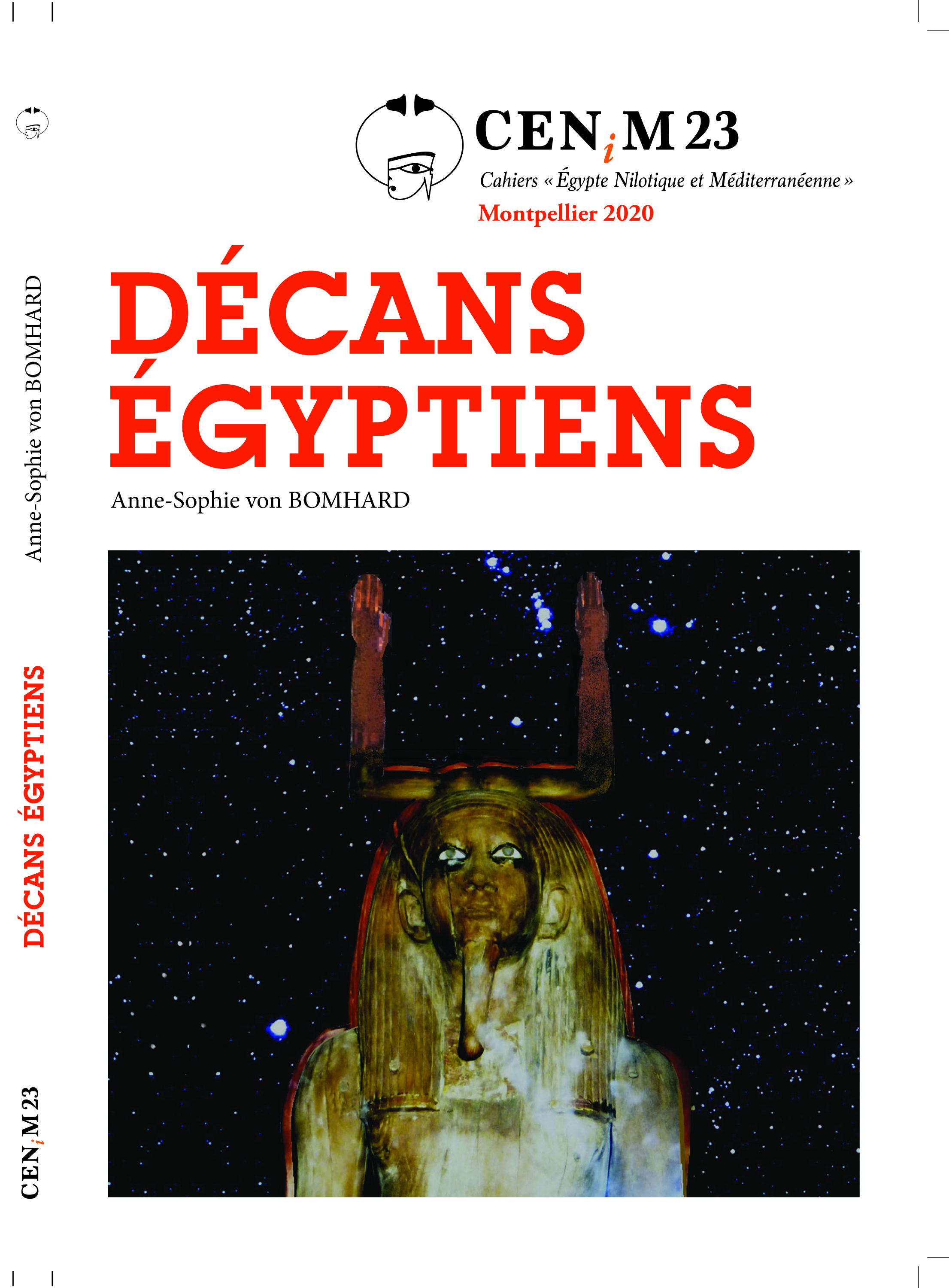 Anne-Sophie von BOMHARD DĂ©cans Ă©gyptiens, CENiM 23, Montpellier, 2020 — (2020)
Anne-Sophie von BOMHARD DĂ©cans Ă©gyptiens, CENiM 23, Montpellier, 2020 — (2020) 
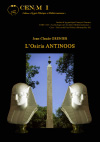 Jean-Claude Grenier L'Osiris ANTINOOS, CENiM 1, Montpellier, 2008 — (26 dĂ©cembre 2008)
Jean-Claude Grenier L'Osiris ANTINOOS, CENiM 1, Montpellier, 2008 — (26 dĂ©cembre 2008) 
TDENiM - Mise en ligne des volumes Ă©puisĂ©s : 
 Twitter
Twitter 4165964 visites - 11174 visite(s) aujourd’hui - 153 connecté(s)
© ENiM - Une revue d’égyptologie sur internet
Équipe Égypte Nilotique et Méditerranéenne - UMR 5140 - « Archéologie des Sociétés Méditerranéennes » (Cnrs) - Université Paul Valéry - Montpellier III
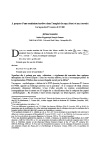
 Télécharger cet article au format pdf
Télécharger cet article au format pdf 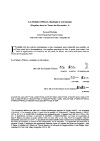
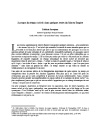
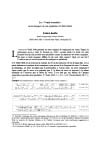
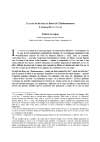
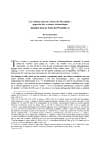
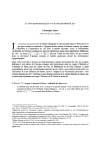
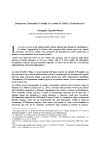
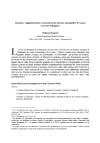
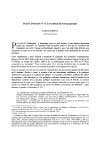
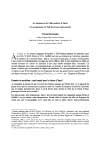
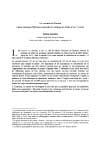
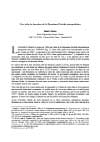
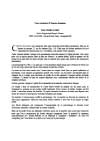
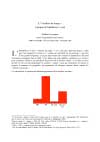
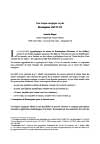
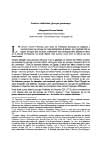
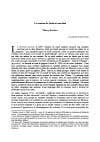
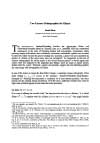
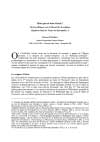
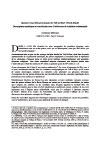
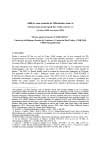
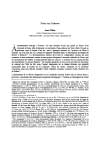
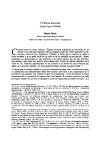
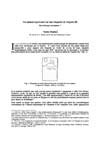
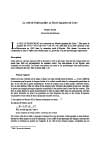
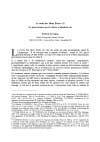
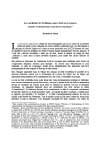
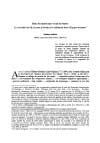
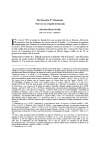
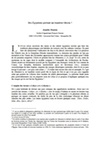
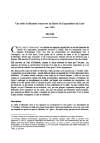
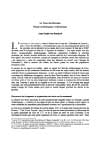
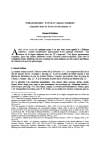
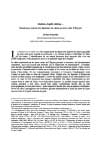
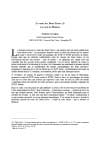
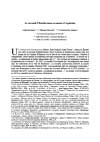
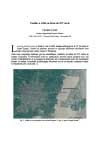
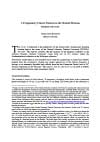
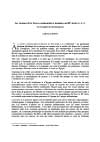
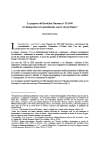
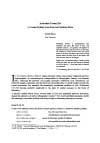
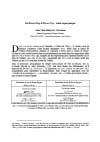
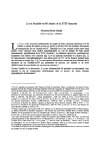
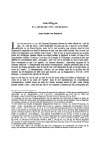
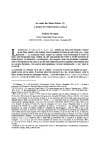
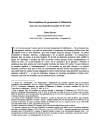
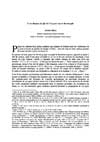
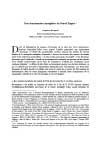
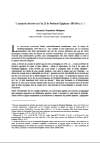
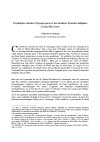
 ) ? »
) ? »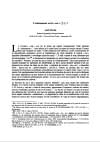

 ,
,  »
»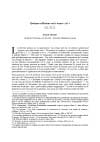
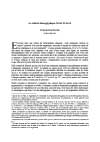
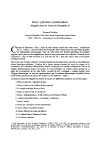
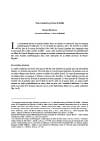
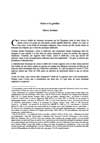
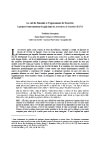
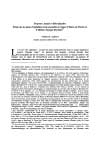
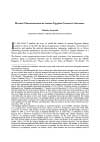
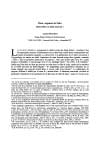
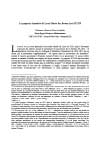
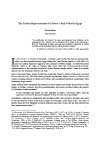
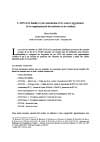
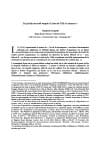
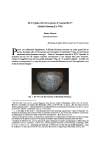
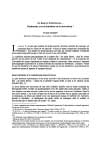
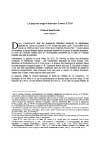
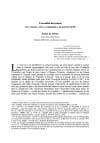
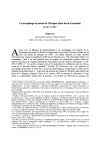
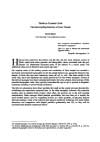
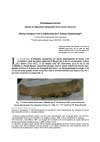
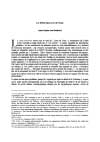
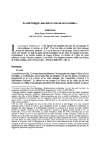
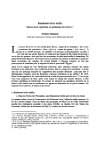

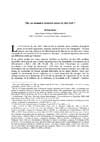
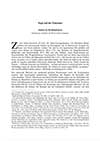
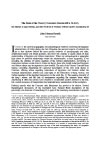
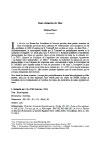
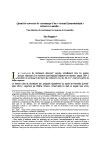
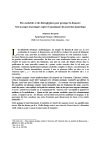
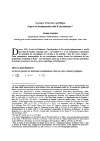
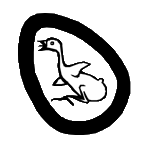 and its assimilation with the iconography of the sun god »
and its assimilation with the iconography of the sun god »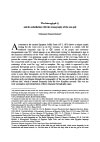
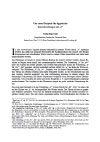
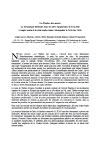


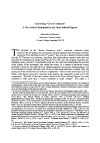
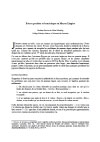
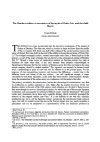
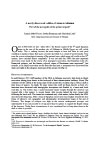
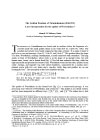
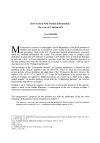
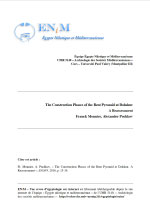
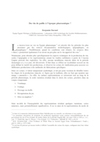
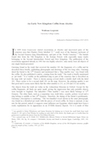
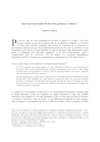
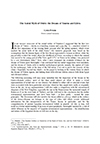
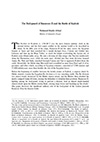
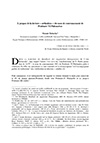
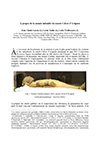
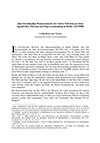
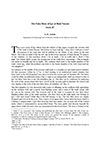
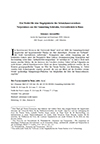
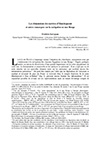
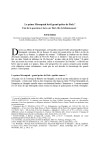
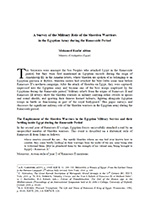
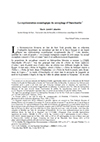
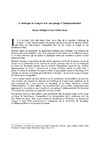
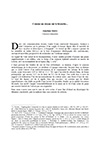
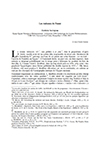
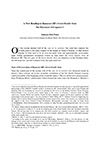
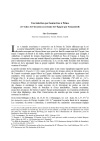
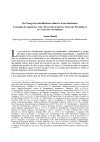

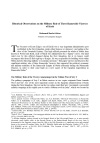
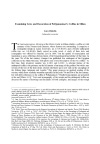
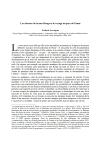
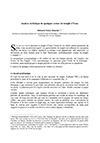
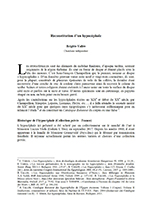
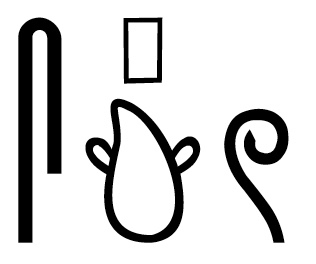 spj, âassembler (une embarcation)â »
spj, âassembler (une embarcation)â »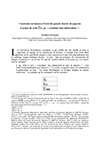
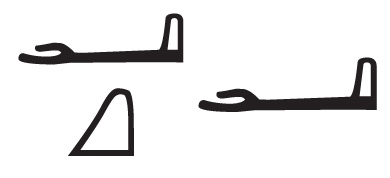 , ʿqʿ, âserrerâ »
, ʿqʿ, âserrerâ »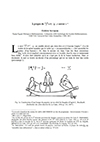
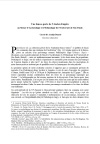
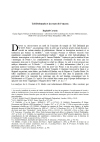
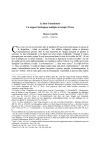
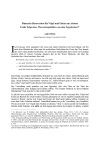
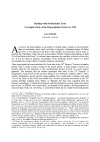
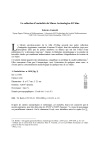
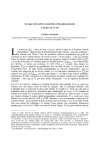
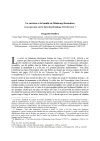
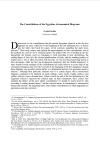
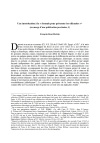
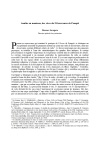
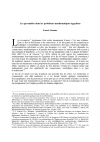
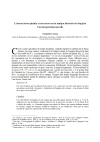
![Hugues Perdriaud, « Lâan 6 de Taharqa, lâannĂ©e des âmerveillesâ.
âUne chose pareille nâavait pas Ă©tĂ© vue depuis le temps des anciens [âŠ]â (Kawa V, l. 5) » Hugues Perdriaud, « Lâan 6 de Taharqa, lâannĂ©e des âmerveillesâ.
âUne chose pareille nâavait pas Ă©tĂ© vue depuis le temps des anciens [âŠ]â (Kawa V, l. 5) »](http://www.enim-egyptologie.fr/revue/2019/13/Perdriaud_ENiM12_p281-298.jpg)
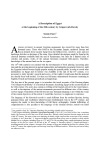
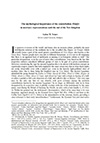
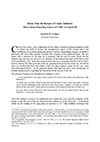
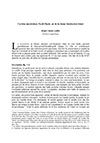
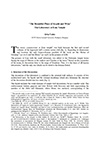
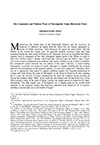
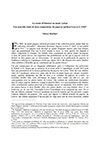
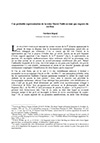
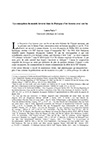
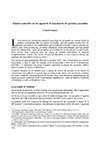
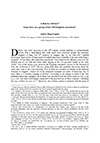
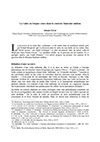
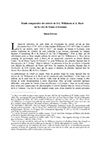
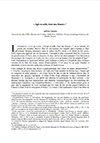
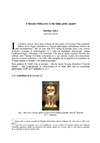
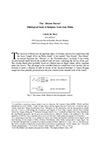
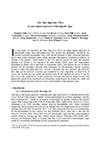
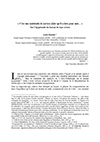
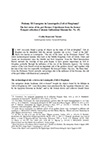
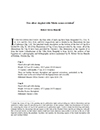
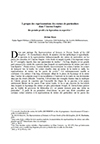
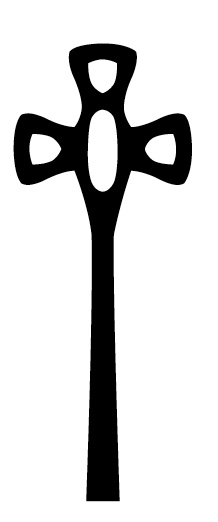 náž = âroi de Ta Sety (Basse-Nubie)â »
náž = âroi de Ta Sety (Basse-Nubie)â »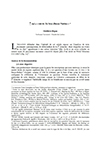
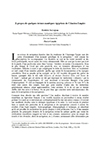
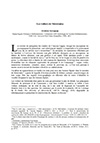
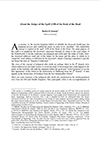
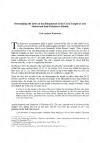
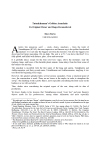
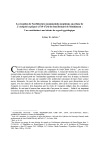
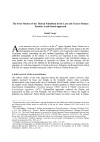
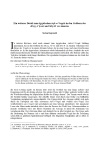
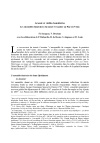
 (R22) /
(R22) /  (R23) »
(R23) »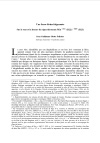
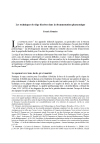
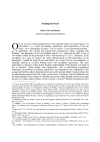
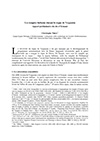
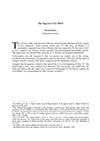
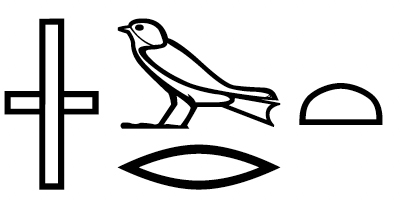 (jm(y)-wr.t), « tribord », et
(jm(y)-wr.t), « tribord », et 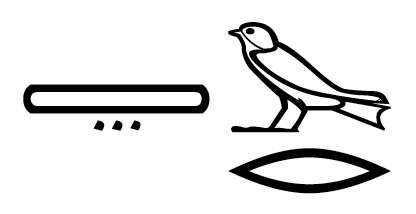 (tÈ-wr), « bĂąbord » »
(tÈ-wr), « bĂąbord » »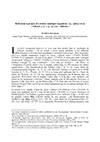
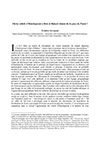
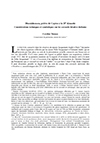
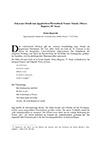
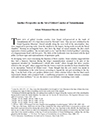

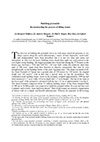
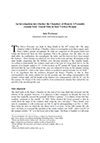
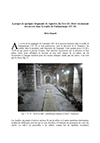
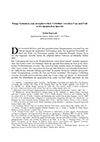
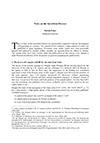
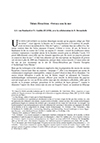
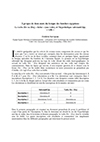
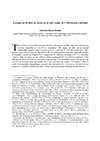
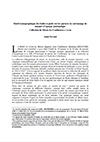
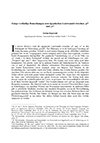
 , m-ážr.t »
, m-ážr.t »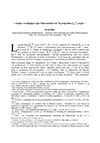
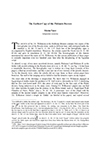
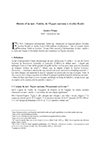
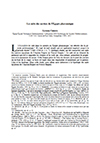
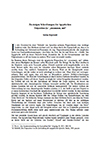
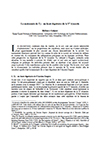
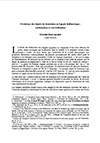
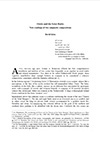
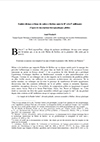
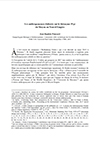
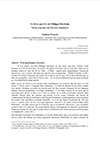
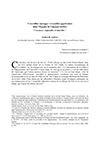
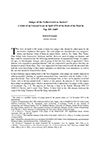
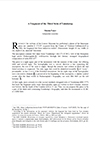
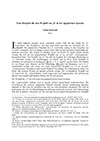
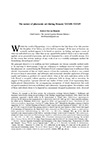
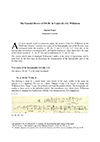
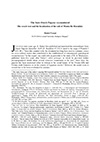
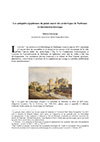
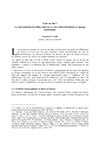
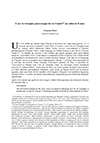
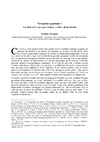
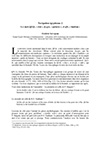
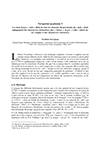
 , ĆĄnnw.w / ĆĄnn.w, « manoeuvres dormantes » »
, ĆĄnnw.w / ĆĄnn.w, « manoeuvres dormantes » »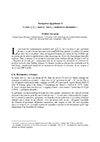
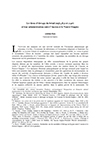
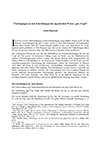
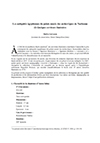
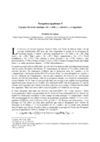
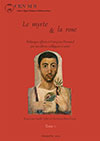
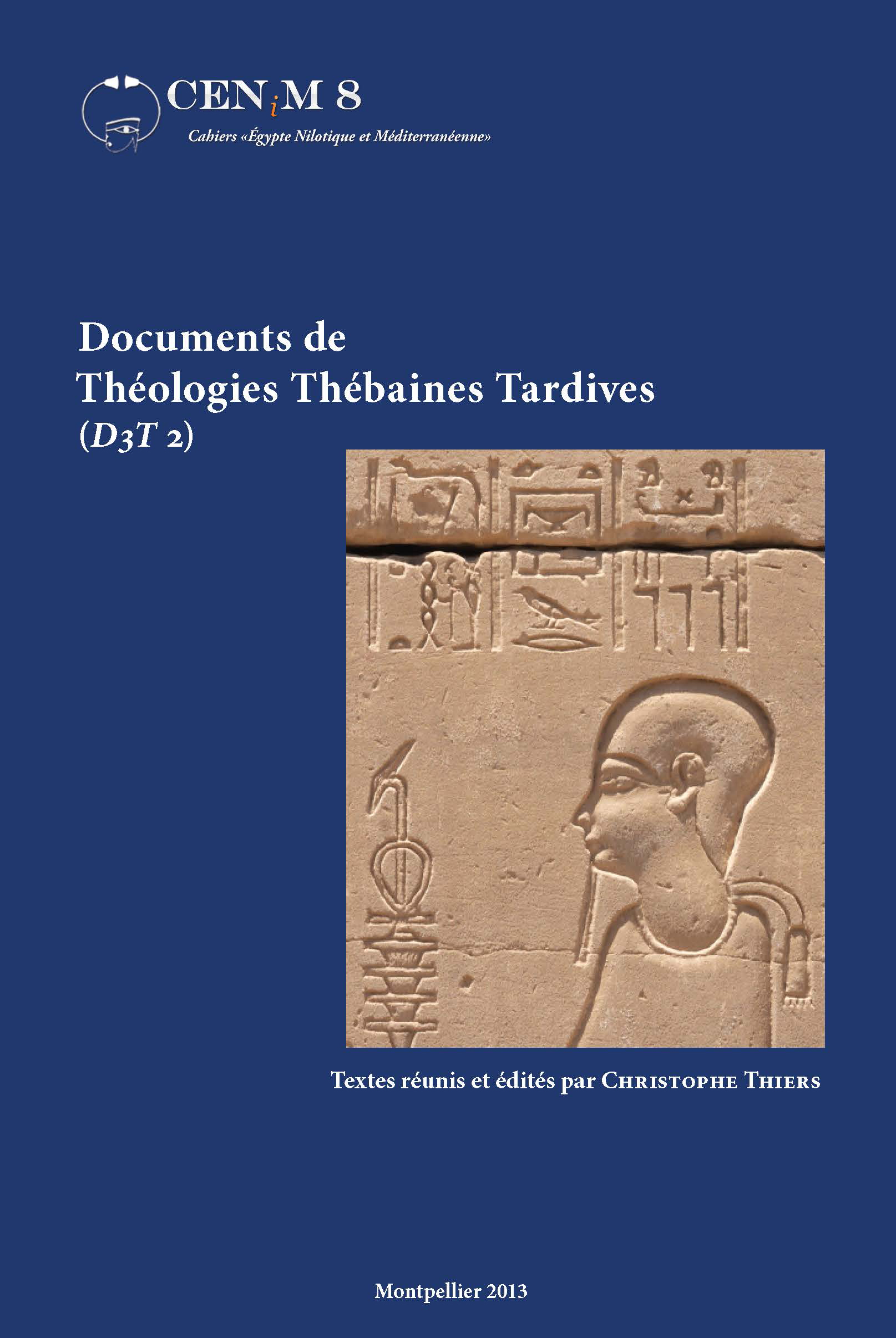
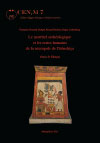
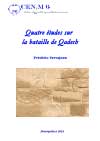
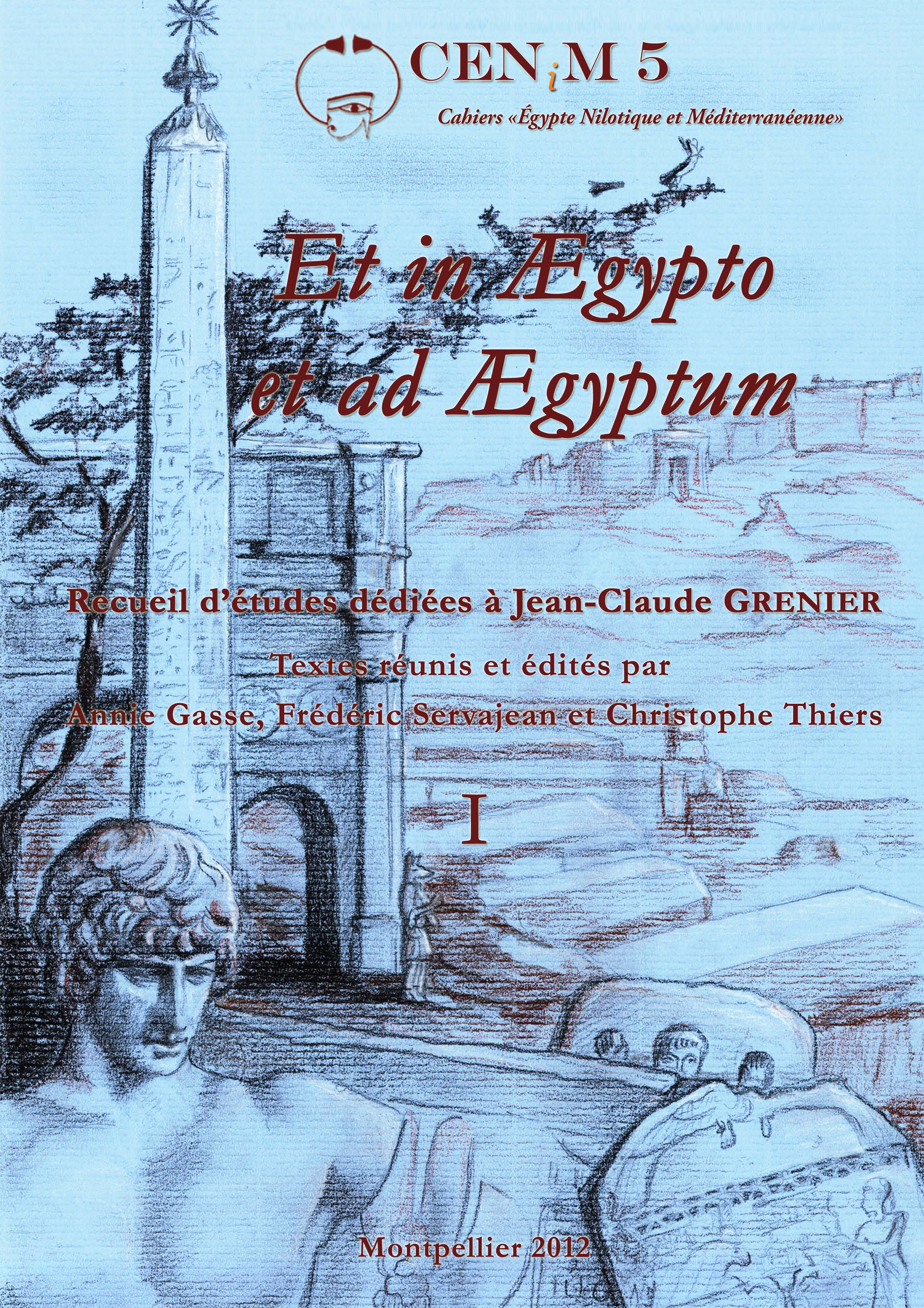
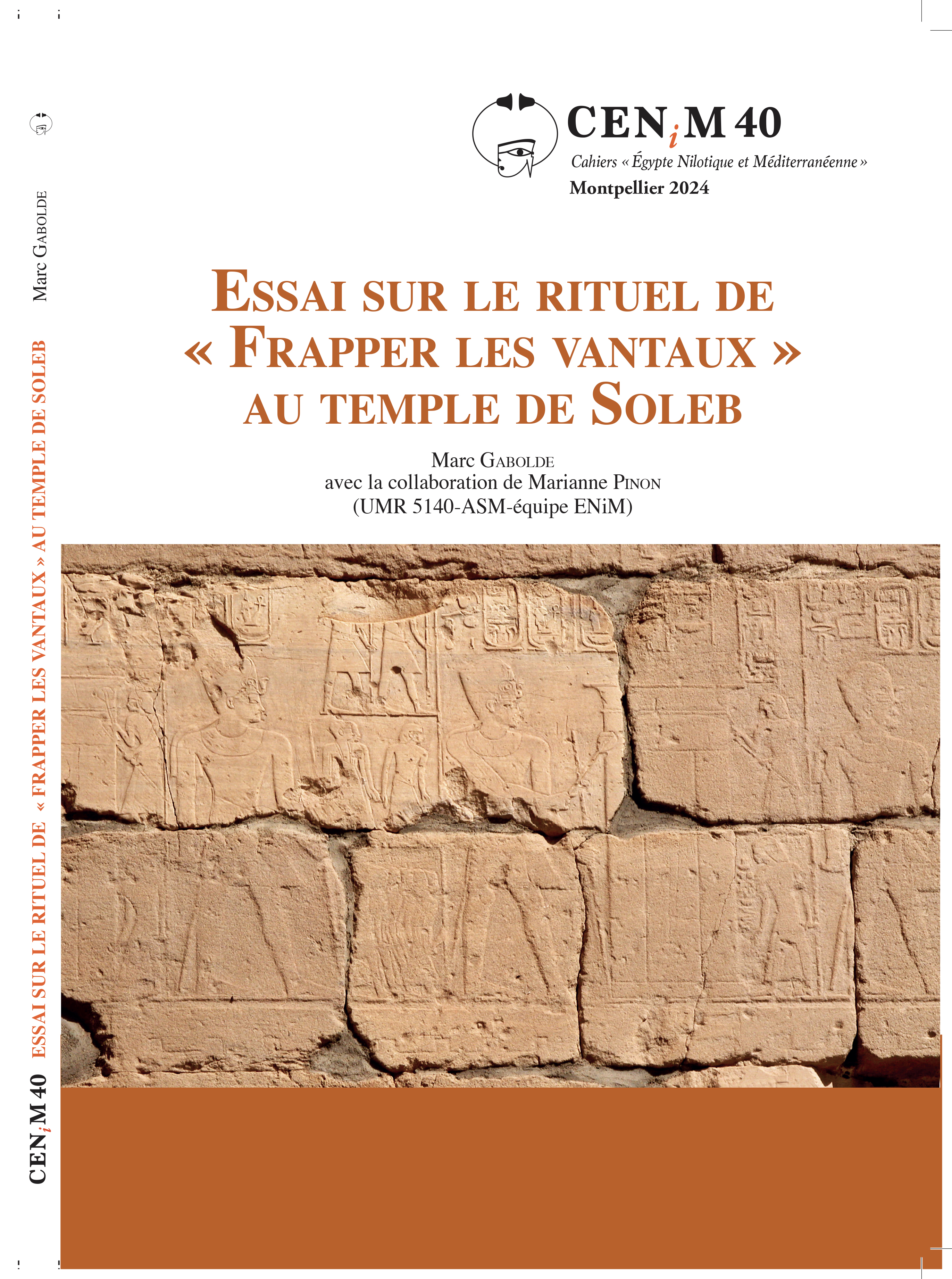
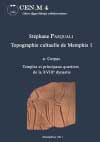
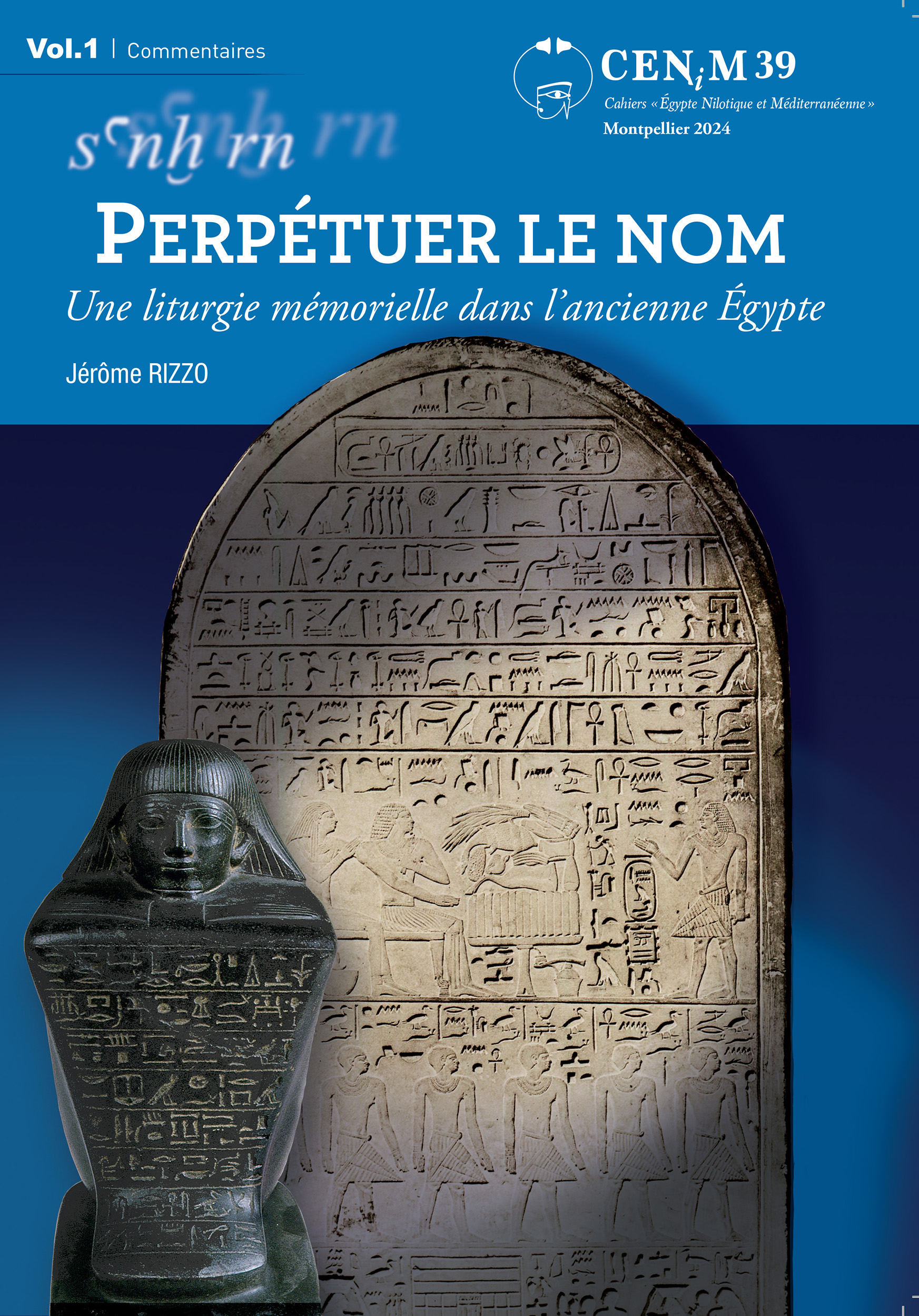
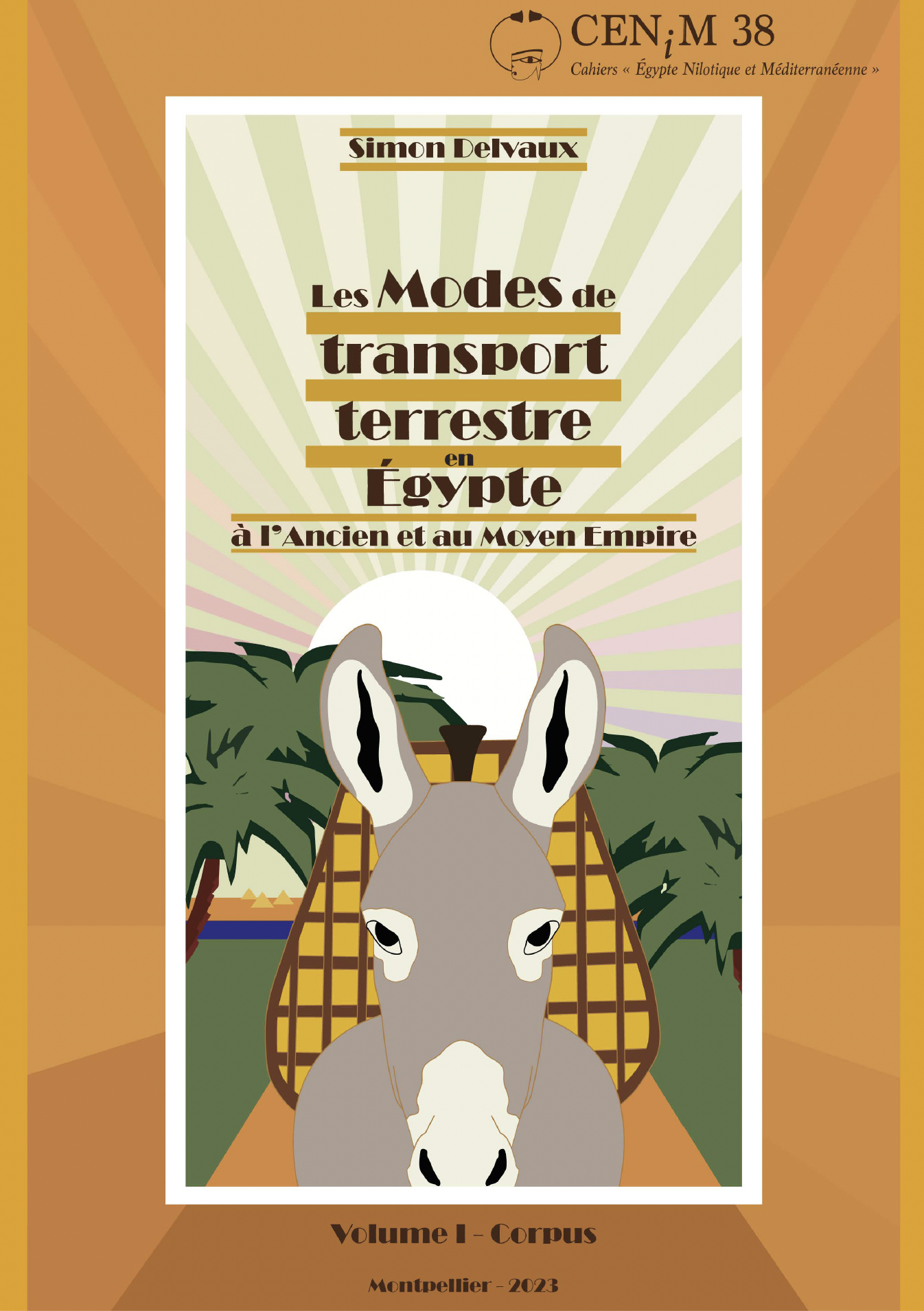
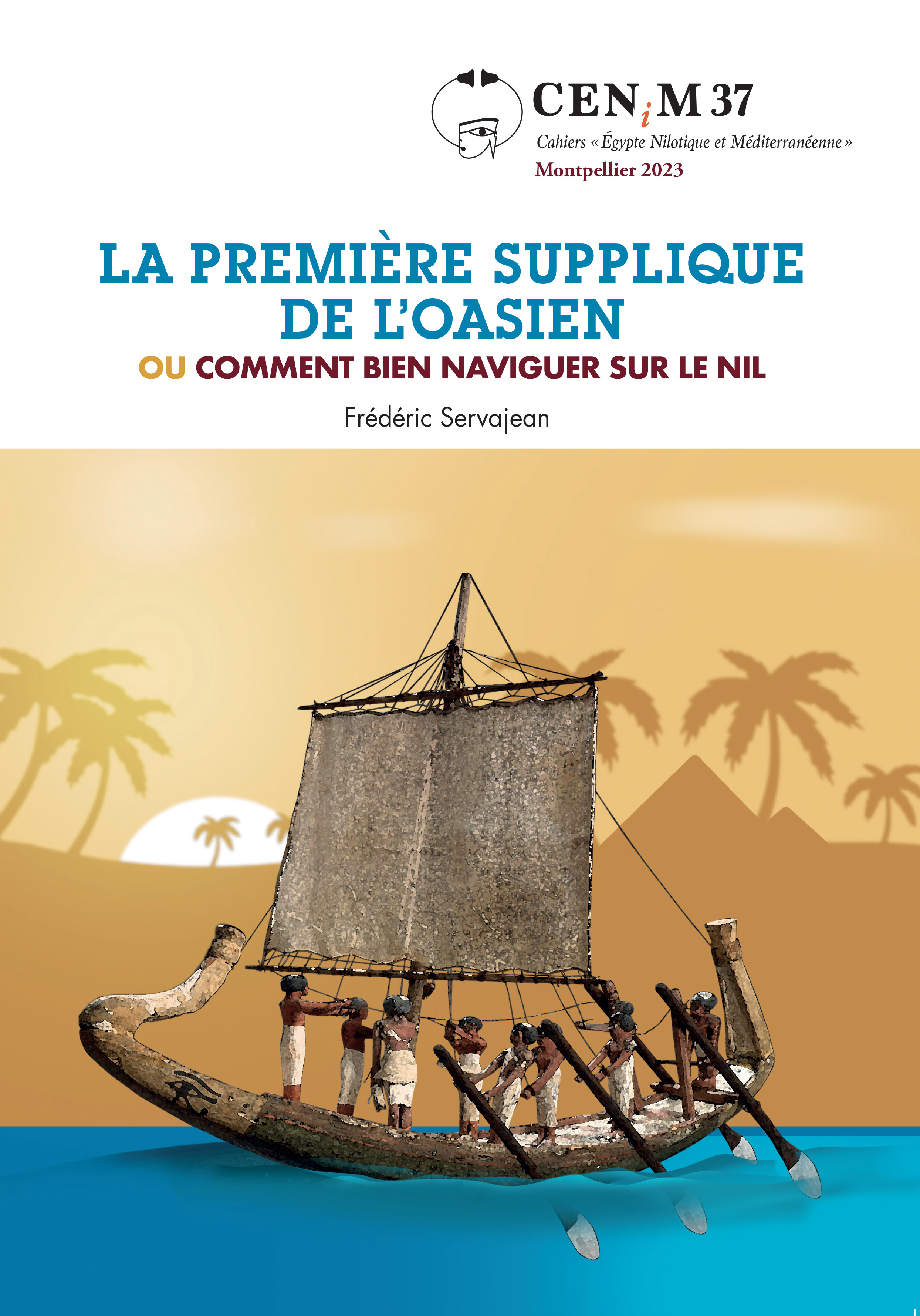
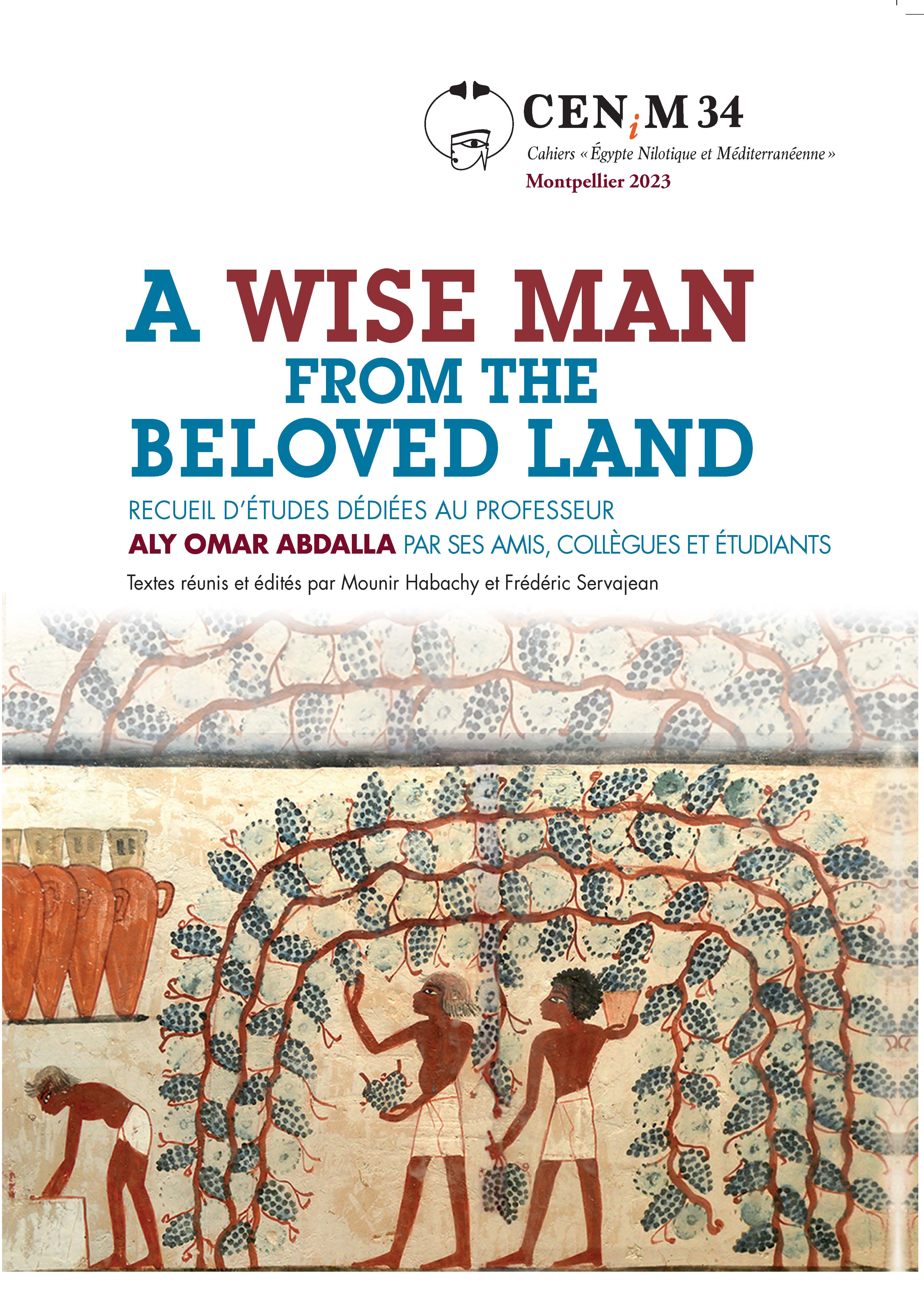
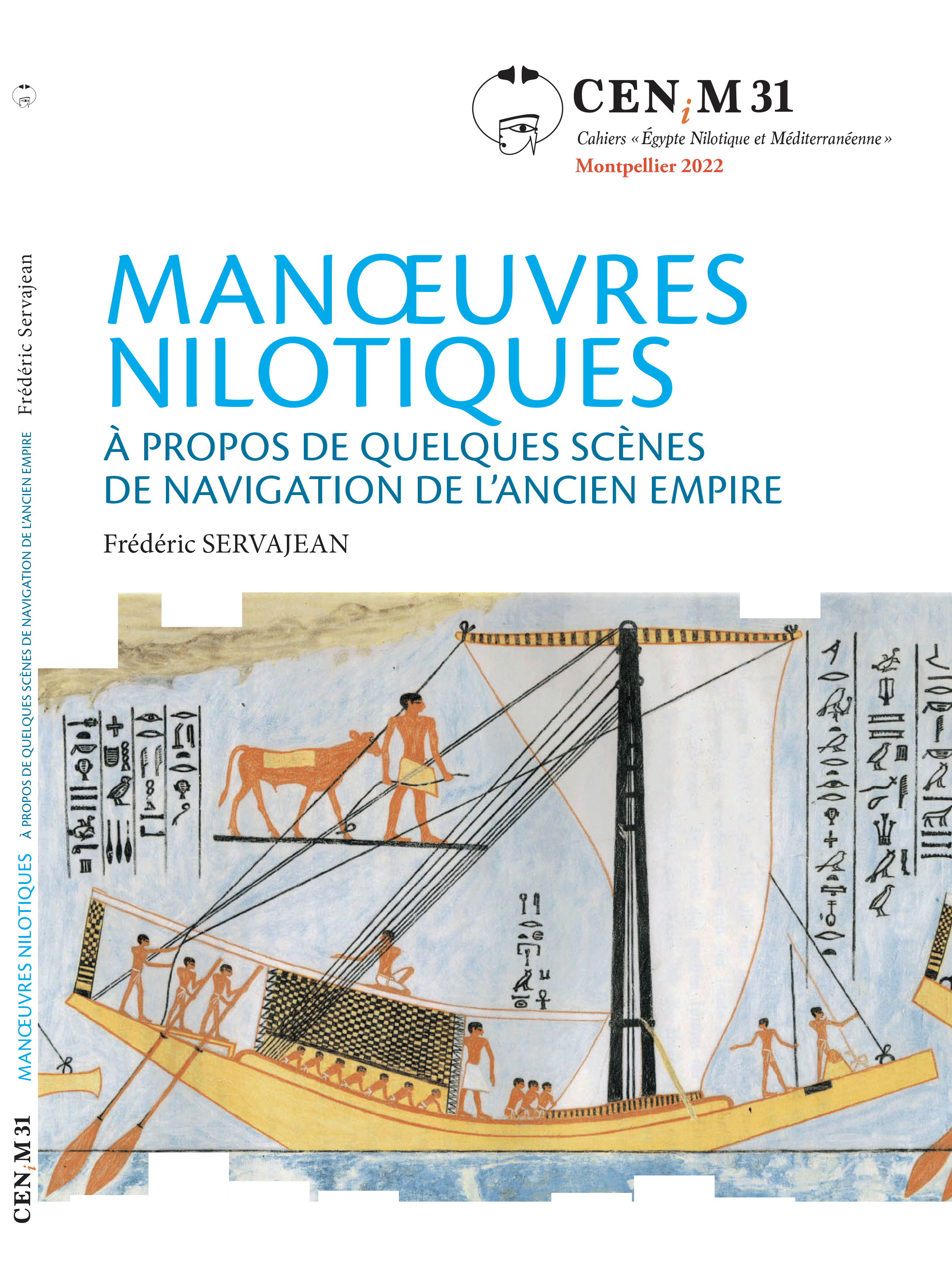
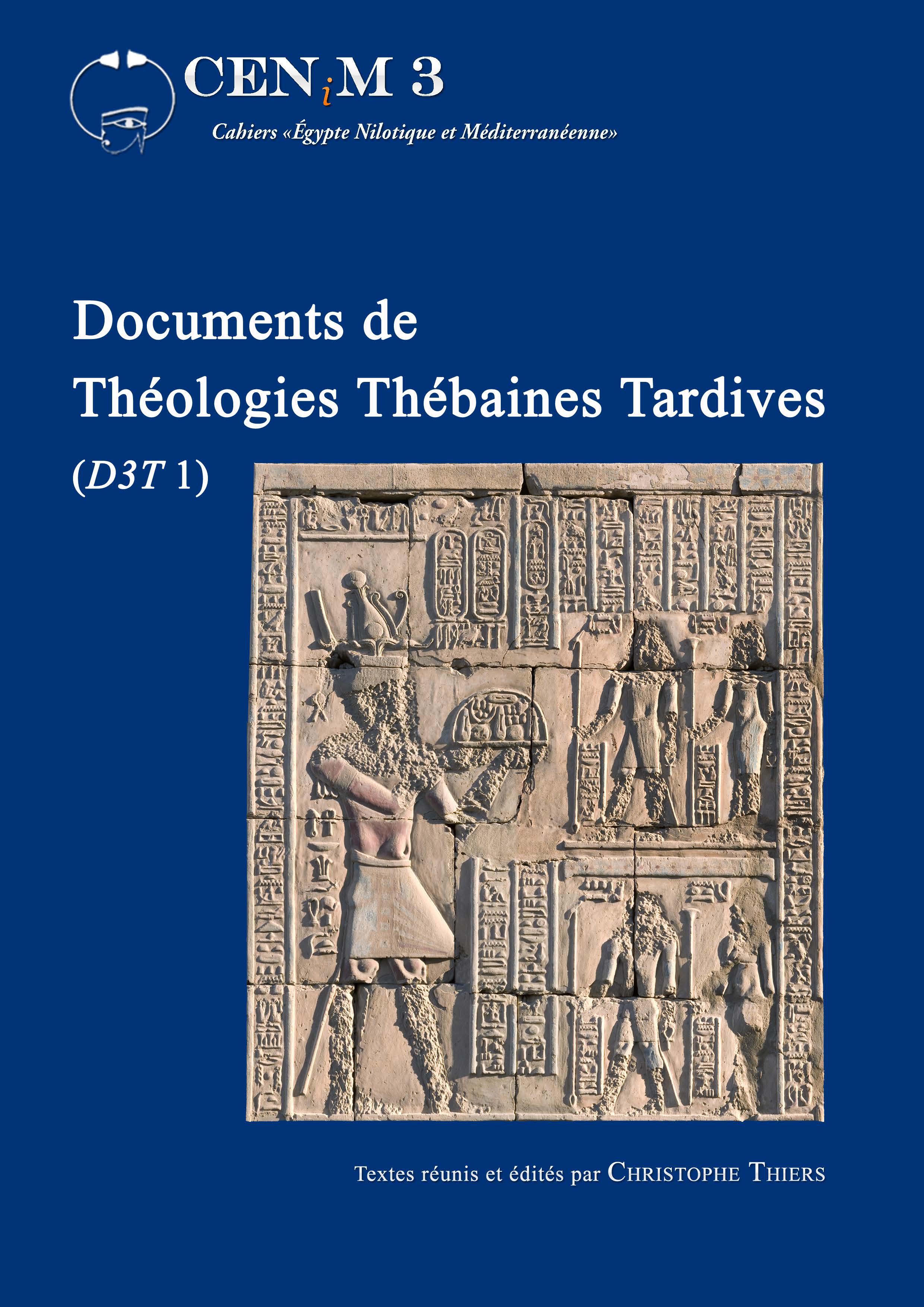
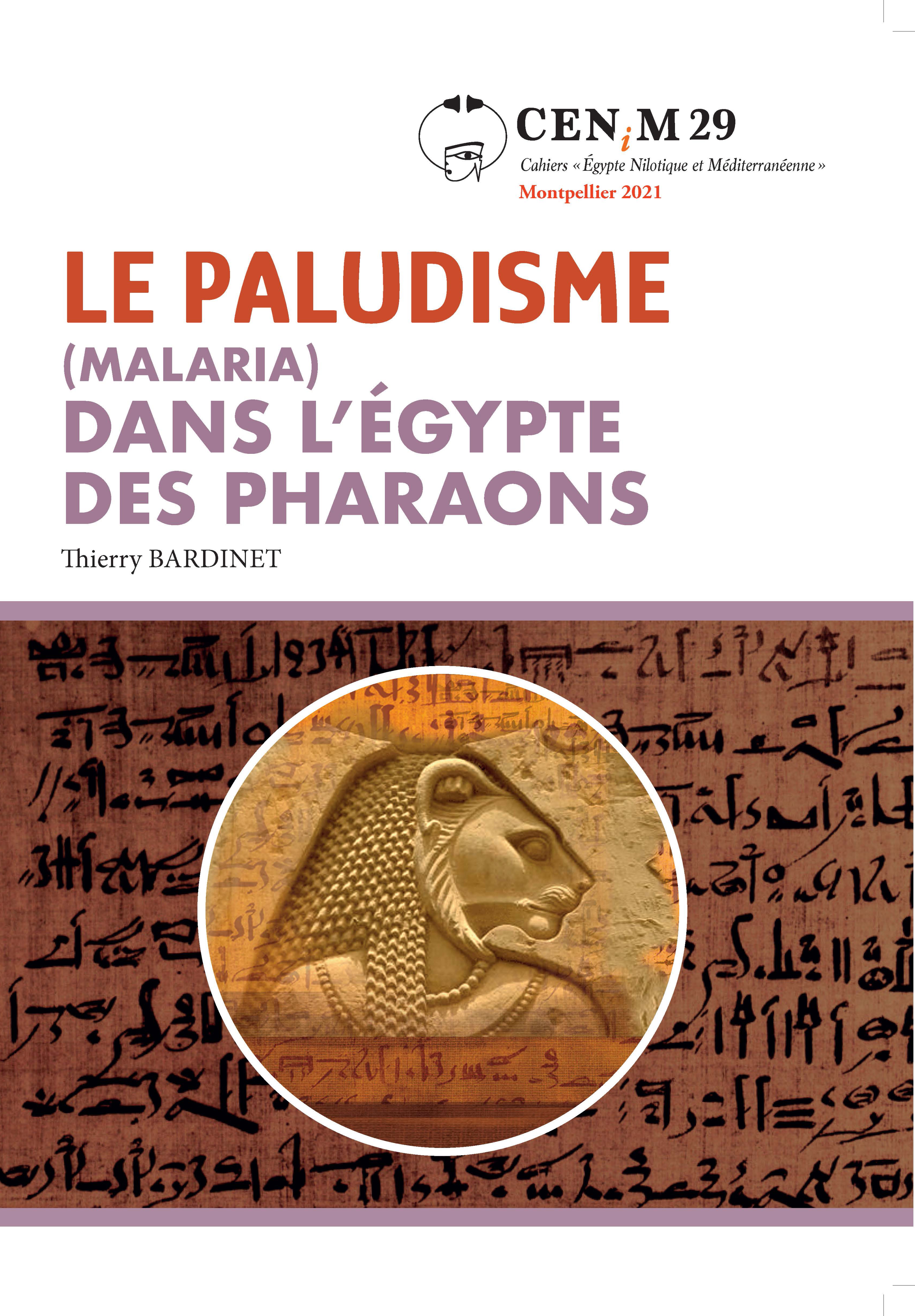
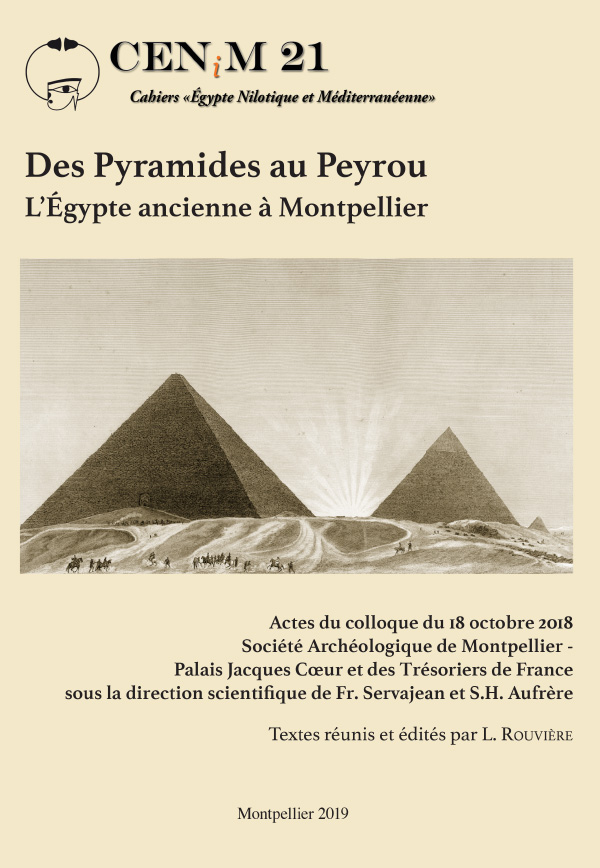
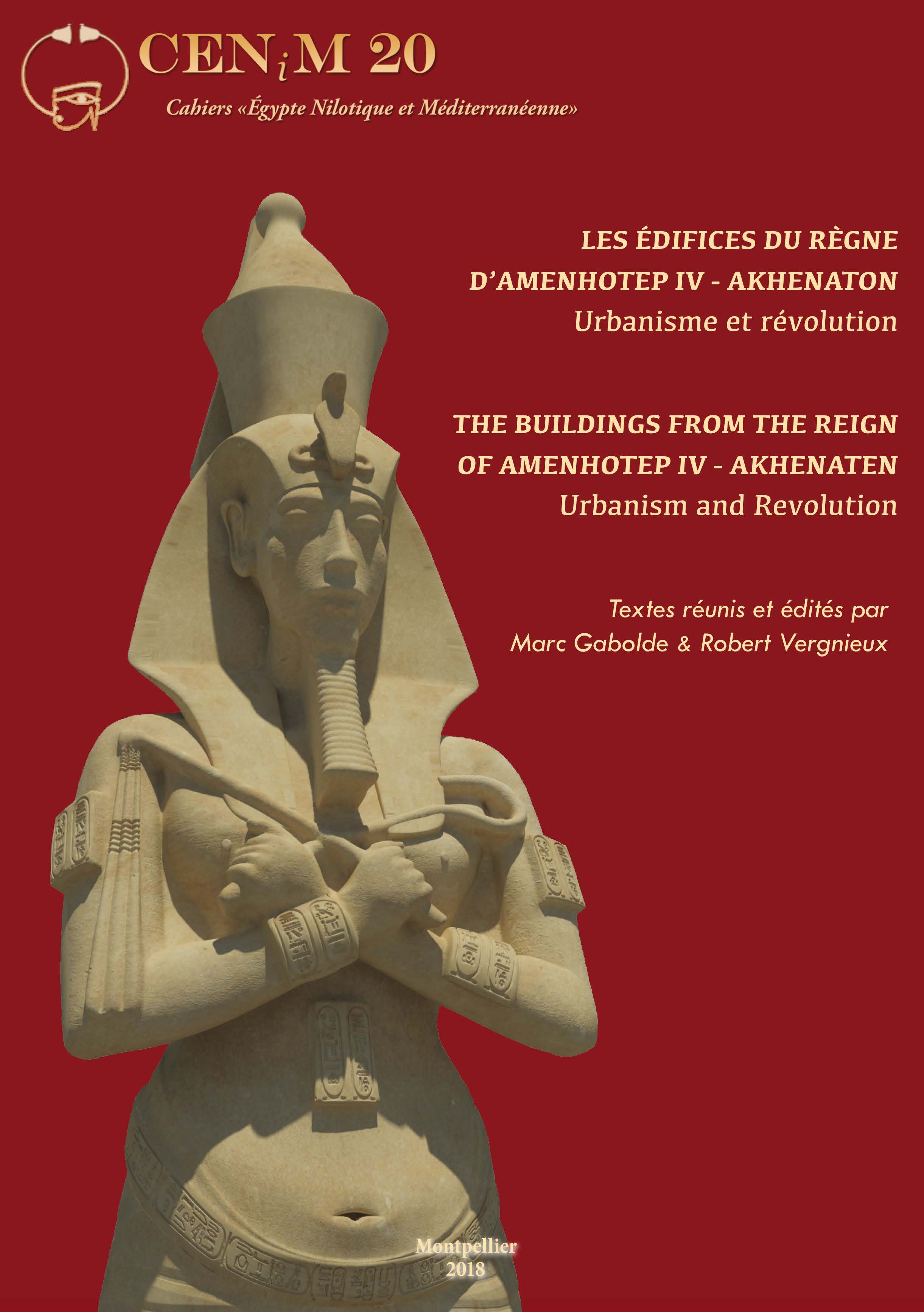
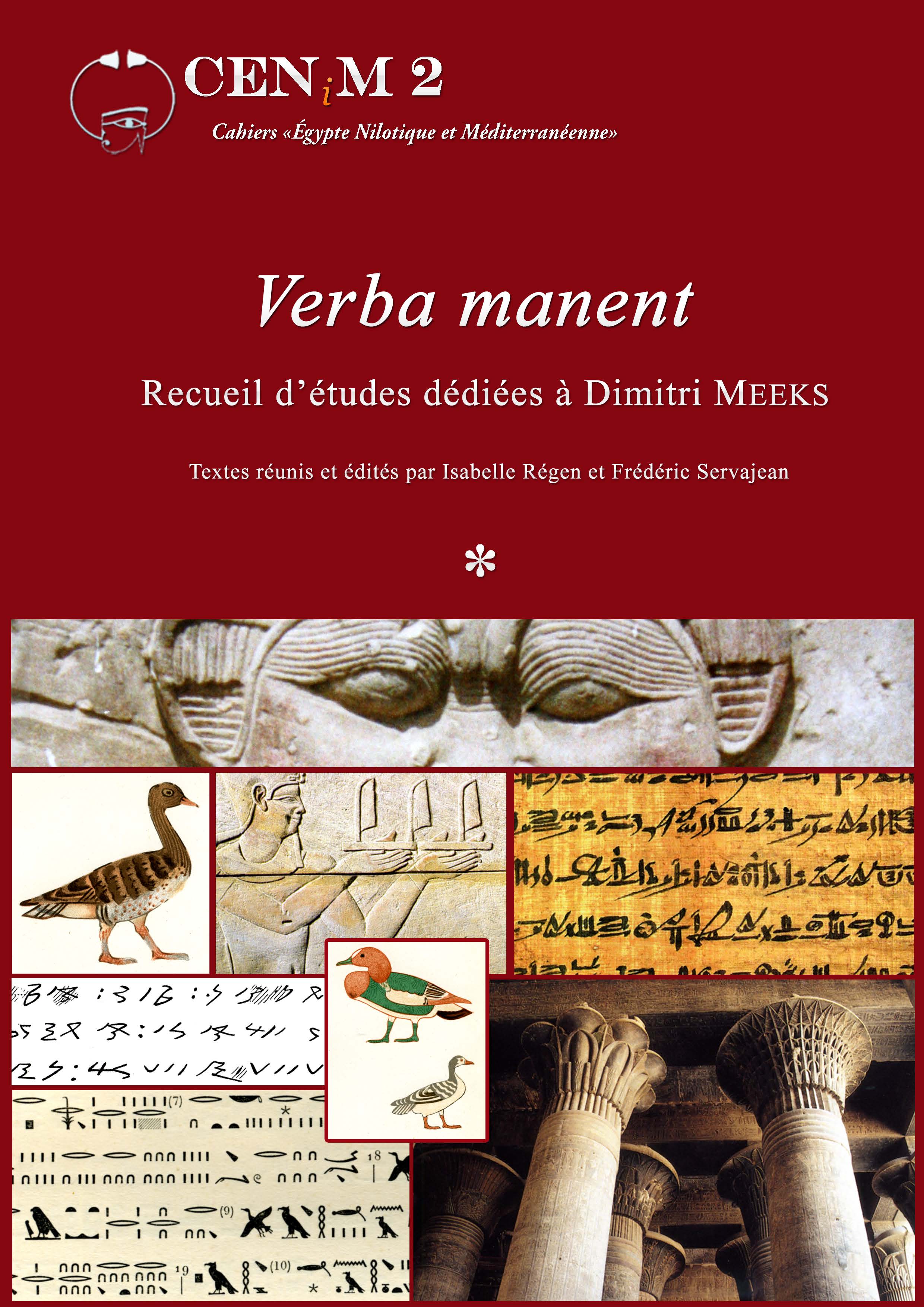
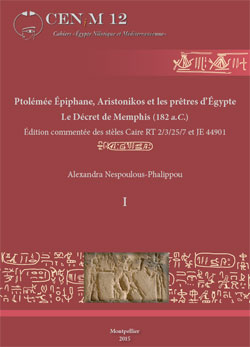
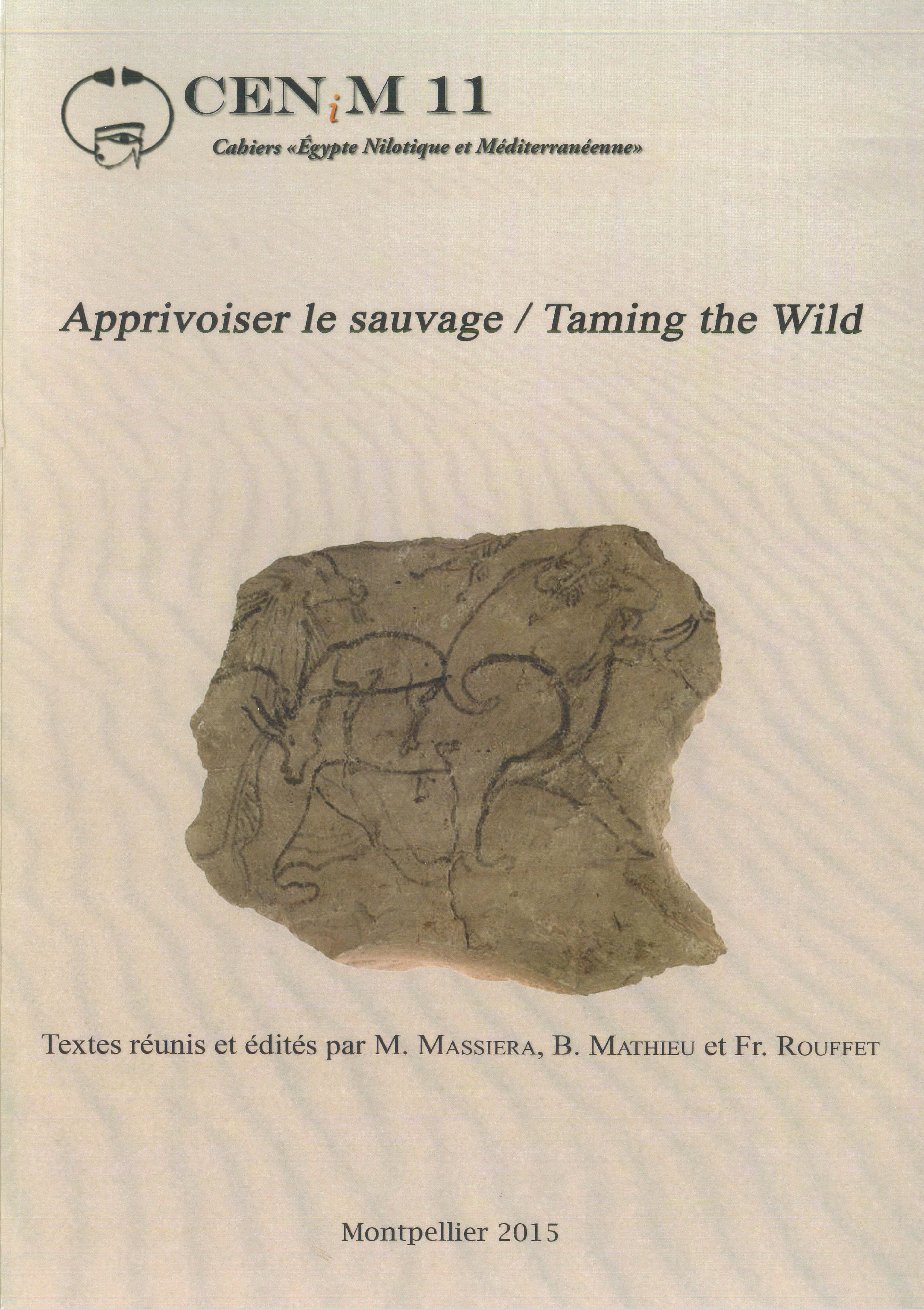
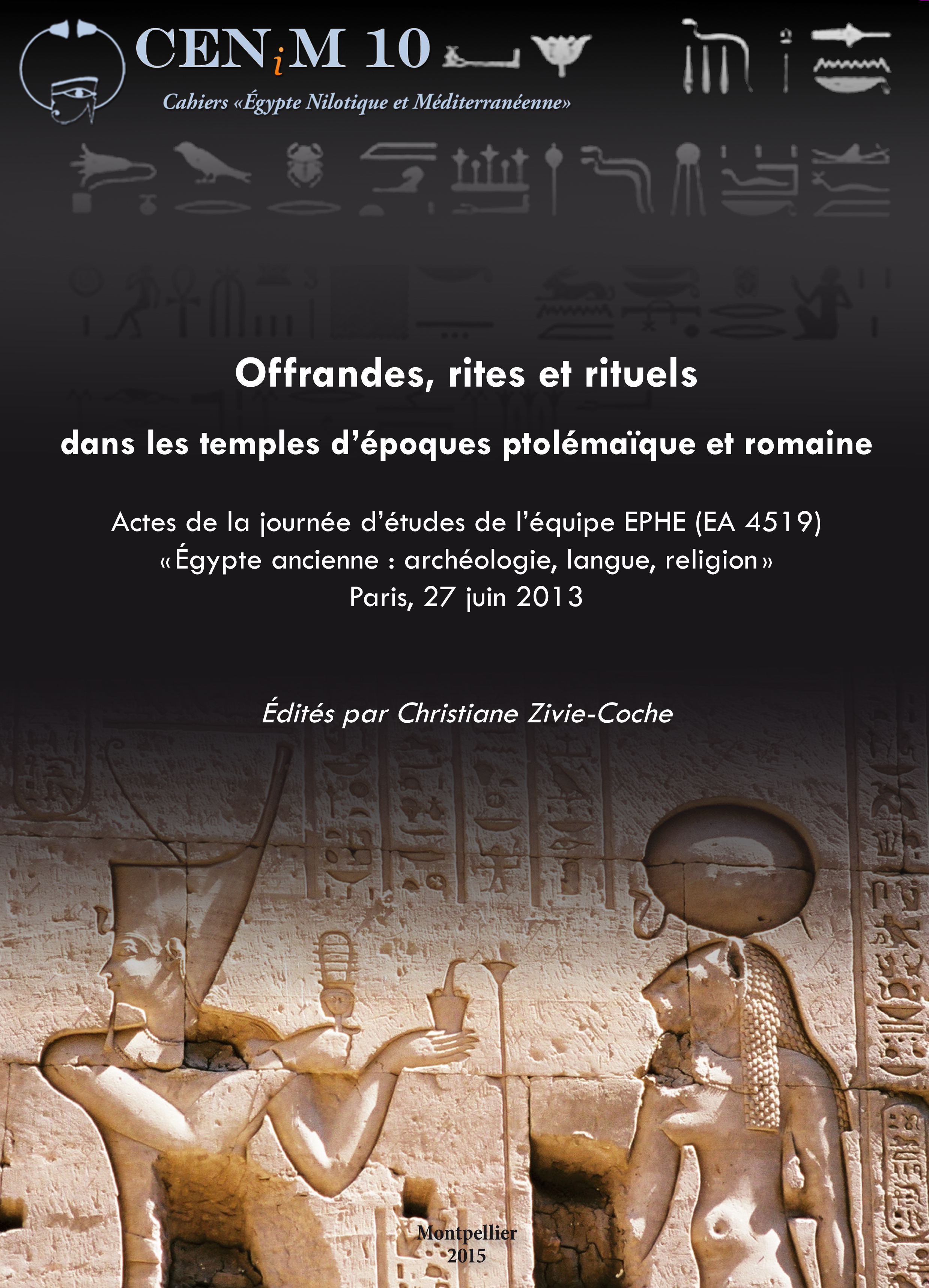
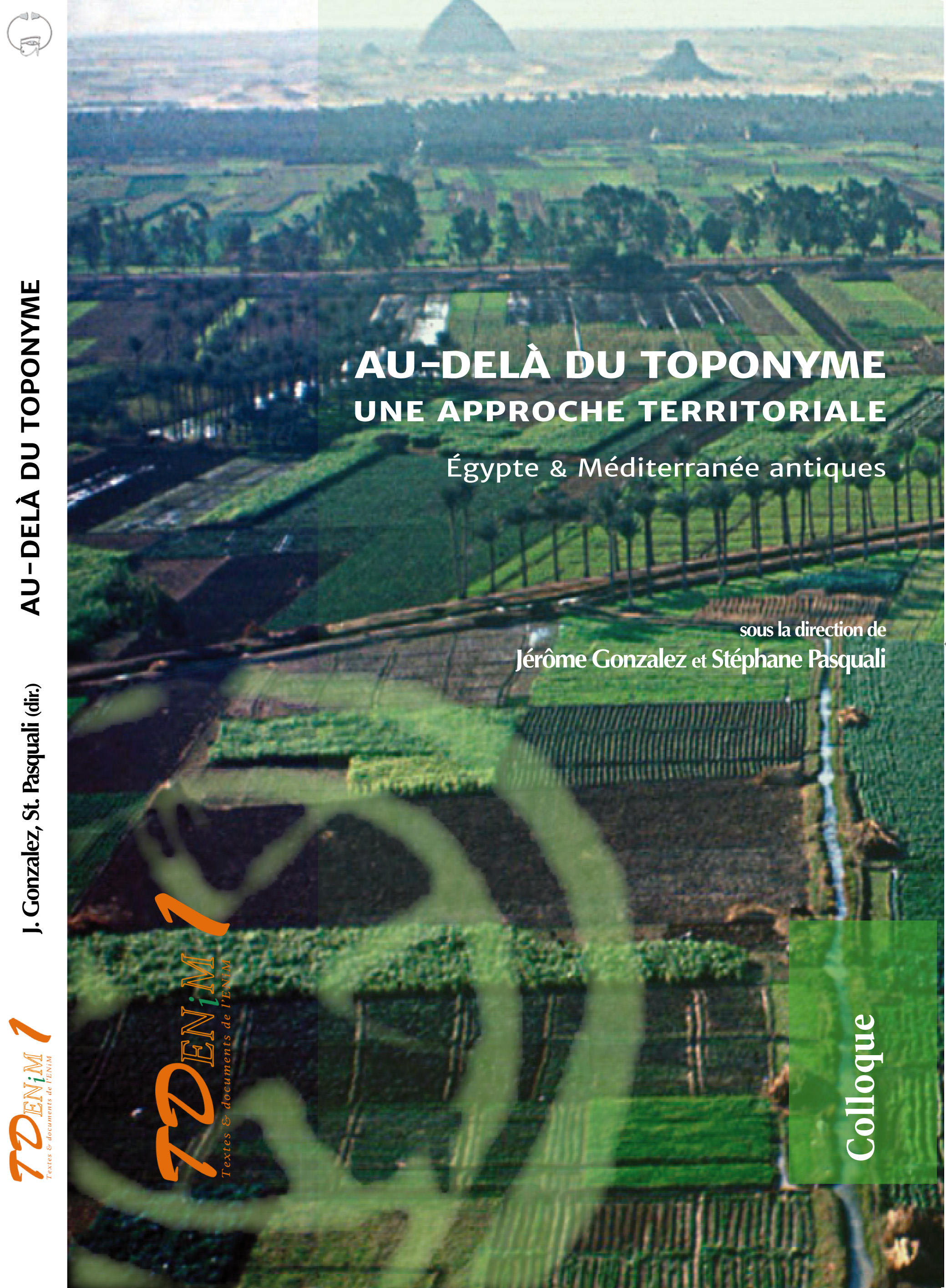
 Contact
Contact
 Abonnez-vous !
Abonnez-vous ! Équipe Égypte Nilotique et Méditerranéenne
Équipe Égypte Nilotique et Méditerranéenne UMR 5140 « Archéologie des Sociétés Méditerranéennes » (Cnrs)
UMR 5140 « Archéologie des Sociétés Méditerranéennes » (Cnrs) Université Paul Valéry - Montpellier III
Université Paul Valéry - Montpellier III